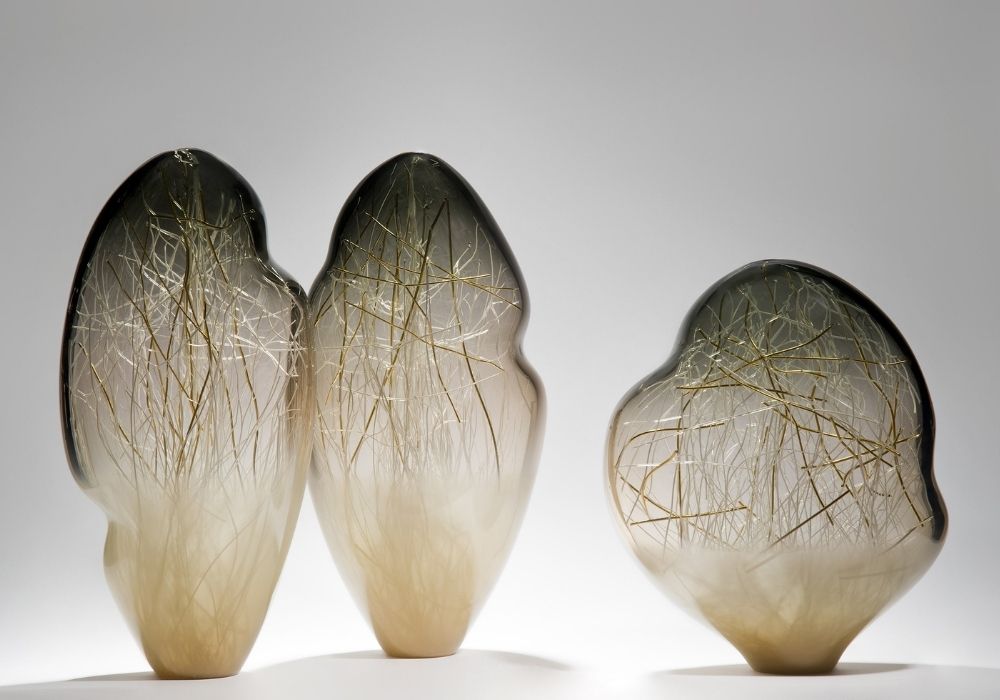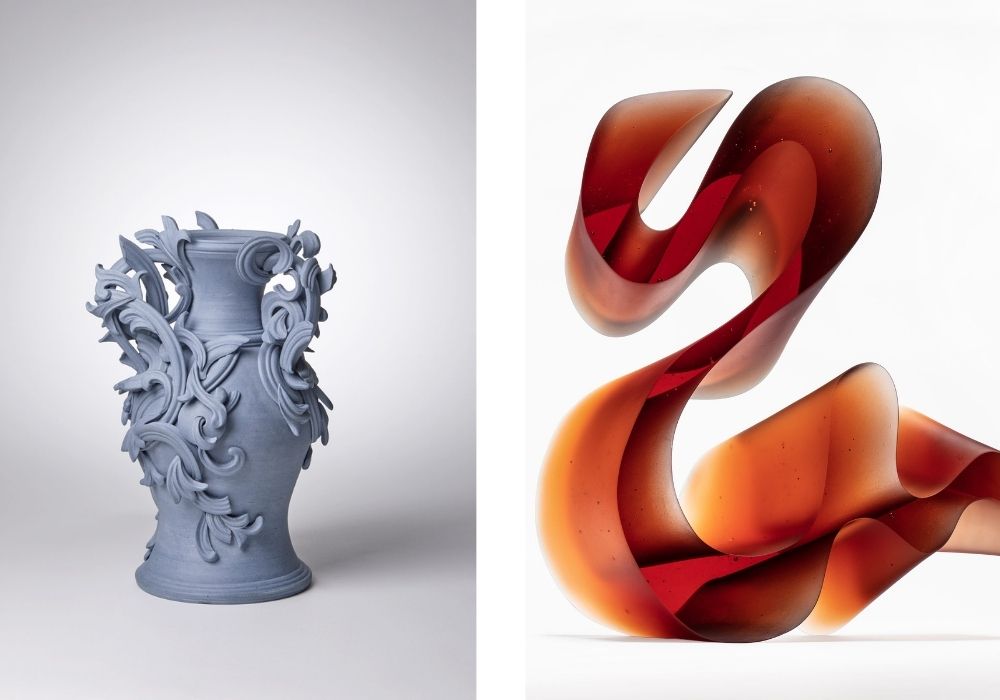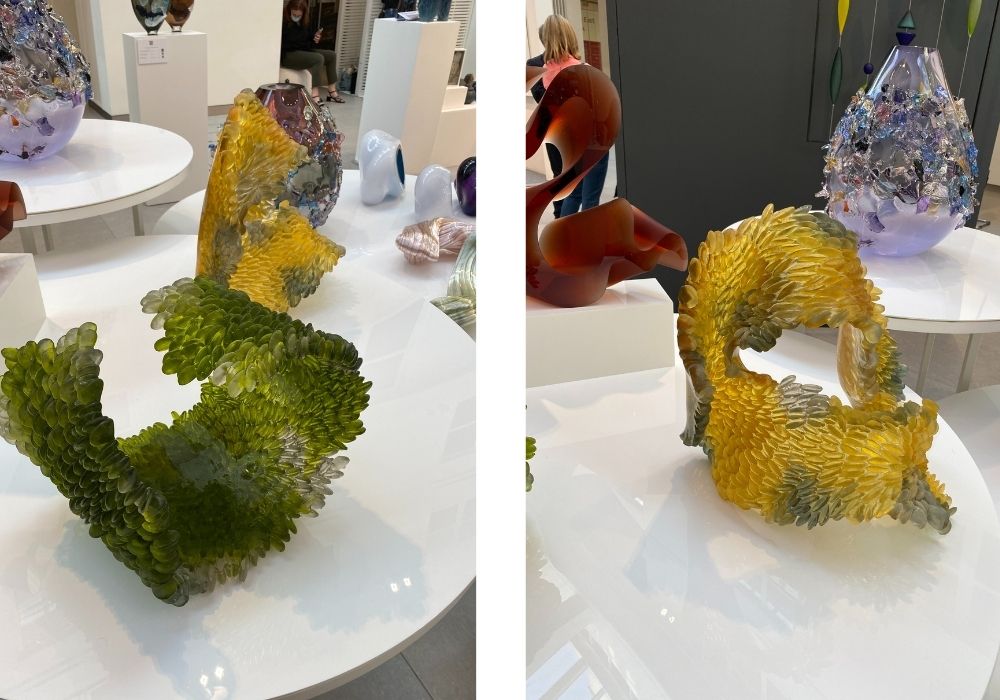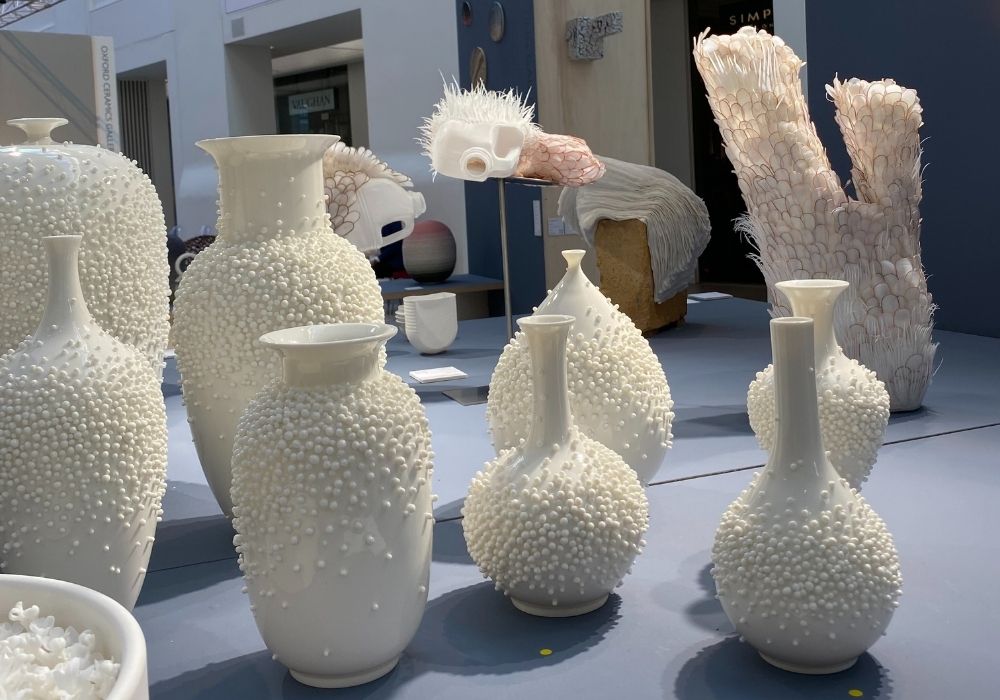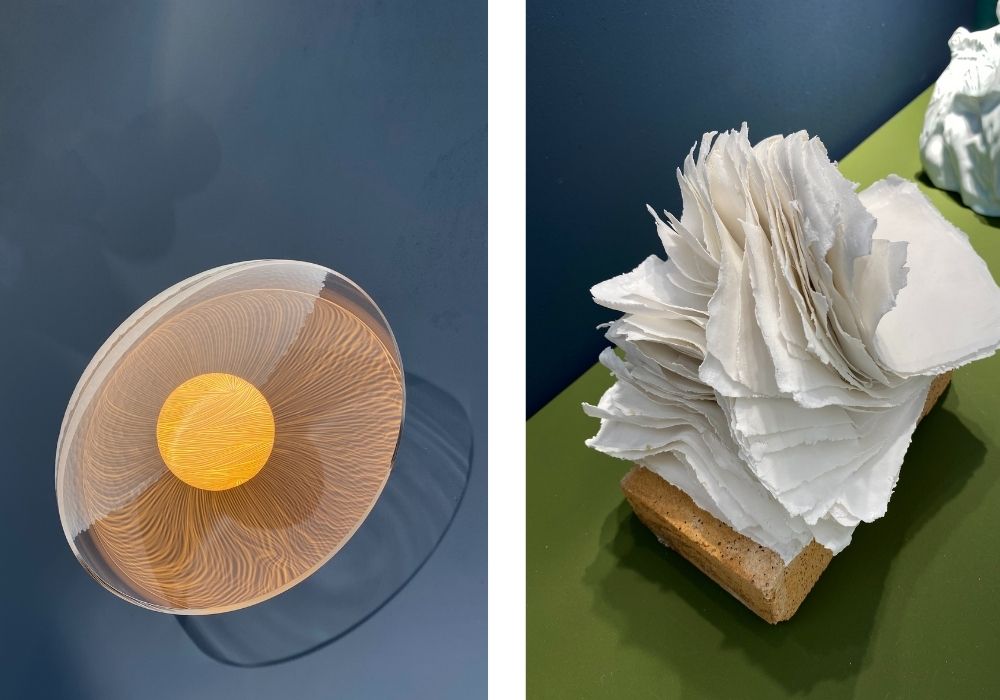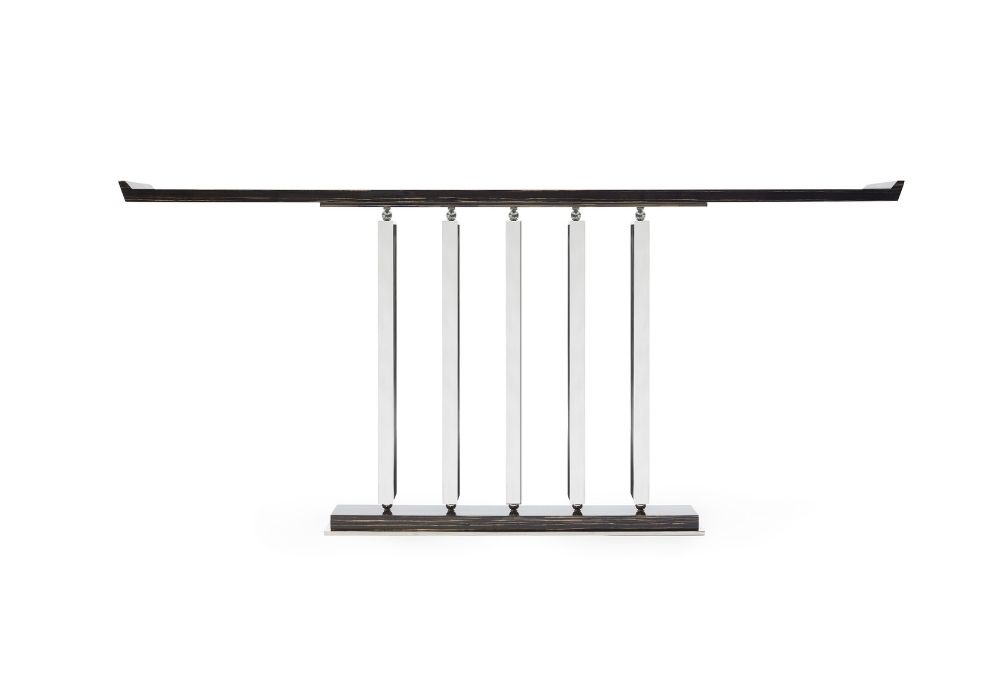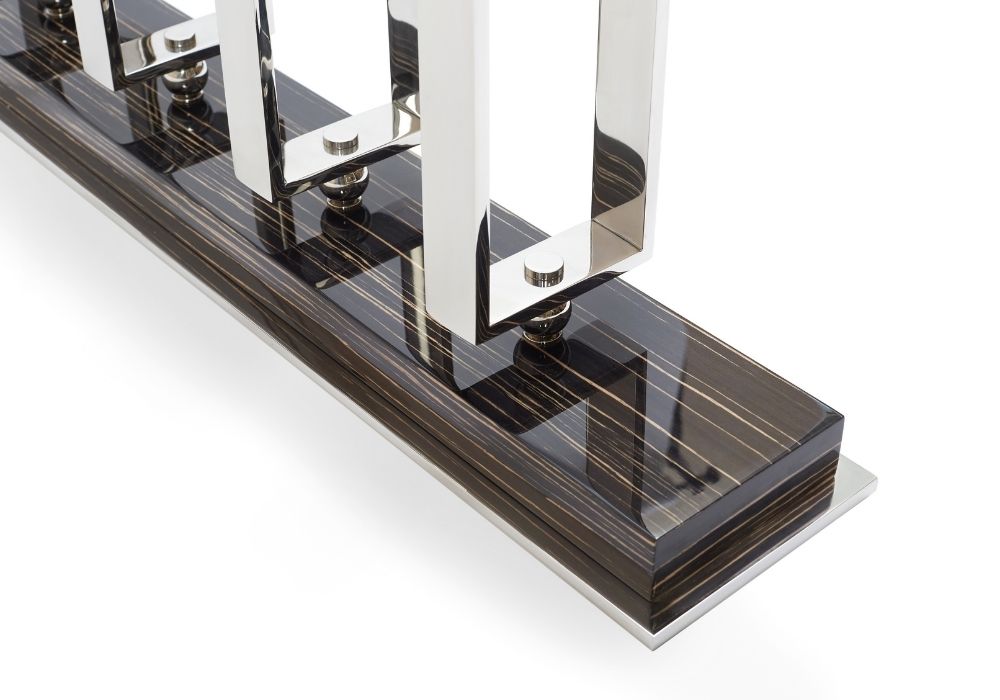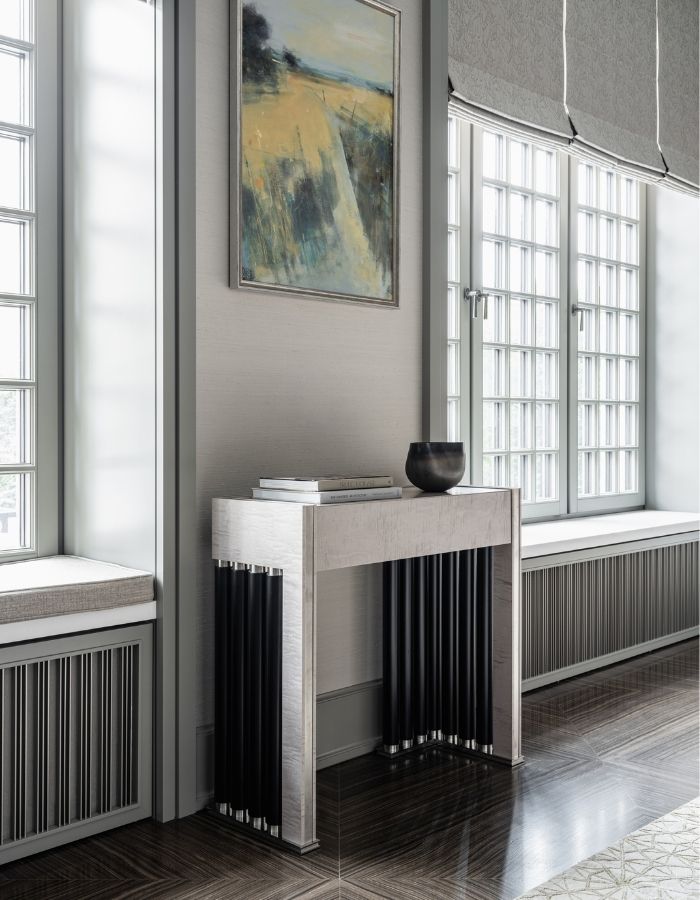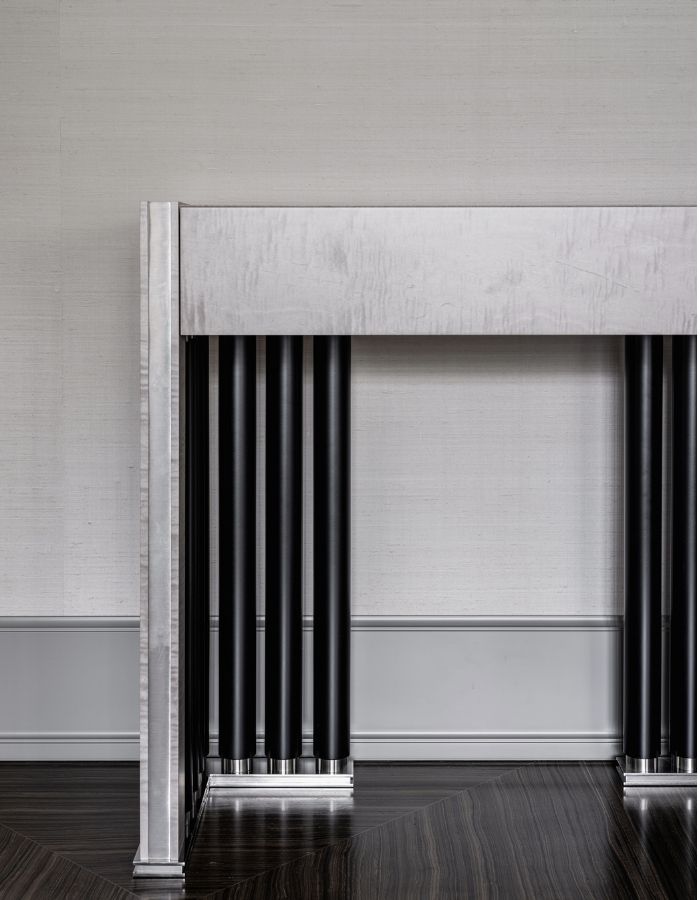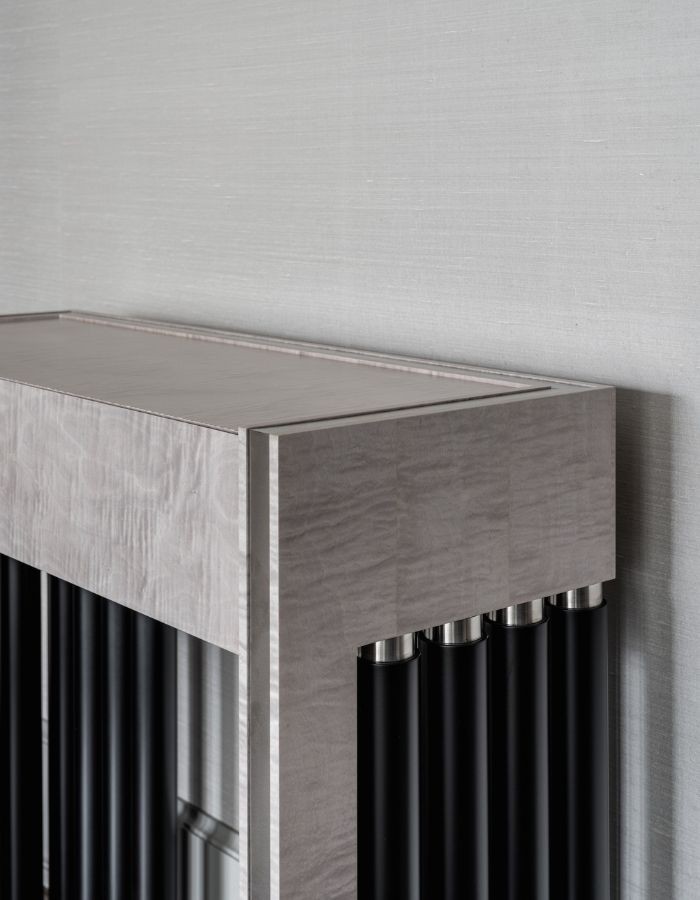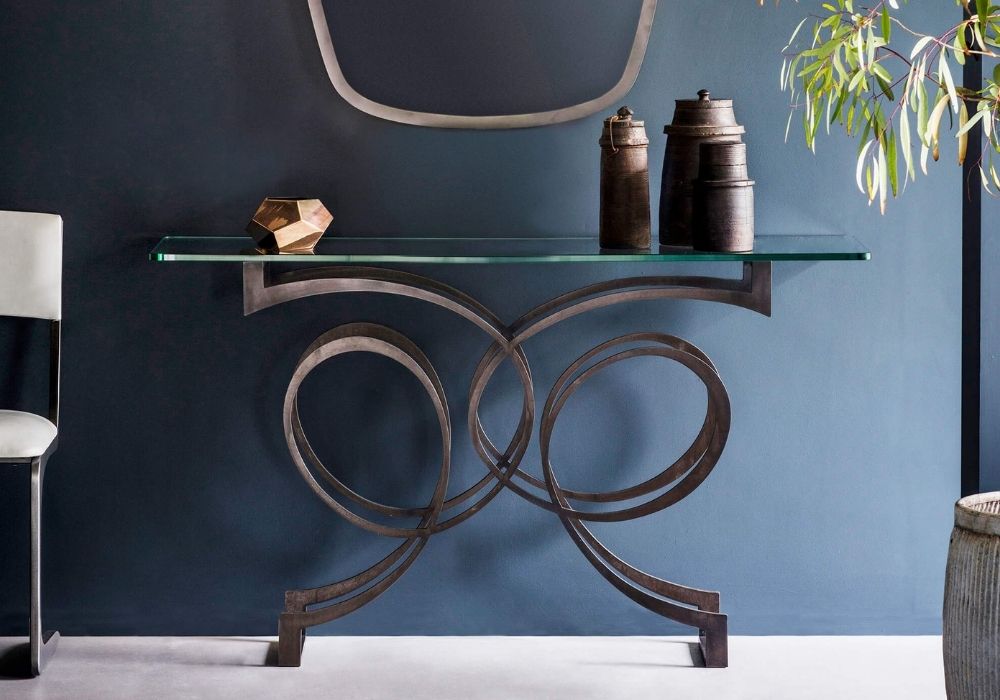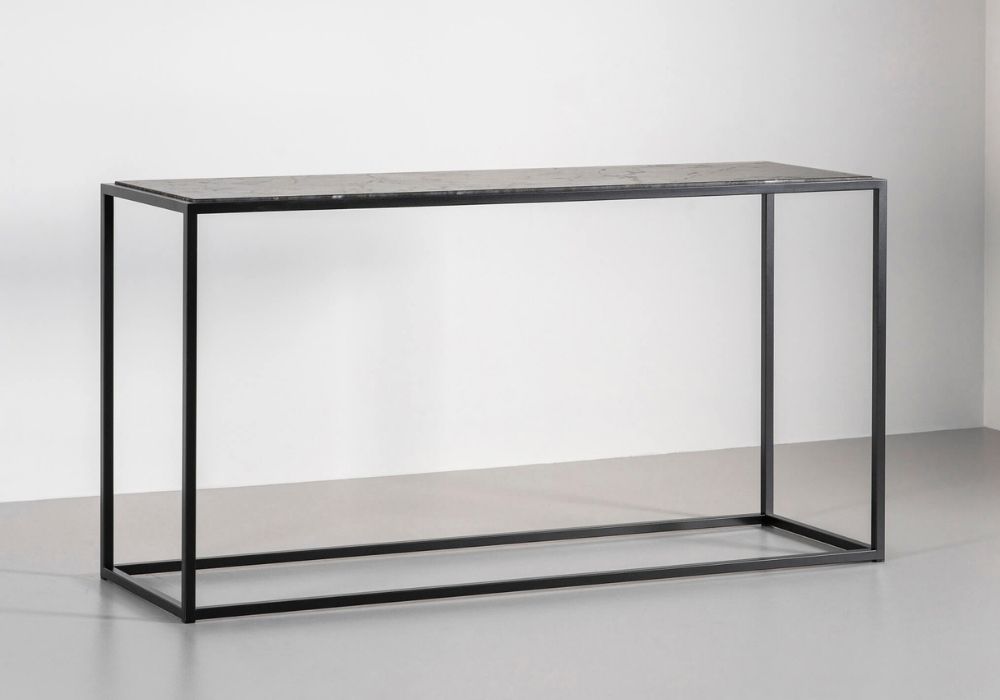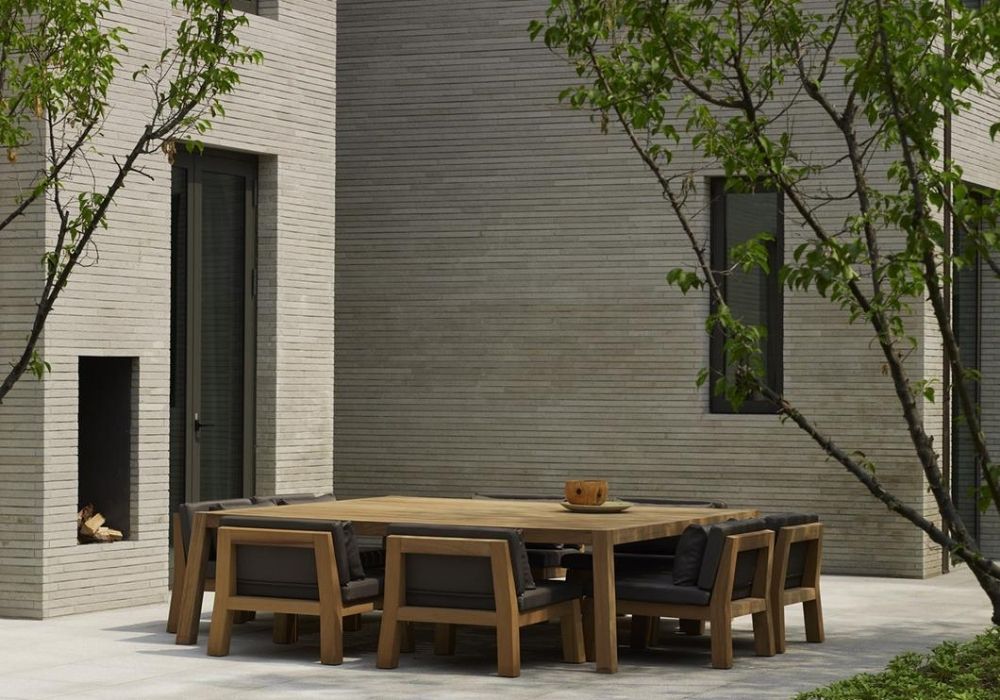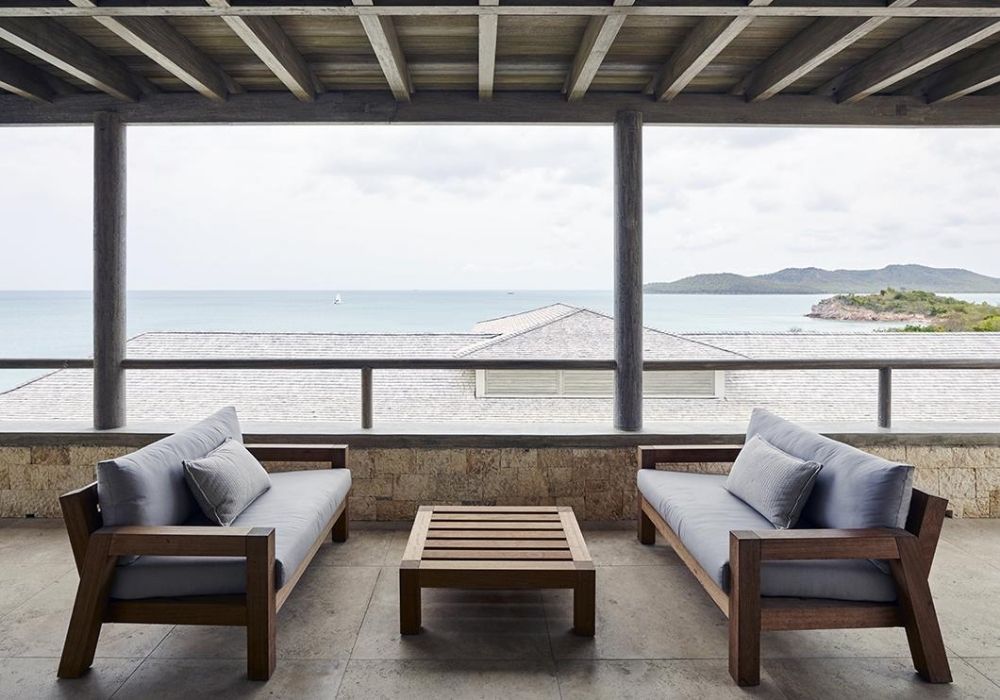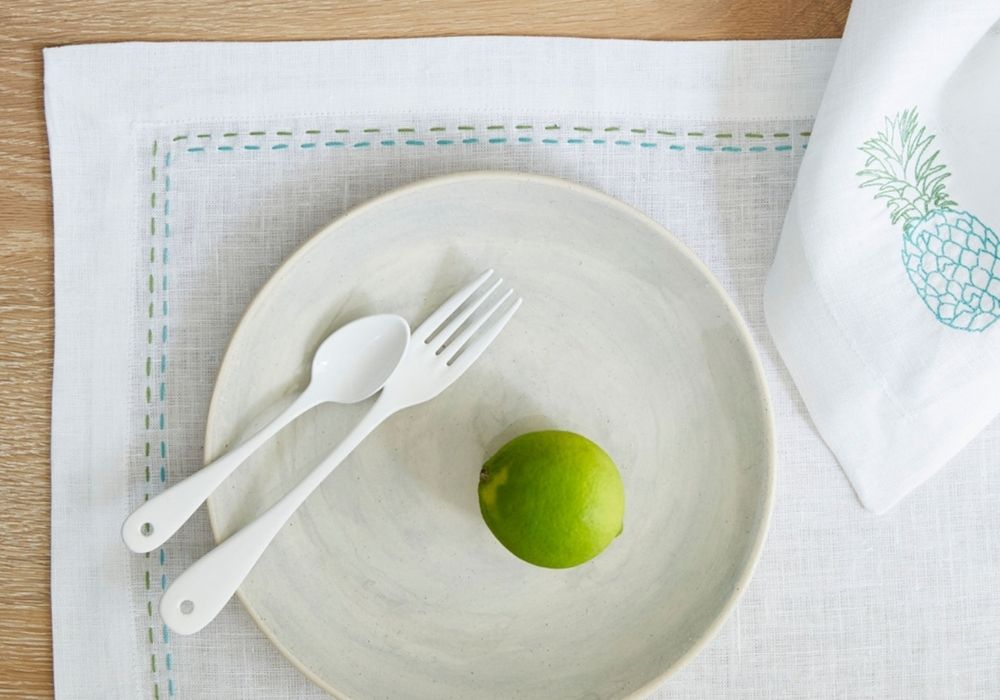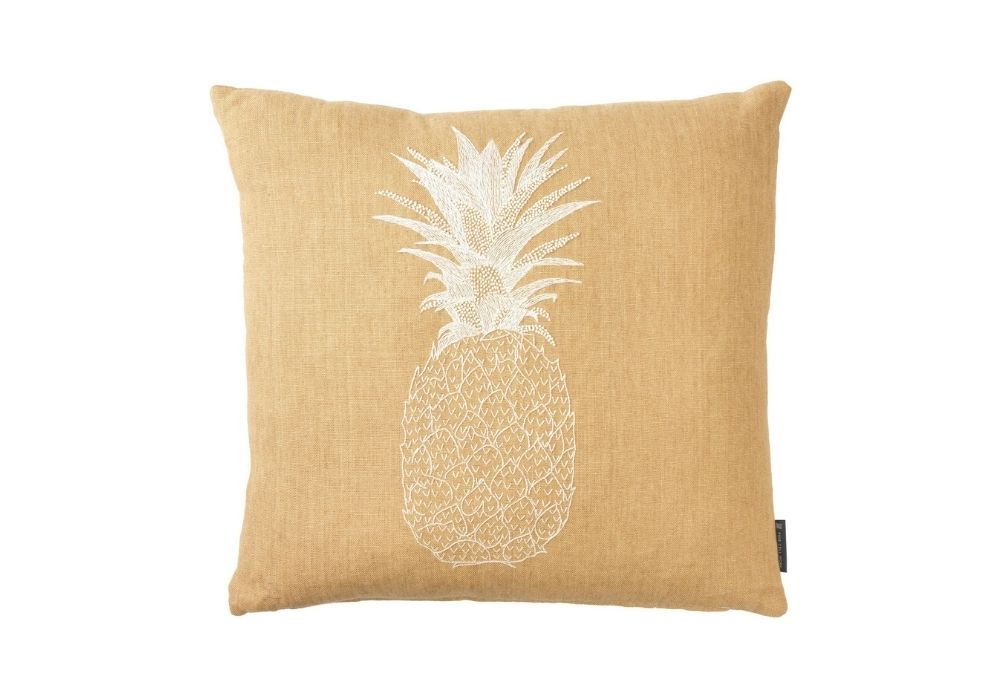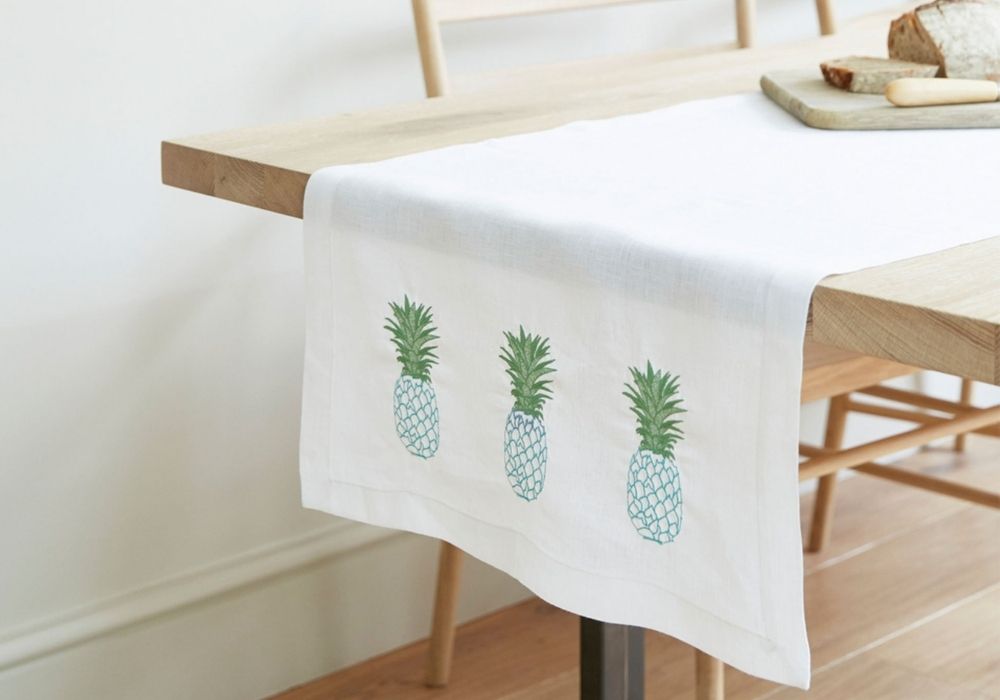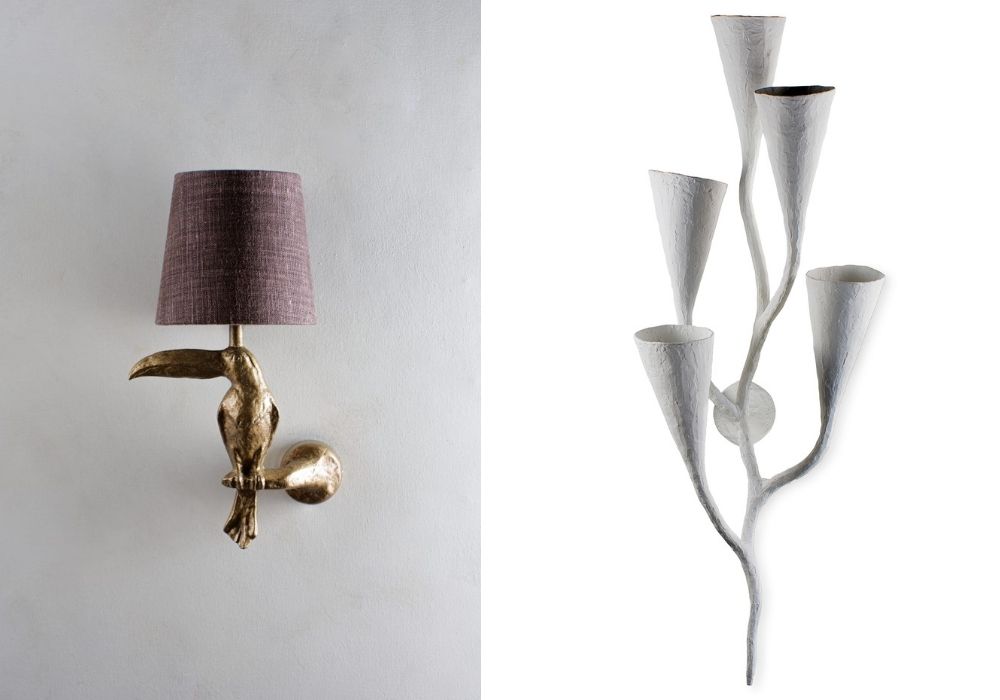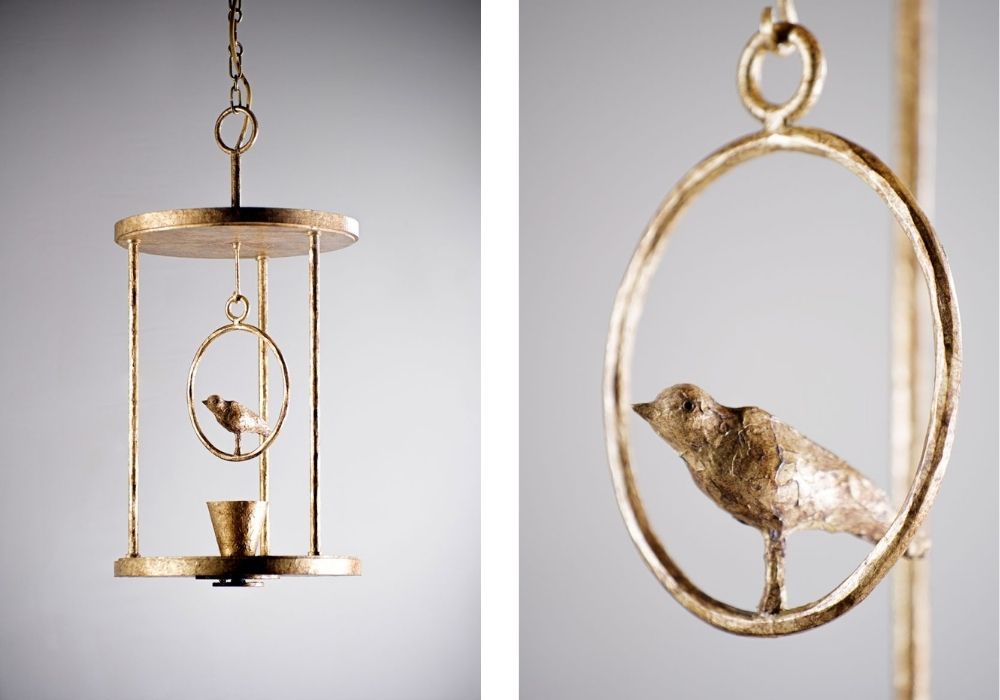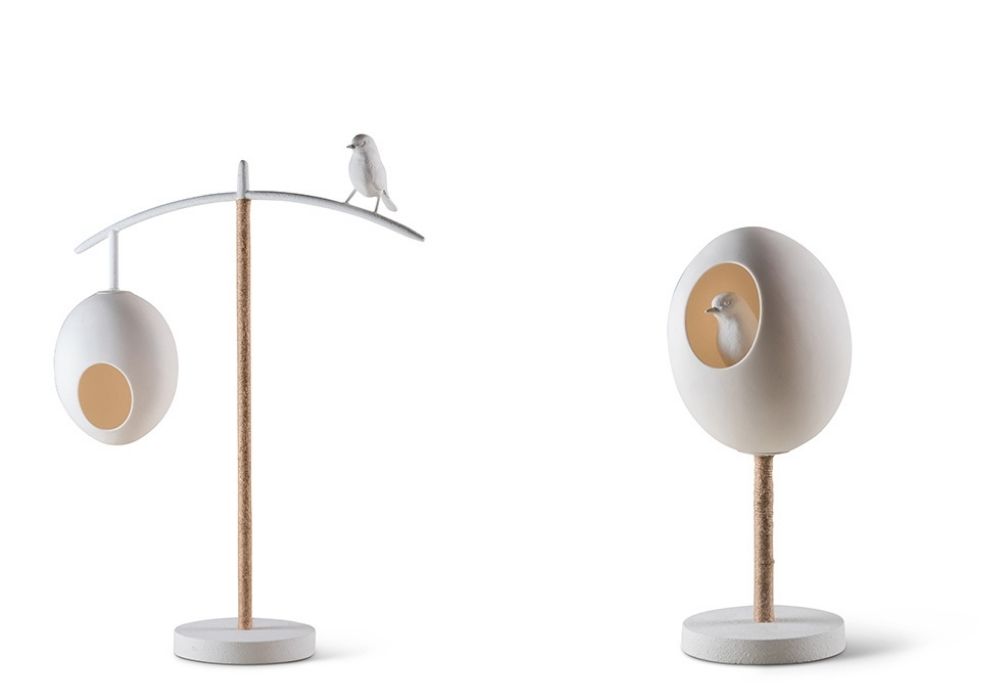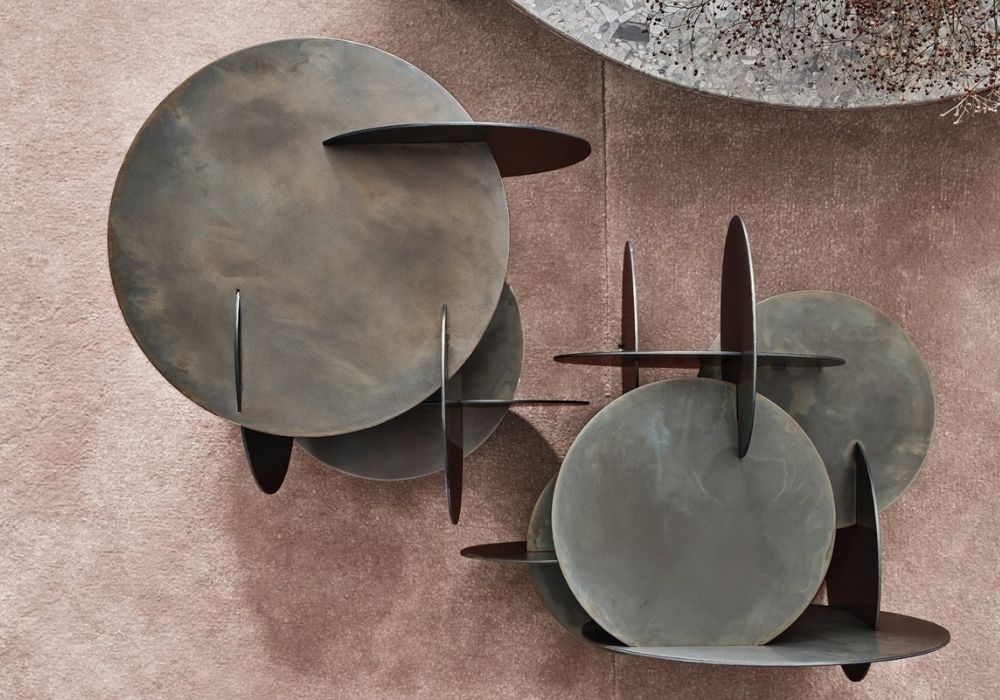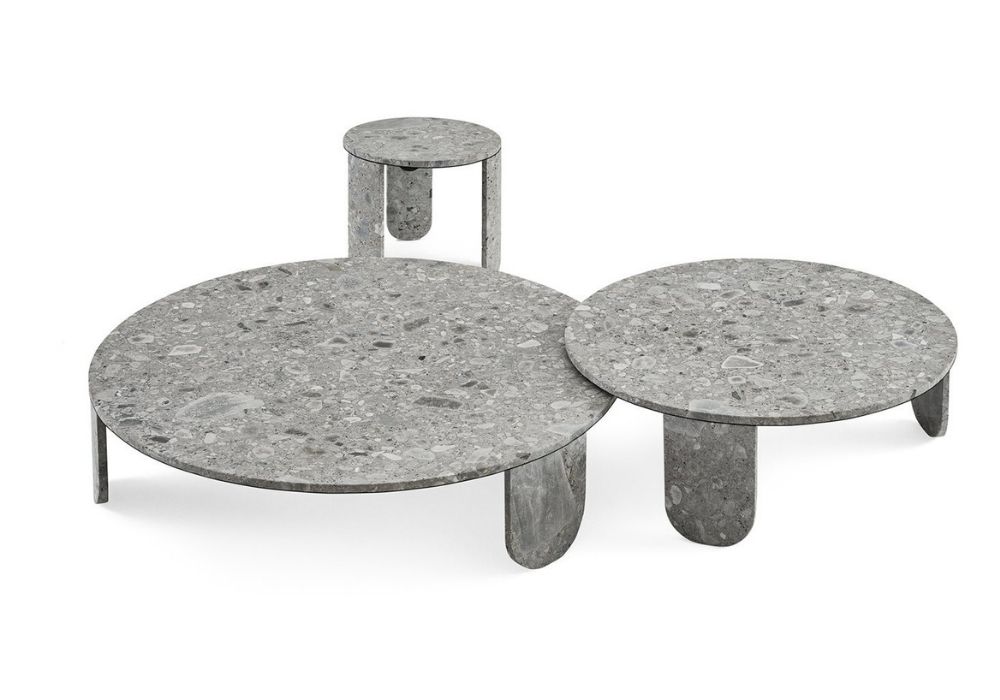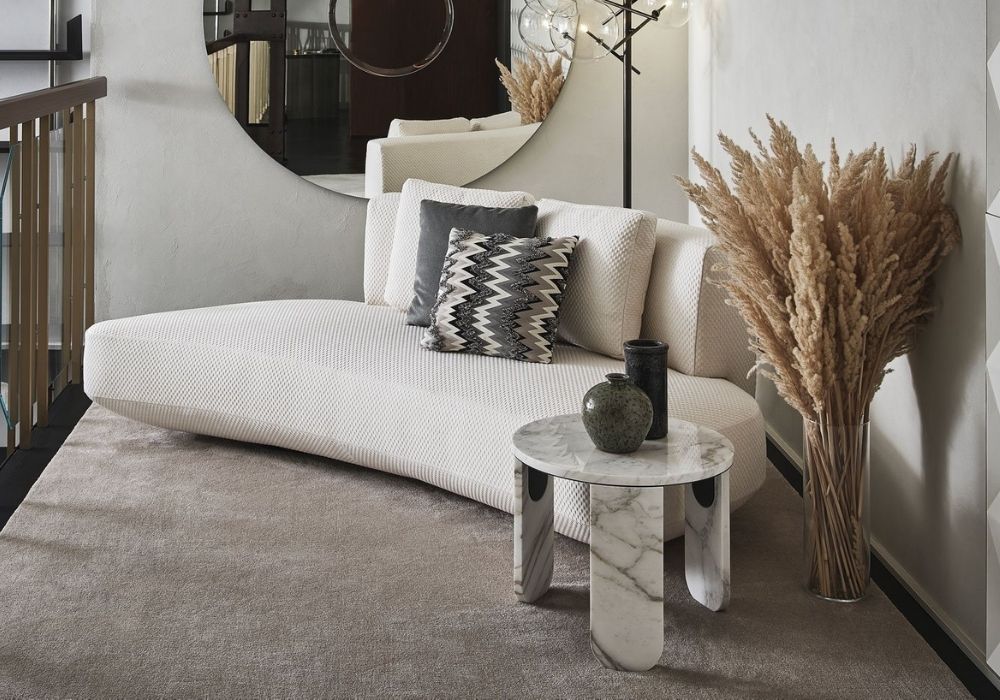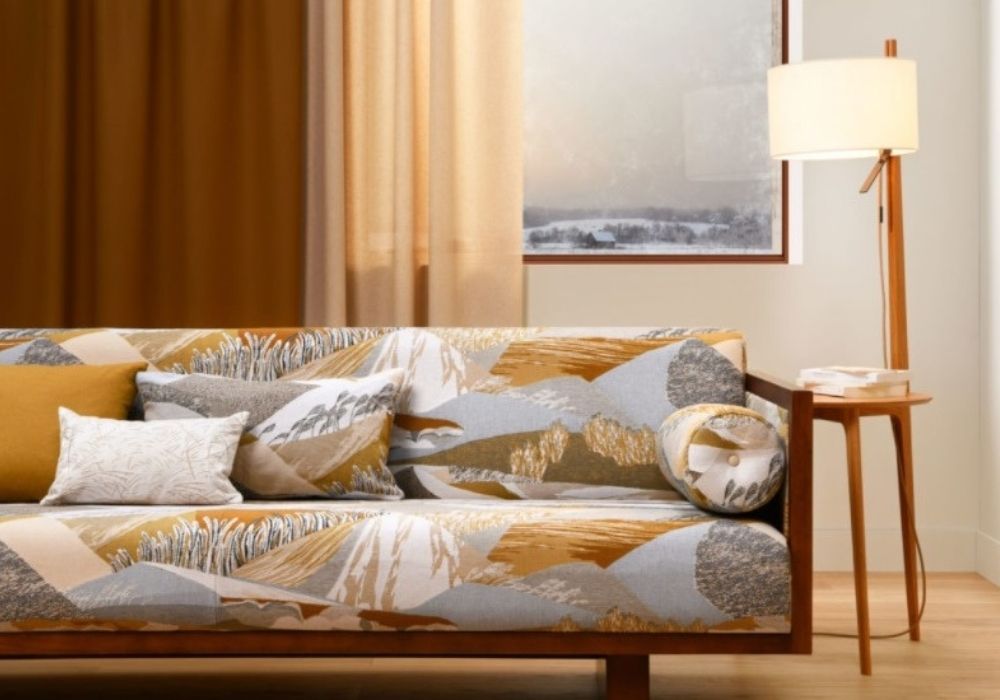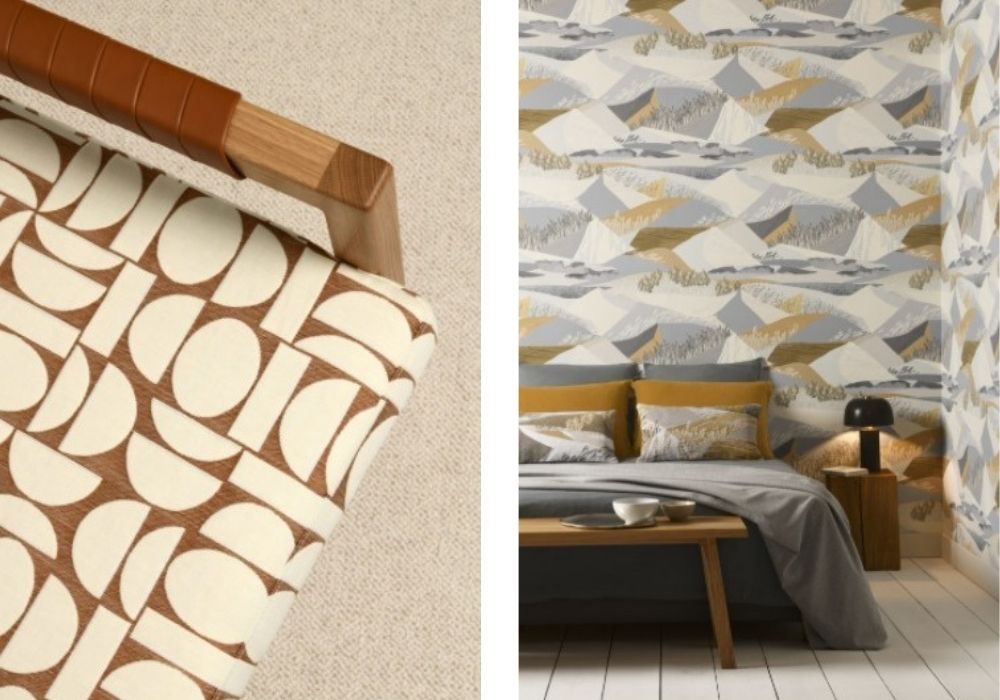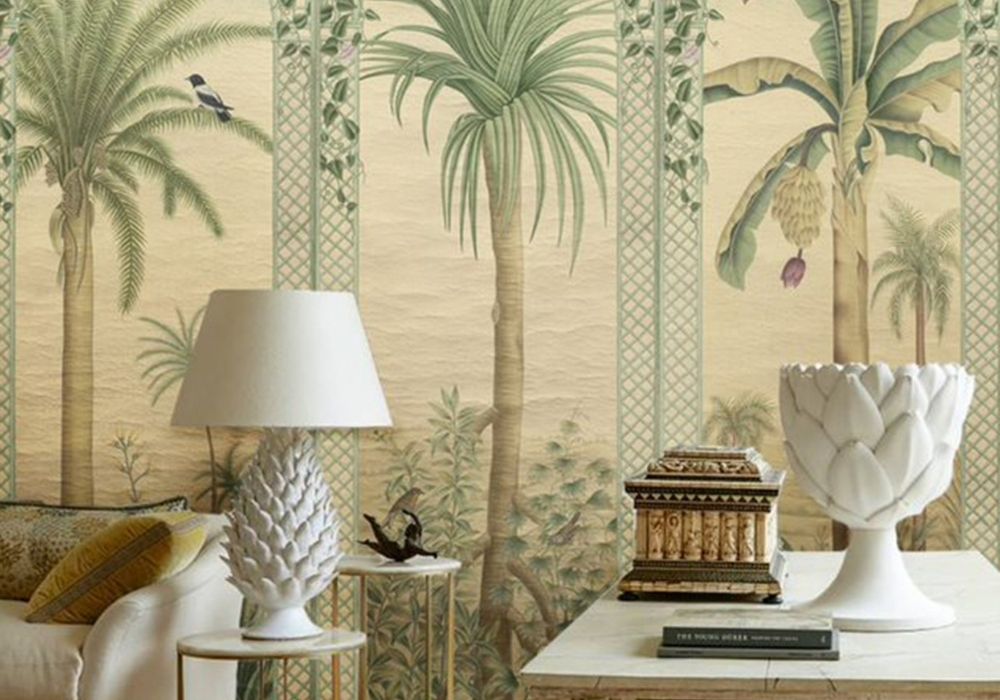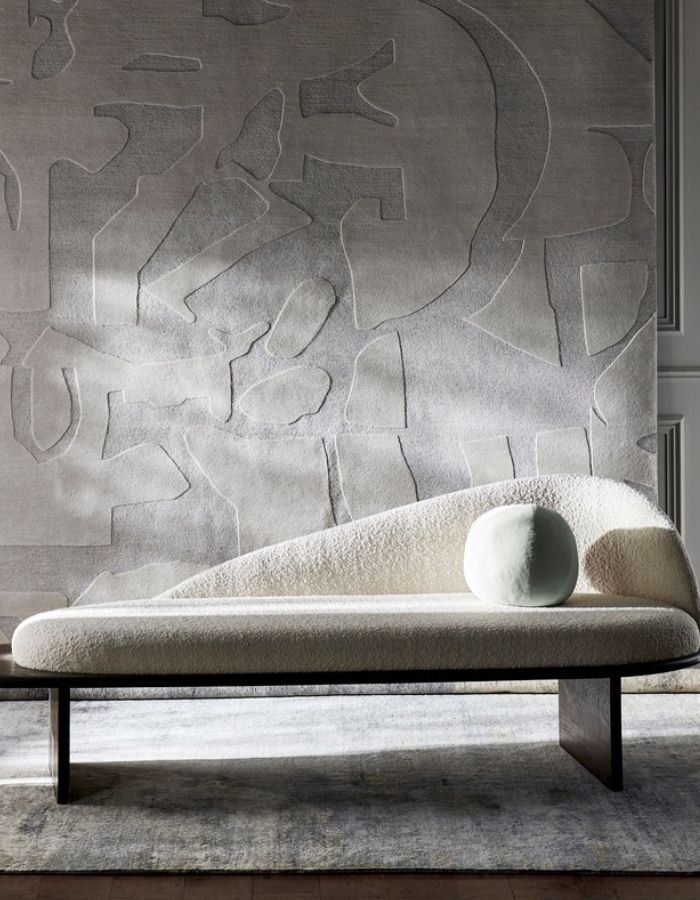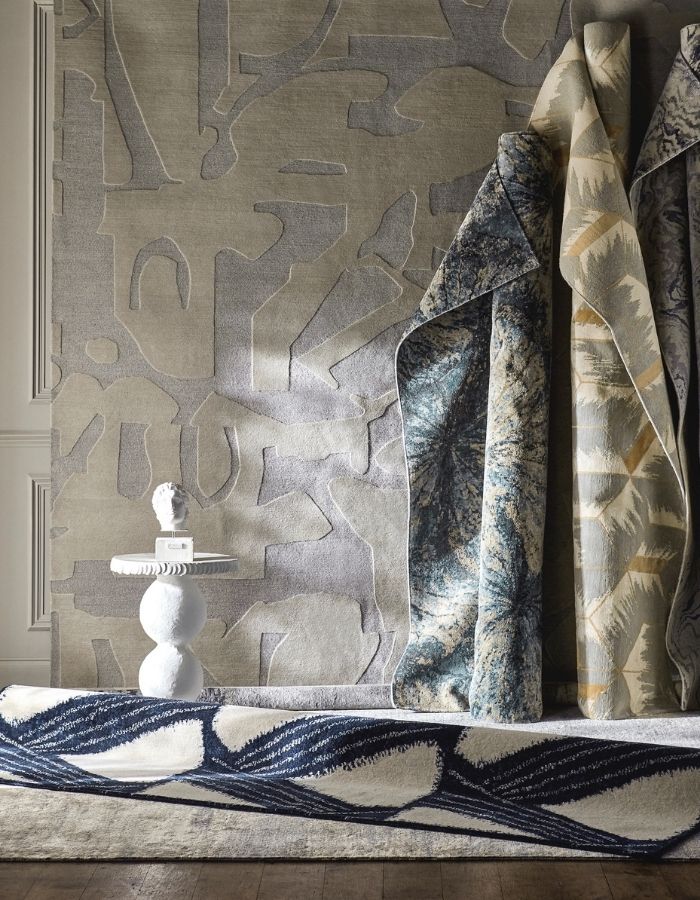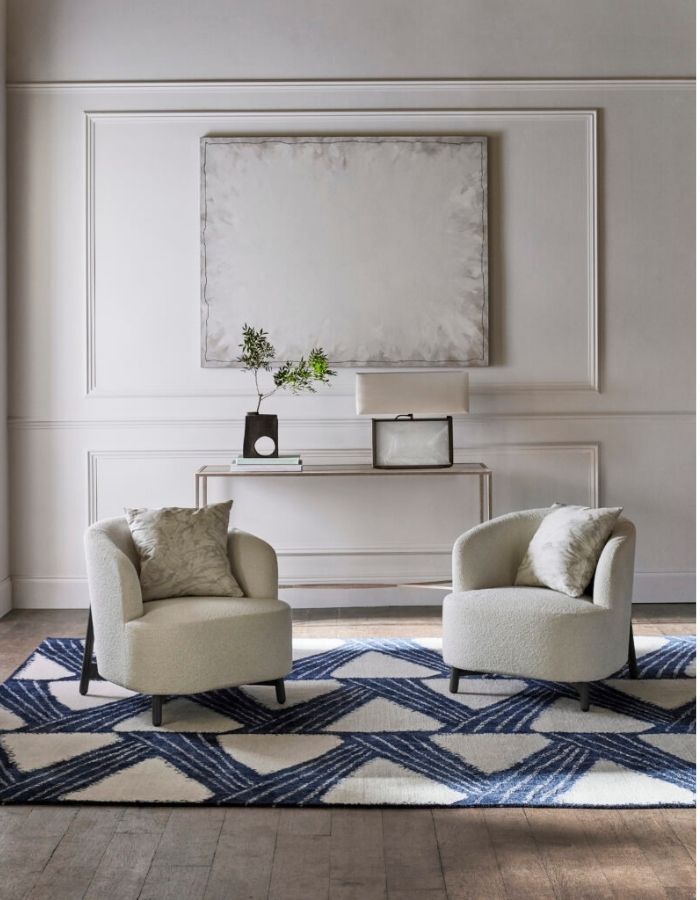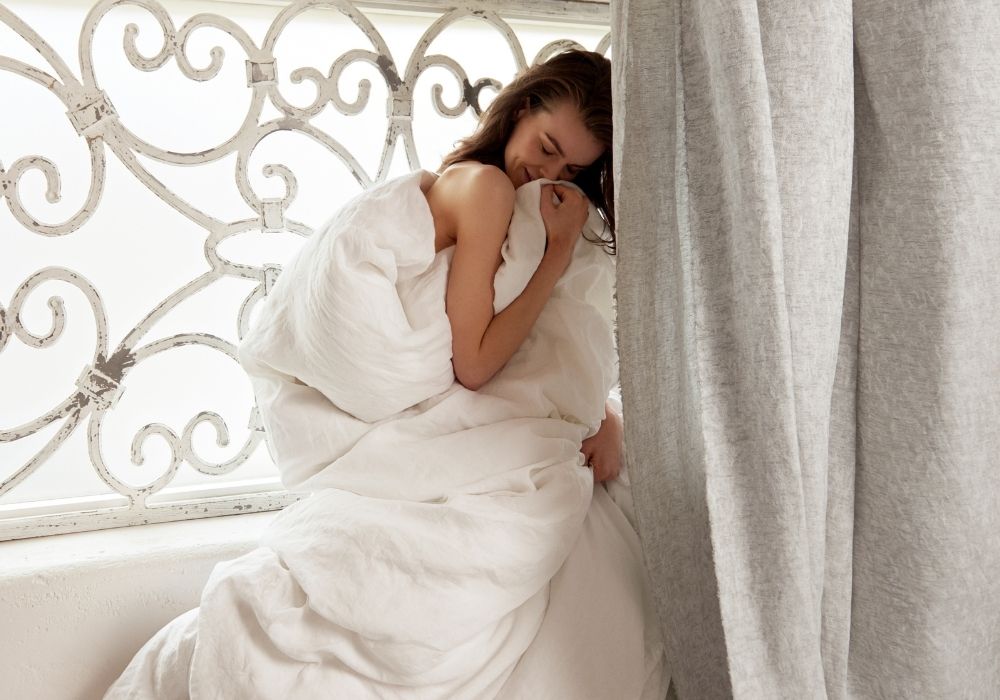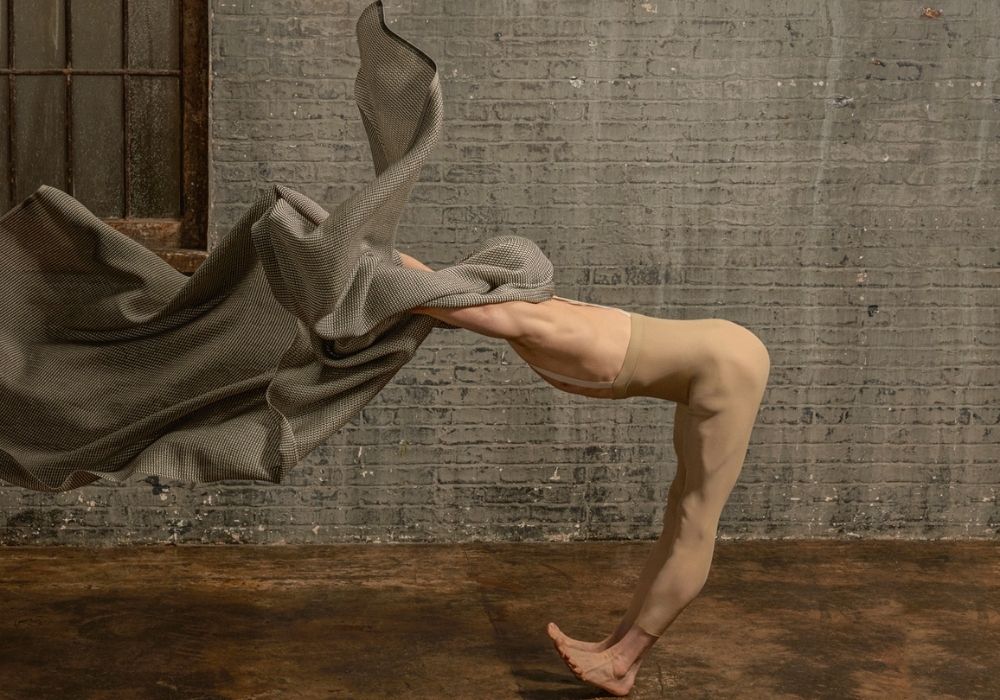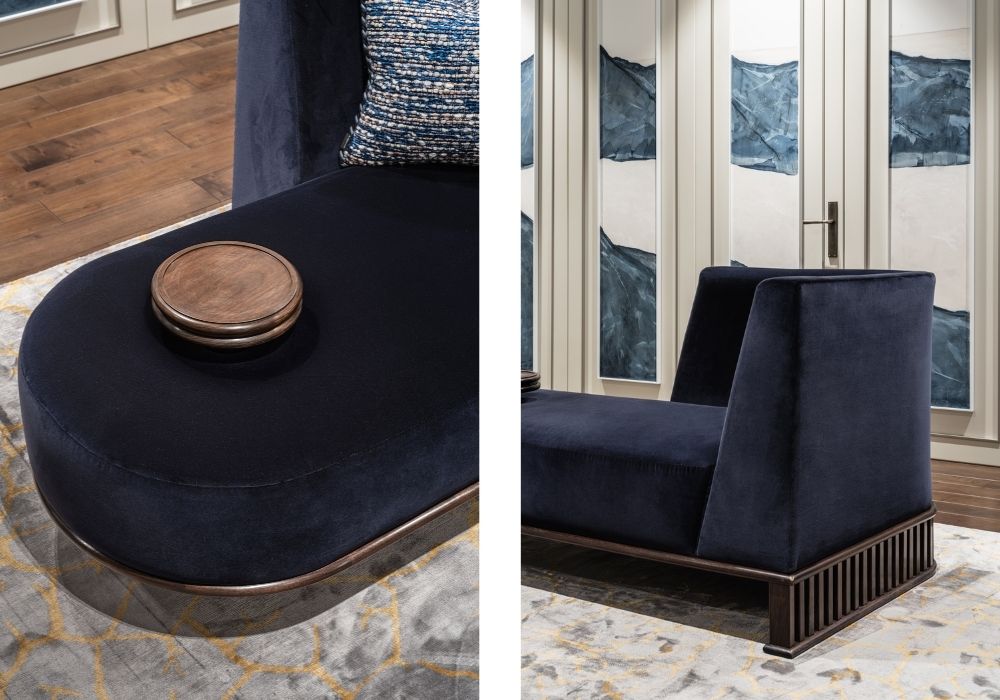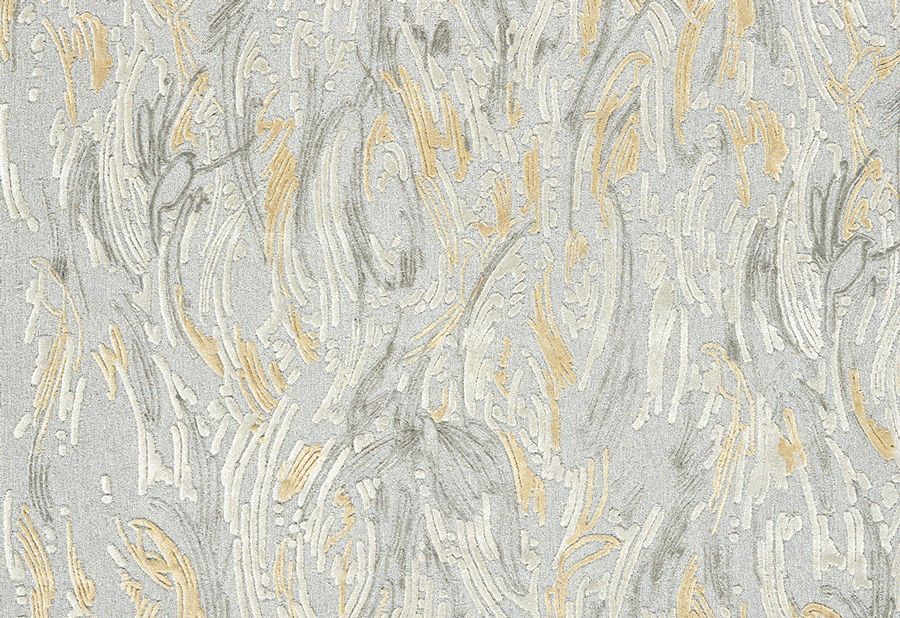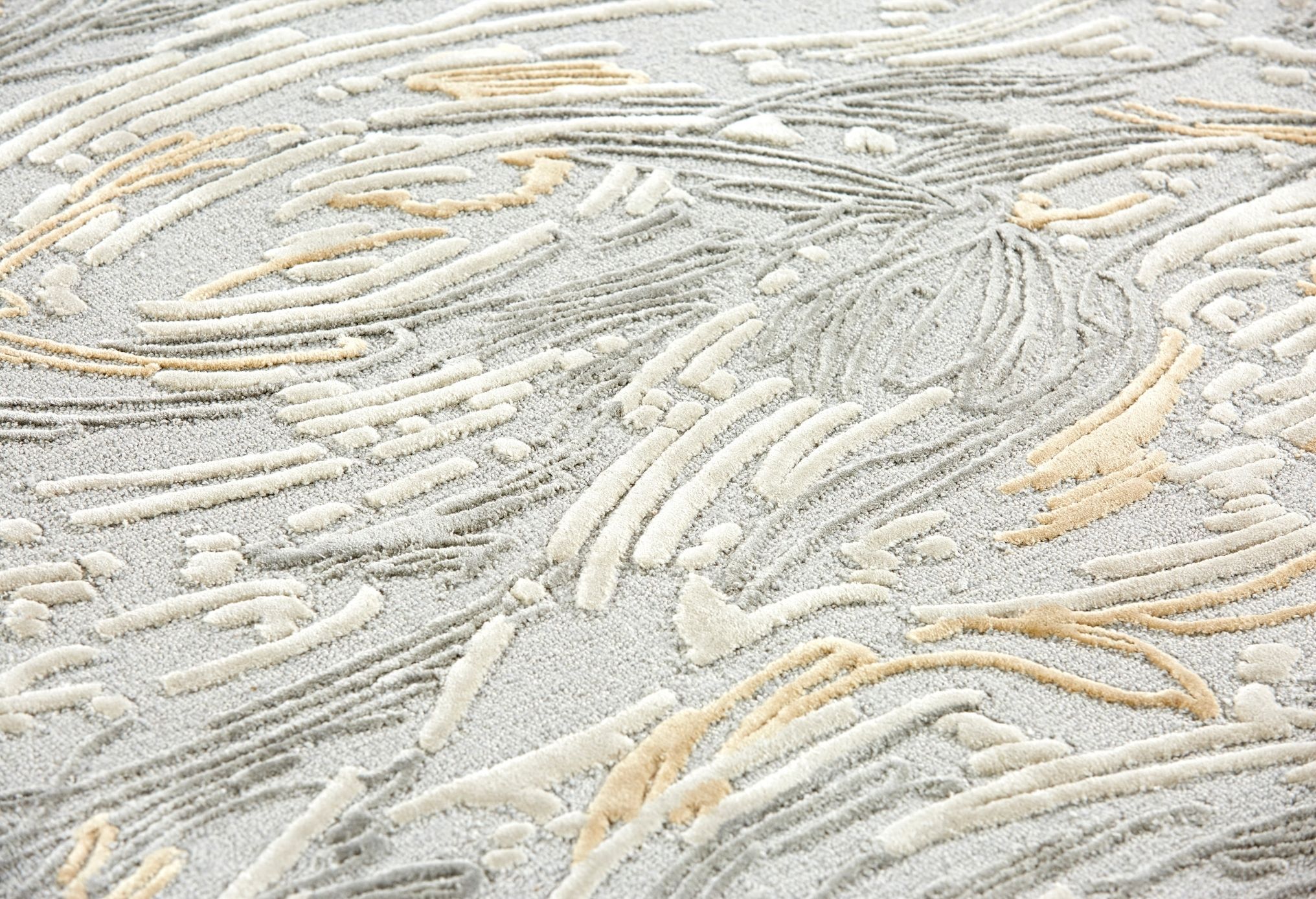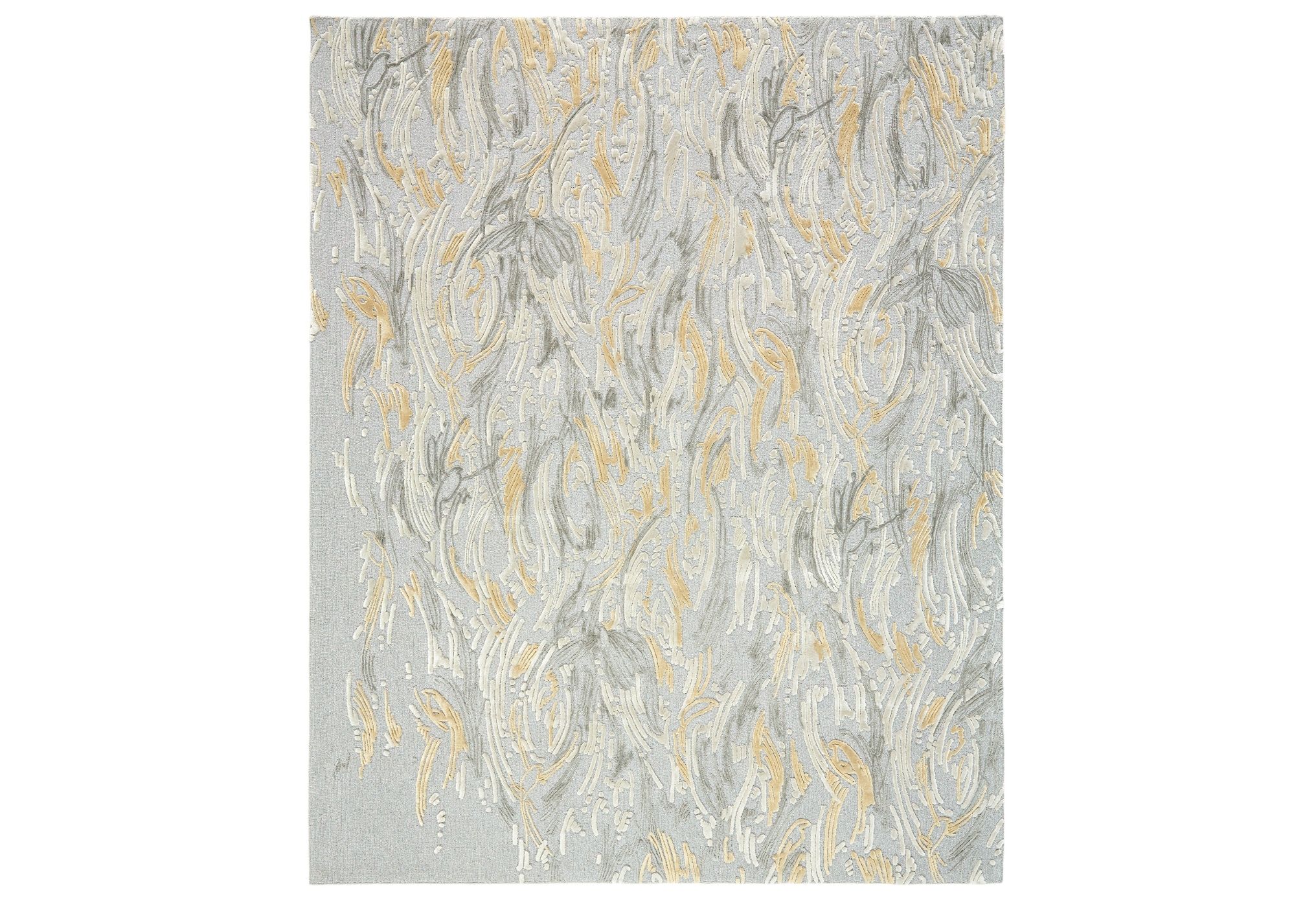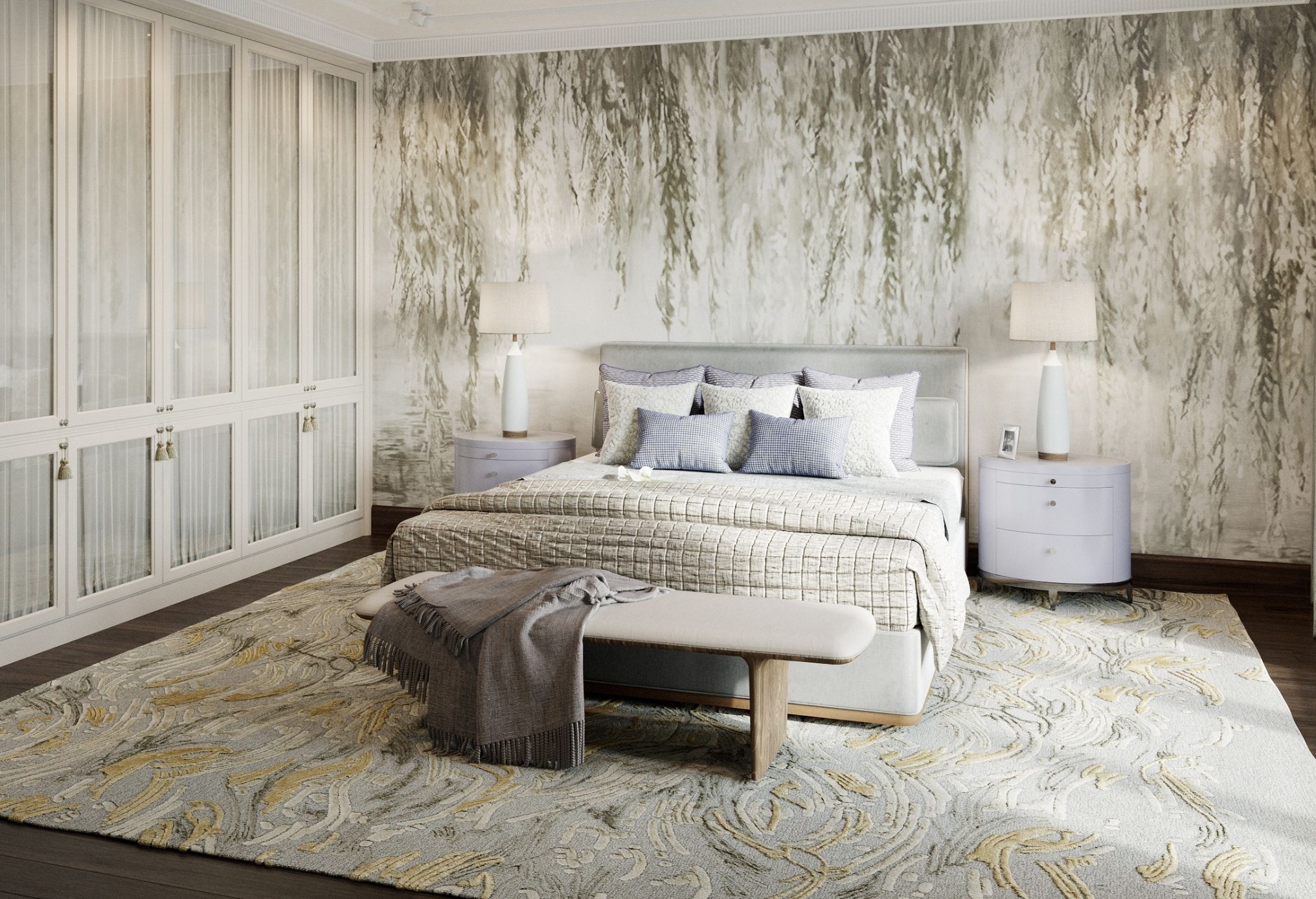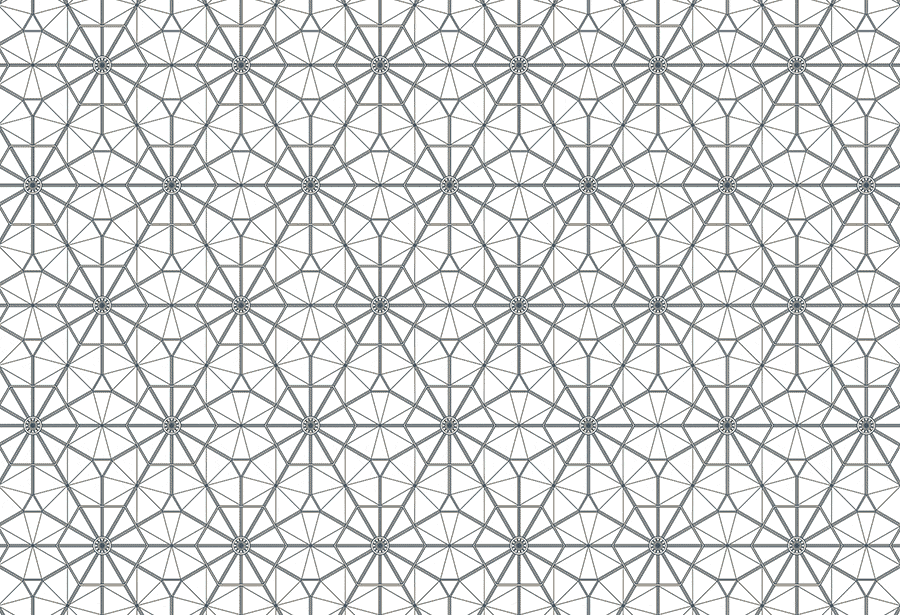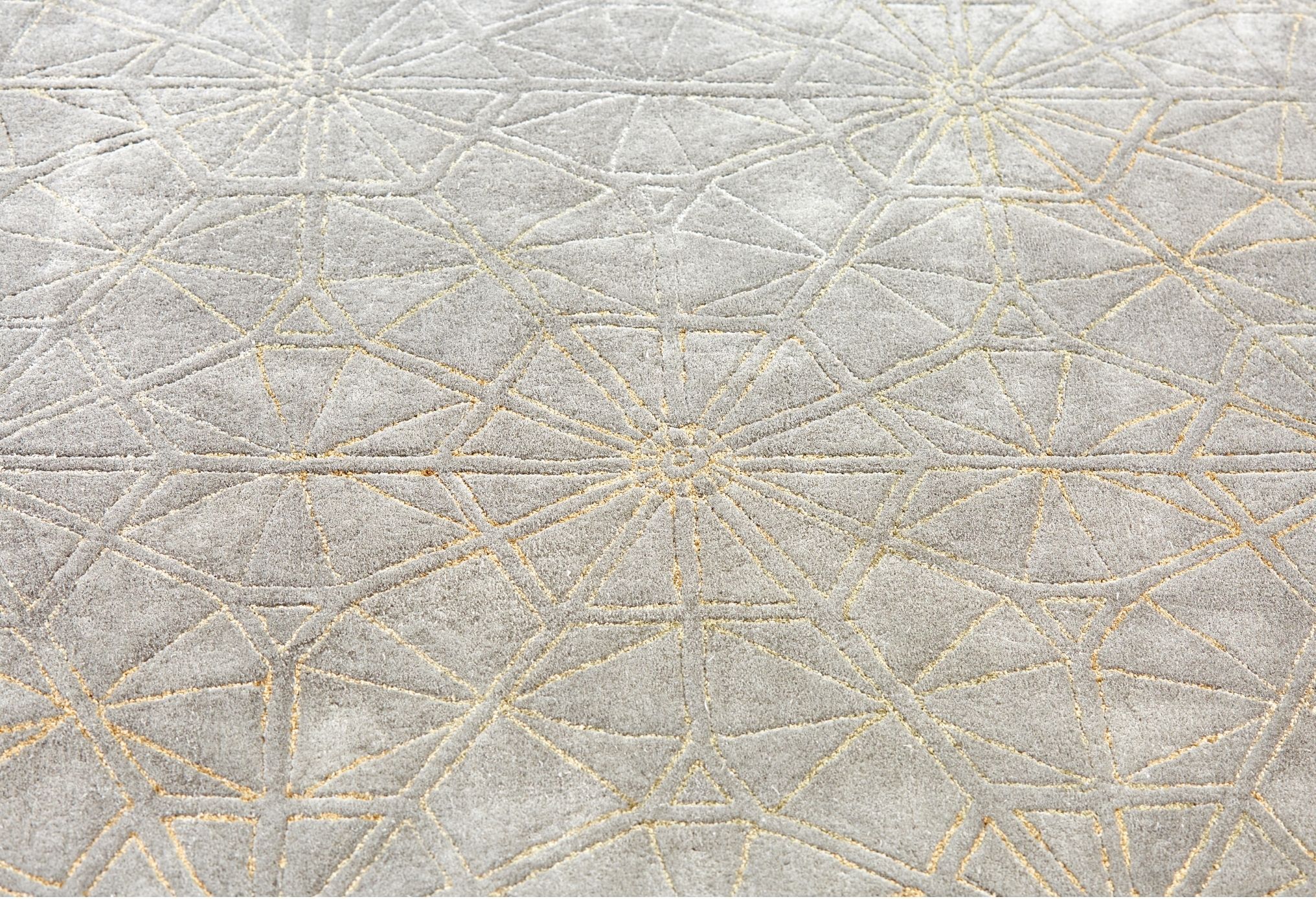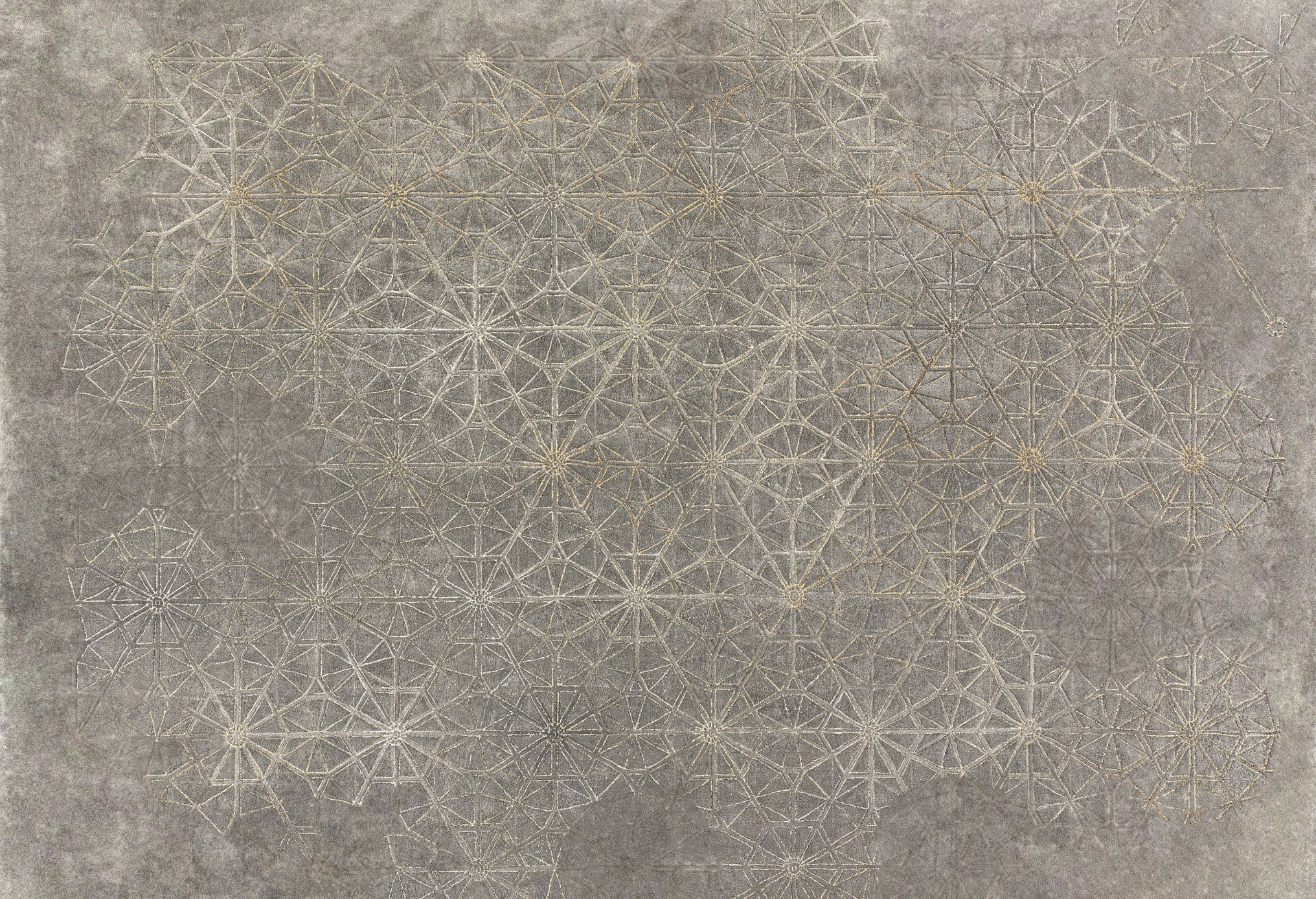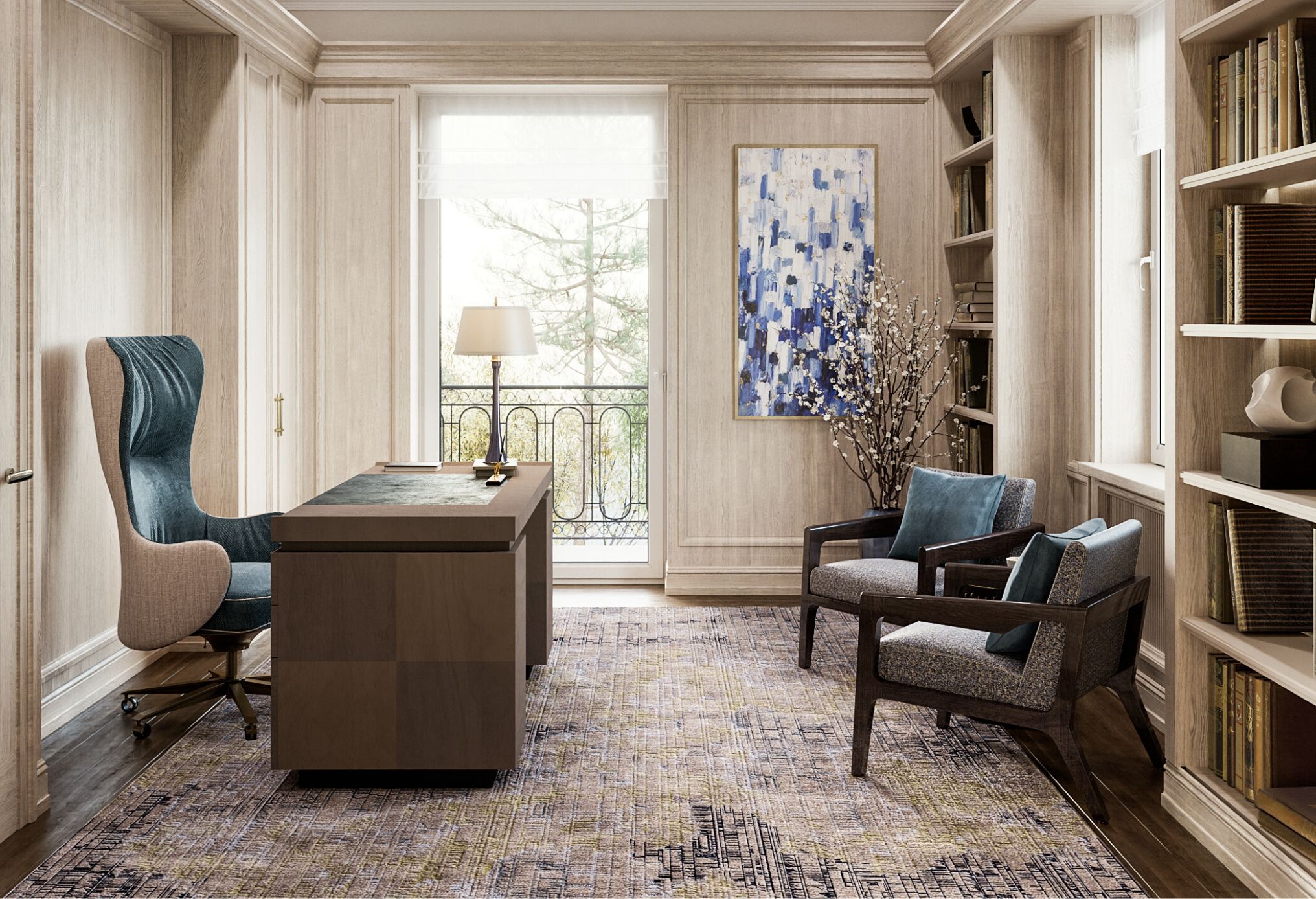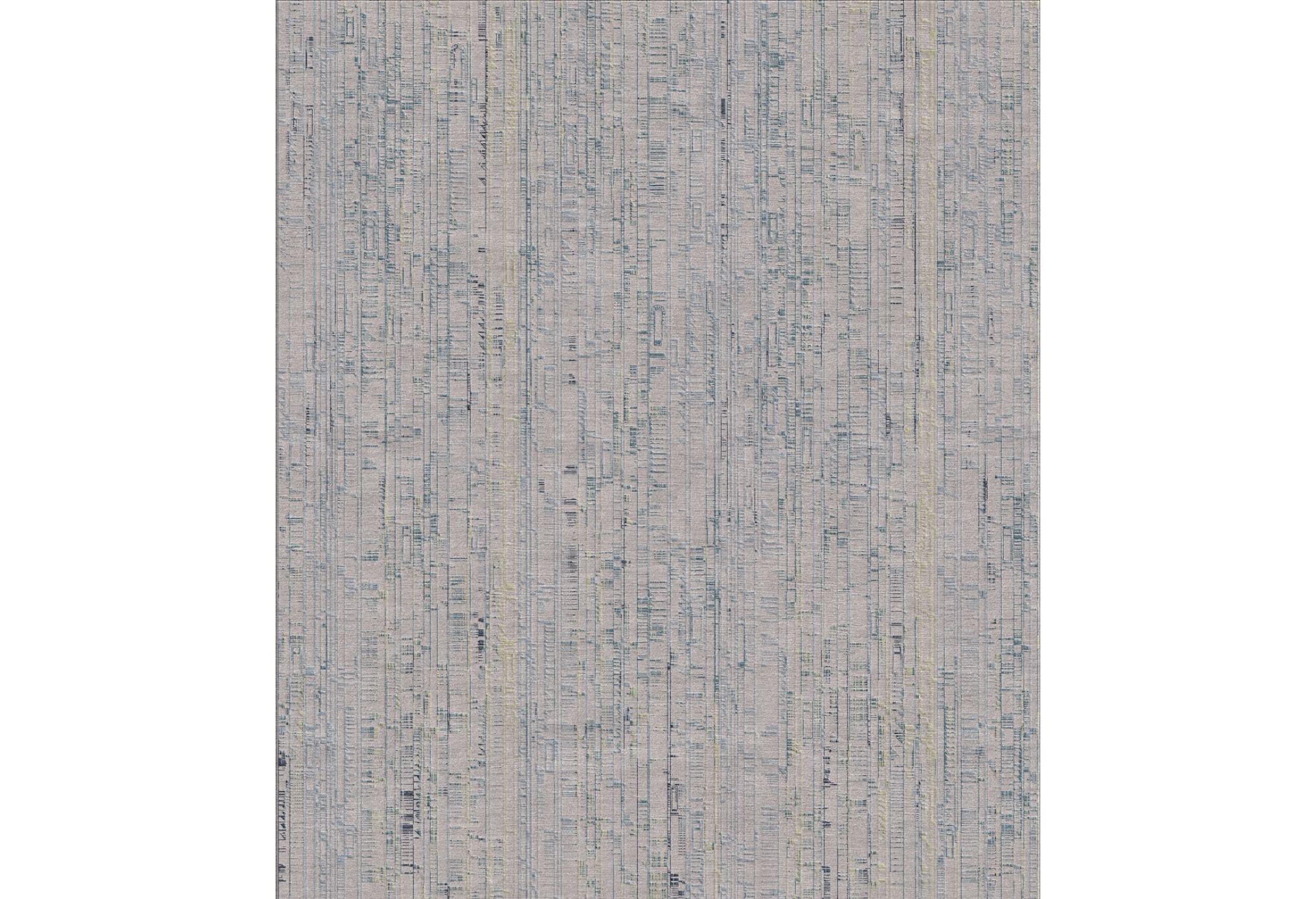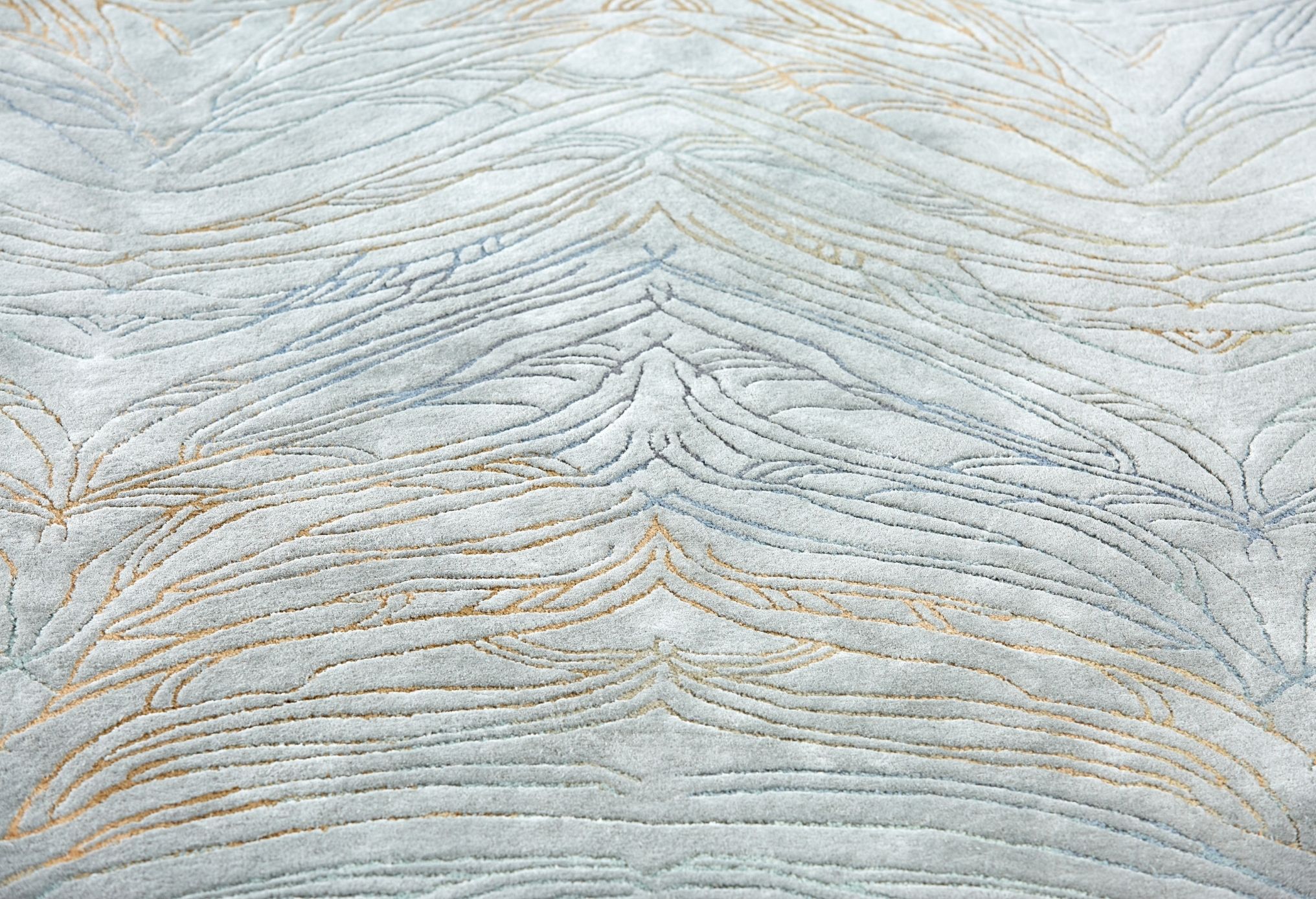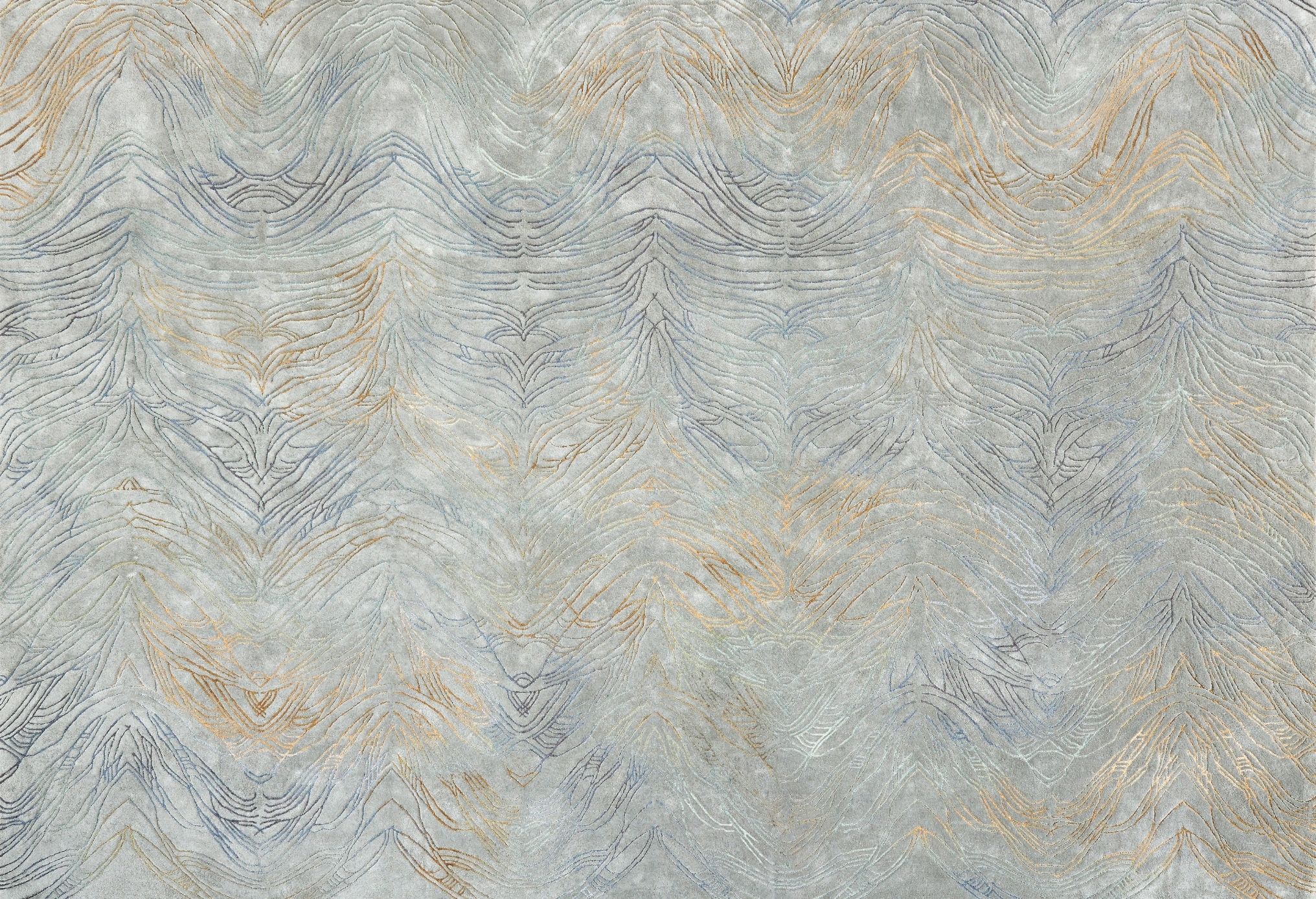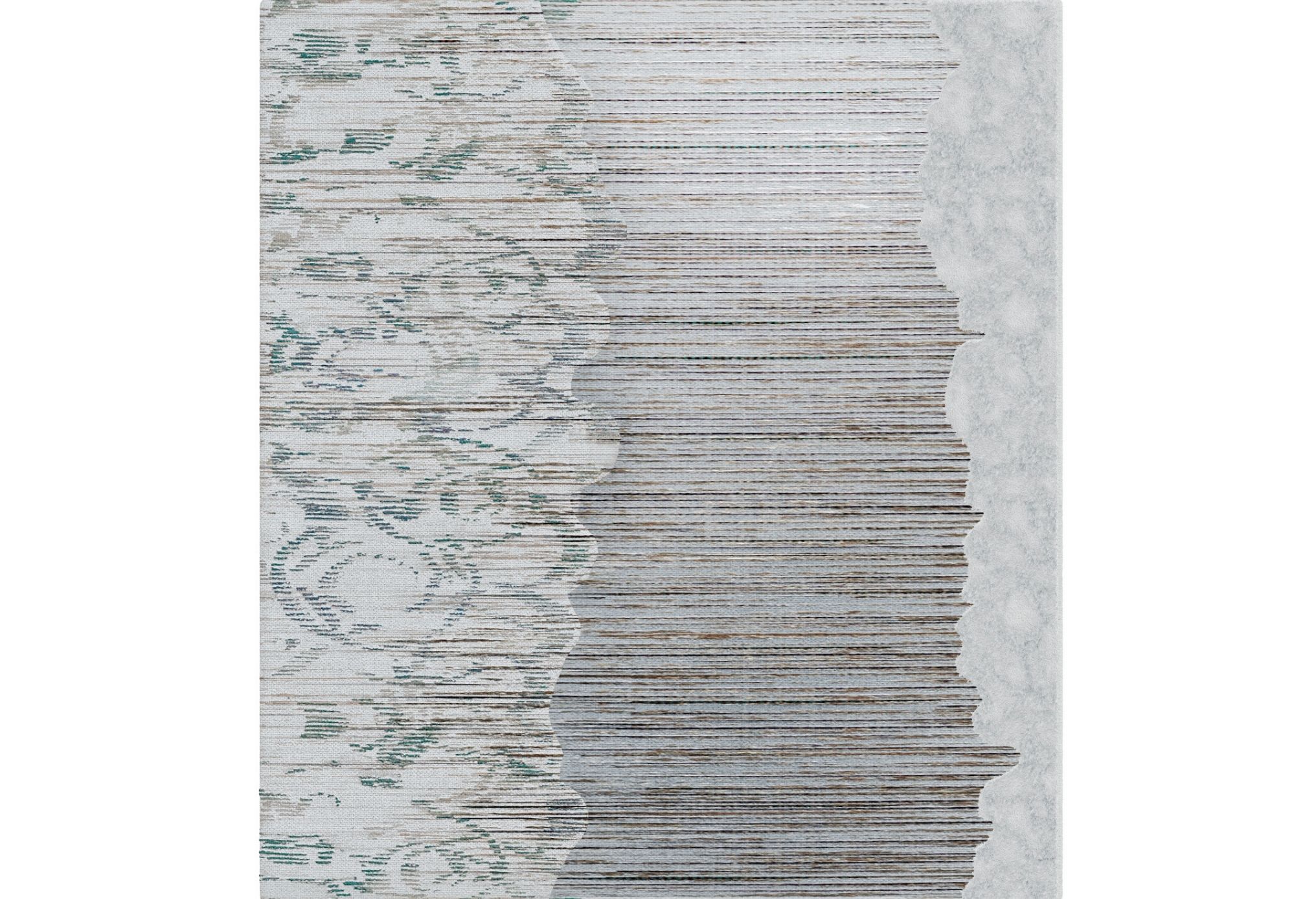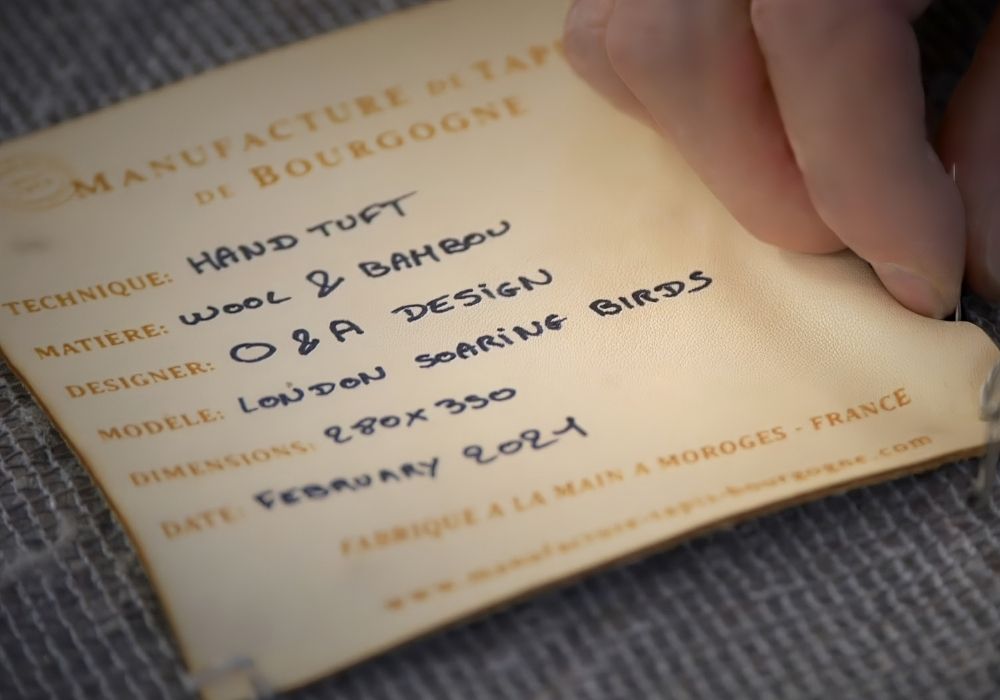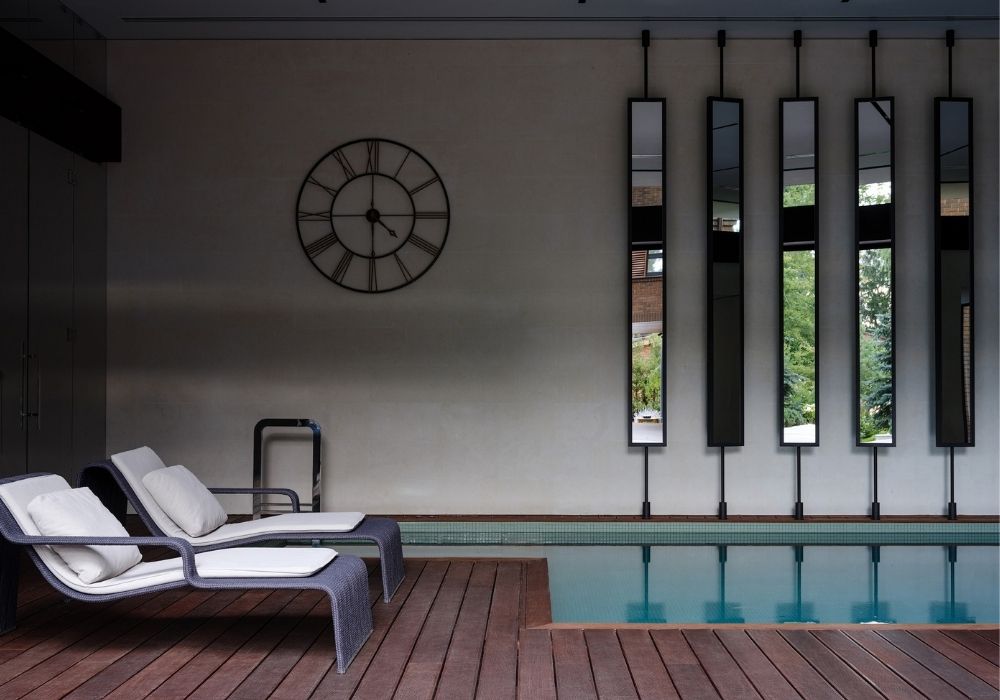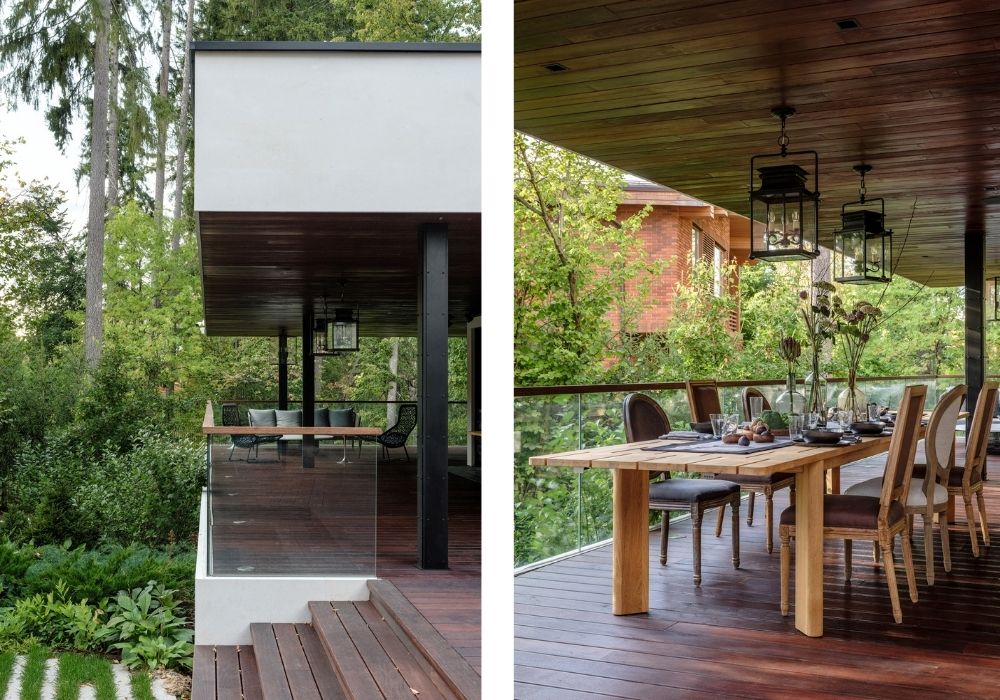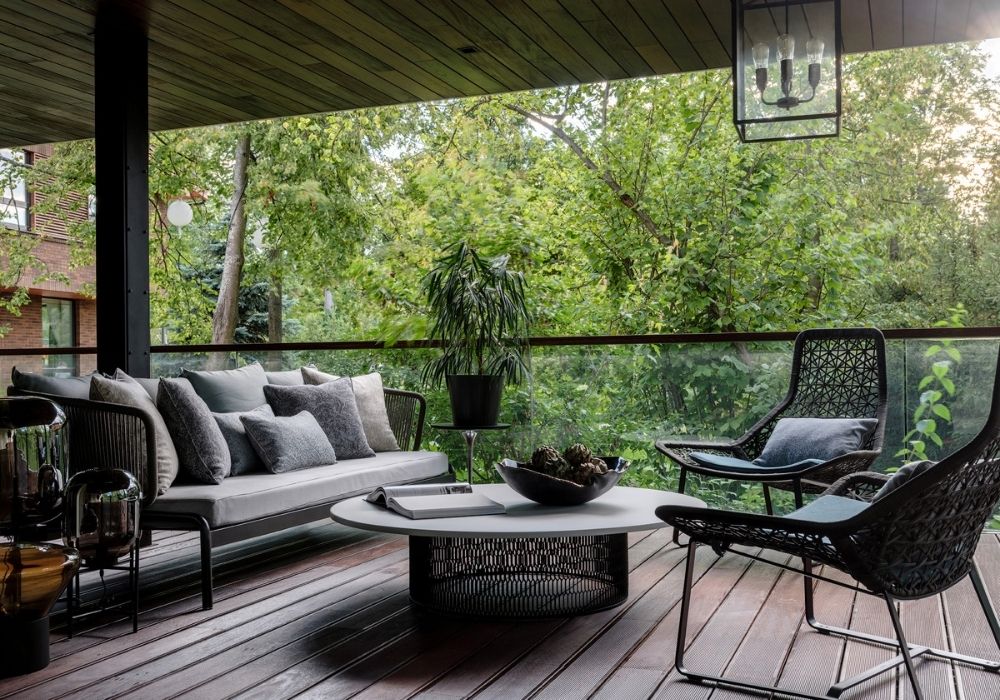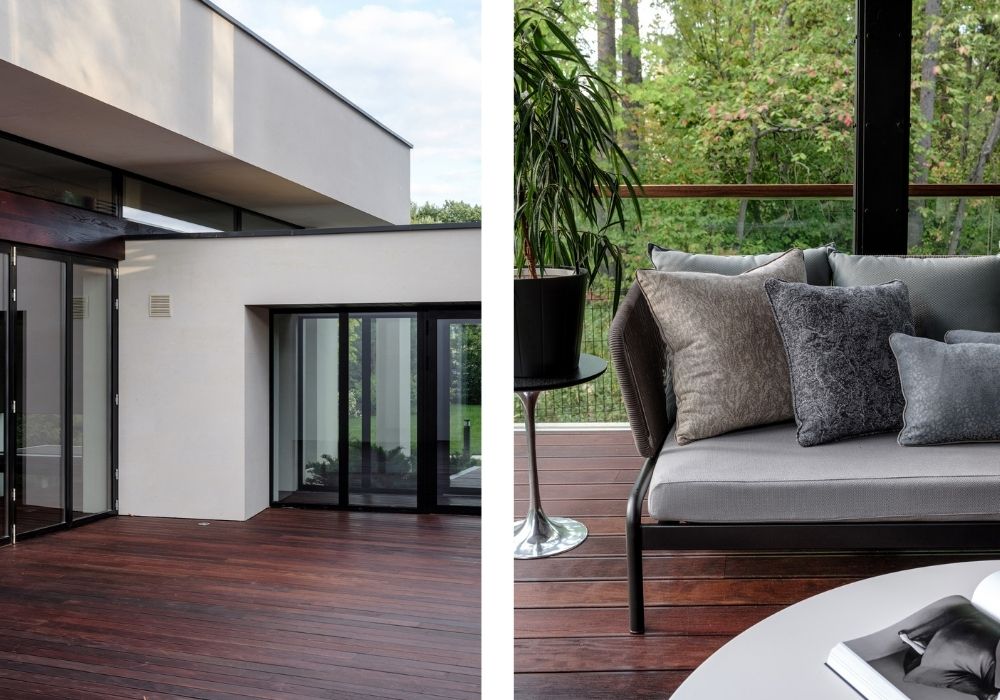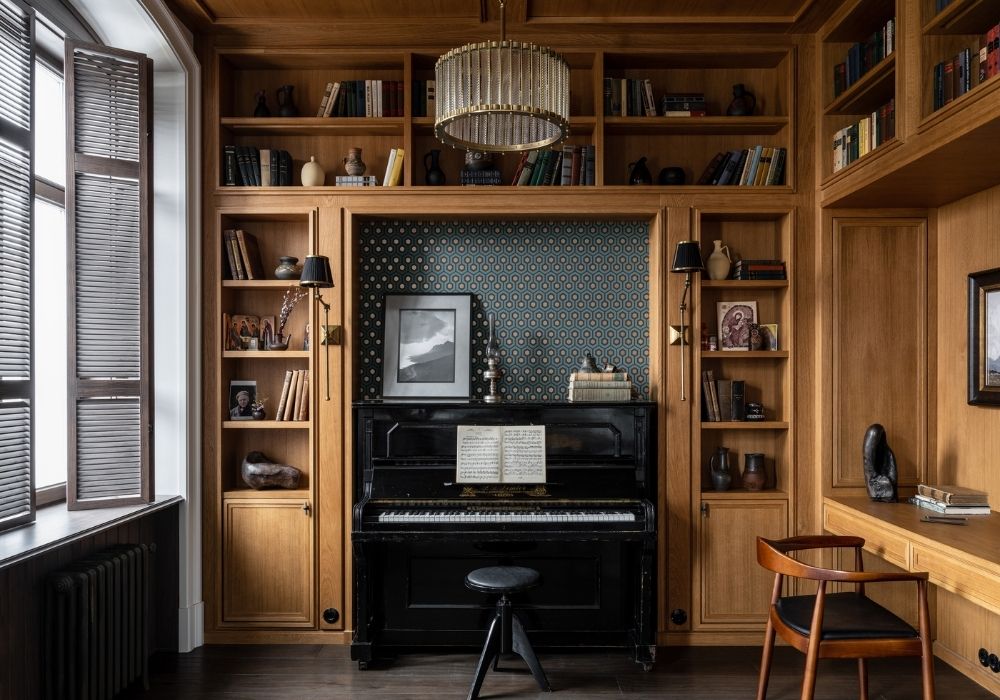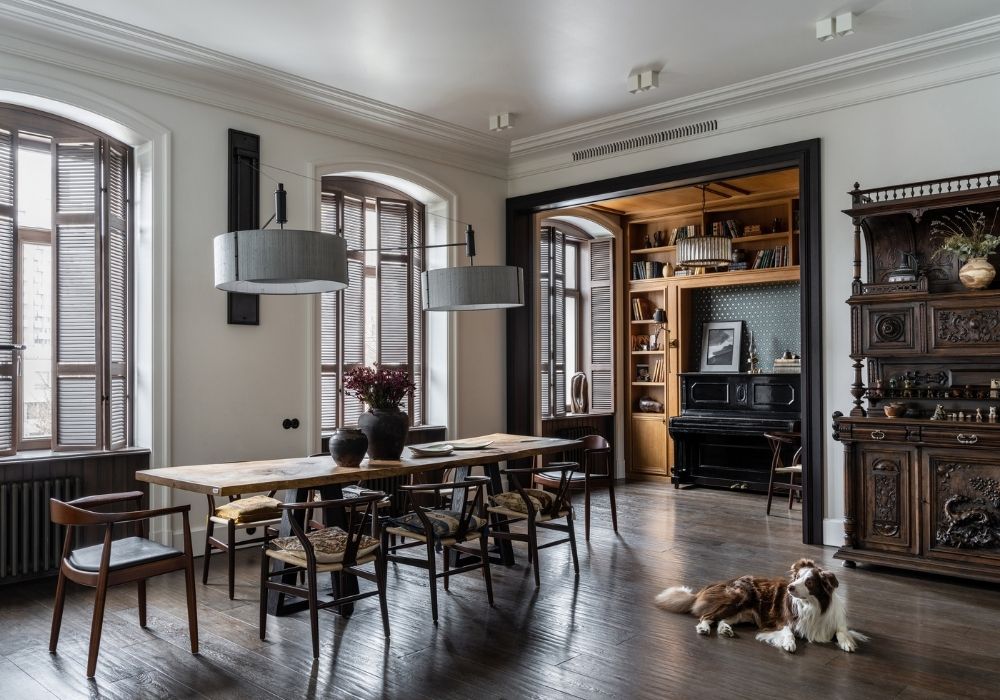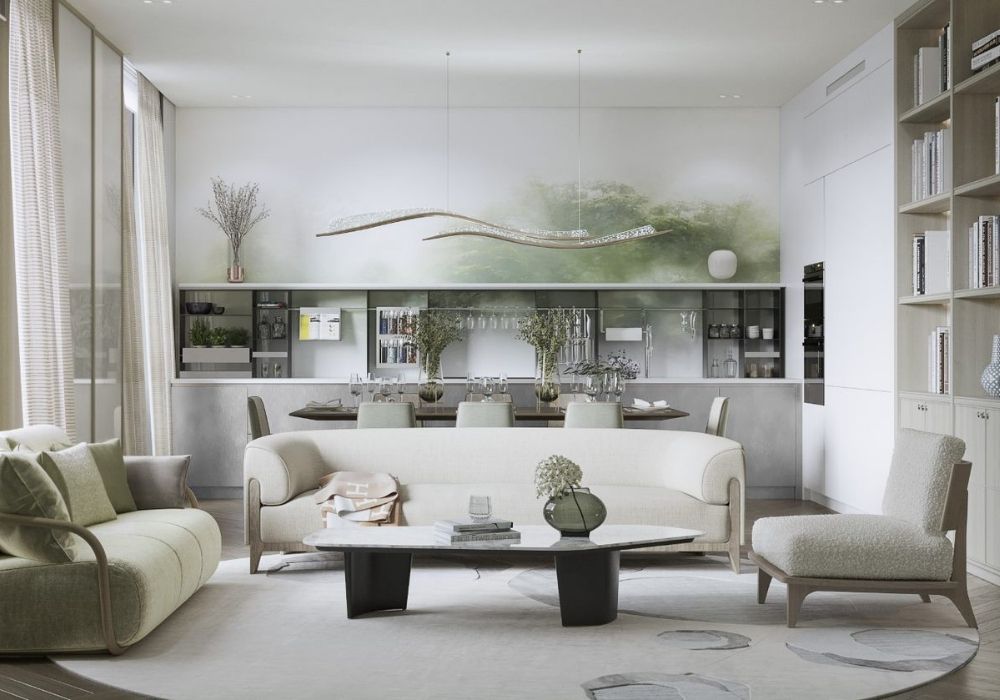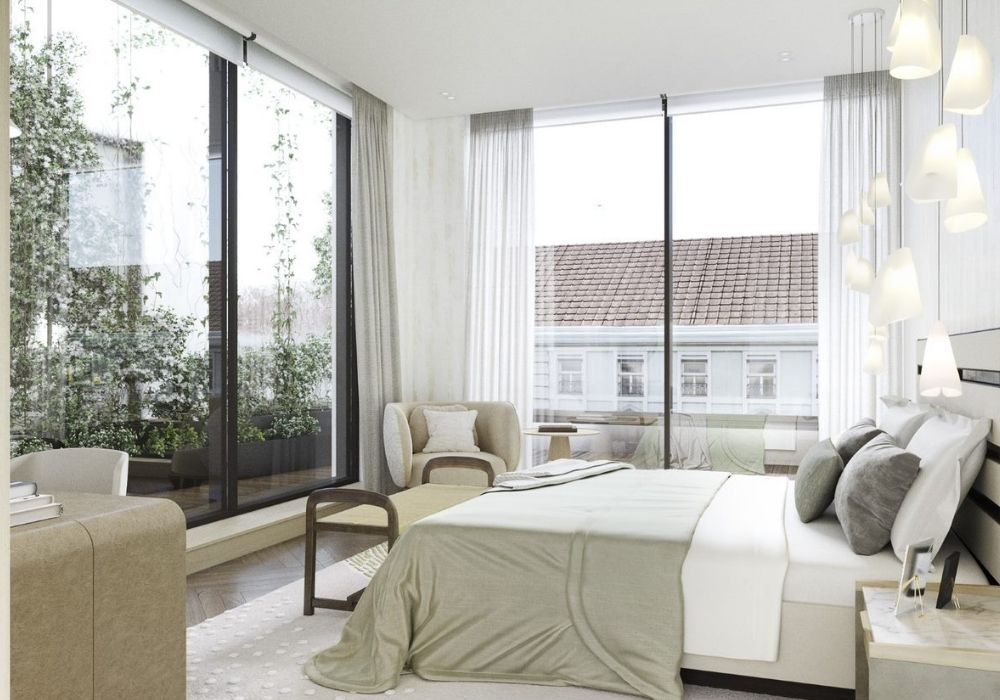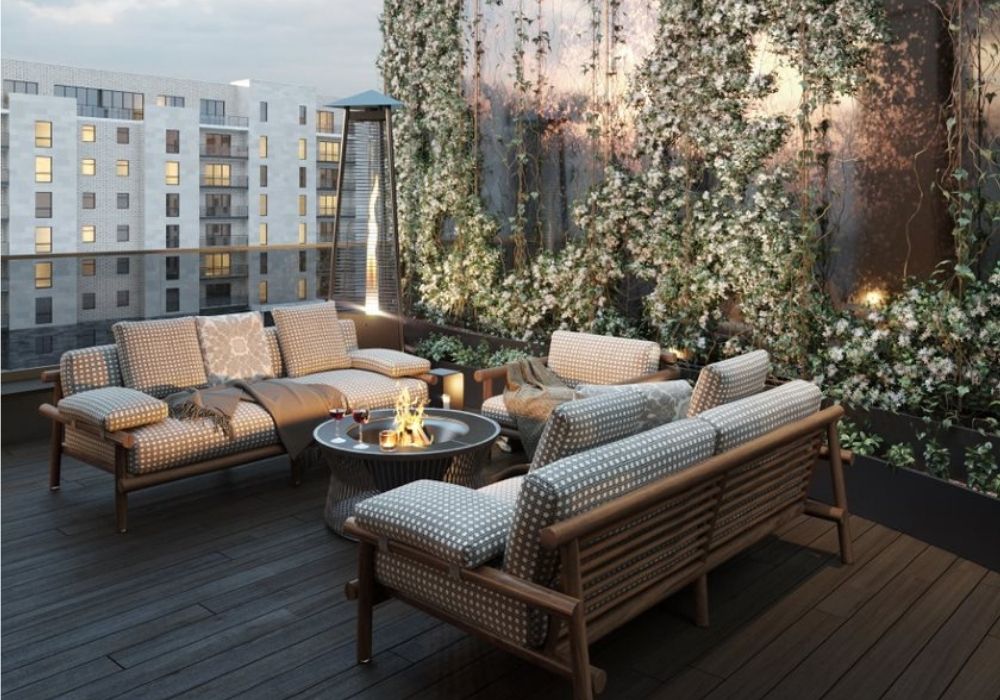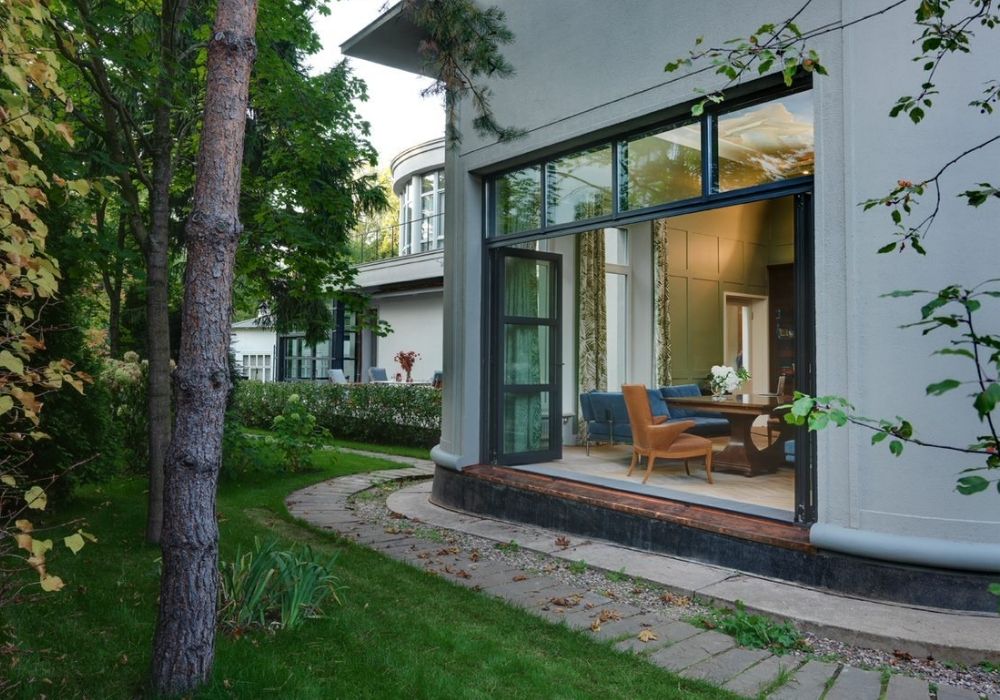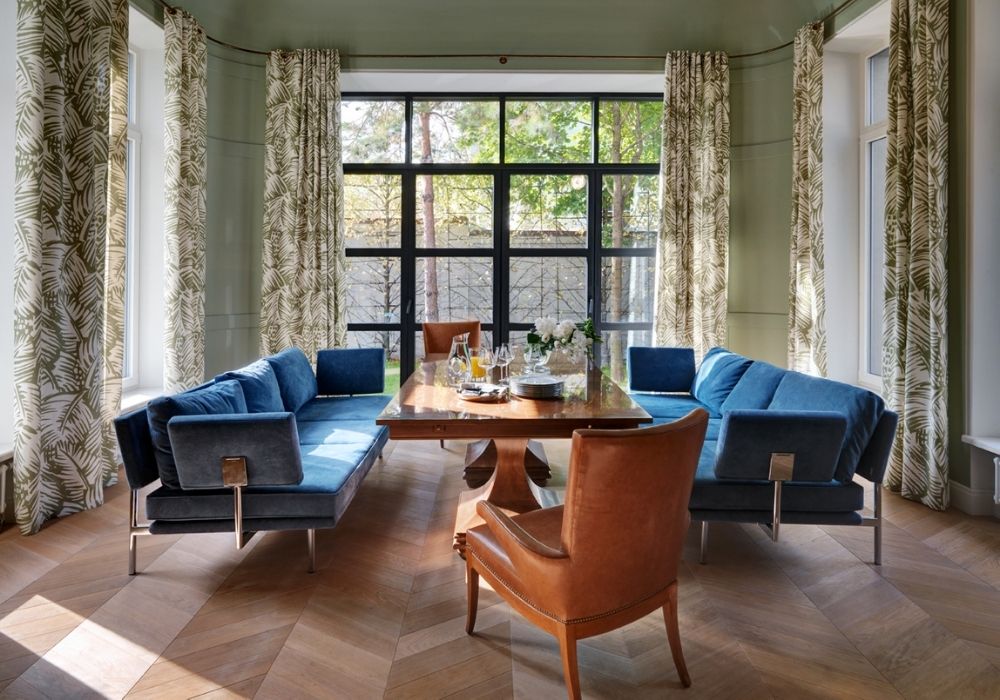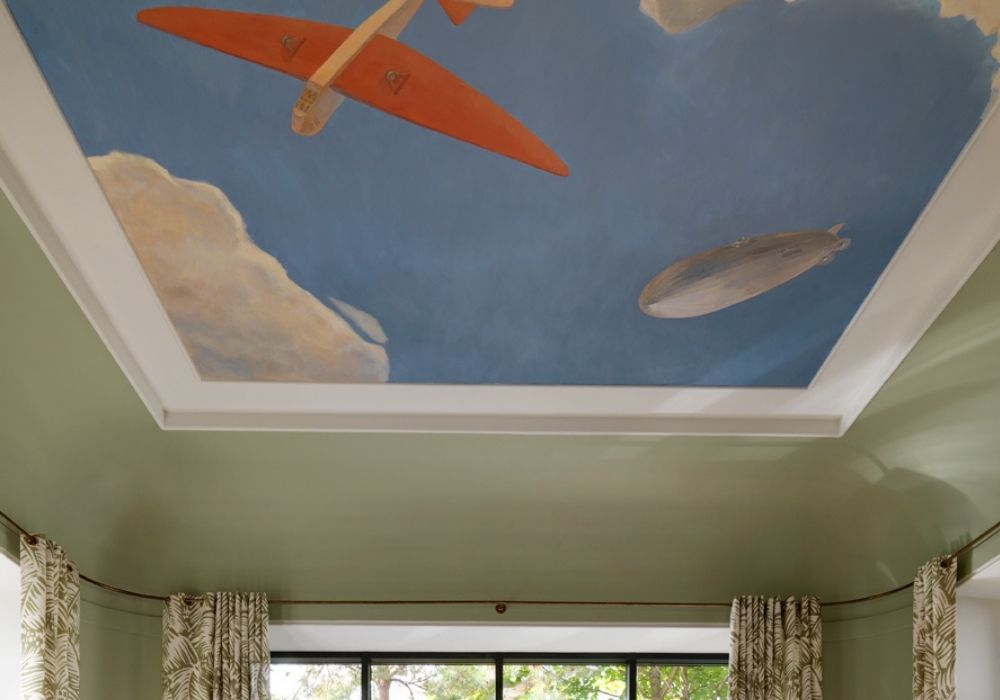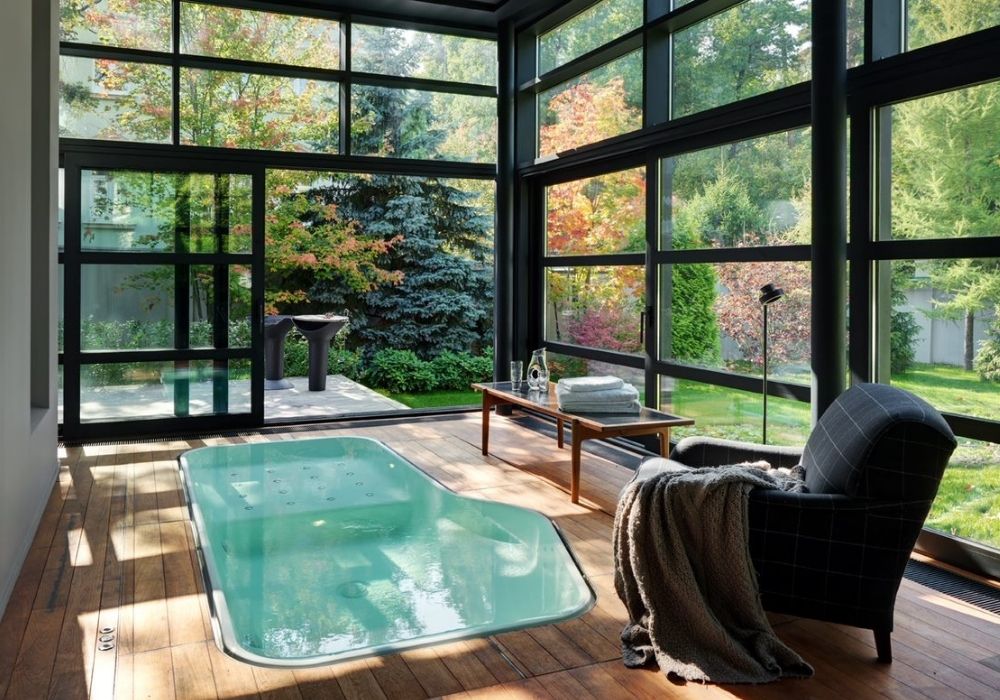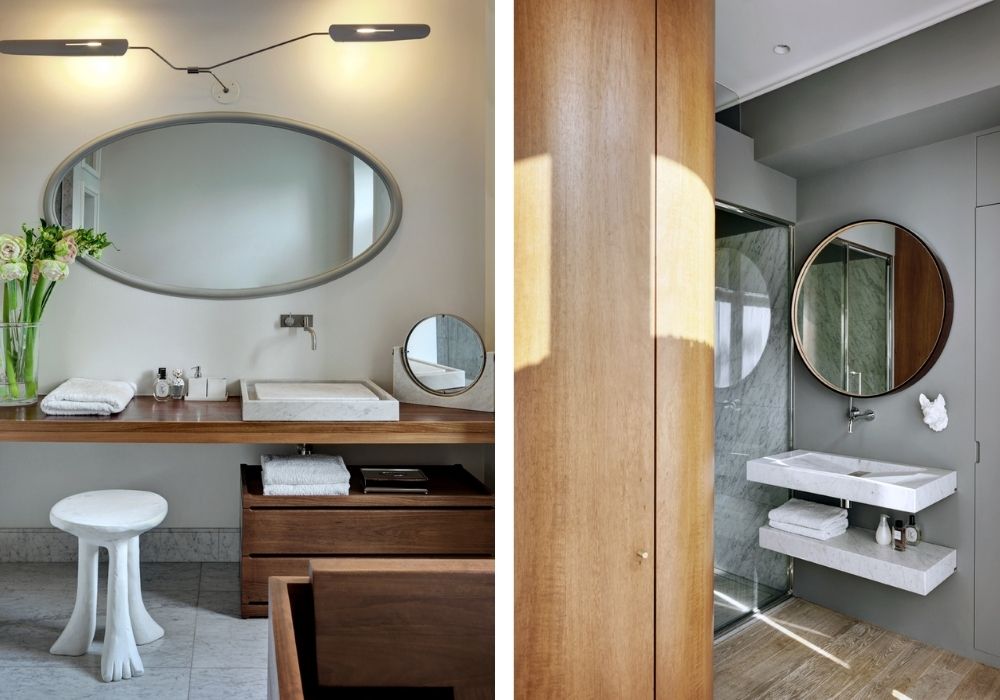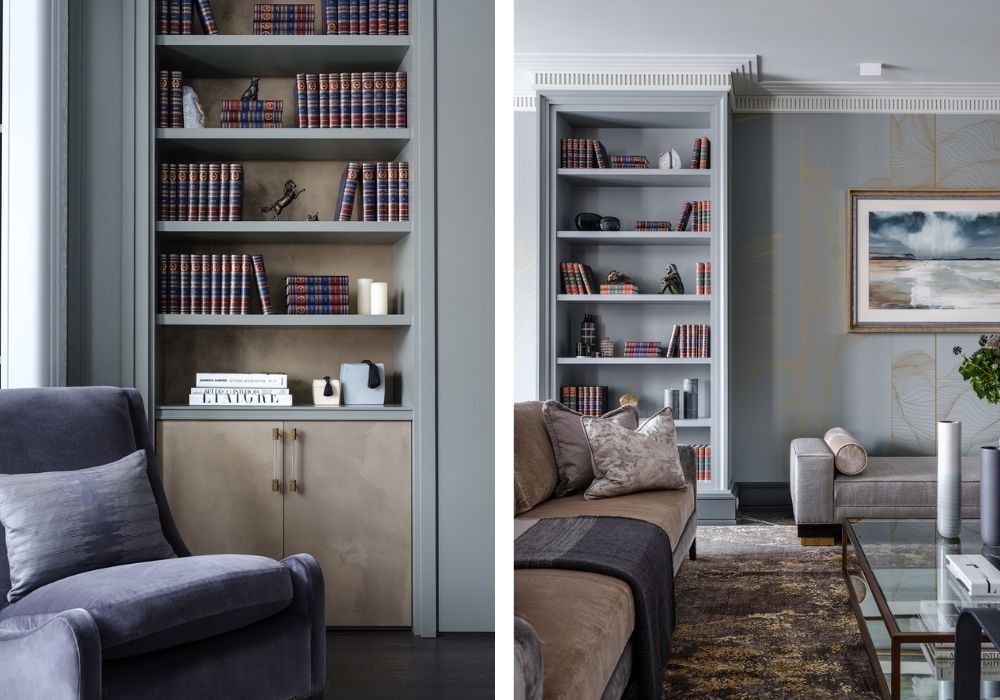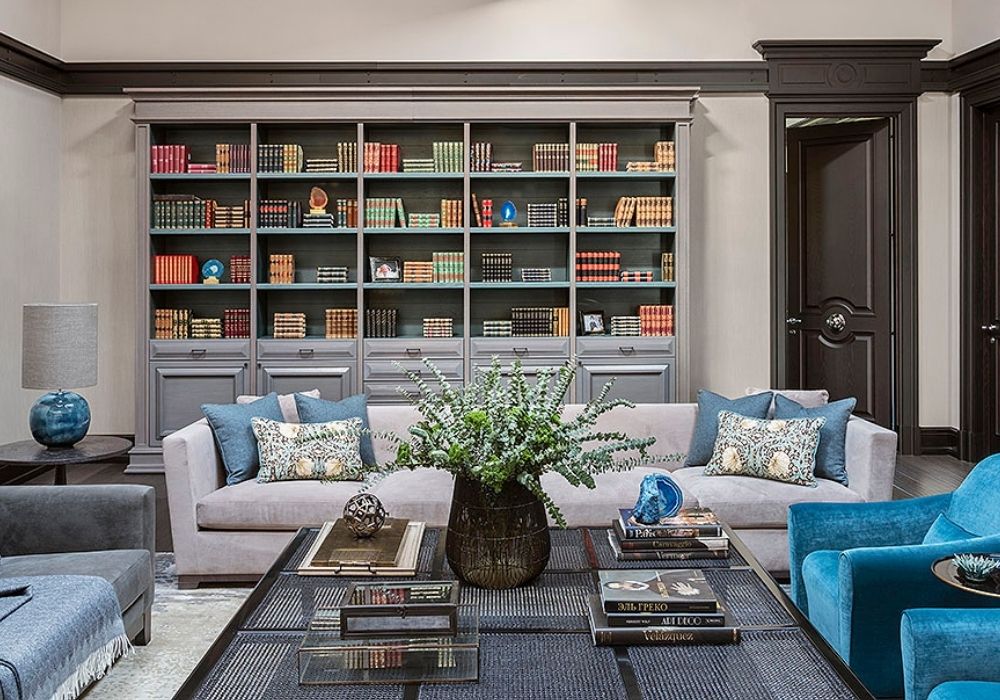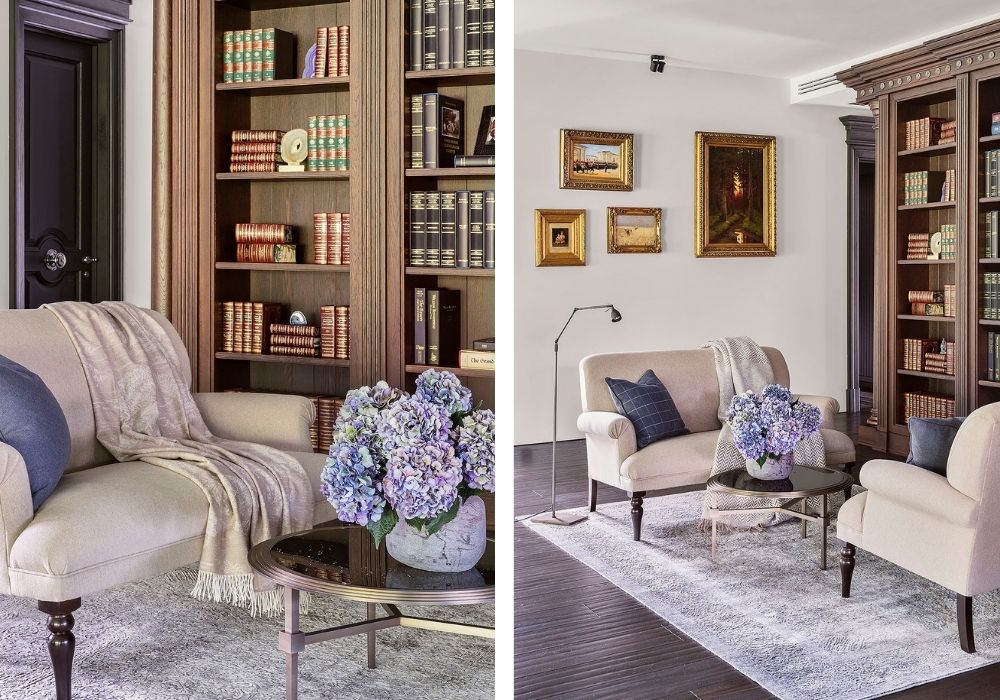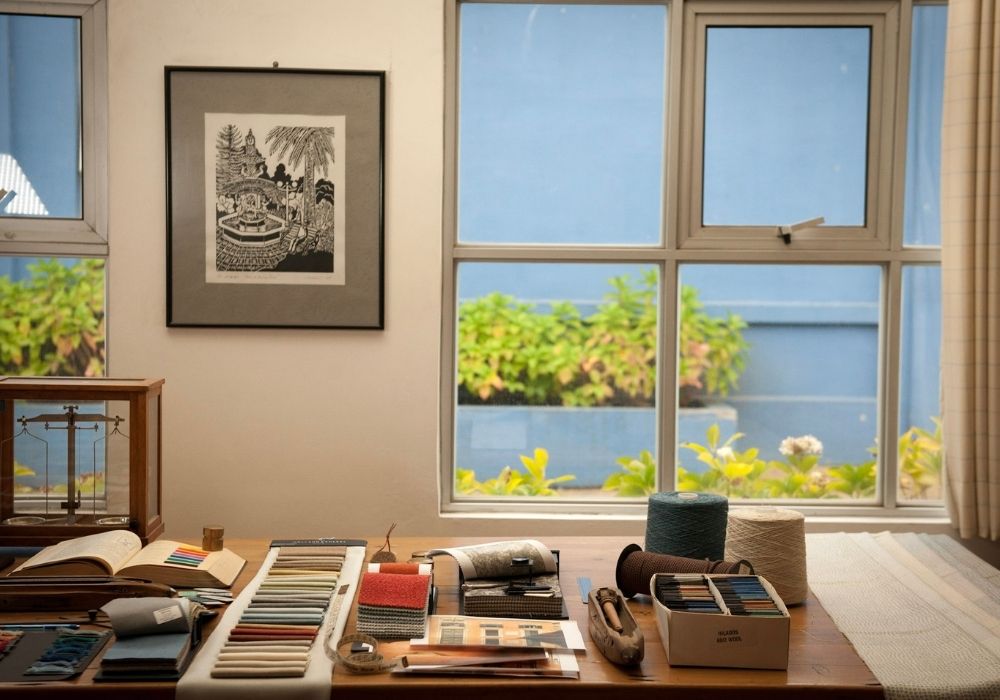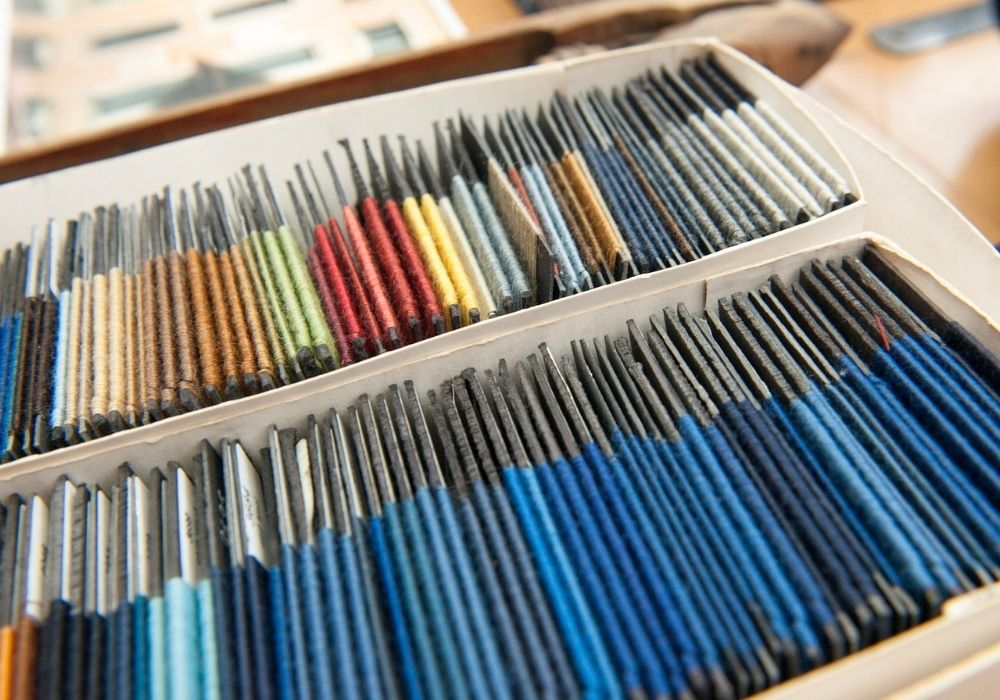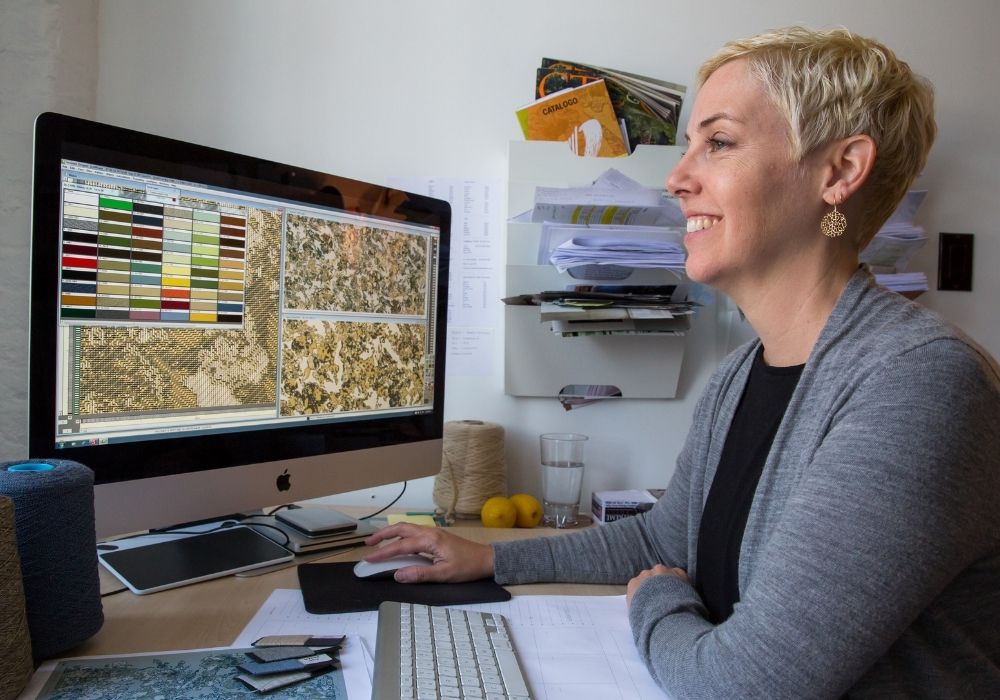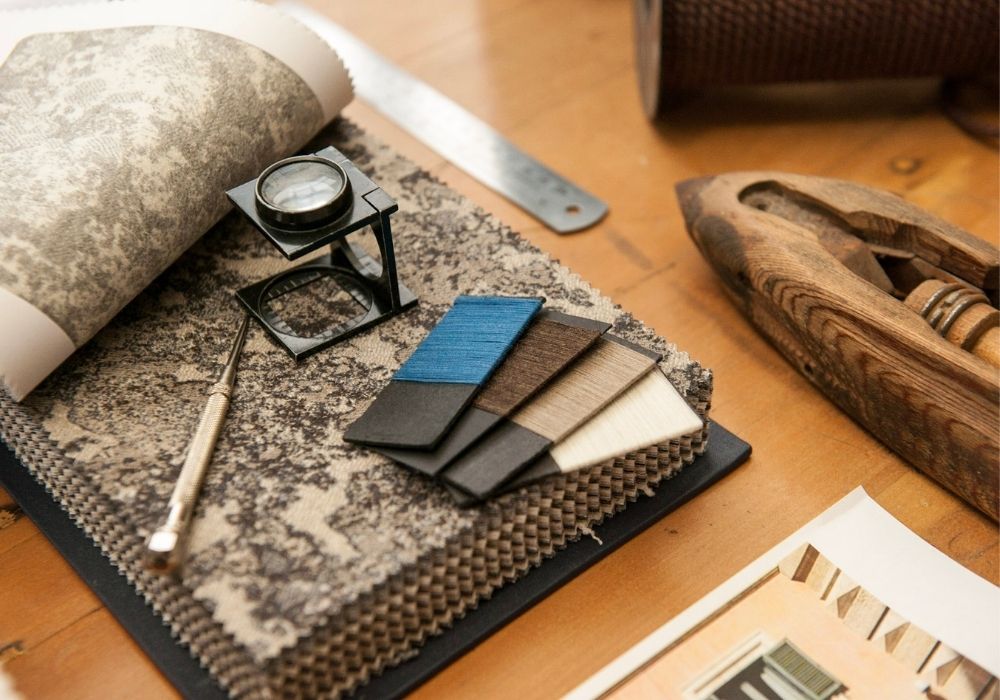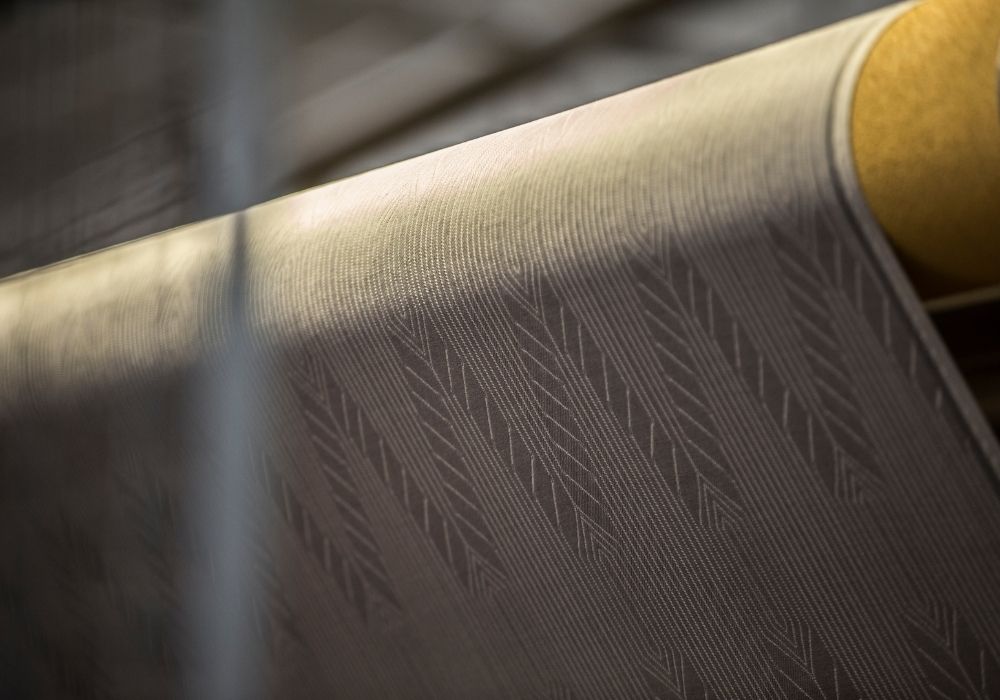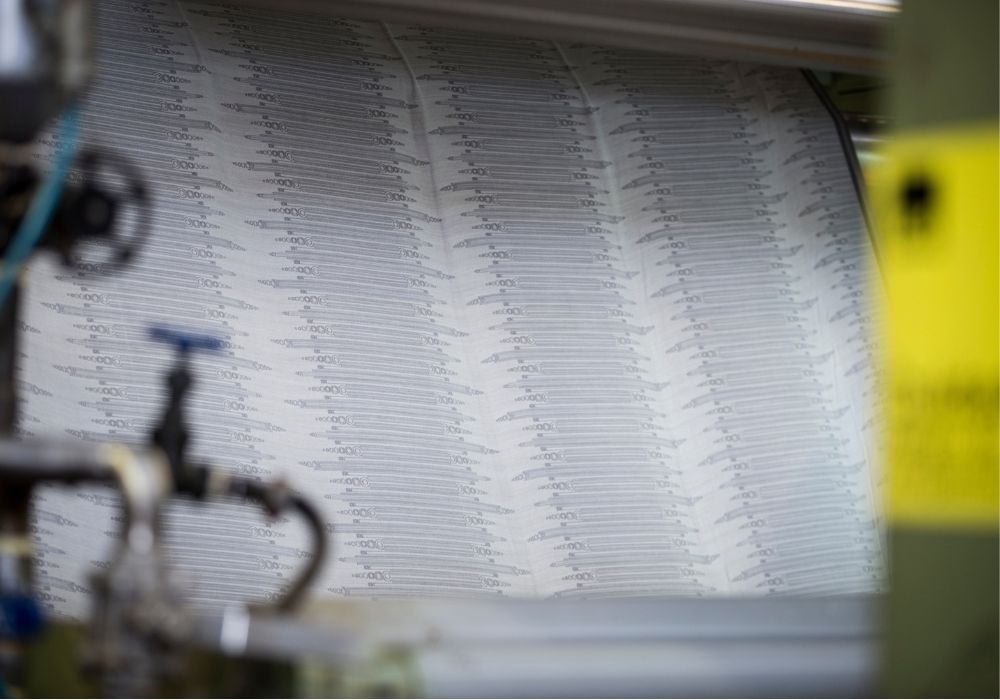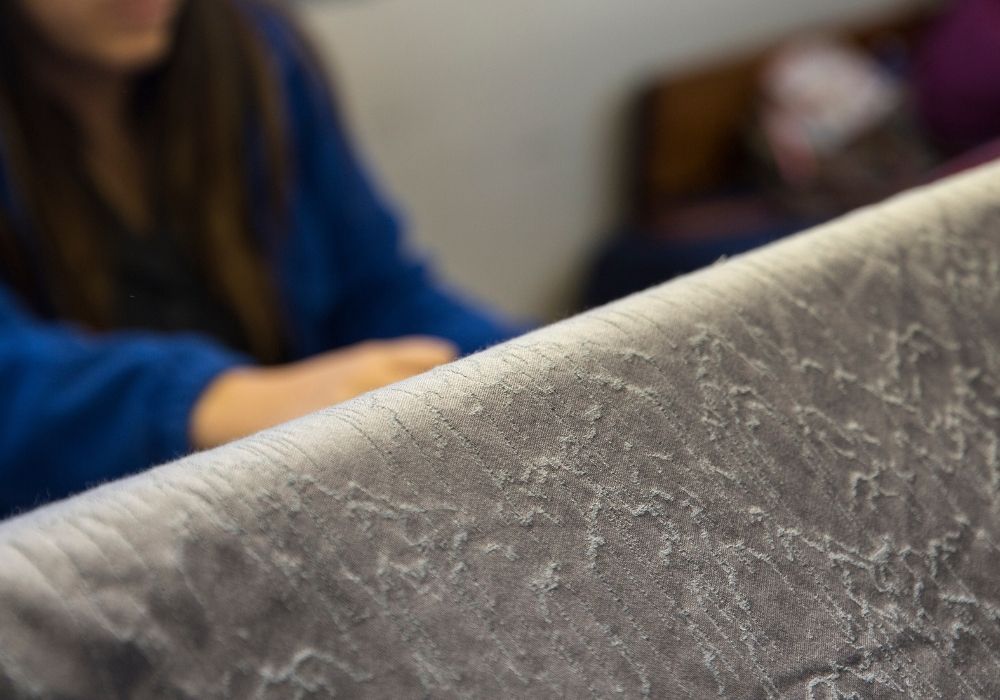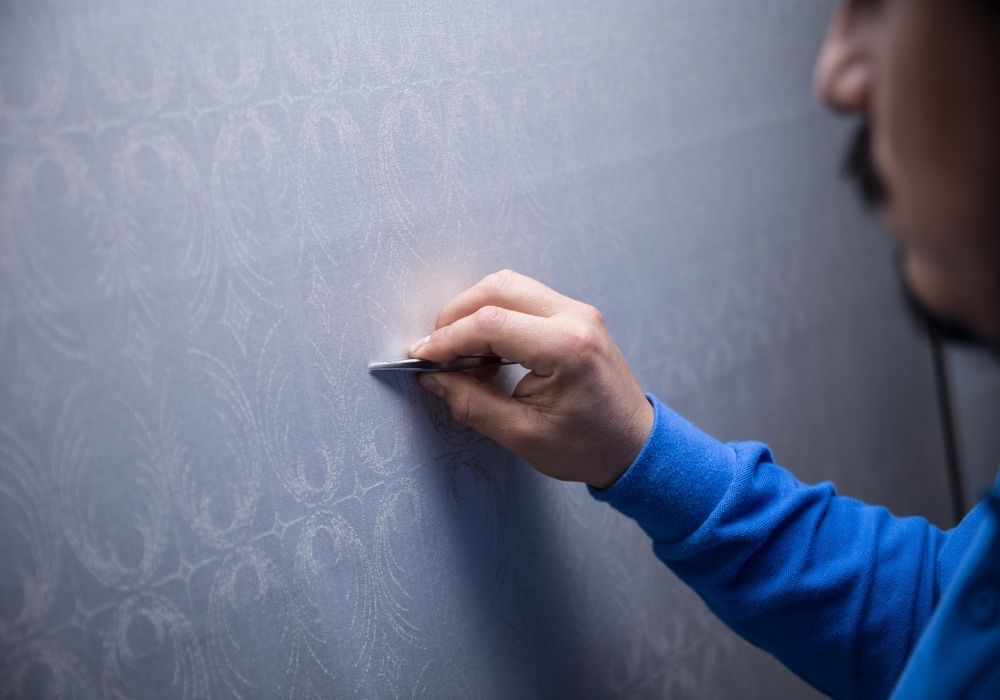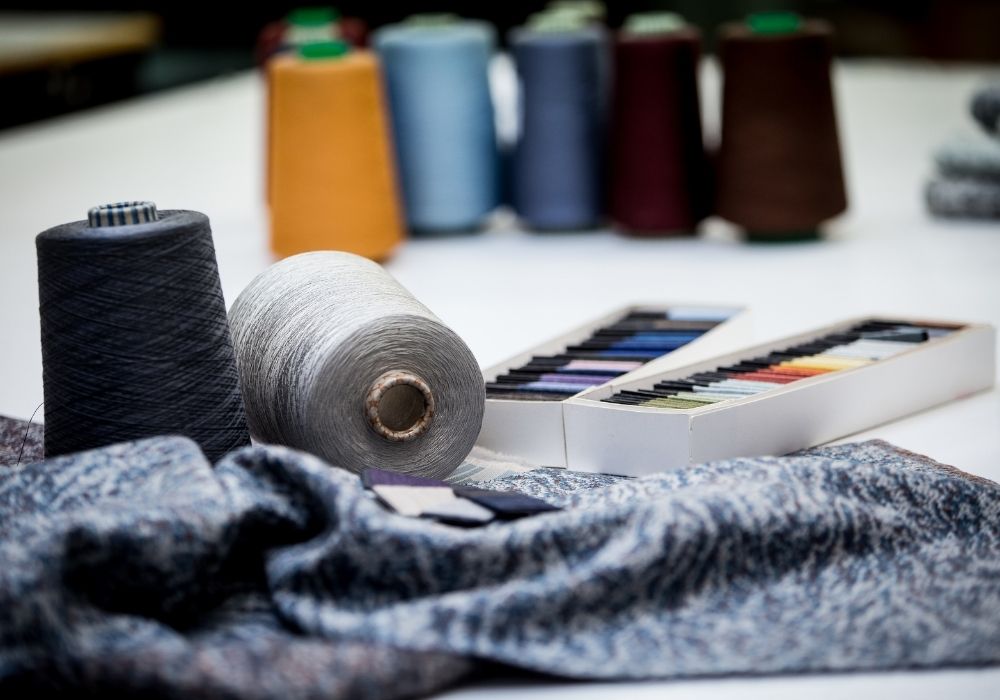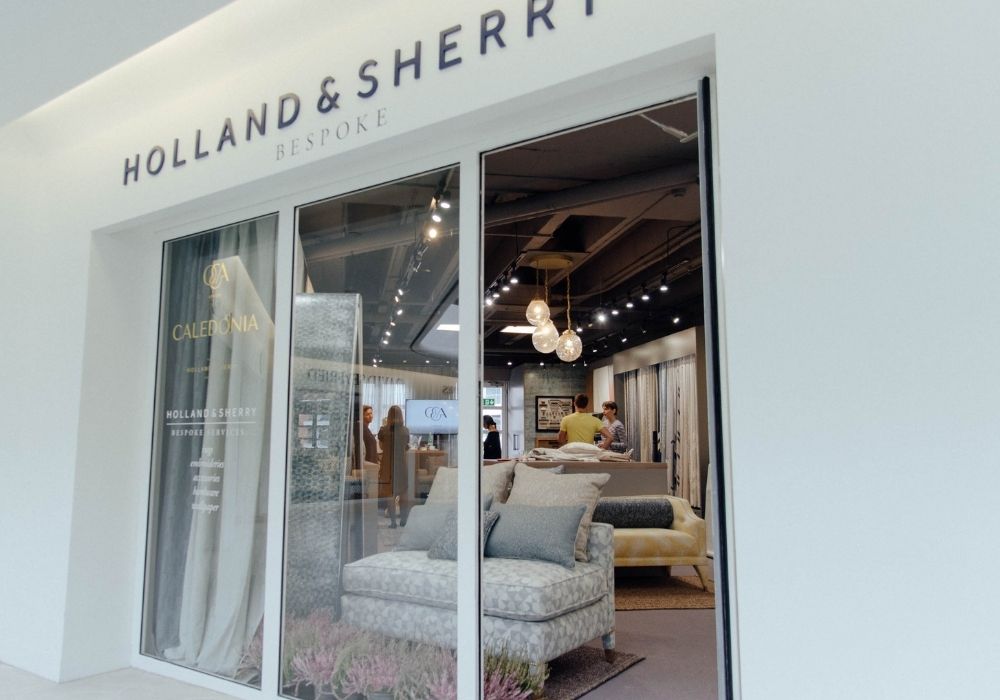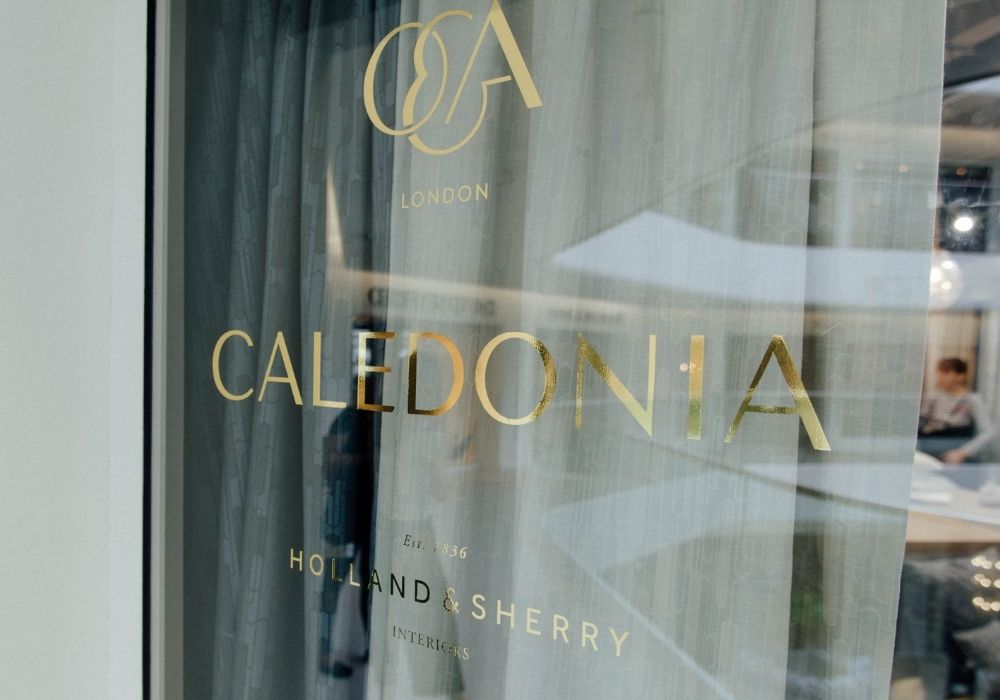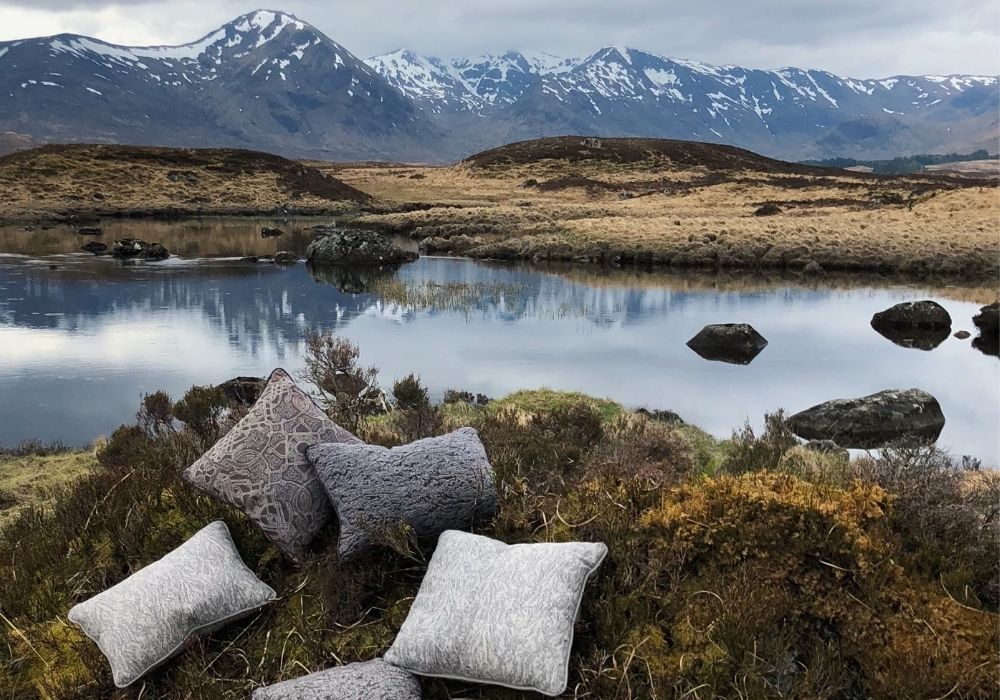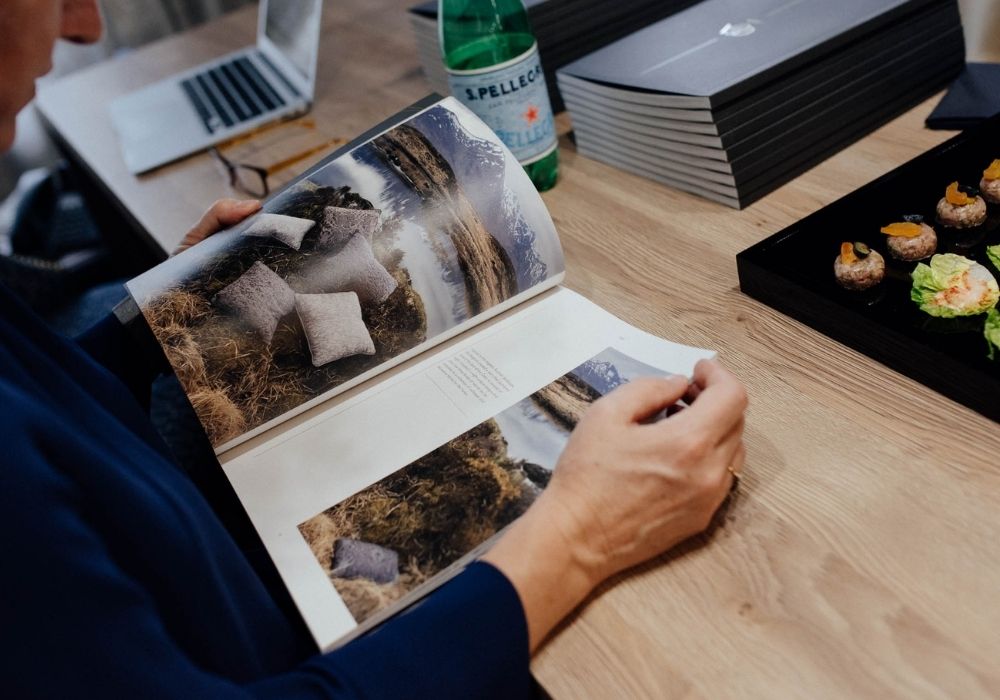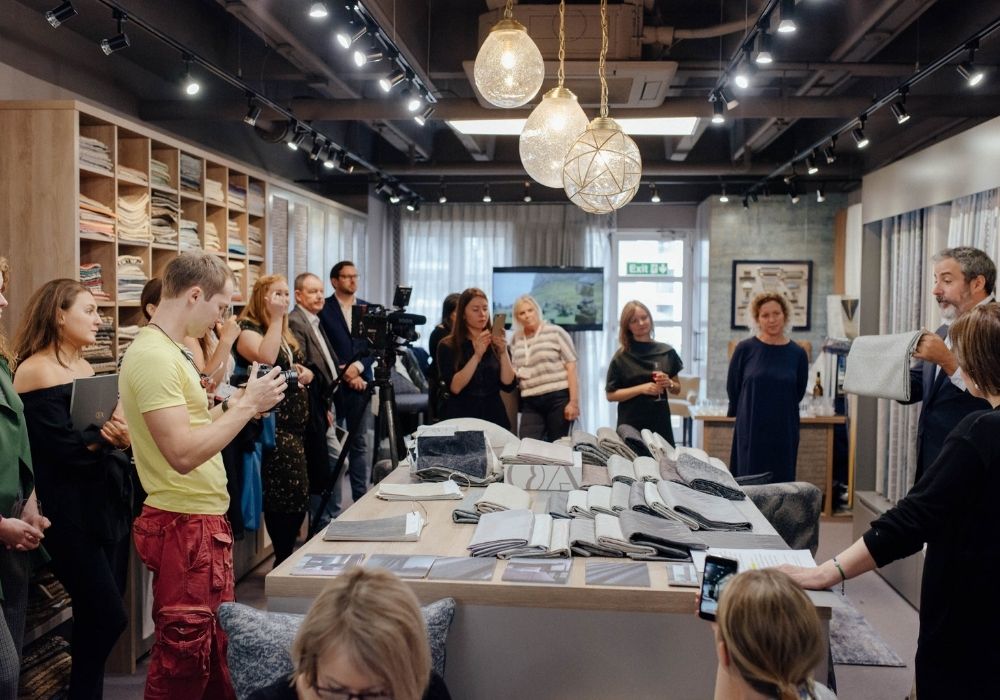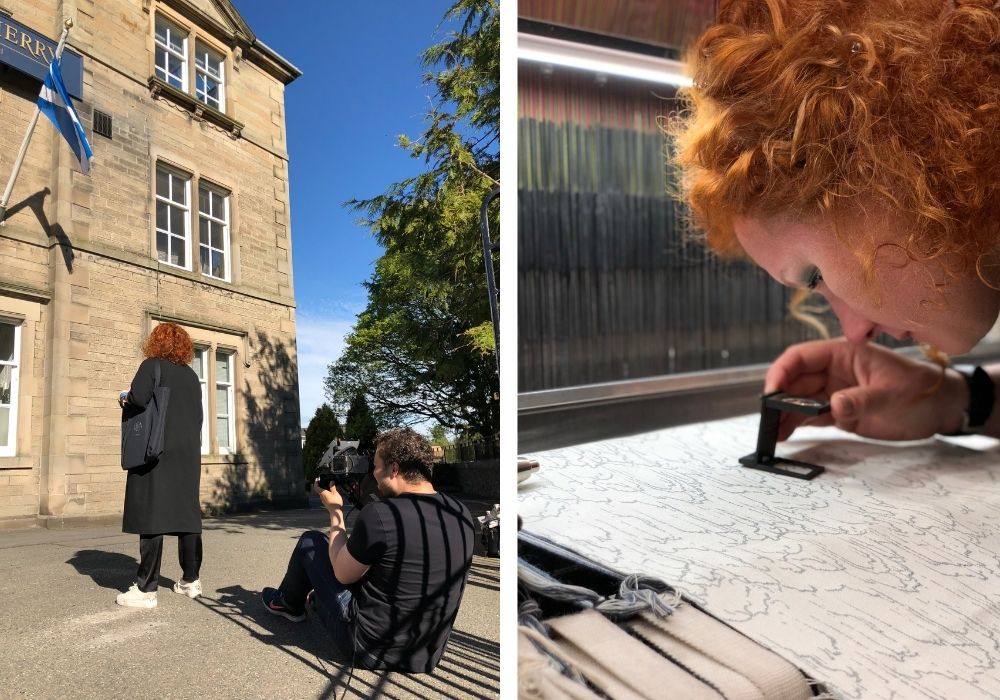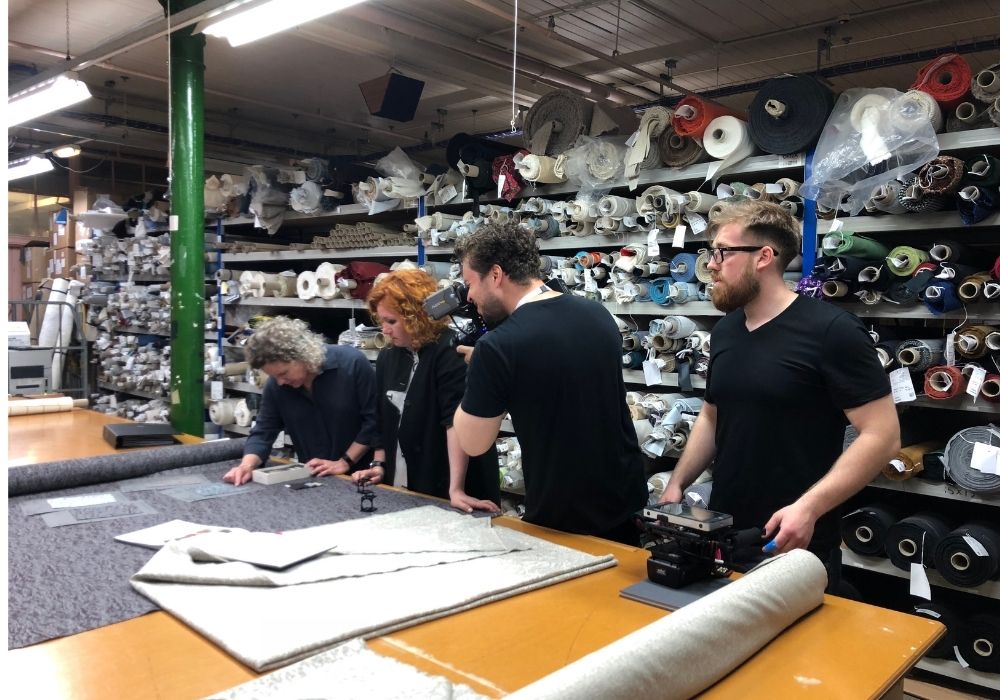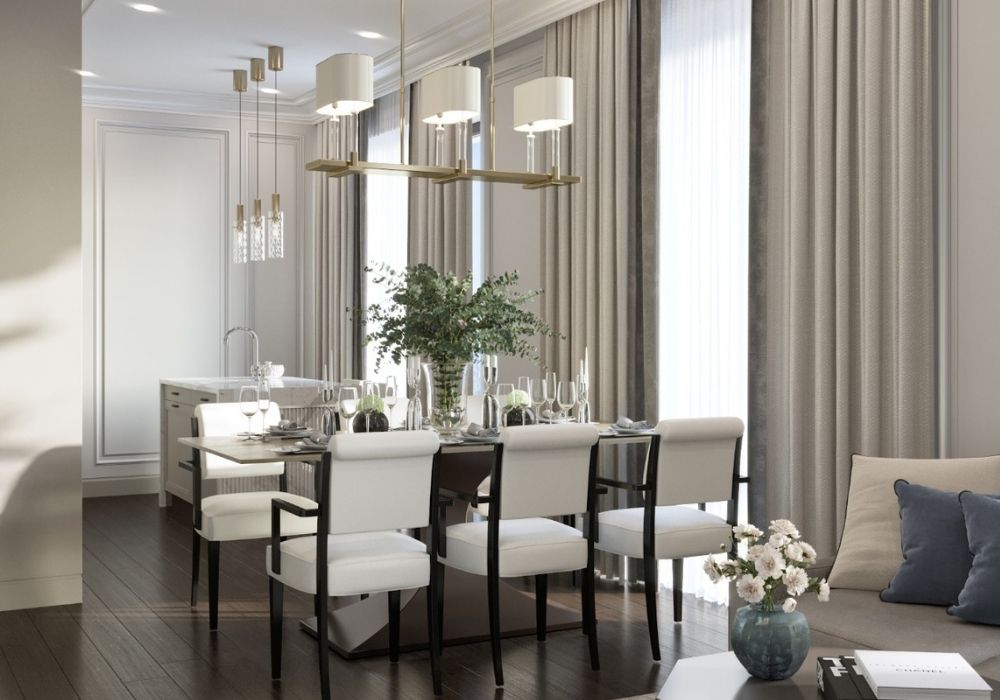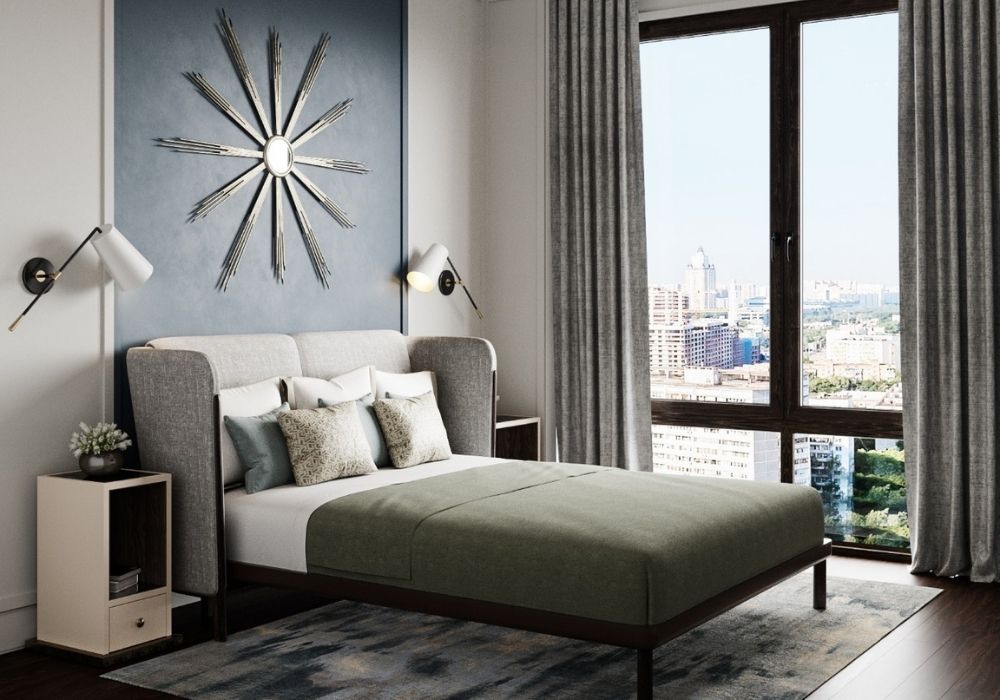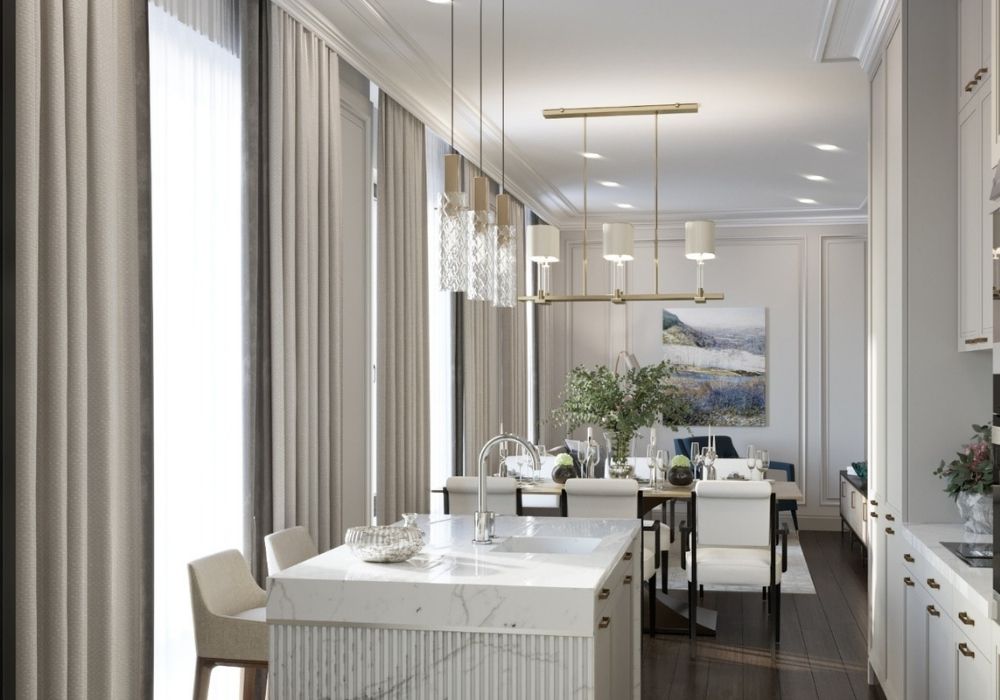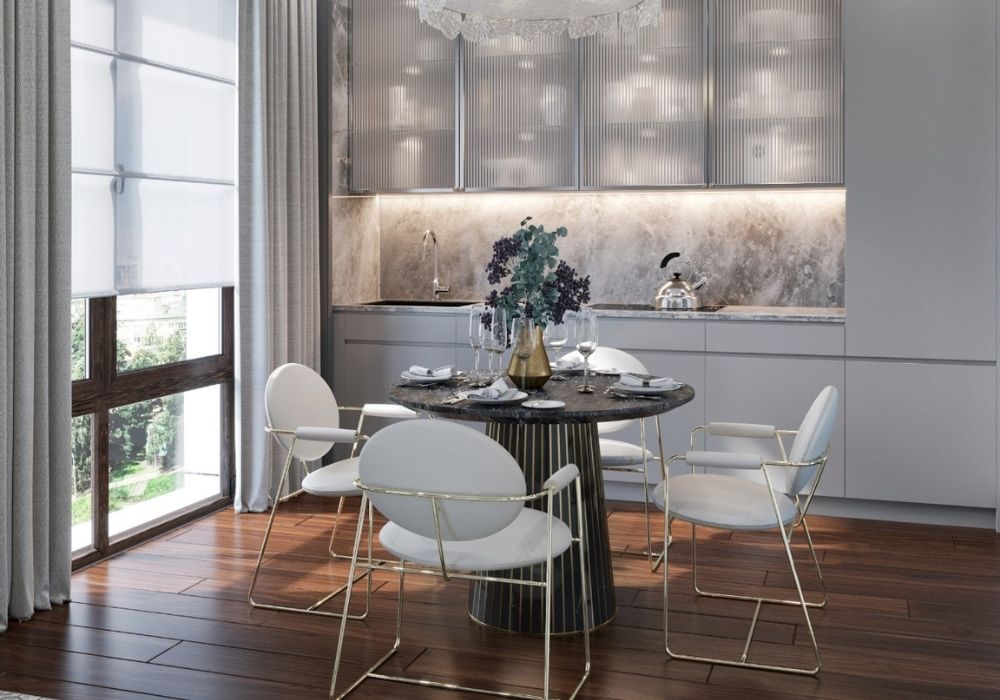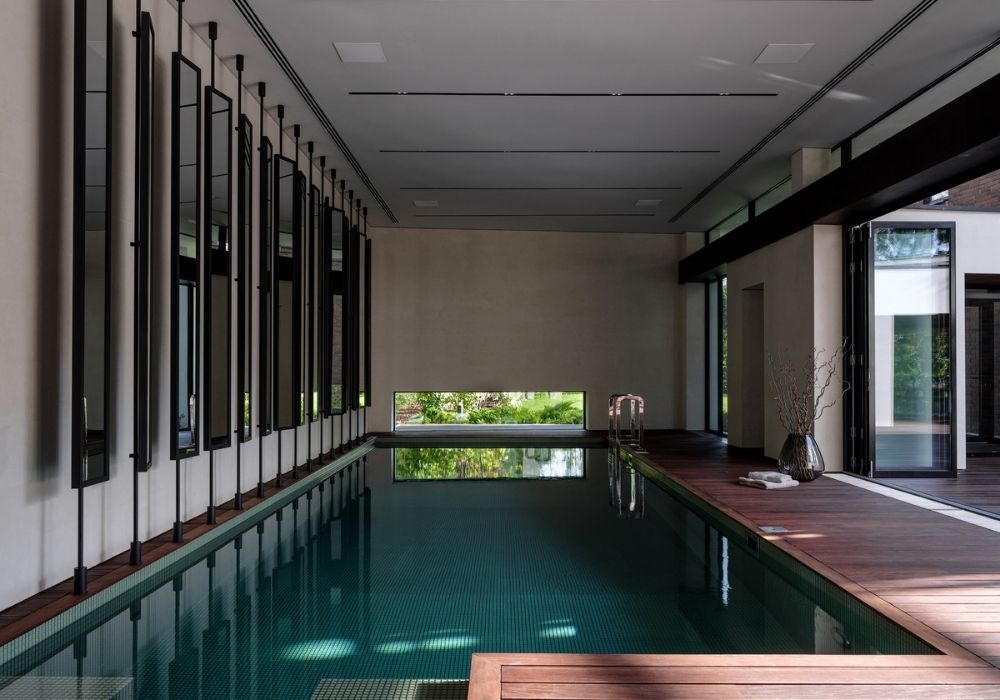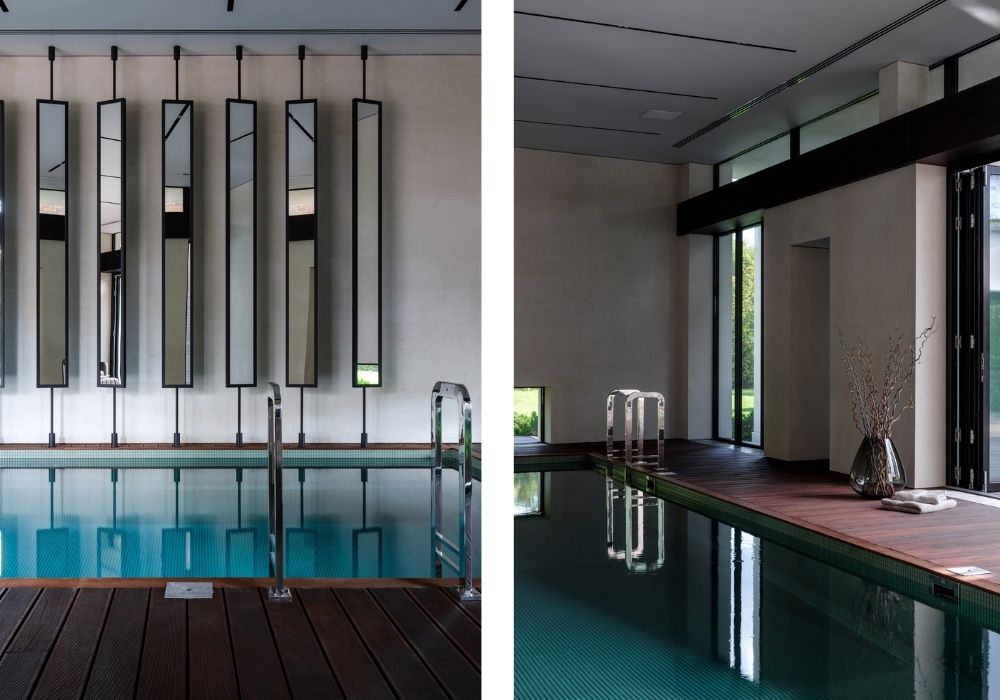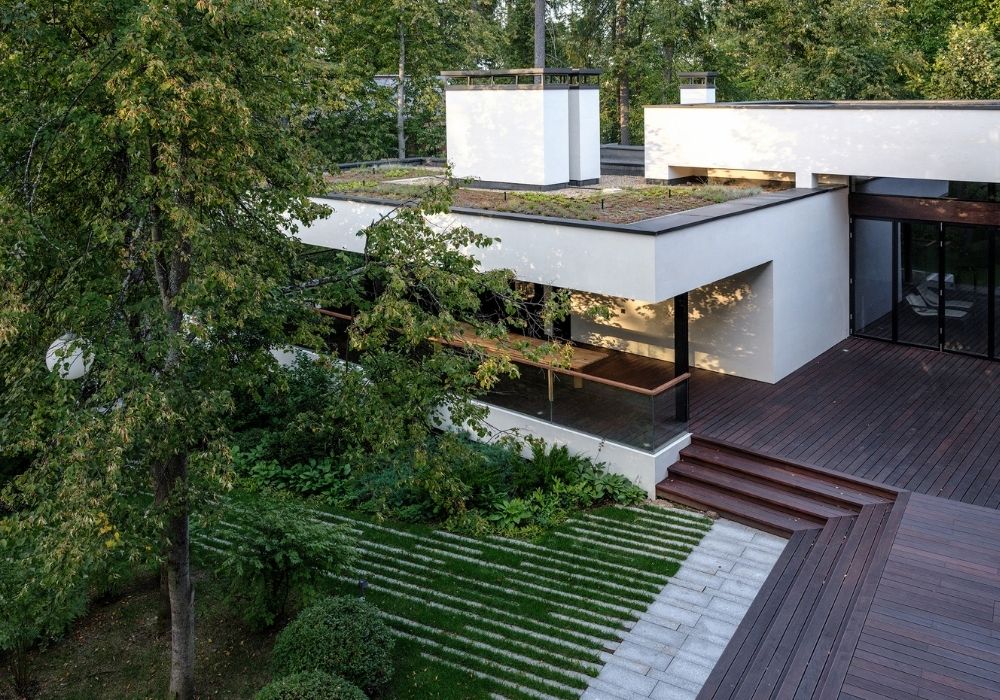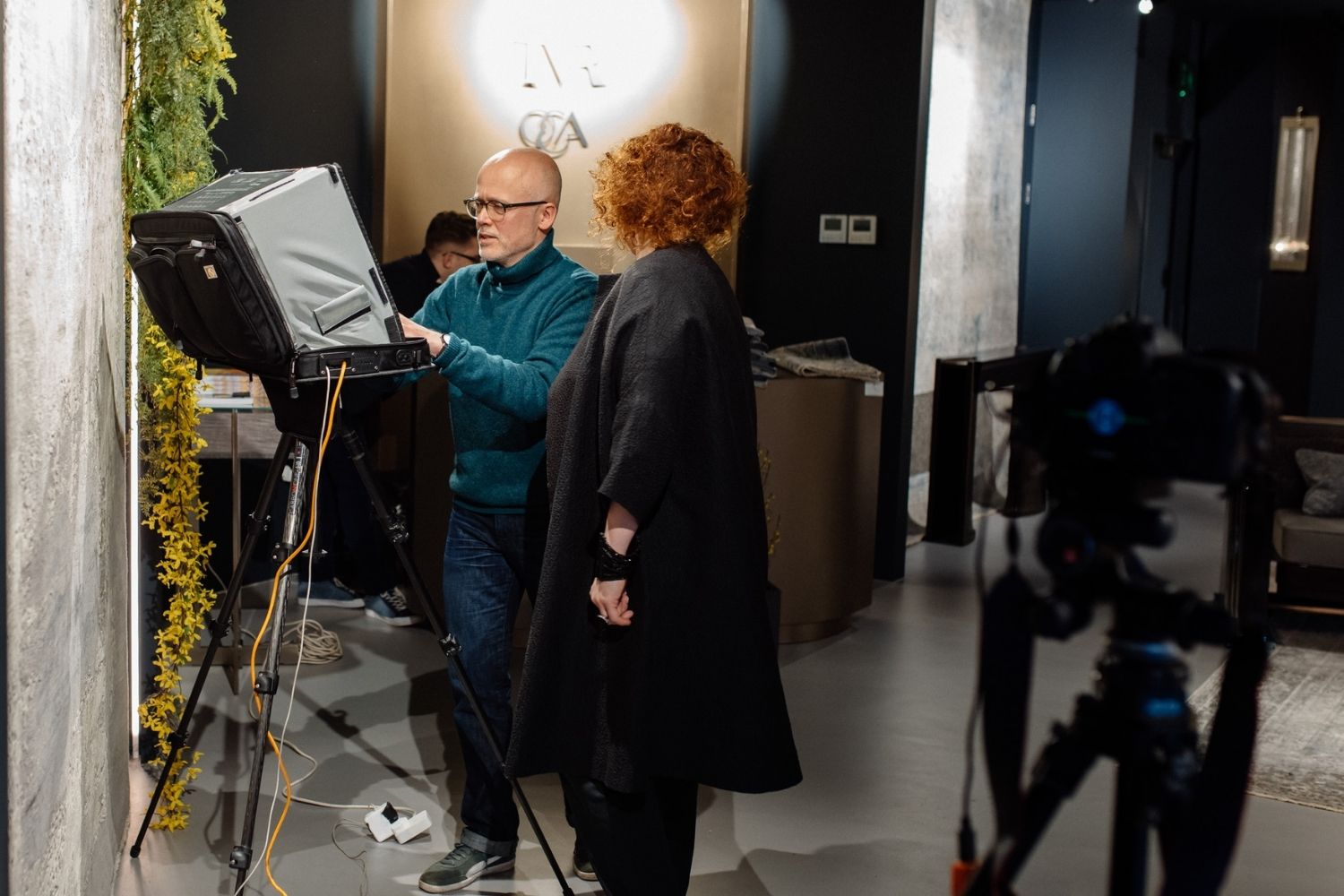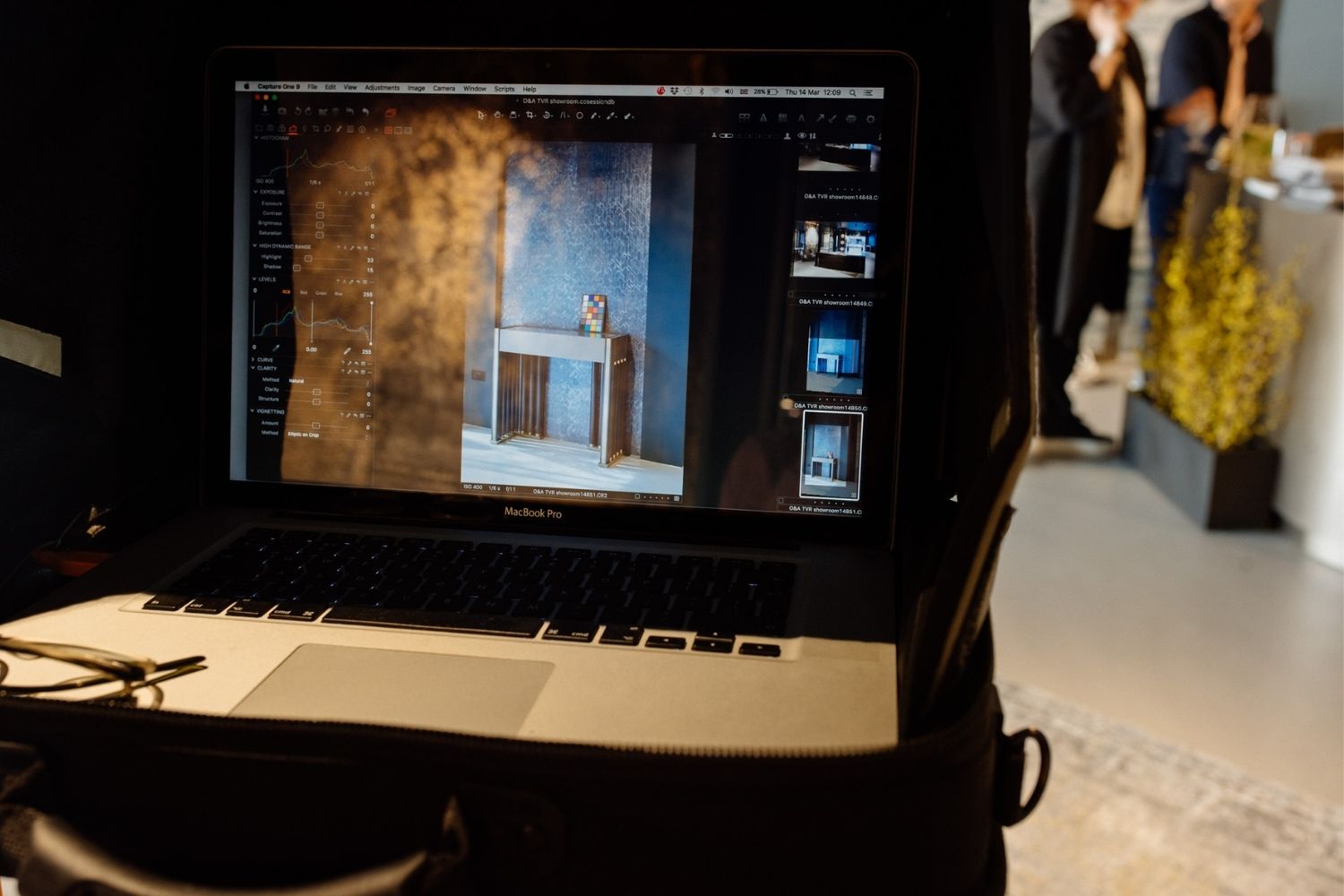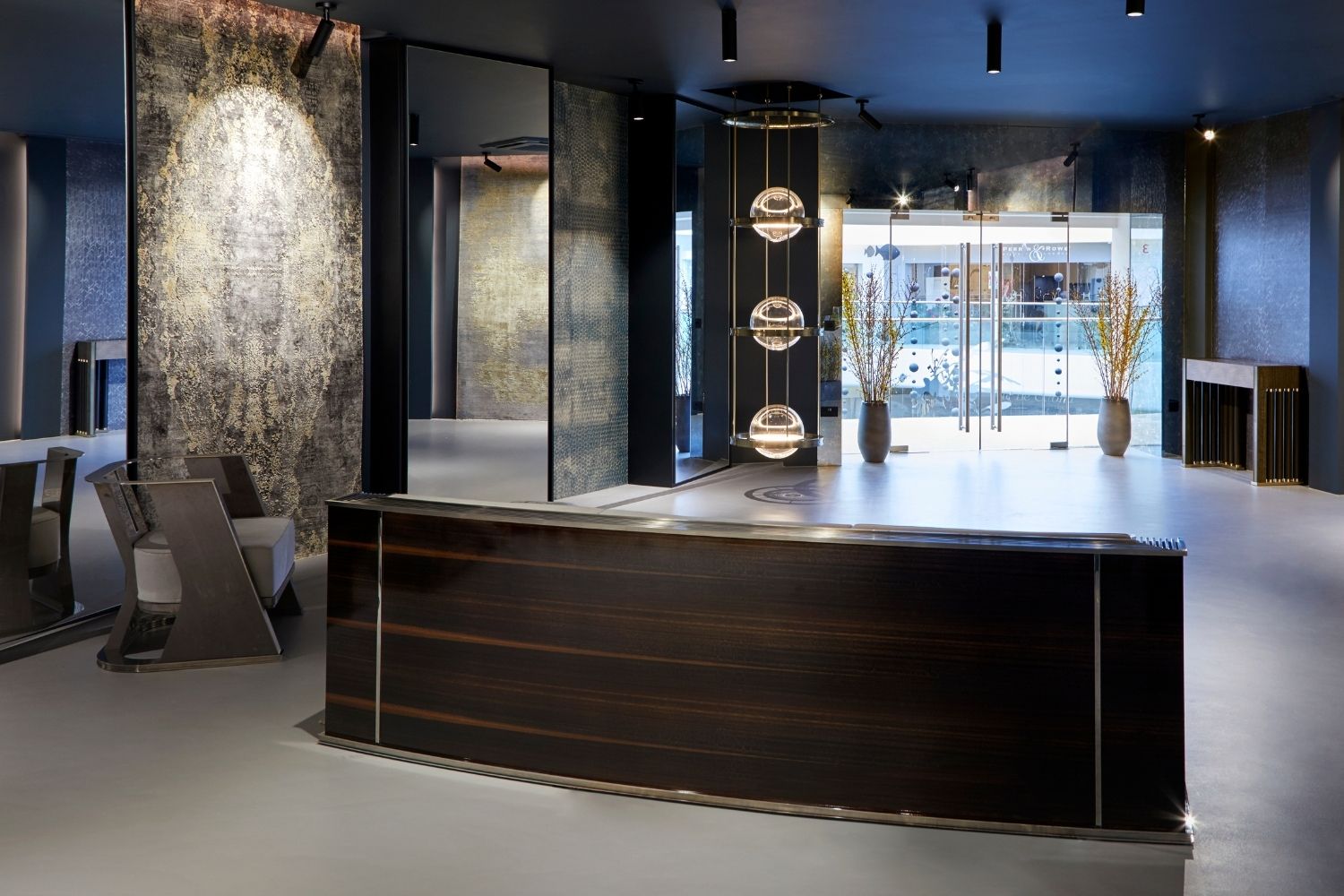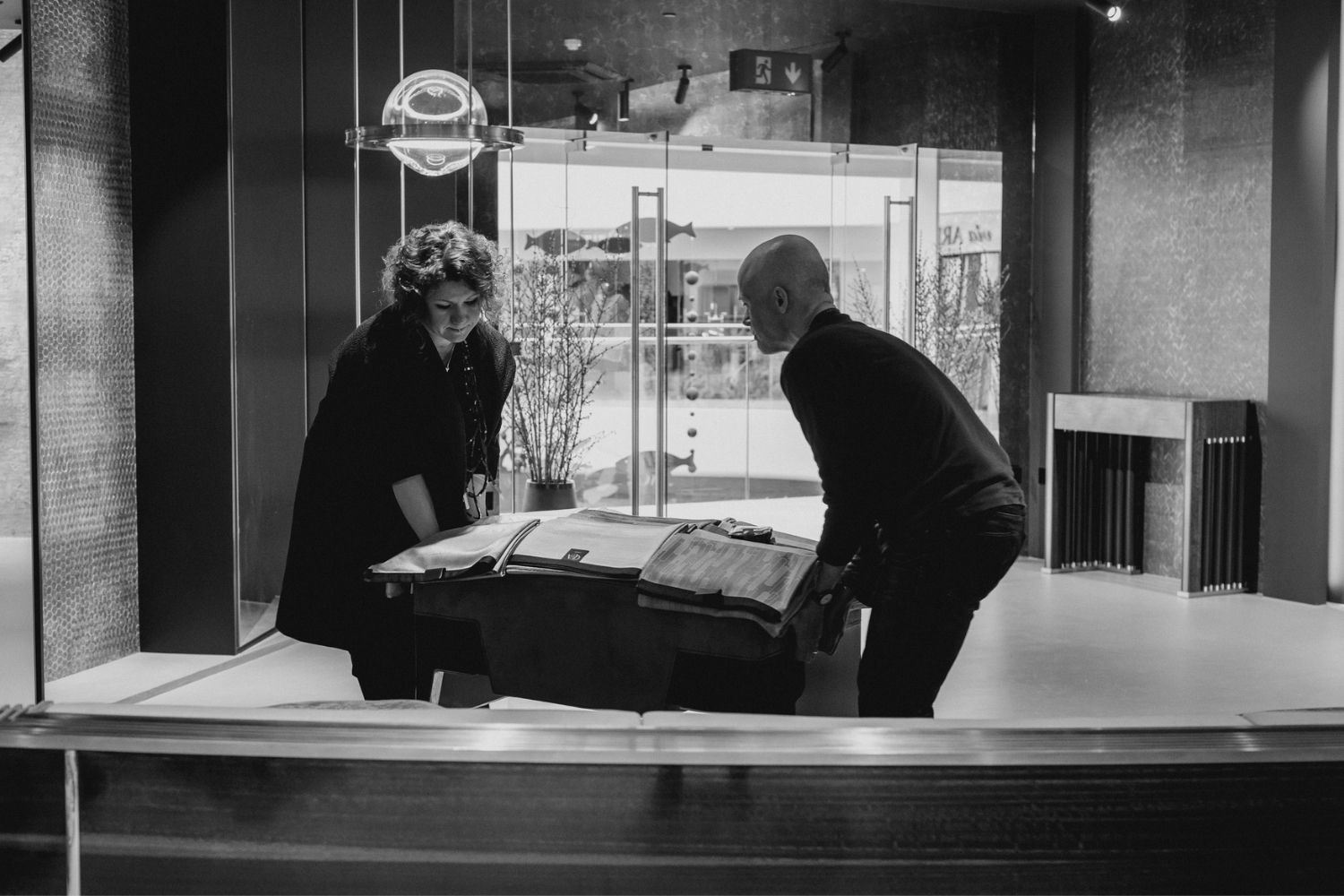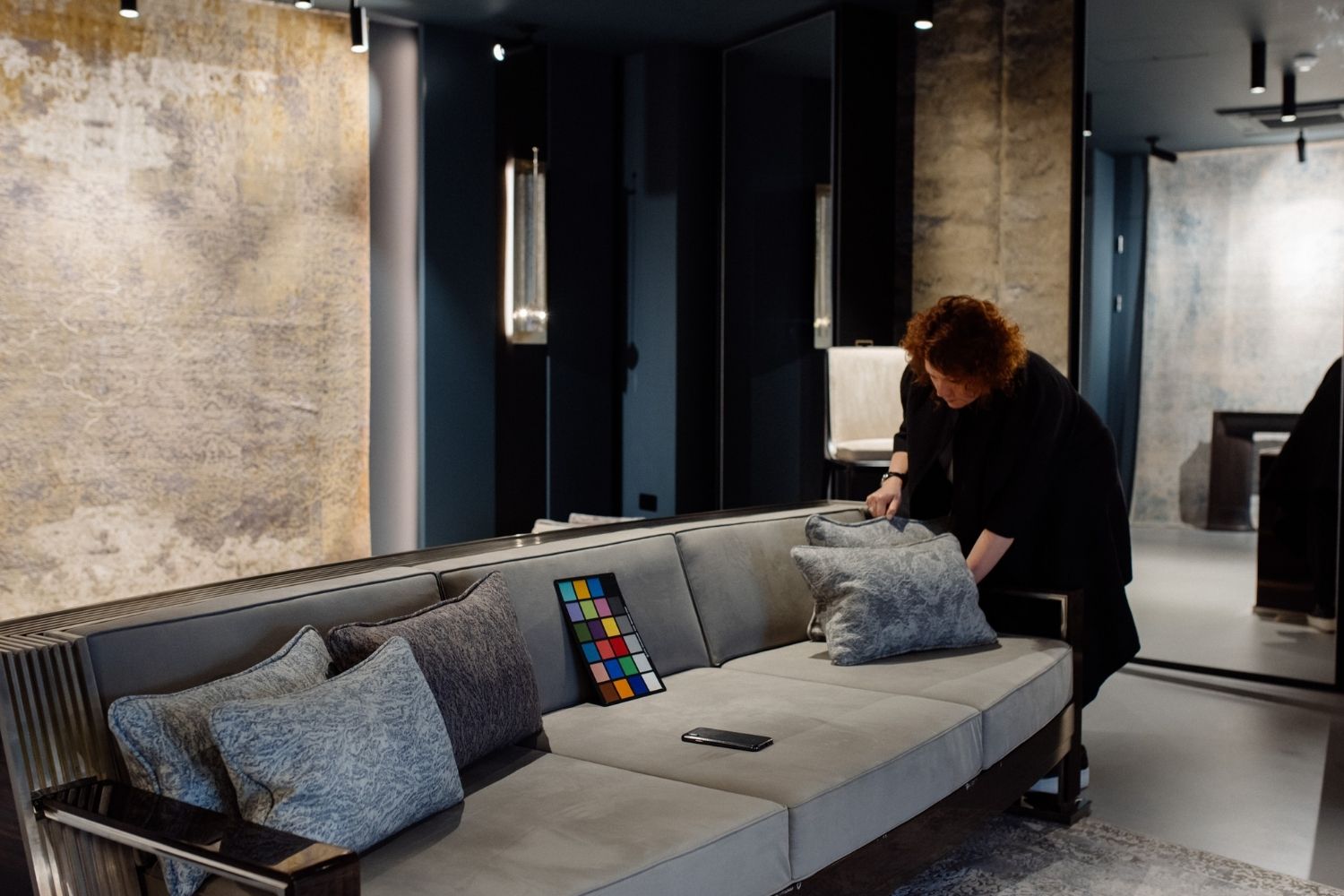With our world becoming increasingly digital, some of the most compelling objects to be found at Artefact fair are those that look obviously hand-made, from dripping glazes to uneven textiles, possessing a tactility that we cannot enjoy in the same way looking at them on a screen.
This June the artistic director of O&A London, Anna Agapova, couldn’t miss the chance to visit Artefact – a contemporary craft fair launched at the Design Centre, Chelsea Harbour.
Attracting top designers, architects, collectors, art-lovers and style-seekers, this new, physical event has featured an impressive rollcall of contemporary craft and visual arts galleries from the vibrant British craft scene. We are delighted to share our celebration of inspired contemporary craft.
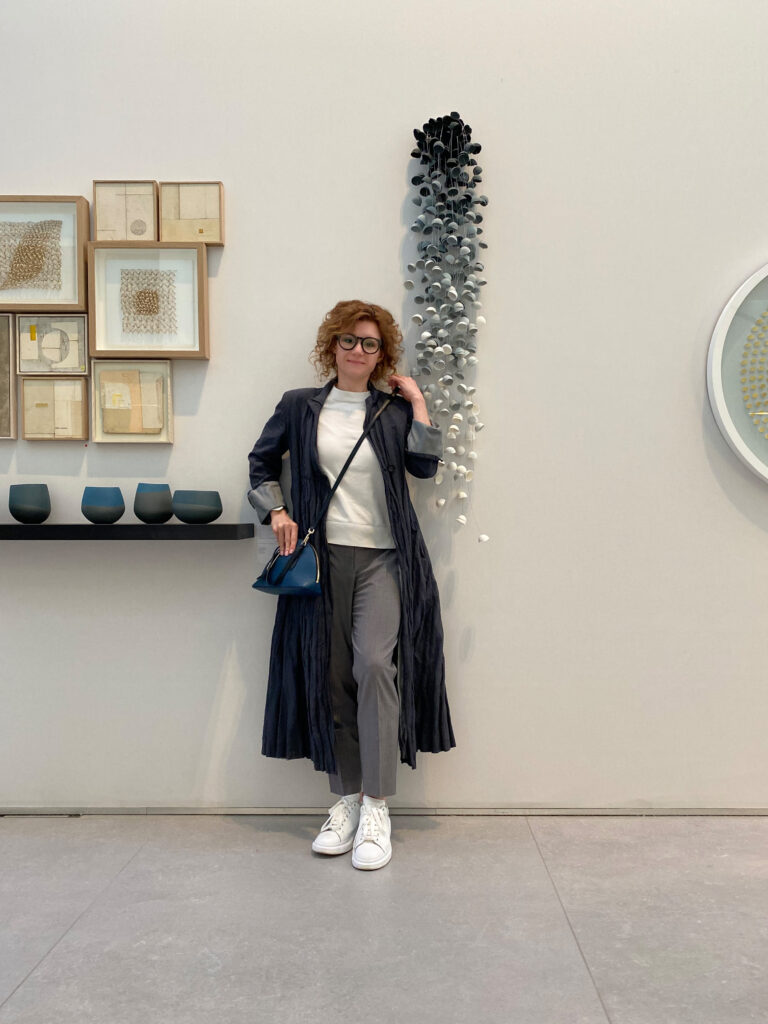
ART OF GLASS
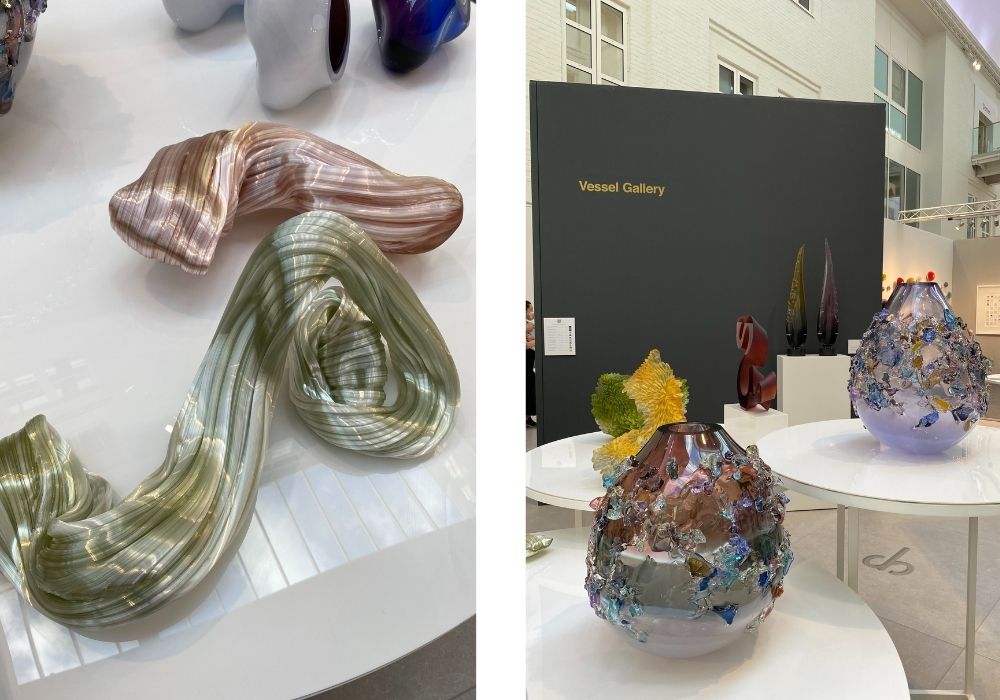
Vessel Gallery represents British and international contemporary studio artists, both emerging and established. They offer three exquisitely curated themed landscapes – Light & Shadows, Mineral Beauty and Explosive Colour – each bursting with a dazzling array of artworks created in glass, ceramics and metal.
ART OF LIGHT
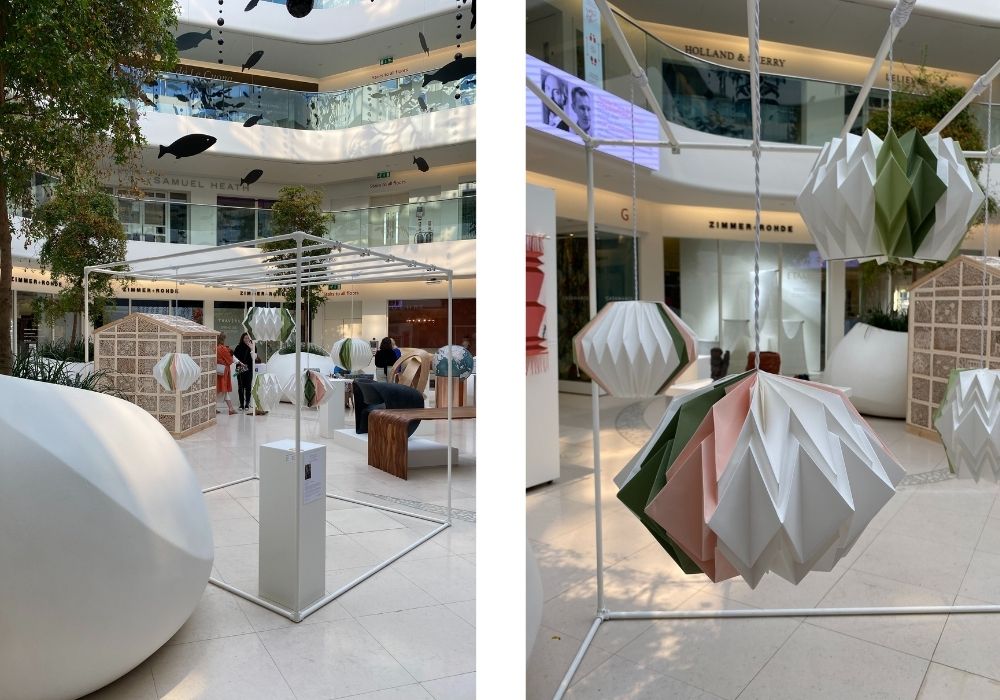
Kate Colin is a designer who works with paper to create handmade lighting, wall art and installations. Inspired by origami and geometric forms, Kate’s bold and sculptural work emphasises the interplay between light and shade.
Each piece is scored, folded and assembled by hand and when illuminated, their appearance is radically transformed: folds, creases and angles become emphasised while an intensity of colour is brilliantly revealed.
PURE NATURE

Jaggedart Gallery is renowned for its unique and very defined style, showcasing beautiful, intricate and sophisticated works of art. The gallery focuses on three-dimensional works made from ceramic, grasses, wood, paper, books, maps or textiles, all used in innovative ways.
The Installation “Wildflowers” by Valeria Nascimento ismade from hundreds of hand-formed ceramic shapes which are subsequently combined into a wall-spanning artwork.
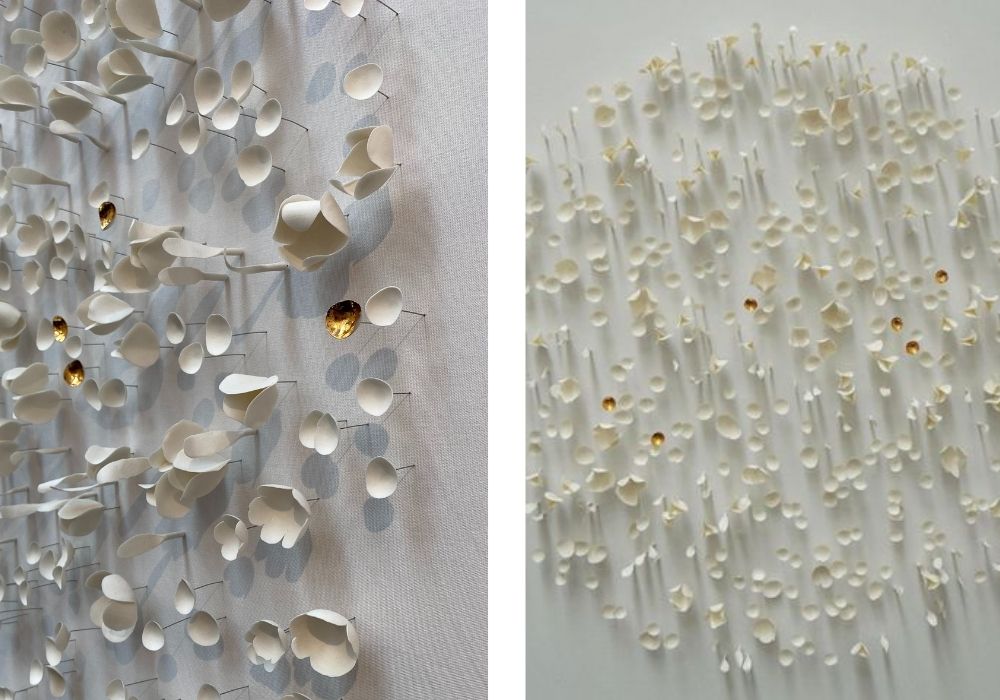
Modern materials are also on show, such as Klari Reis’ colourful installations, at Cynthia Corbett Gallery, which are made from epoxy polymer resin. Each piece is pigmented with powders, oils, acrylics and industrial dyes, built up through many layers of the ultra-glossy plastic.
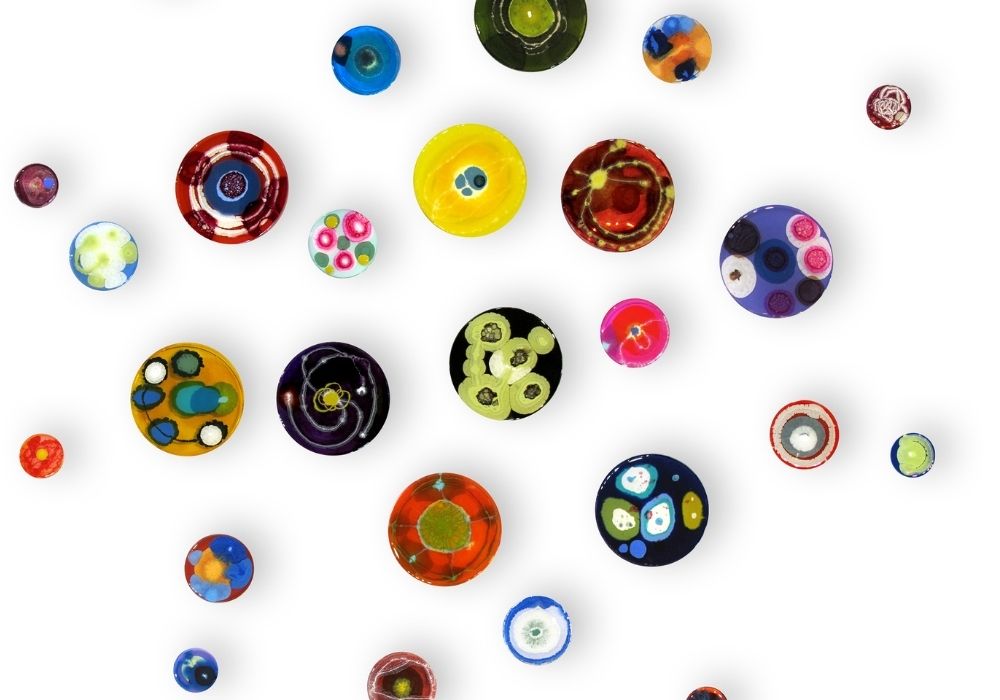
Works by LOEWE Foundation Craft Prize finalists, including the curvaceous, wave-like ceramic forms of Takayuki Sakiyama, evoke the power of the sea. The world’s oceans also provide inspiration for Helen O’Shea, an artist who turns plastic washed up on beaches into ethereal, sea creature-like forms covered in delicate scales.
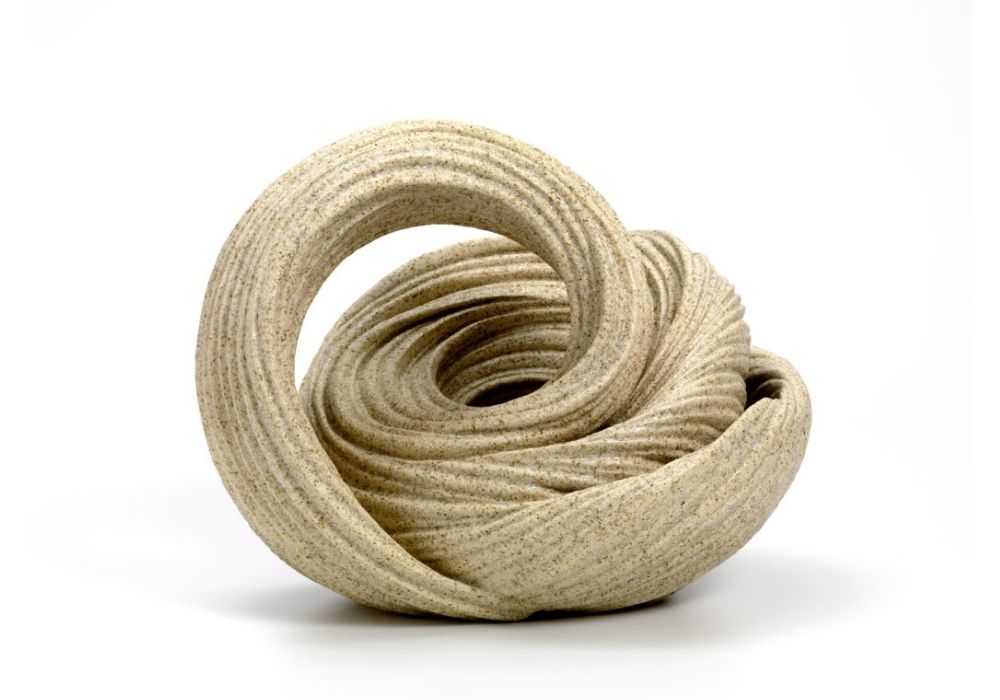
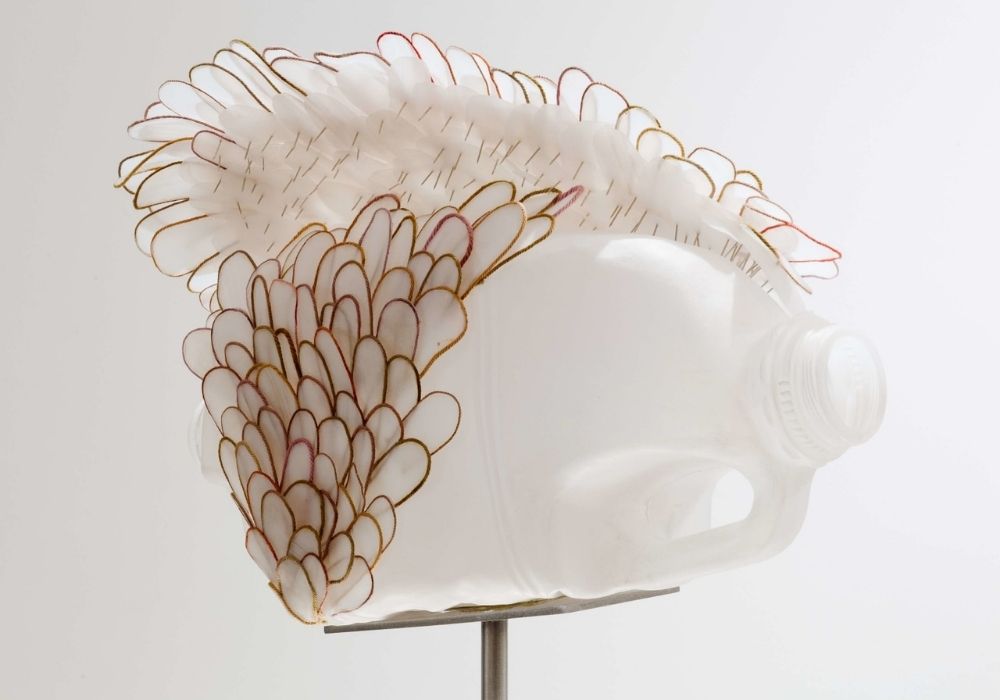
EAST & WEST
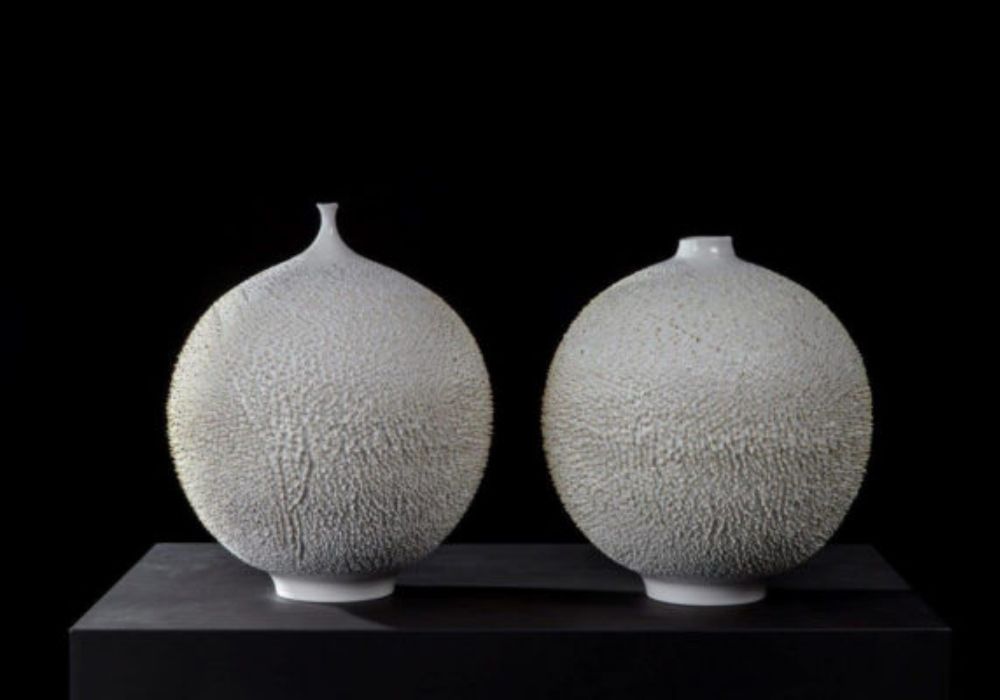
Lloyd Choi Gallery is showing a selection of pieces from the recent exhibition Material Dialogue, showcasing South Korean contemporary craft. Yun Ju Cheol, whose tactile ceramics are made with his own technique of his own – he uses a traditional rice straw brush to create natural and irregular marks before adding gold to the peaks of each spike.
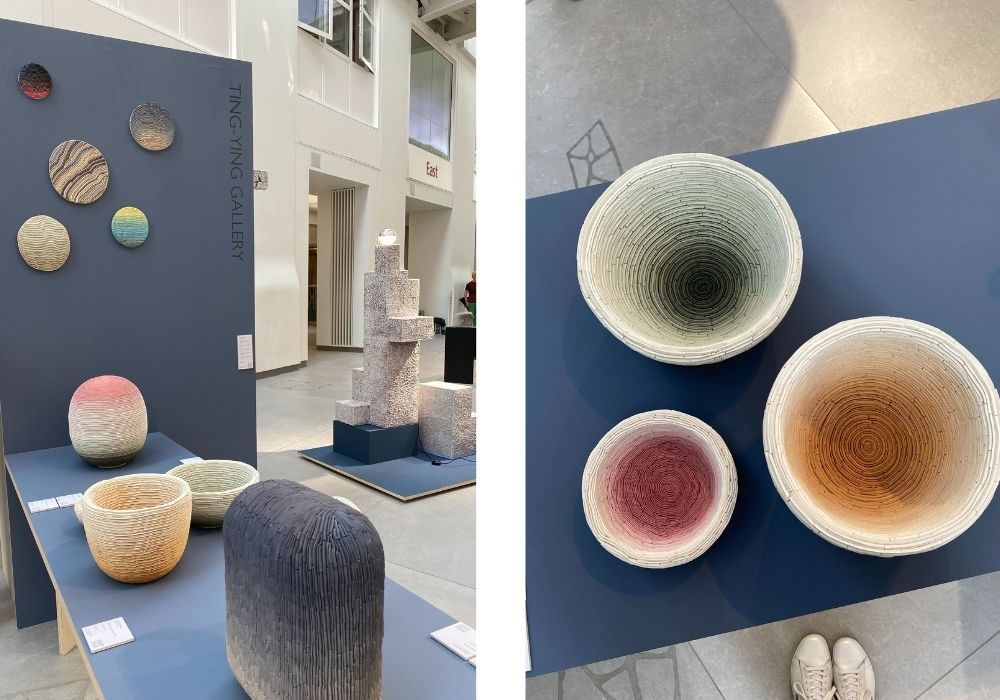
Ting-Ying Gallery brings a dynamic and highly influential mission to the world of contemporary craft by stimulating ongoing dialogues between East and West, tradition and innovation, function and aesthetics. The gallery has presented twelve UK and international artists under the theme “Pliable” with a dazzling array of artworks created in ceramics, glass and textile, the majority of which are newly created for the fair.
CONTEMPORARY APPLIED ARTS
Founded in 1948, CAA is a membership body for craftspeople and an advocate for the applied arts. A registered charity, it aims to demonstrate how the applied arts are vital to our culture, and how engagement with them has the power to improve the quality of life.
CAA’s members are some of the finest British makers, working in ceramics, furniture, glass, jewellery, metal, paper, textiles and wood. Highlights for Artefact include a rare porcelain bowl by Emmanuel Cooper; new ceramic work by Gabrielle Koch; and delicate molten colour biomorphic vessels by Michèle Oberdieck.

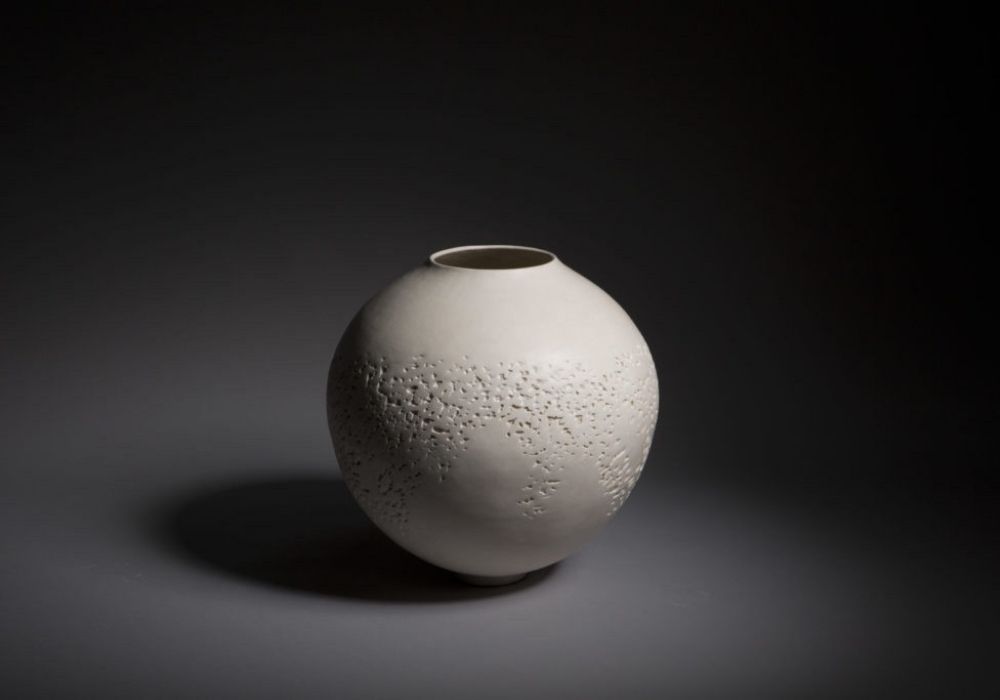
Inspired by natural forms and organic structures, Michèle Oberdieck explores balance and asymmetry through shape, surface and colour. Michele uses sculptural forms as a gesture, or an expressive mark, often combining a few pieces together, creating a narrative.
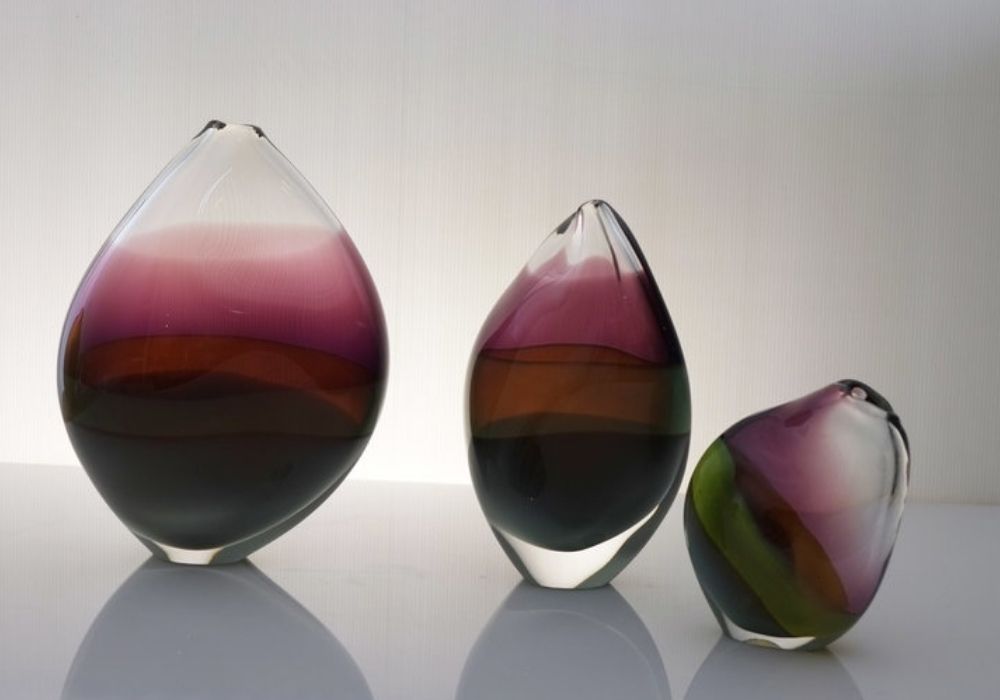
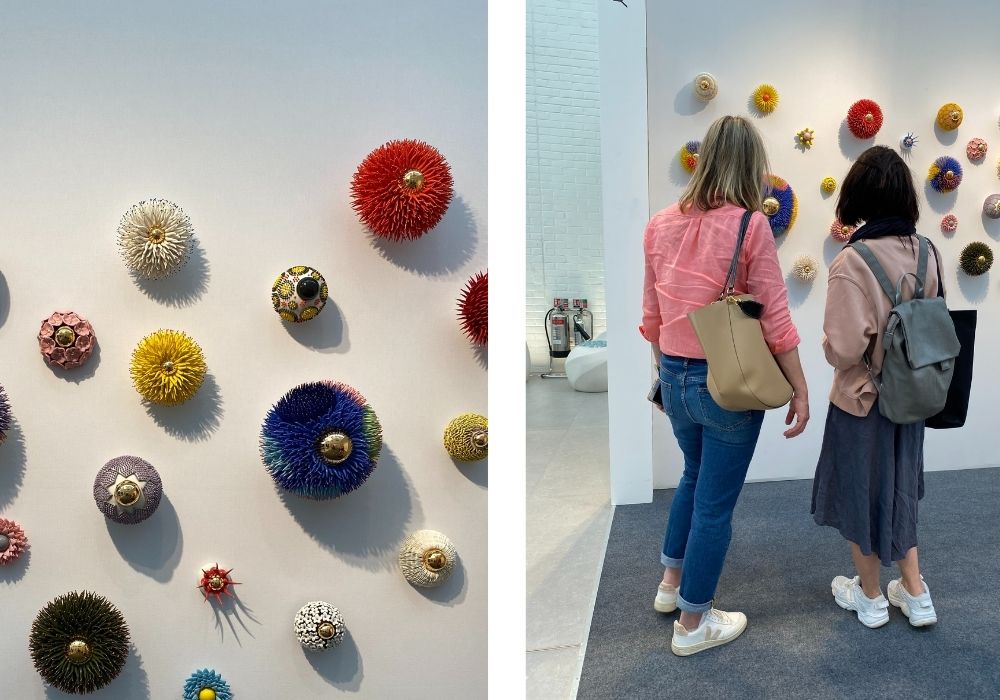
Artefact is both a marketplace and a celebration of contemporary craft, encouraging visitors to experience the tactility and joy that handmade objects can bring to their lives.
O&A London celebrates its 20-year anniversary. In past years the studio grew by creating not only unique world class interiors but also bespoke furniture, textile, rugs, lights and wall covering collections. The creative tandem of the studio’s leaders Oleg Klodt and Anna Agapova are the driving force behind the team. During this time, we have been lucky enough to collaborate with extremely talented and creative professionals from around the world. They have not only become partners and co-authors of our collections but also friends.
We continue our “20 // 20” series where we introduce you to our colleagues and friends – artists, designers, craftsmen, editors who contributed to our success.
Our guest today is Aleksey Dorozhkin, editor-in-chief of one of the leading interior magazines, ELLE Decoration Russia. Aleksey is an art historian, board member of the Association of Interior Designers and Decorators of Russia (AIDD) and the Association of Object Design Specialists (AODS).
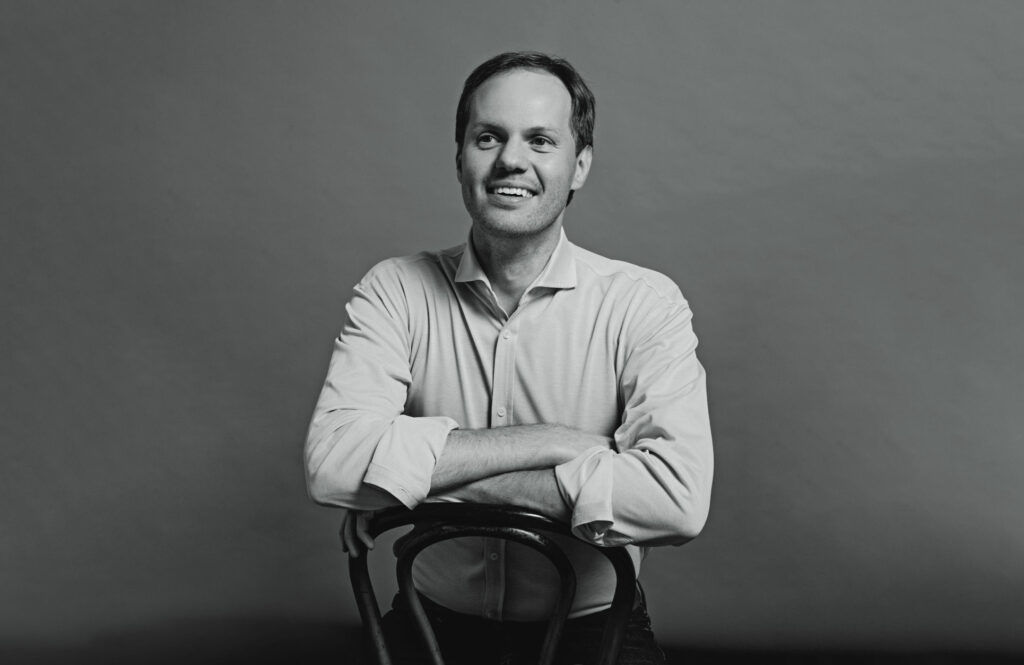
O&A: Alexey, what did you dream about as a child?
AD: I don’t think I really dreamt about anything as a child. I had everything I ever wanted. My grandma worked at “Detskiy Mir” (A central children’s goods department store in Moscow) and therefore all my childhood dreams were always fulfilled. (Laughs). To be honest I never wanted to be a fireman, artist or musician, and so I didn’t become any of those. I do remember having one wish which was to bring joy into people’s lives. And as you can see this eventually led to the road where I create something that brings that joy.
O&A: You have a History of Art degree.
AD: Actually, I have a degree in Finance. I graduated from the Moscow State Finance Academy where I started studying straight after leaving school. I was the only one from my school lucky enough to be offered a place. My main subject was insurance.
O&A: Why finance?
AD: Well imagine 1994. Everyone wanted to be a banker and went to the Finance Academy. I also wanted to be a banker and would have become one had I continued working for a bank. I worked in finance for 10 years and eventually I got tired of it and left for St. Petersburg. I decided to change everything without changing anything. I got a transfer to the St. Petersburg branch of the bank and started university again, but this time it was in History of Art. Before long, my dreams conflicted with reality so I left the bank. At first, I was in charge of exhibitions insurance, then I worked for the city’s cultural commission and after that at Sotheby’s auction house in Moscow. I was later invited to join Elle magazine. My current wife Elena Sotnikova was the editorial director of our publishing house and editor in chief of ELLE magazine at the time. Sometime later we relaunched ELLE decorations together. I have now headed the magazine for 11 years, and it turns 20 this year. Well, “headed” is possibly slightly overstated.
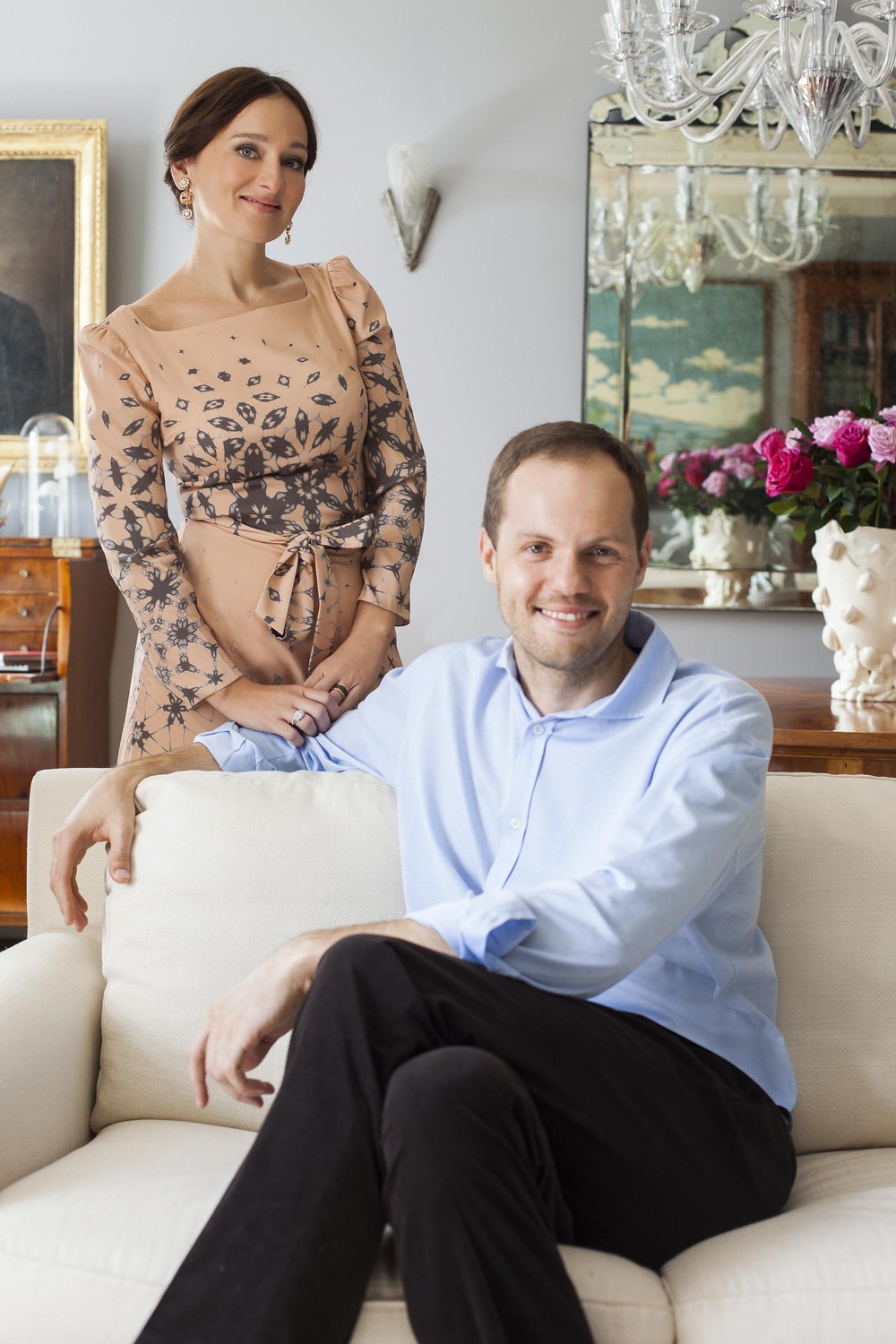
O&A: Let us go back to art briefly. Did you study History of Art at University?
AD: Yes, I did, but I never got into studying the science as I would have lacked perseverance. I was interested in Russian 18th century decorative and applied art and also in pictural art. My tutor Tatiana Valerianovna Ilyina, who sadly passed away last year, was one of the leading specialists in Russian pictural art of the 18th century. I really enjoyed studying Russian art under her supervision.
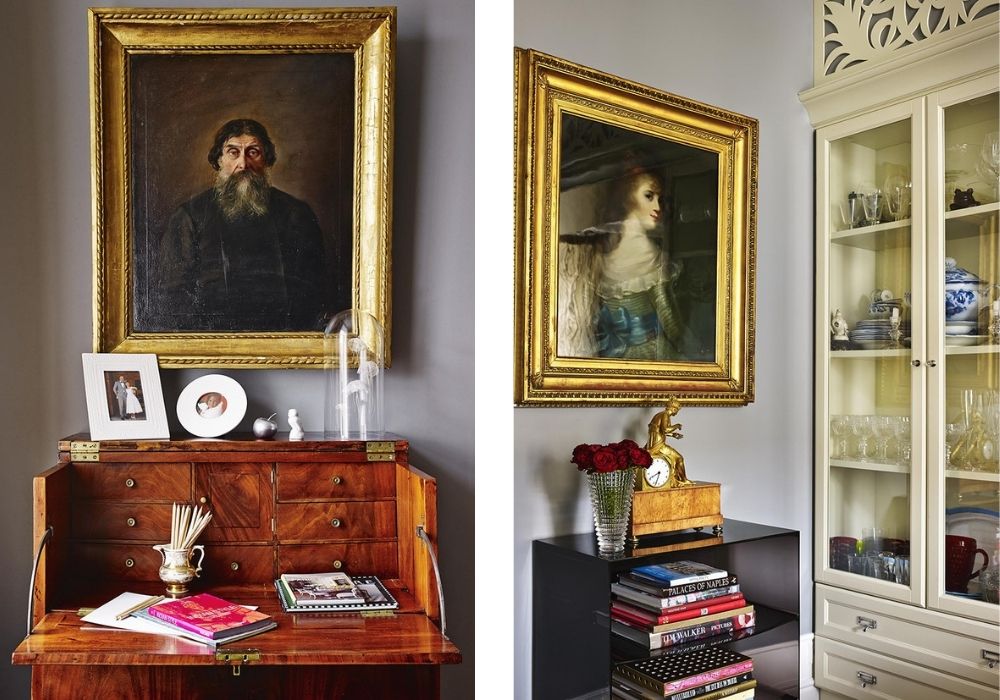
O&A: You used to work at Sotheby’s auction house. Was there a project from that time that makes you especially proud?
AD: I used to deal with exhibitions and was a project director which means that I physically organised all of pre-auction exhibitions that took place in Russia and the Ukraine. It was interesting of course. Any exhibition is a miracle of sorts. It may never open. There was magic in the moment where with only half an hour to go you would be running around polishing displays and then , the champagne is being served and the guests start arriving. And it was all extremely cool. In those days exhibitions were held at a properly large scale.
O&A: How do you feel about contemporary Russian artists? Are any of them worth following closely?
AD: Yes of course! It is very difficult to explain because modern art is largely subjective and therefore any explanations would also be subjective but we all want something that is objective. Therefore, one needs to trust one’s own feelings and just look at what one likes. As someone who has seen quite a lot I think that things that like are not just subjective. Any definitions of “likes and dislikes” should be based on understanding. Someone someone likes Picasso and someone may not like Picasso at all…but objectively Picasso is a great artist.
I would not really want to disclose any names but I am interested in what is currently going on within the St. Petersburg art scene. It is free art renaissance all over again and with lots of new artists, but then again, I am just judging by myself. For example, my wife and I have decided to purchase a few pieces for ourselves for the first time at the recent Cosmoscow exhibition. And those purchases were very emotional. One of the pieces that evoke emotion is the work of Liza Bobkova, an artist and sculptor from Vsevolzhsk. She works with metal using a very complicated technique. It is sort of pictural art on metal which evokes very strong emotions in me.

O&A: Is an interior a form of art?
AD: An interior is not really art. First of all, it is an applied solution. Interior used to be art when applied décor format was the main aesthetic, but the spaces were also functional at the same time. They had a very high aesthetic and artistic value. Later, when grand styles disappeared art seemed to have literally lost its meaning within an interior too. Interior turned into applied history. Now that art is making a comeback one can hear a lot of talk about collectable design. Of course, right now there is a lot of marketing in it so we will see what the items will be worth in 50 years. Time will tell, but for now all the values are just speculation. It has nothing to do with the cost or artistic value but furniture is still regaining artistic function. It is no longer just a functional object but also an object that can compete with art.
O&A: A few years ago you said that we are on the verge of a new style. What does it look like?
AD: Well, this new sensual minimalism must be it. Although as all definitions are secondary now, one can call it anything at all. The maximum artistic load is distributed among a very few expressive interior pieces.
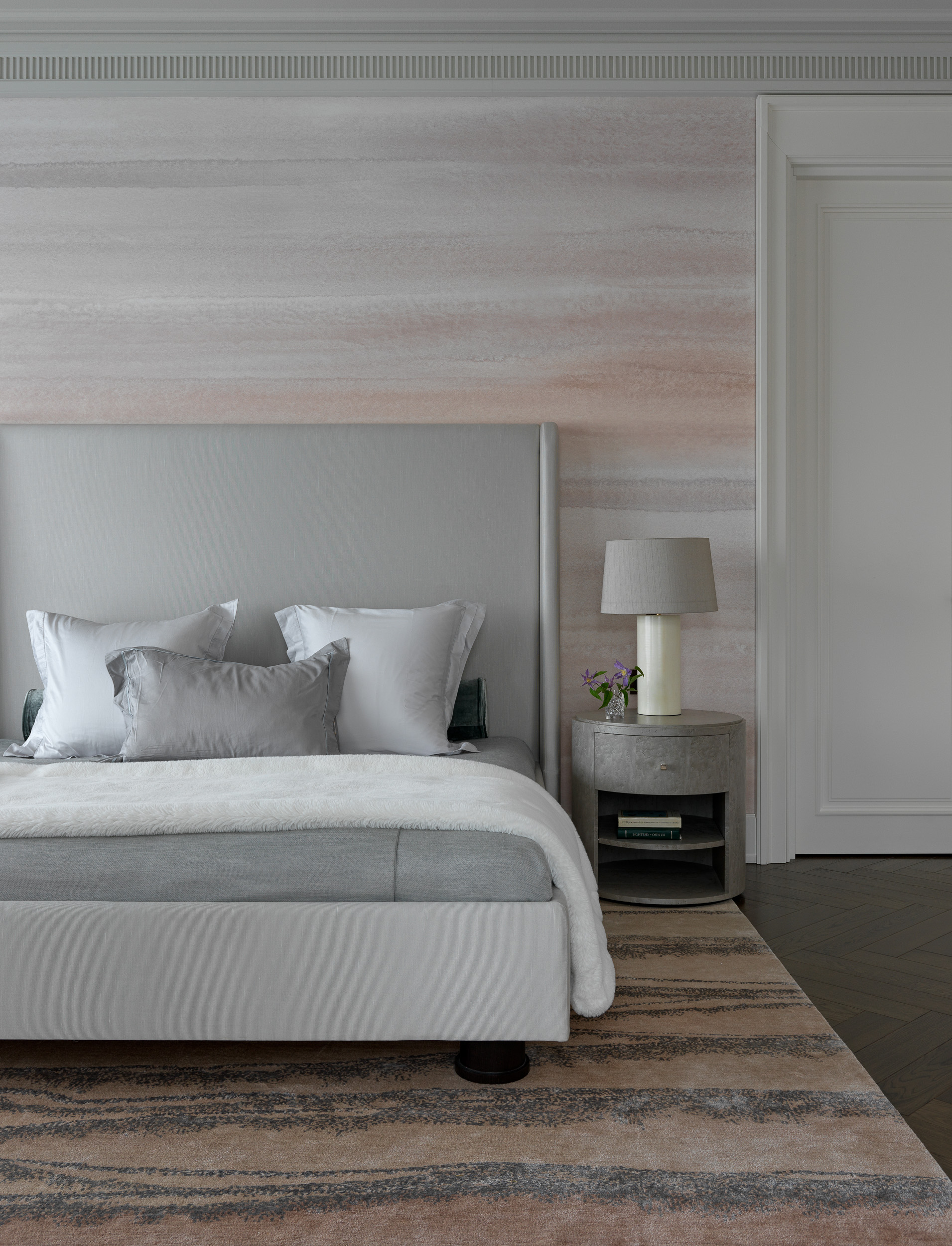
focal point of the interior is the “OCEAN’ handmade rug from Caledonia collection
O&A: Every year you hold an award that celebrates the best designers. In 2019 “Designer of the Year” was awarded to Oleg Klodt and Anna Agapova. How do you choose the best?
O&A: I will be honest, it is purely a subjective choice of our editorial team. I won’t claim we are experts but we as people who are constantly observing the process feel that it is important to recognise, support and highlight talented designers. We give the award to those who in the past year achieved something that is worthy of attention. We do not award any accidental one-off successes. We minimise the chance of fluke here even though some people have disappointed us in the past. So far, after years of holding these awards, I think it is safe to say that we have not experienced any major errors of judgement.
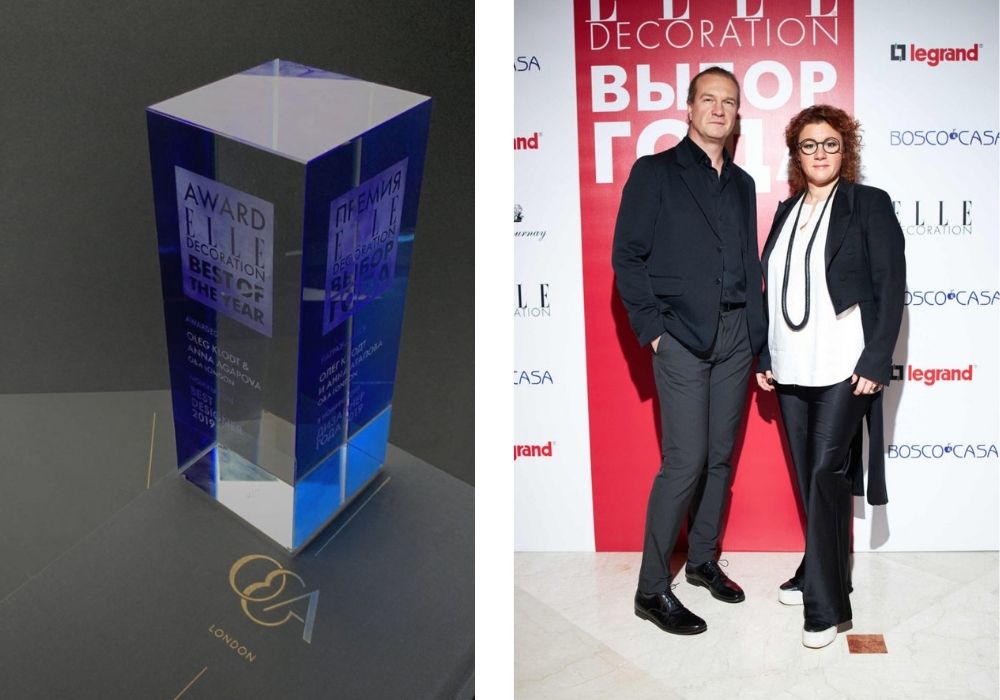
O&A: Can you name top five up and coming world class object designers in Russia?
O&A: We can’t really speak of world class at all right now. Russia is isolated and perceived as a third world country. What is the world of art and design? It is the absence of boundaries. There is no such thing as Italian or Scandinavian design. There is no such thing as American or Japanese design, there is just one world, the whole world! It is the same for art. Contemporary art freely moves across all border. An artist can go see their colleagues’ work in New York today, fly to Tokyo tomorrow, and create on some remote island two days later. Today they exhibit their work here, tomorrow somewhere else. They are constantly learning rather than stewing in their own juice. An artist cannot lock themselves inside one community even if this community is a very large country. If we look at the artists who have any weight in the art world, all of them are people who moved a long time ago and are now living abroad.
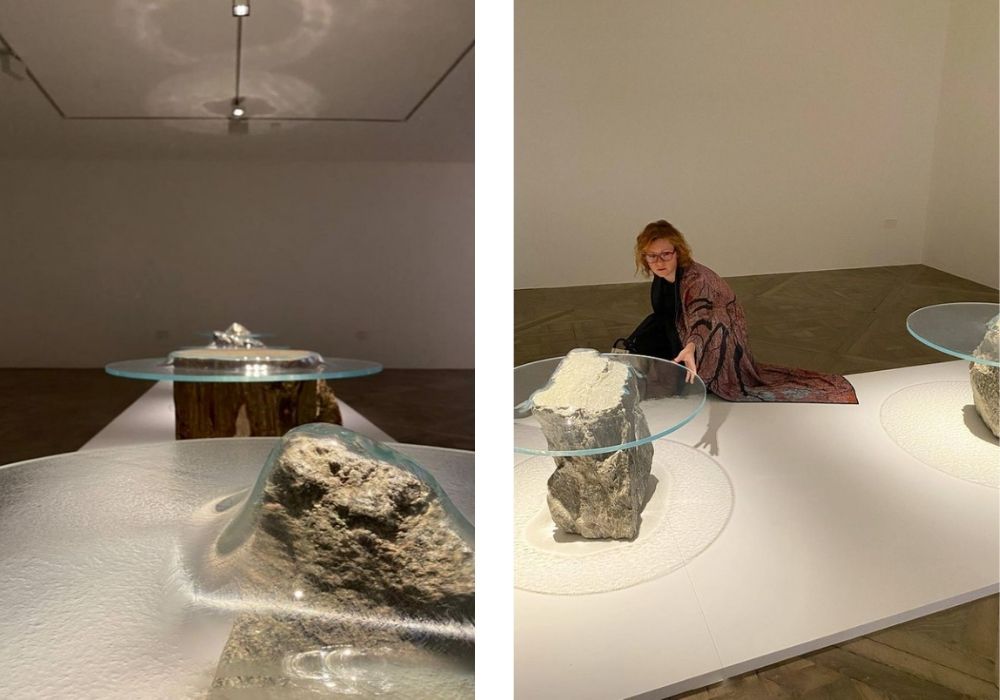
The world is very different now. To be a world class designer one needs to be able to create something with one’s hands, be able to work with real objects. They need to practice on manufacturing sites. If one is unable to make something with one’s hands one cannot be a true designer. To make a chair one has to literally make it, not just draw it nicely in 3D. There are some designers, but they are few and far between, who have created something in collaboration with independent international brands. Not just by ordering an item designed by them to be manufactured, which would just make it a commissioned item, but by actually making an object that sells.
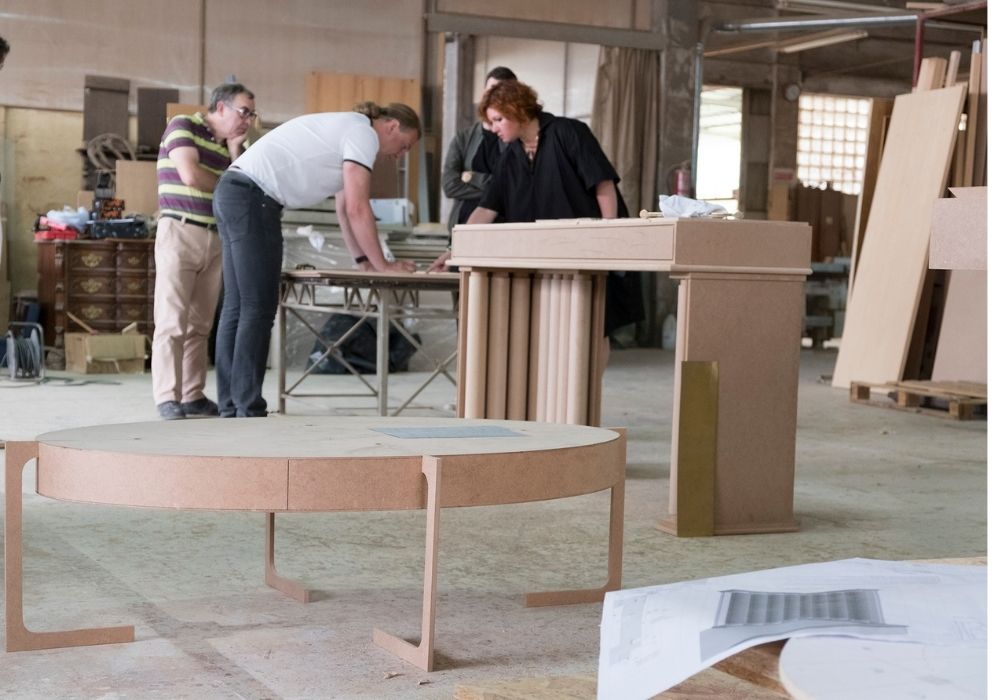
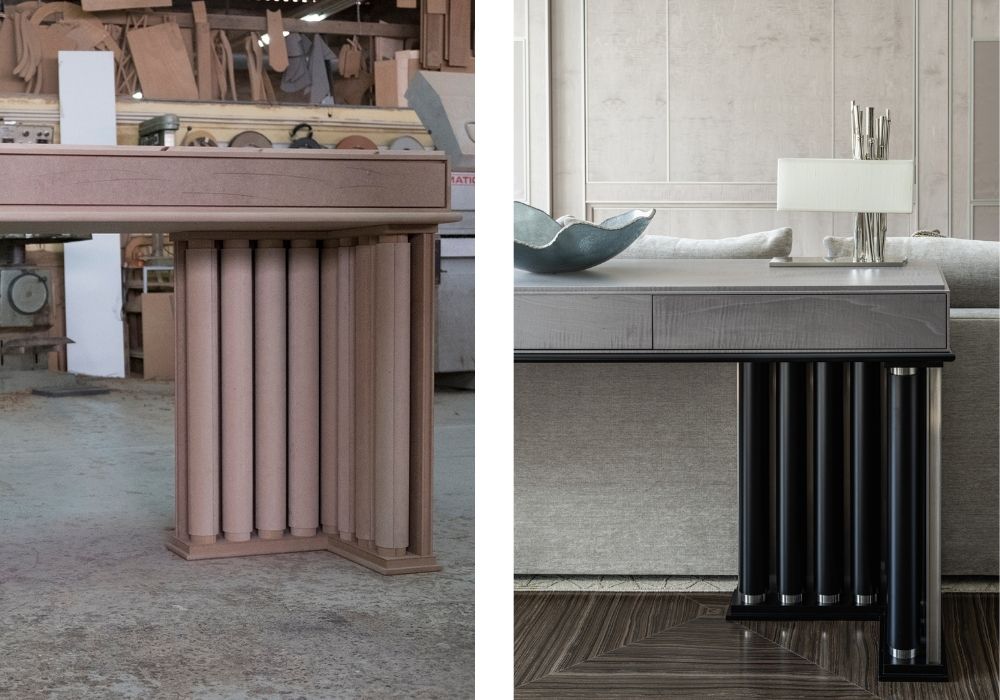
O&A: Your wife Elena, having worked as ELLE’s editor in chief for many years, talked about how difficult it was to leave the glossy magazine behind on one’s own accord. Do you agree? Have you thought about what you are going to do after ELLE?
AD: I never really thought about anything – everything seems to have come into my life by itself. I think there comes a moment when it is necessary to change something. Now is the time when it is impossible to stifften up as things are changing so rapidly. To create a magazine that will be interesting for its readers one needs to make it different every single time. The magazine also needs to have one very important feature, such as content that you will not read anywhere else. This means quality production, own shoots, texts and essays, not just a simple compilation of pictures and quotes from press releases. It is a difficult task, especially now that the glossy magazine era of flights, photo shoots and champagne has come to an end. There are also websites, social media and online and offline events that simply do not allow one to stand still. One should never be pleased with what one does – there should always be doubt. It is the only way to create a magazine that will generate interest. The reader also highly values honesty. They know and understand a lot, and it is impossible to fool them. And the vote is cast by buying or not buying your magazine. That’s it.
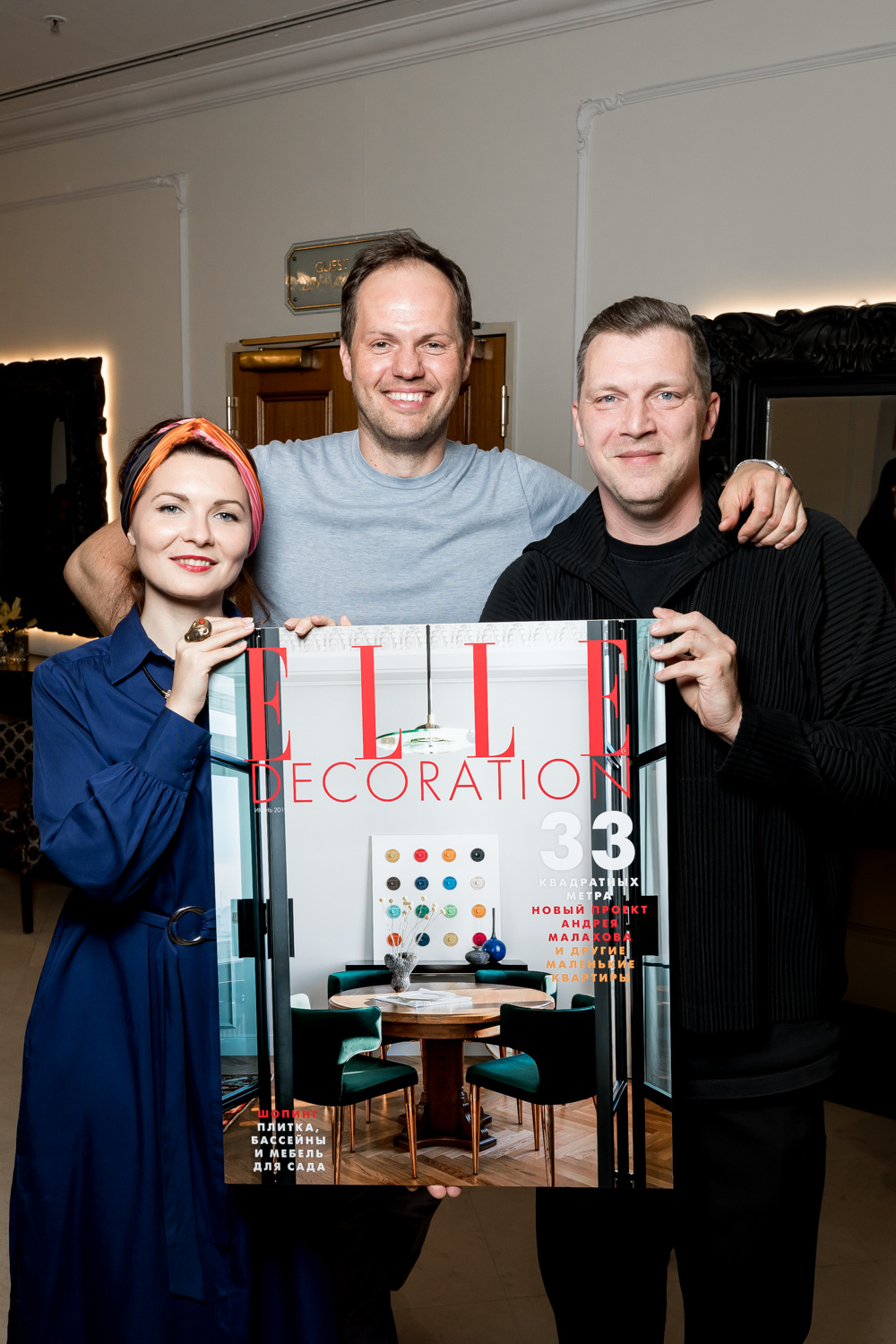
O&A: ELLE Russia is a part of the global editorial team. There are also ELLE USA, ELLE France and many others. How different from the rest is ELLE Russia?
AD: We do not have a global editorial team, there are 27 completely independent publishing offices with completely different concepts within some sort of brand identity. In America, ELLE is a luxury magazine, just like it is in Russia. In France it is a glossy magazine which is made in the mix and match format. In the UK it is a so called ‘consumer magazine’. In Italy it is more of a b2b, a magazine about design for designers and furniture manufacturers.
ELLE Russia is not about design but about interiors. Our speciality is not design even though we write about Russian design a lot. We have always supported designers with even the smallest items they have made themselves. I sincerely hope that this is the way others, including ELLE international publishing offices, learn about our designers.
O&A: What inspires you in your work?
AD: Everything, as you well know. Sunshine, good/bad weather, morning cup of tea, yoga, a kiss from my son. Every day I see the spire of the University made by my grandfather. I am proud that my grandfather was an honoured builder of the USSR. He built these houses with his own hands, not just drew them. I tell my son about it.

And there are also books. It is simply incredible; you just dive in and lose yourself. Of course, I am inspired by 18th century art as it is my favourite period.
I’m also inspired by the work of my colleagues. We’re always in communication with designers, editors and photographers. I go to shoots, look at projects. We still do the shoots ourselves, just like in the good old days. This allows one to see one’s work differently every time.
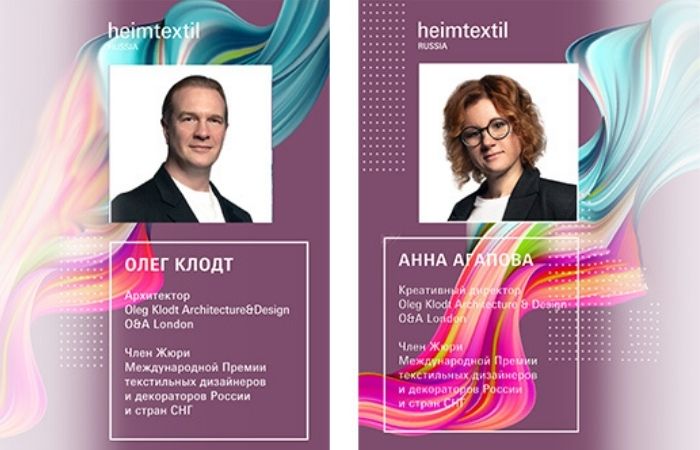
Founders of O&A London, Oleg Klodt and Anna Agapova, have joined the jury of the International Textile Designers Awards. The award is the first large-scale textile decoration industry event in Russia and the CIS countries. Its remit is to support talented textile designers and decorators, increase the prestige of the profession, promote innovative ideas in the field of interior decoration, and create a pool of outstanding professionals.
Fabric design is an essential part of Oleg and Anna’s work. They presented their first textile collection – CALEDONIA – in partnership with HOLLAND & SHERRY in September 2018. The second textile collection – CITYSCAPES – is going to be unveiled this year.
“The textile industry in Russia is developing very fast”, says Anna Agapova. “I’m excited to see new works from our talented colleagues”.
“Such awards are extremely important for young designers”, says Oleg Klodt. “Textile design awards have been held all over the world for many years and I’m happy that Russian designers finally have such a high profile event for showcasing their ideas”.
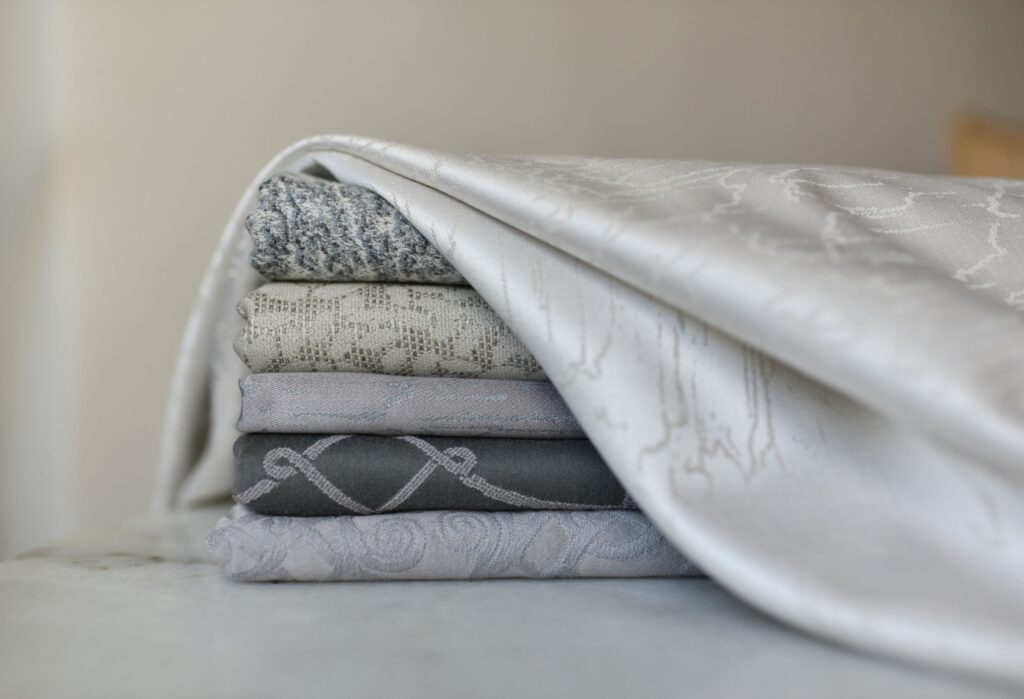
The finalists award ceremony of the International Awards of Textile Designers will be held on September 15, 2021 at the Heimtextil Russia 2021, Moscow.
Console table
For many people a console table may seem like an insignificant detail, but it has no less value than other interior elements. A properly chosen console can both unify space and accommodate details. The choice of console must be approached with care. Let’s figure out which consoles are generally available and how to choose them correctly.
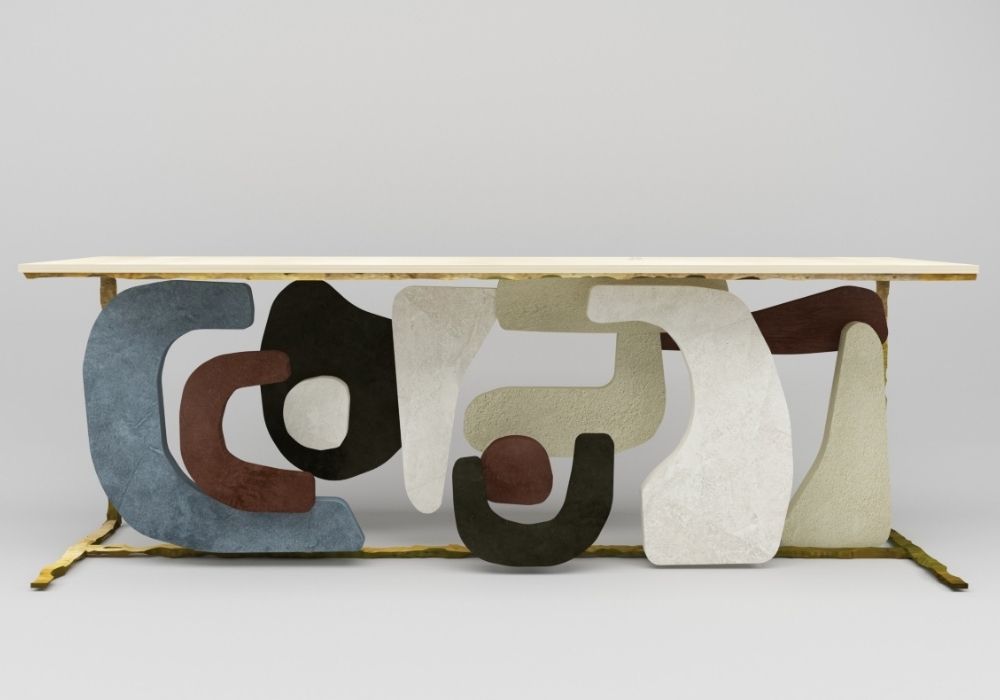
How can I choose the right one for my interior?
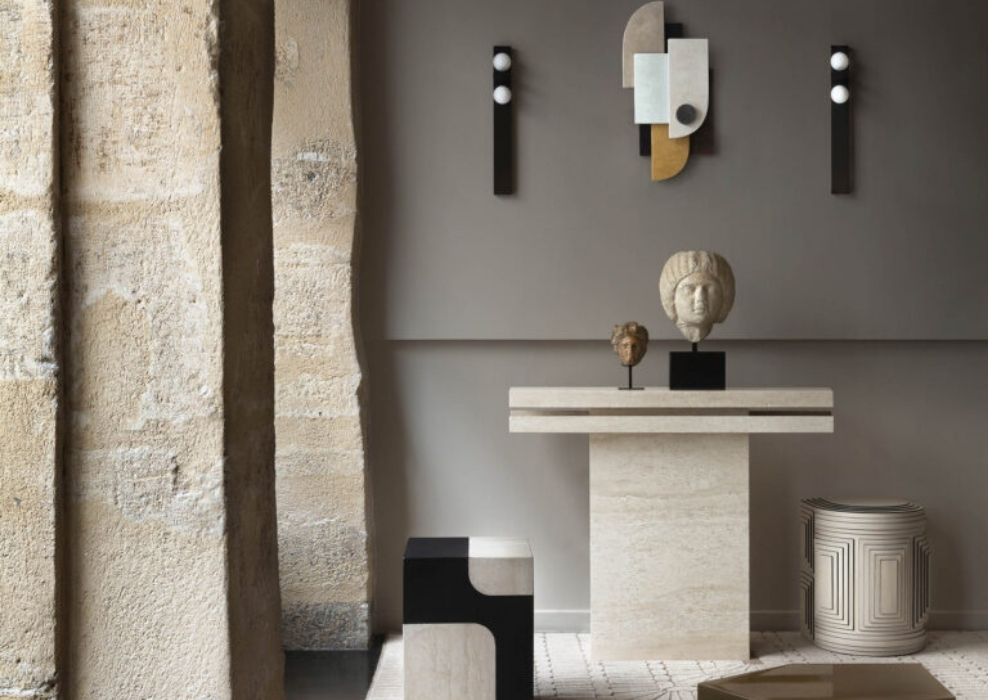
The traditional purpose of console tables is a surface on which to place decorative elements like clocks, photographs, vases, candlesticks or figurines. Despite its size the console is not only a decorative element but also a functional piece of furniture. There are countless types and forms of consoles. They can be of any height, width or length, and can be equipped differently. Everyone can choose a console table depending on their taste. But the question is: “How can I choose the right one for my interior?”
Consoles in hallways and corridors
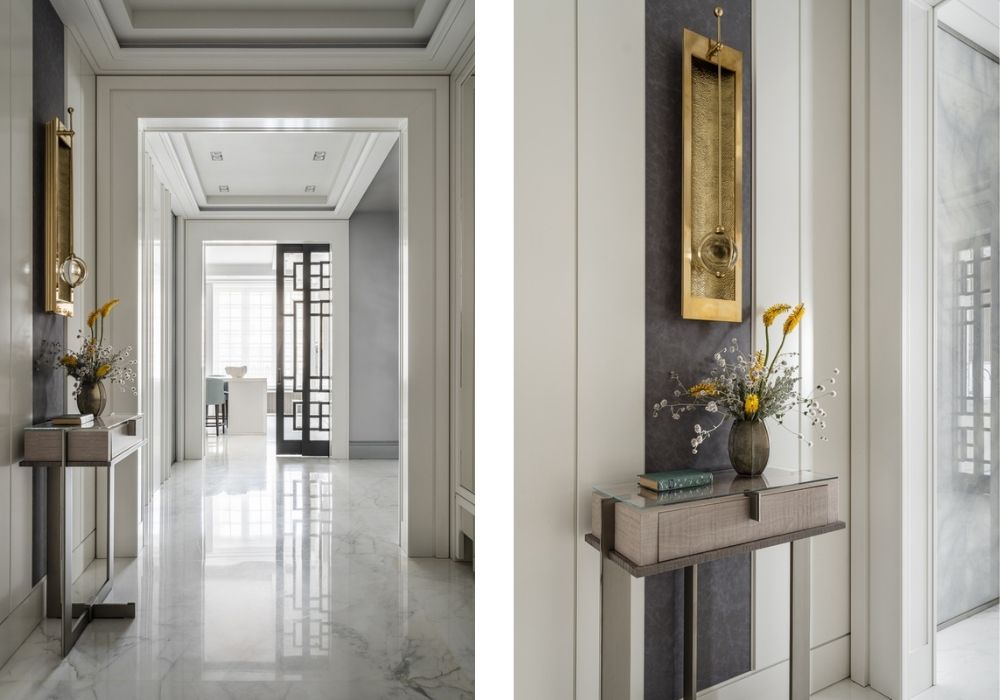
There is rarely a lot of space in the corridors and halls. In such cases console tables become indispensable. They do not take up a lot of space. The “Naos” table made by O&A London, crafted from polished brass and grey sycamore, is ideal for your entryway. Also, the “Naos” is endowed with a capacious drawer in which you can store everything you need. Light and elegant, it will subtly fit into any modern interior, complementing the design and placing the necessary accents.
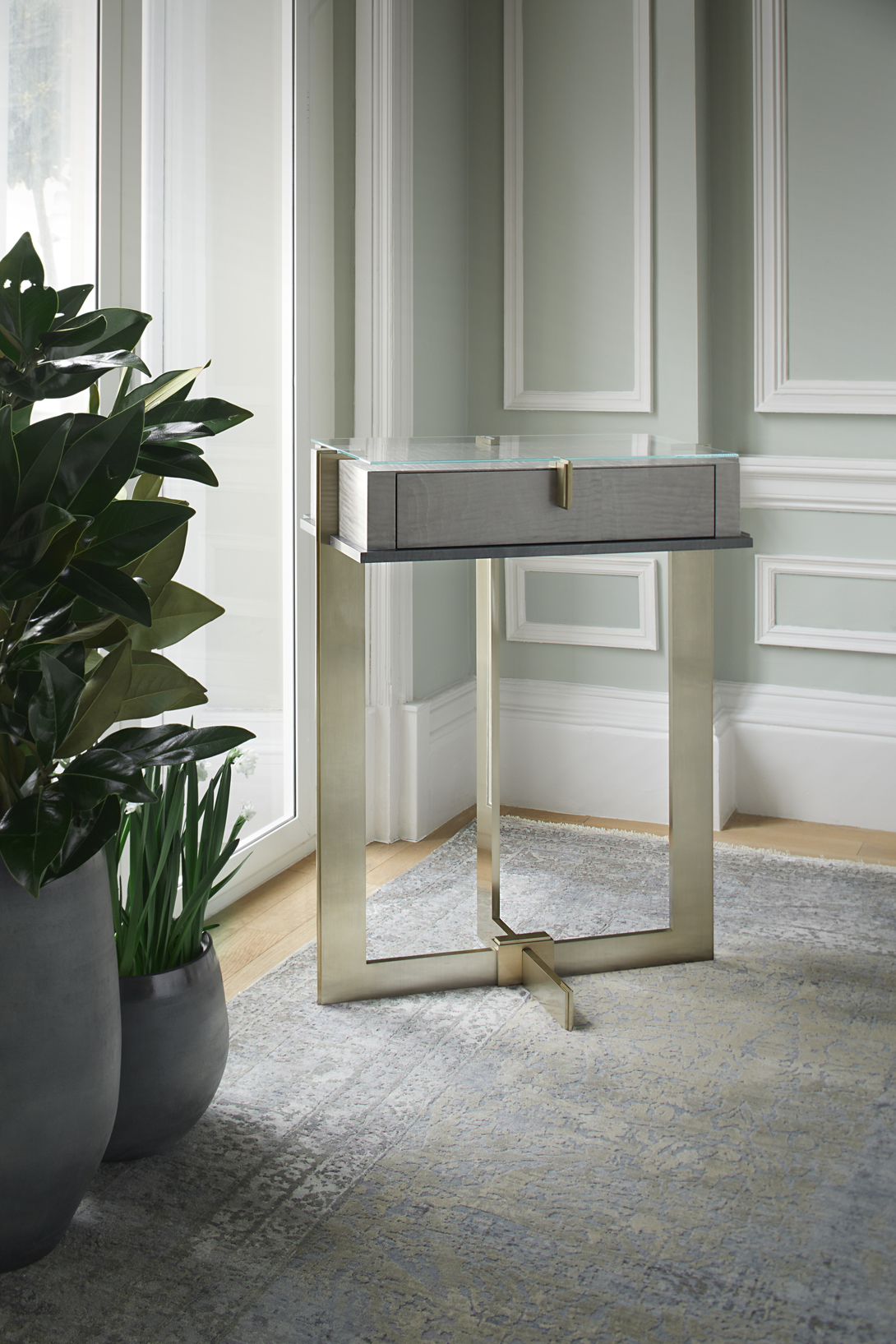
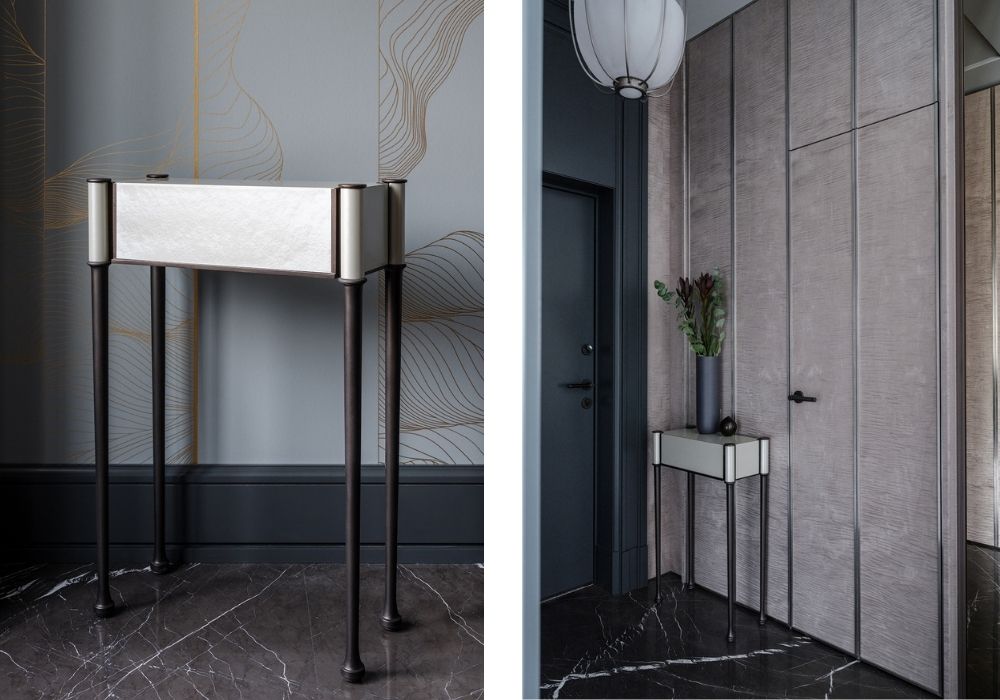
For narrow spaces, lobbies and corridors, the miniature “Lyra” console is better suited. It immediately attracts with an unusual combination of bronze and pearl trim and, thanks to its neutral colour scheme, fits well into any interior.
The first impression is count! If you want to set a mood, you should place a statement piece, for example, this chic modern console with art deco vibes.
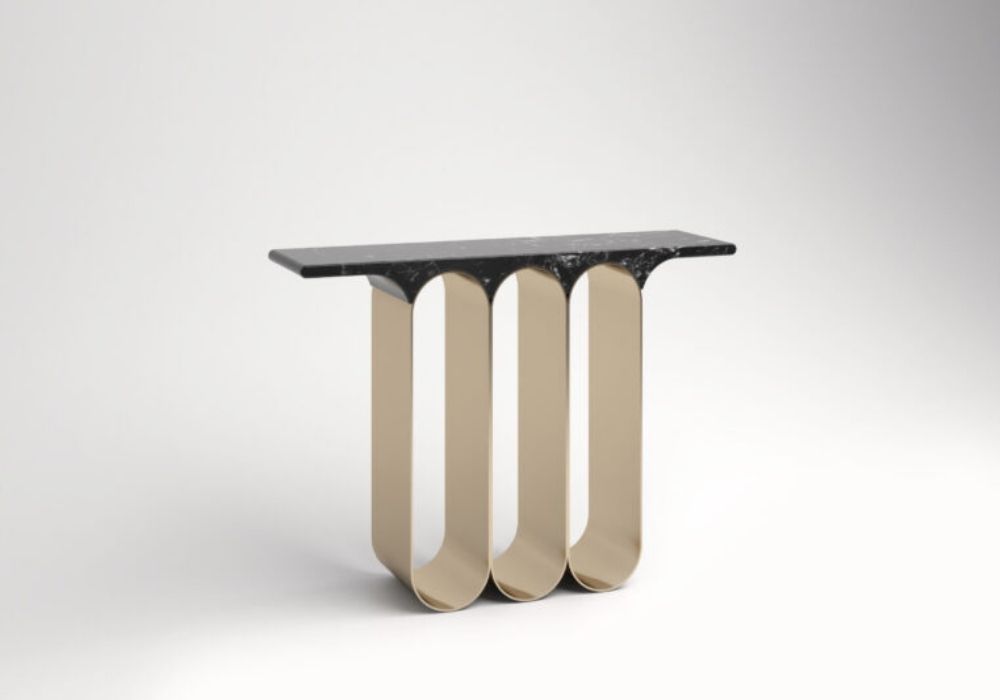
Living room consoles
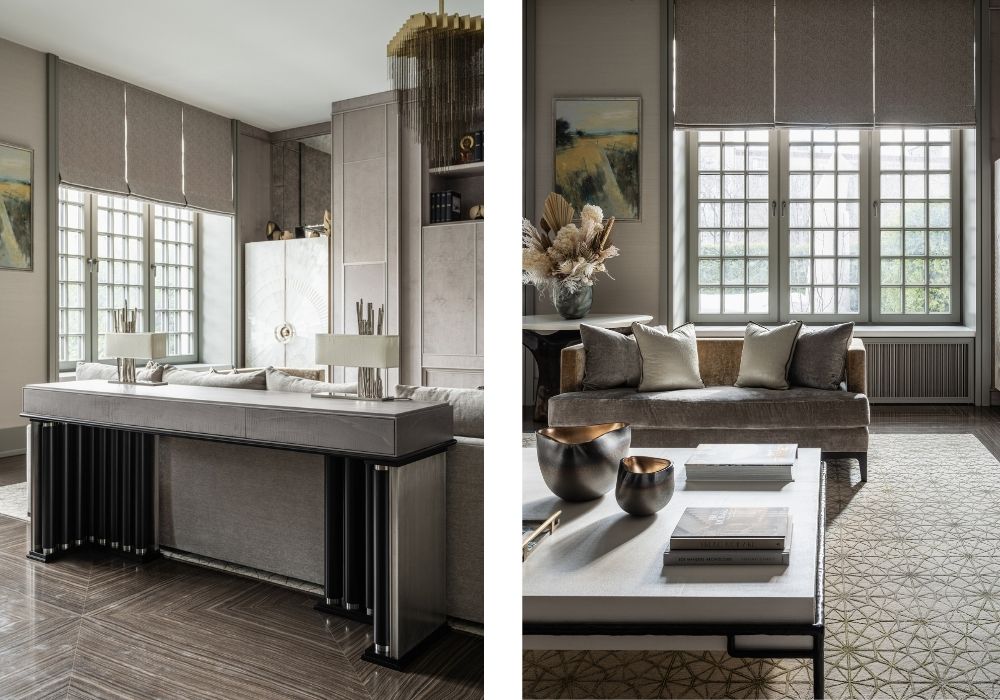
The main feature of the console table is its versatility and it comes into its own in the living room. One of the functions can be the division of space into zones using a console. For example, you can use an ‘Alkes’ table from the same O&A London collection. At first it may seem basic, but upon closer examination it becomes a work of art. Thanks to this combination of modesty and confidence, the contrast of age-old traditions and the spirit of modernity, the ‘Alkes’ will fit perfectly into any interior. Consoles exactly like that, due to their size and unusual design, divide interior spaces. Also, such a table can be placed in large living rooms next to the sofa and decorate the back of it. In this way a console makes the space more interesting.
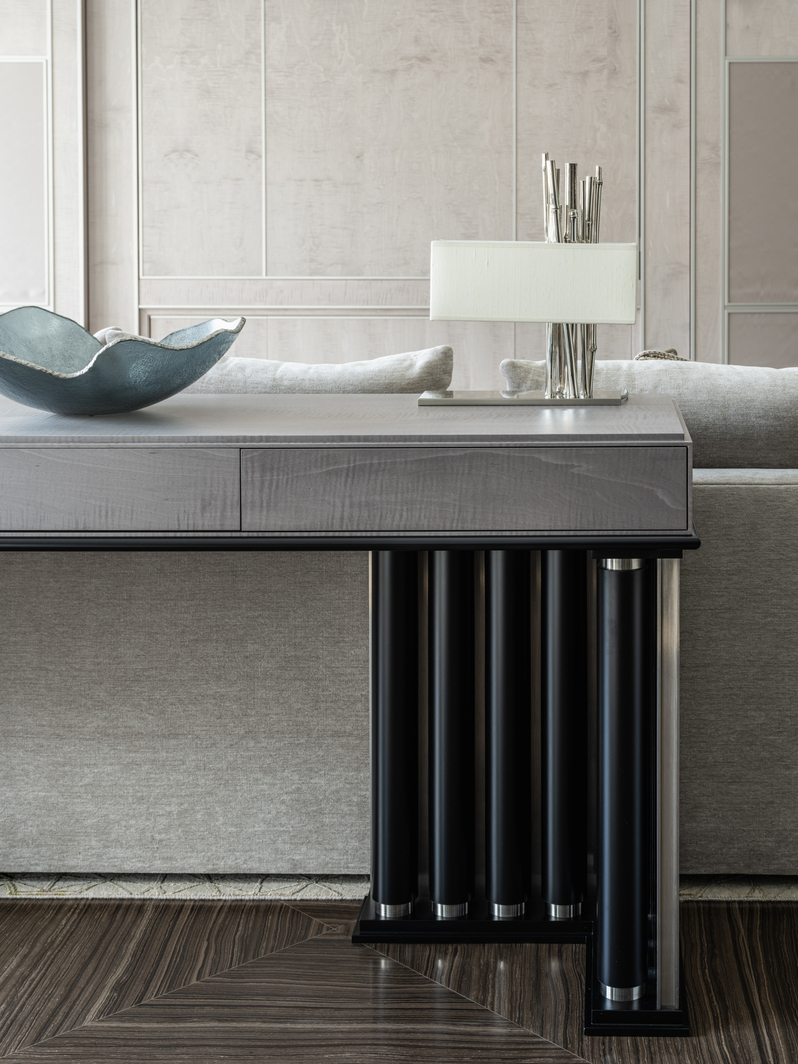
In addition, with smart location, the console table has very versatile function. It can serve as a drinks stand, a place for storing small trinkets, table lamps, vases and much more. For this role the “Double Leaf” console table designed by Eric Schmitt or the “Thalie” marble console by Joris Paggioli will be perfect.
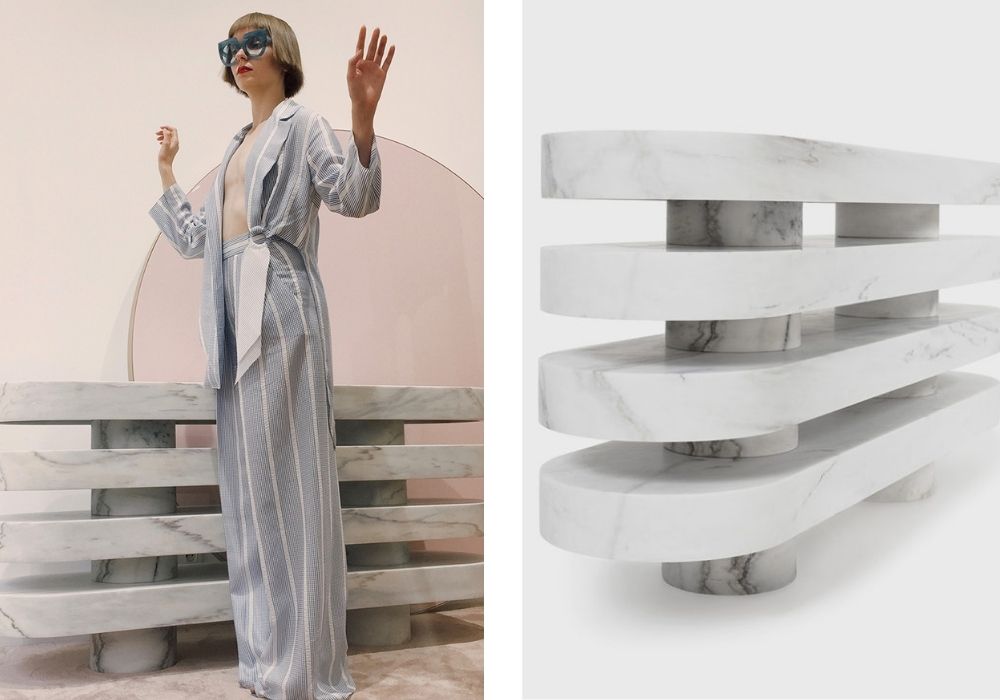
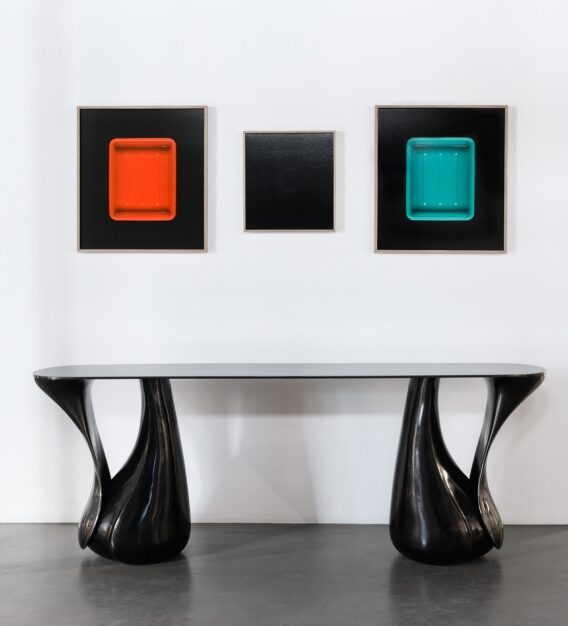
No less of a fit would be the minimalistic ‘Auva’ console. Despite its thin linear design, the console is stable and can withstand significant weight of objects placed upon it. It makes an excellent addition to your living room.
For the dark living room, the ideal choice is the “Terzo” console by Bruno Moinard. Moody, dramatic shades can create a brooding sense of intrigue and luxe sophistication. Do not forget that in spacious living rooms, consoles can play the role of serving or bar tables.
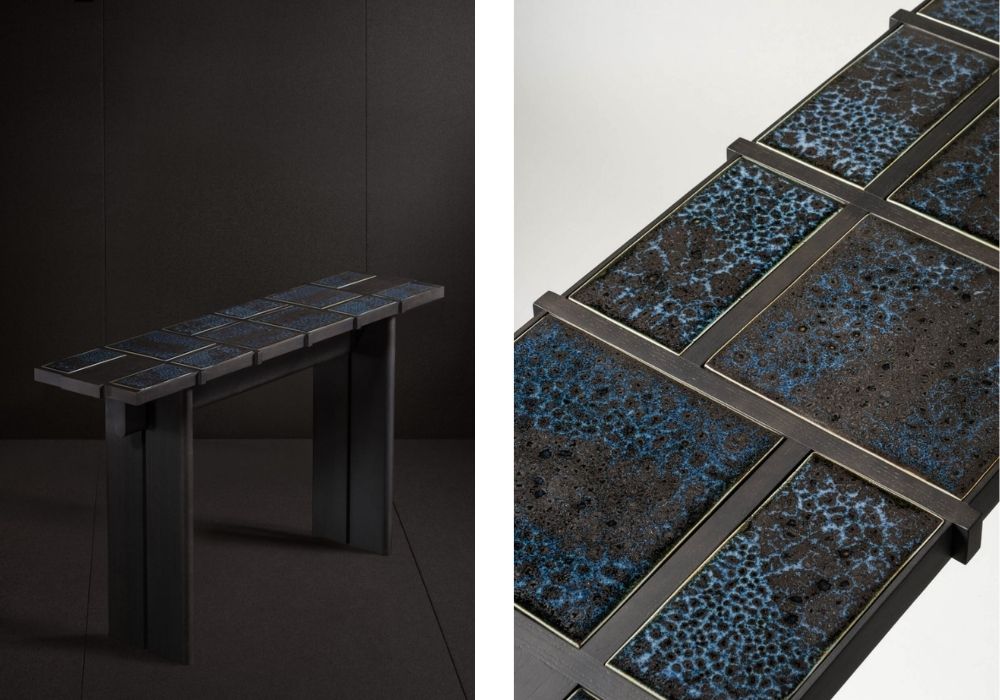
Bedroom console tables
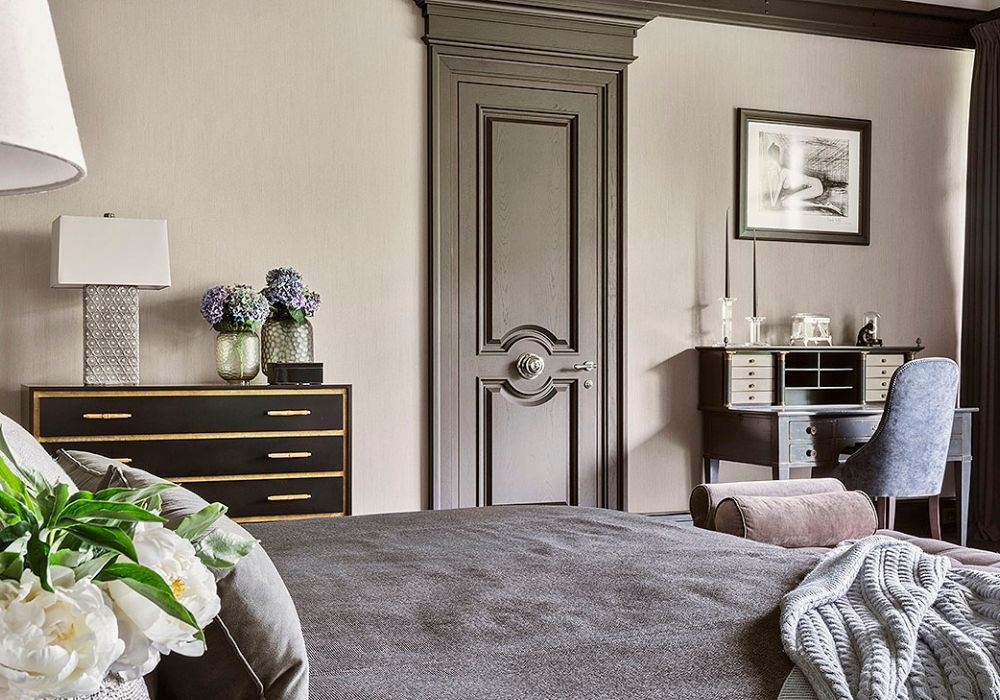
In bedrooms consoles are rarely the main focus. Instead they are used as dressing tables and other purposes. Someone might use the table as a place where you can put your favourite book or magazine, another person might put their glasses or watch on it, and someone else might neatly arrange their favourite personal care products. In any of the above cases, the console table does not remain idle, and nor it does not lose its artistic element.
A striking example is O&A London’s Diorda. The “Diorda” is a vivid combination of elegance and functionality. The rigour of its geometric shape is distinguished by a carefully thought-out colour scheme which turns it into an ‘objet d’art’.
In the bedroom mirrors of various shapes are often used Most people put them above the console with some poufs underneath. This solution saves space and gives you opportunity to read another magazine by the table, or check your appearance in the mirror before going out.
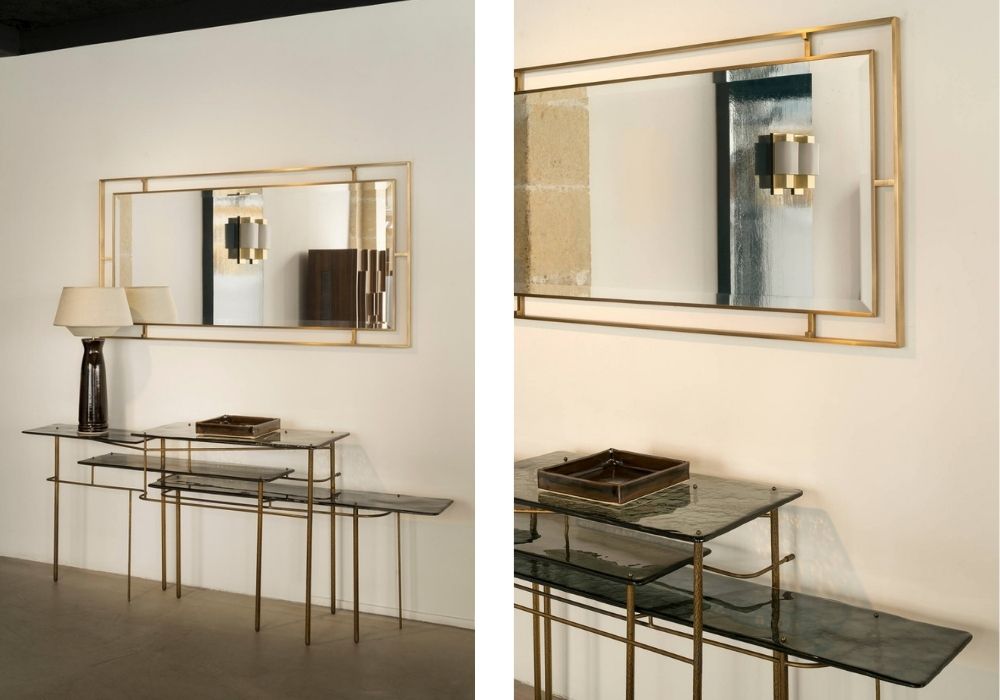
Console style
First, it is important to pay attention to the interior when choosing the colour scheme and style of the console, so that the table does not dominate visually and does not insult the eye. However, the choice of what role the console will play in the interior is up to you. It can be the focal point that attracts all the attention, such as a work of art like “Versailles” by Tom Faulkner; or a harmonious and functional addition to your interior such as the “Siena”.
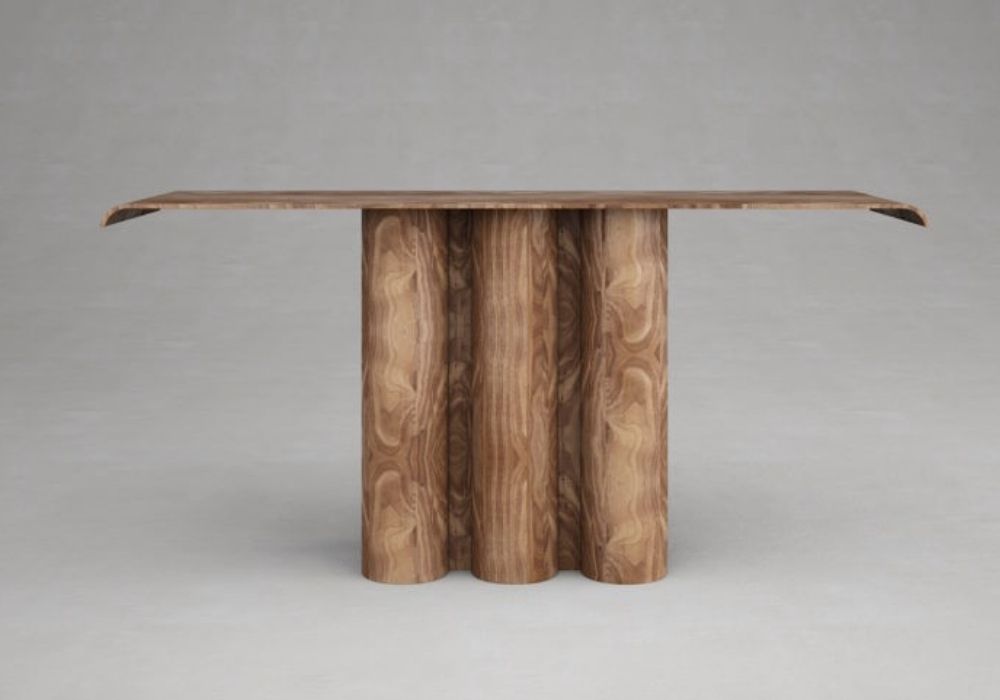
You can choose something more architectural as the “Lava” console by Samuel Accoсeberry or “Nekkar” by O&A London that emphasise the work of the material, in a brutalist expression. The choice is yours.
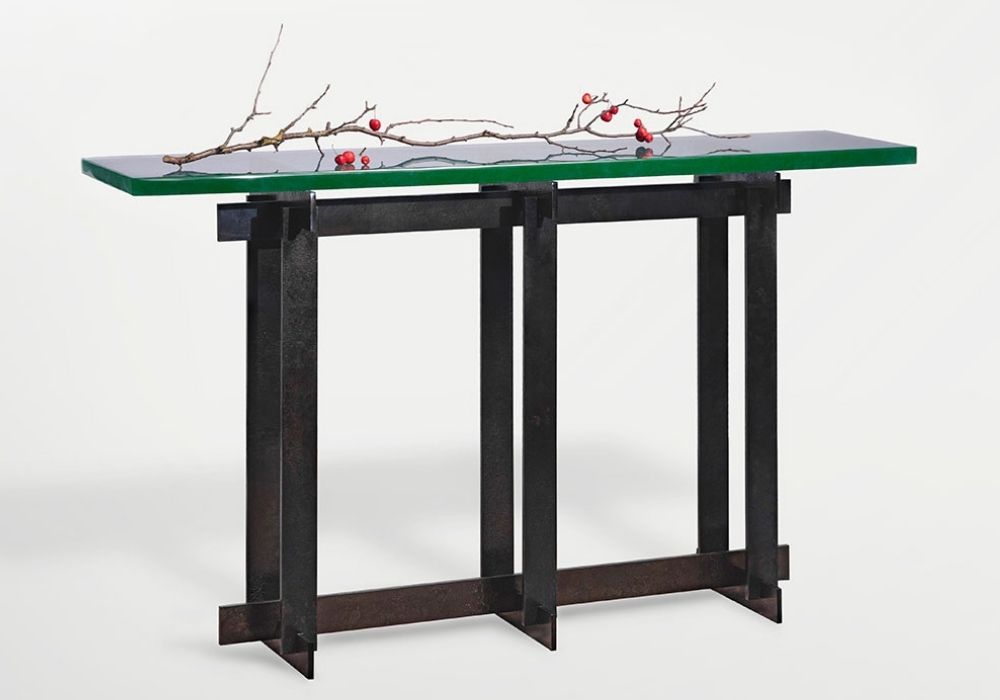
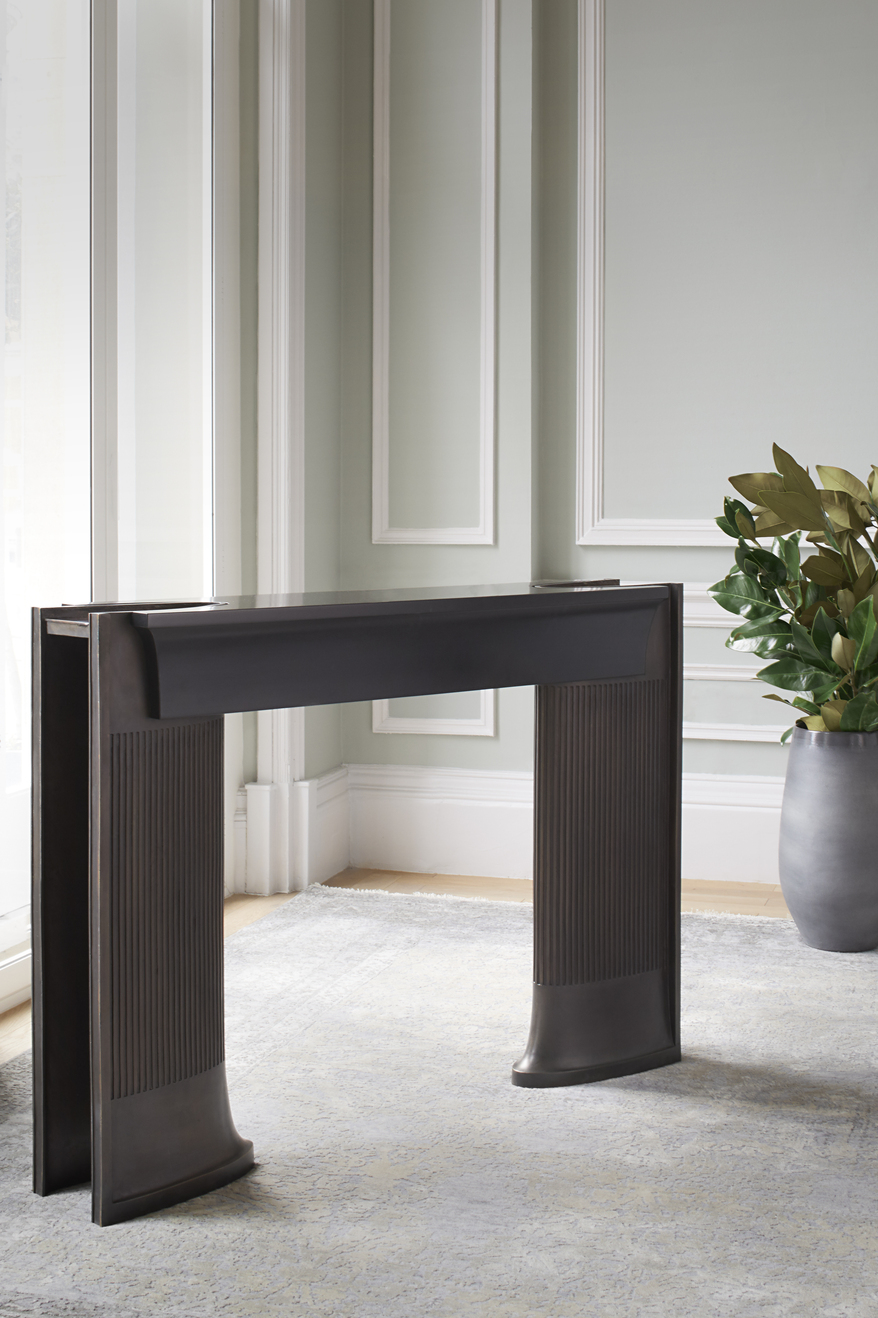
Few people think about what functions and qualities suchan insignificant element of the interior can give. Console tables are an integral part of the design world and are filled with possibilities.
Text: Anna Agapova, O&A London Creative Director
This year, Design Centre Chelsea Harbour has adopted a hybrid format with in-person visits and an online programme that reaches out to a global audience. From Monday 17 to Friday 21 May showrooms showcased the latest patterns and inspiring palettes, alongside key details like scale, craftsmanship and artisan finishes. After months at home, people are longing for change and designers are seeking to resume their usual sourcing process. Anna Agapova O&A London Creative Director is delighted to share an increasing variety of natural designs that reflect a growing groundswell for sustainability.
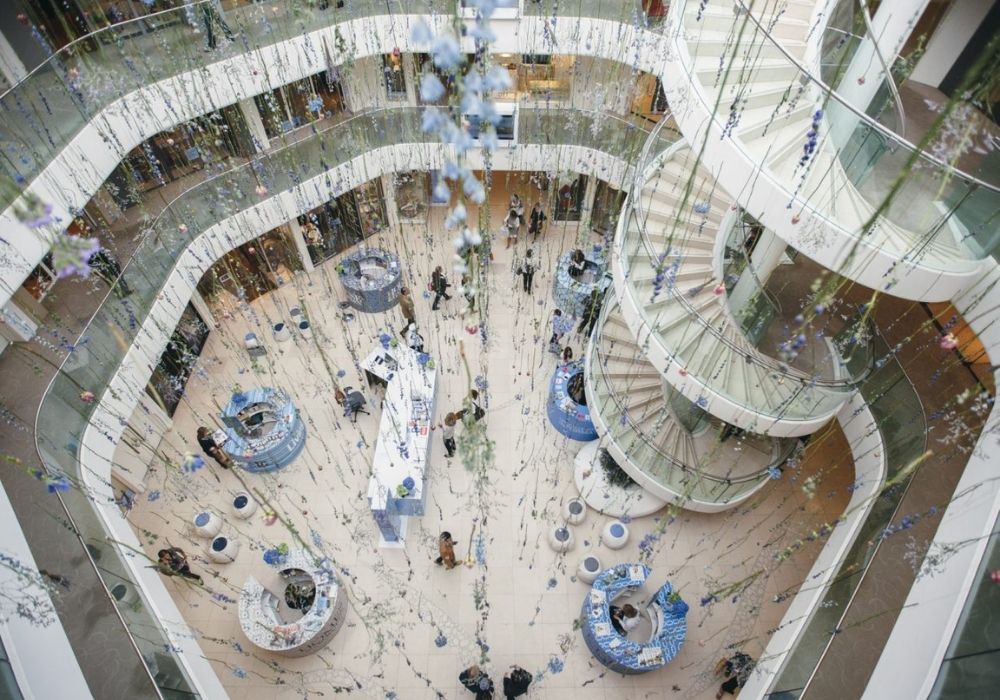
CLOSER TO NATURE
Outdoor furniture and fabrics are where technical innovation meets imaginative design. The so-called “al-fresco economy” was booming even before the circumstances of the past 18 months meant the need to spend more time outside – and from a design perspective these are exciting times for those looking to create a garden, terrace, yacht sundeck or poolside with personality and soul.
Dutch architecture and design studio Piet Boon creates collections that balance functionality, aesthetics and individuality. Pieces such as the “Anne” dining table, “Niek” chair and “Lars” sofa, chairs and coffee table have simple lines that let the beauty of the natural timber shine through.
The furniture collection is presented in Tollgard showroom.
These “Sun” daybeds by Paola Lenti demonstrate some of the technical prowess that lies behind outdoor furniture: its curvy shell is made from Diade, a waterproof plastic specially developed by the company, which is embedded with woven fabric that gives it an organic-looking, textured appearance. The daybed is the work of Italian product designer Francesco Rota, who has created a family of other products for Paolo Lenti this year, including the “Canvas” sofa, whose cushions sit within a sling of fabric that forms the back and sides.
The furniture is presented in Interdesign showroom
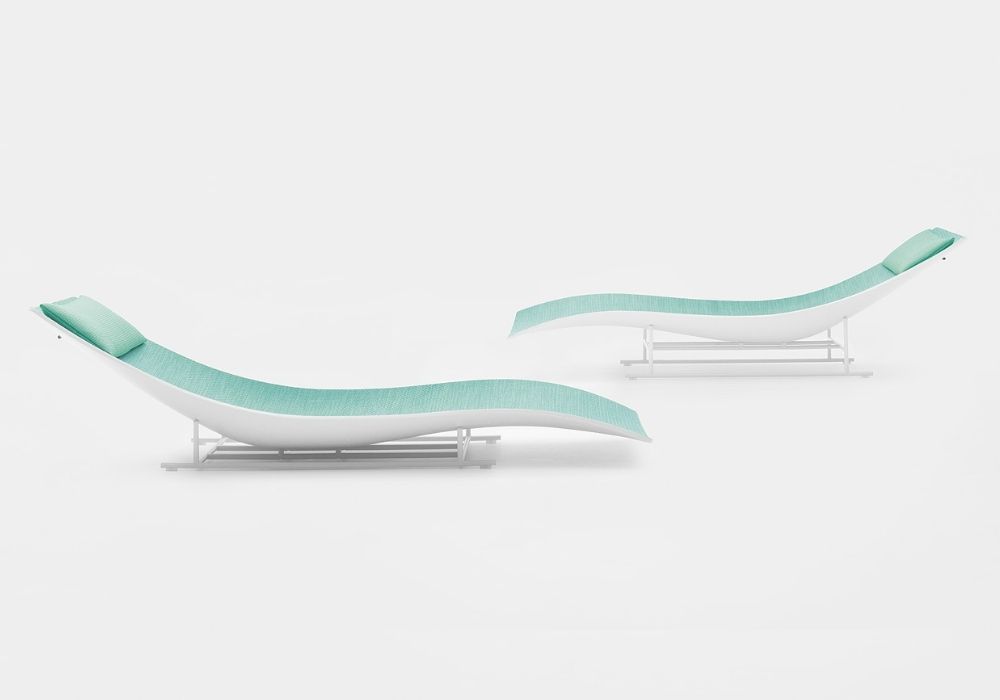
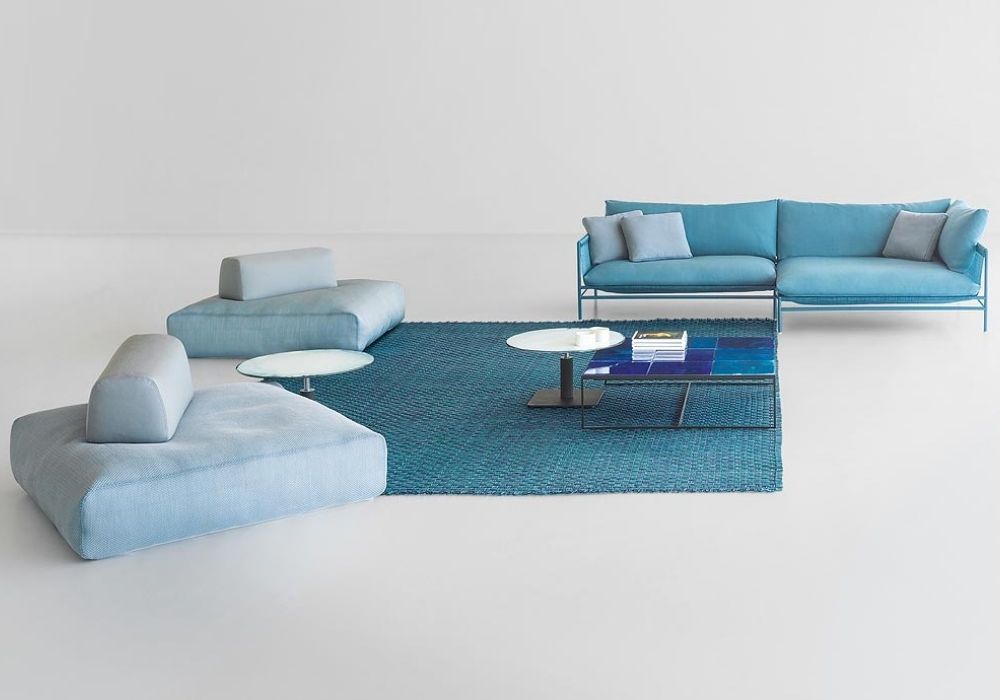
COLOUR FIELDS
“Forest bathing” may be the latest wellness trend, but with these hexagonal “Woodland Glade” tiles there’s no need to leave the bathroom to get a sense of nature’s ability to calm and heal. Available in six random patterns plus a white field tile, their gentle silhouette design was inspired by Winkworth Arboretum in Surrey, which belongs to the National Trust: the tiles are part of a wider collaboration between the conservation charity and Sarsen Stone, parent company of Design Centre showroom Artisans of Devizes.
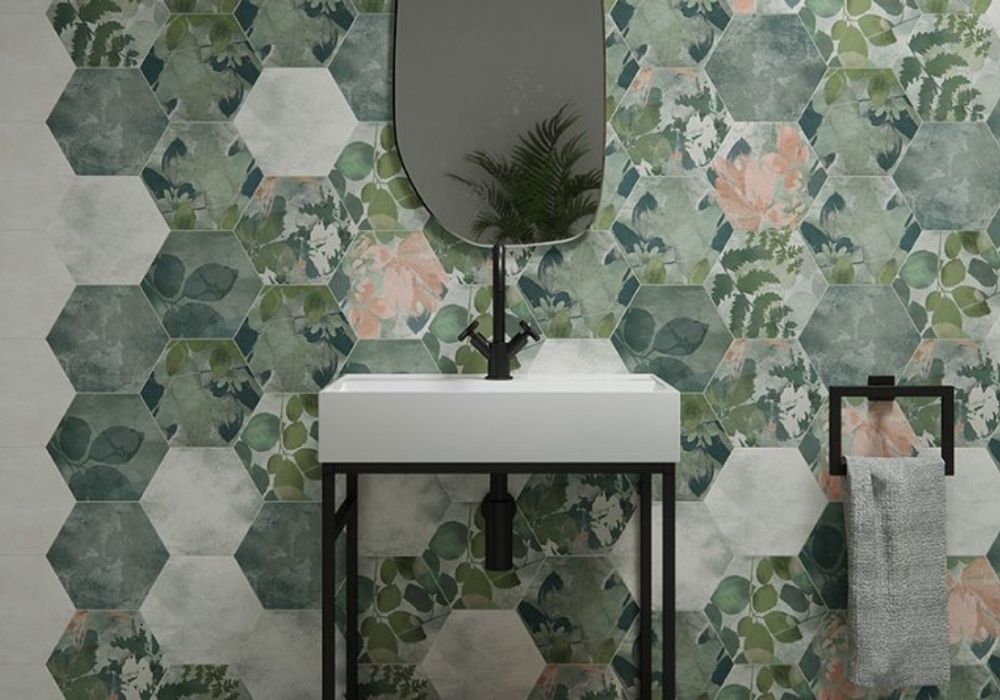
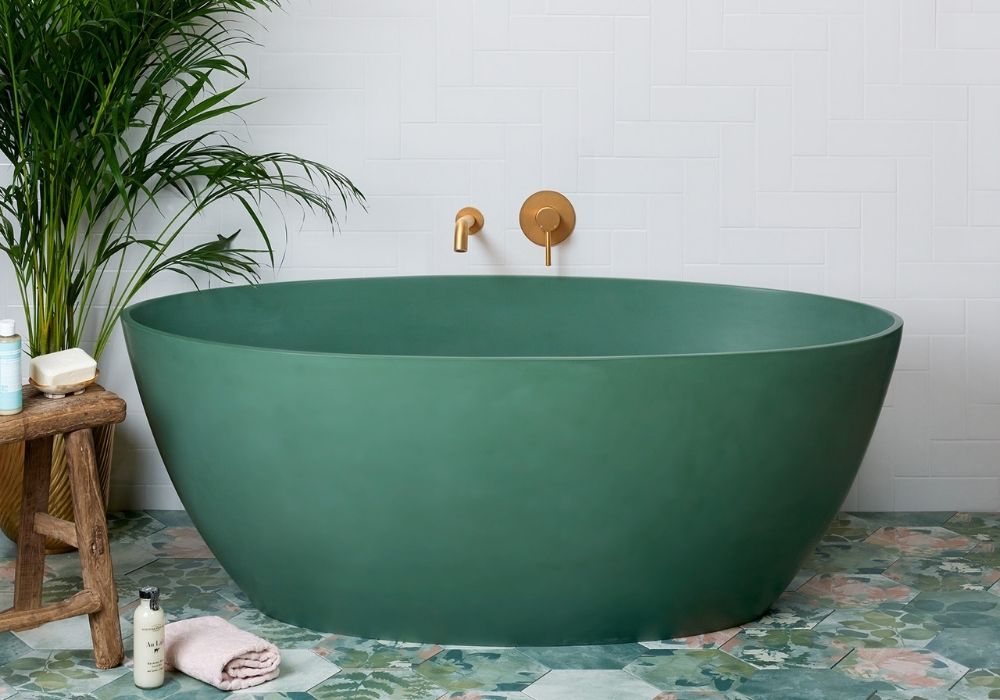
Colour and pattern have become intrinsic elements of kitchens and bathrooms, too. Victoria + Albert Baths is showing its new compact “Amiata” bath in a dark green.
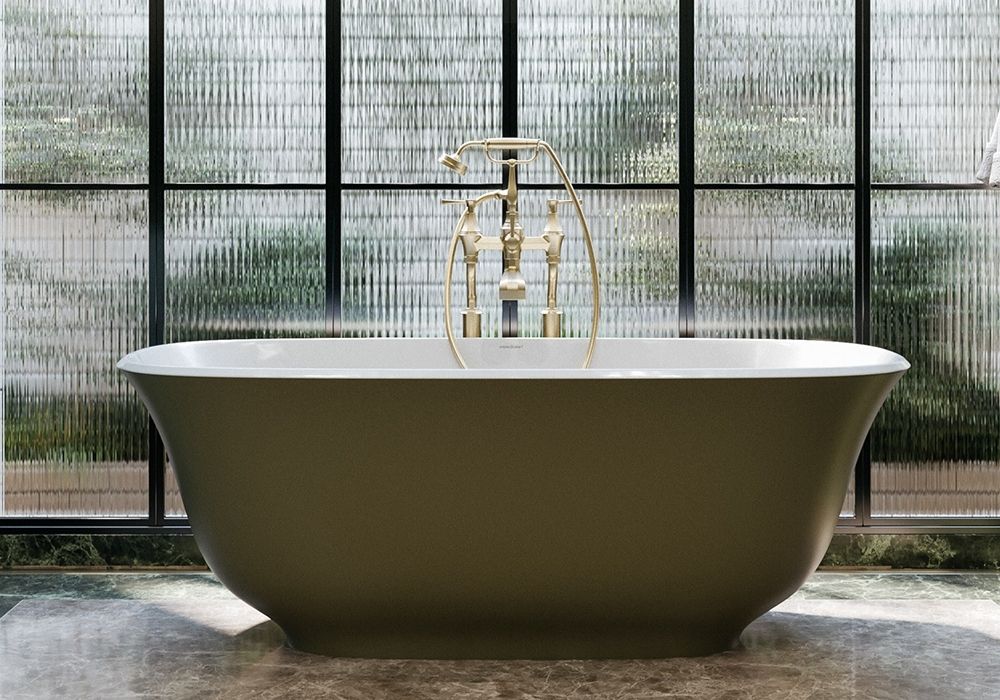
DESIGN FOR CHARITY
Fine Cell Work is a charity that makes beautiful handmade products in British prisons. Its unique products have been designed in collaboration with some of the country’s leading contemporary designers and are all hand-produced in limited editions. For London Design Week 2021, Fine Cell Work is thrilled to be relaunching Melissa Wyndham’s iconic “Pineapple” cushion in three brand new colourways. As well as this, it is offering visitors the opportunity to create a bespoke colourway, matched to their own chosen design scheme.
ORGANIC FORMS
Characterised by sculptural designs, textural surfaces and local craftsmanship, Porta Romana has long established itself as a leading global brand in the lighting and design world .
Its spring 2021 collection has a wild and fantastical feel to it, with designs that transport you to another world, combining organic forms with an element of escapism. New models, concepts and colourways come together to form a range of unique and artistic pieces, perfect for a summer house against a coloured wall.
“Large Cep” is an elegant table lamp by Collier Webb with a modernist influence that would sit comfortably alongside most design styles, offering all the playfulness of a green cartoon character.
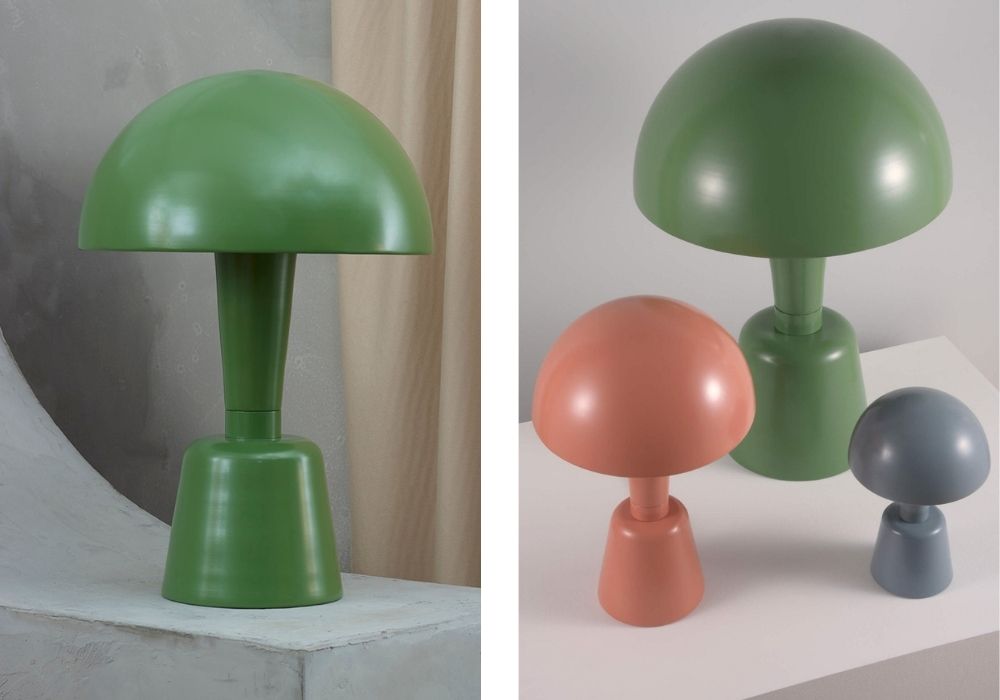
The new bed linen collection is an extension of De Le Cuona’s 100% organic. The fabric house has launched a new collection, which is designed with health and wellbeing in mind, with a perfect balance of aesthetics and ethics.
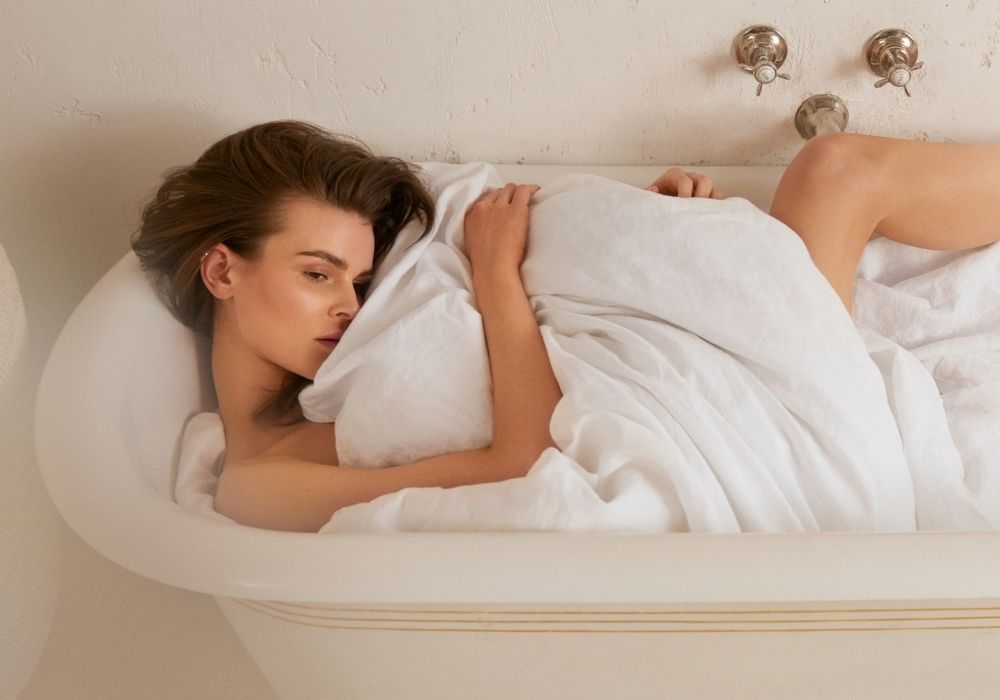
SCULPTURAL DESIGN
New to Gallotti & Radice, these “Monete” and “Clemo” tables are the work of Italian designer Massimo Castagna. Both show a flair for mixing playful design with sumptuous materials: “Monete” is Italian for coins and the table’s clever sculptural design resembles slotted-together pennies, with a burnished metal finish that is unique to each piece, while “Clemo” sits on short rounded legs and is pictured in brushed Ceppo di Grè, a rare stone known for its pebble-like surface – a natural version of its man-made cousin, terrazzo.
WILD THING
David Hunt Lighting’s new “Panther” light is perfect for interiors in need of some unabashed glamour. Available as a table or wall light, it is made from hand-cast resin in a matt black finish, before being finished by artisans in the company’s Cotswolds workshop.
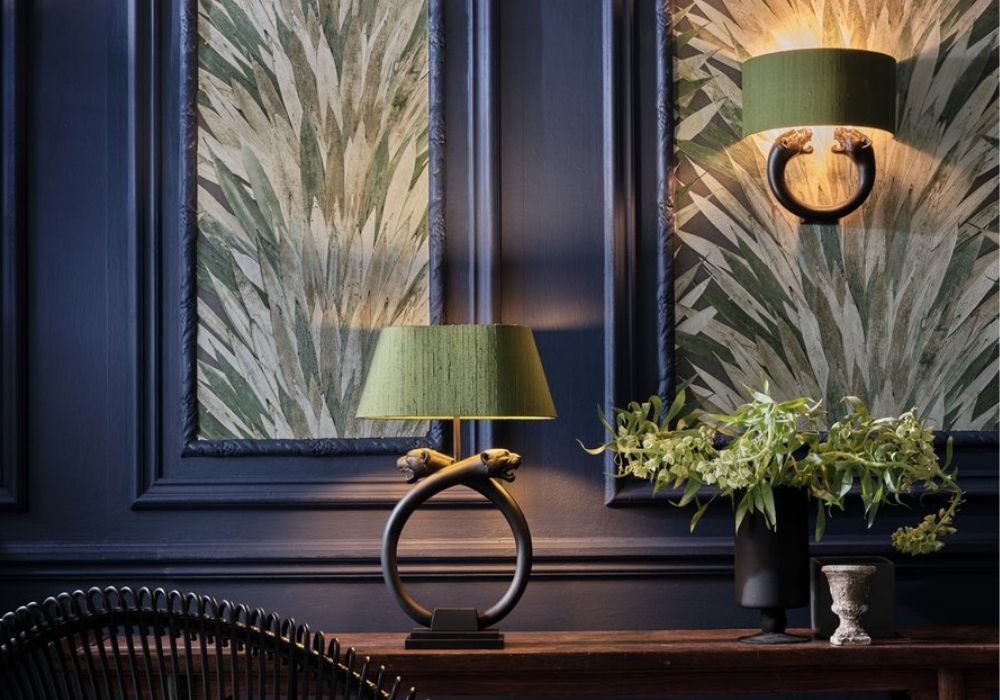
SCANDINAVIAN LANDSCAPES
The Borealis collection by LELIEVRE PARIS is an invitation to escape, inspired by the wild landscapes of Scandinavia. Consisting of one tapestry, beautiful jacquard fabrics, comfortable wool and linen loops and one fine wool twill, this is a contemporary collection of enveloping, soft and refined high-end fabrics.
HISTORY AND ART
Iksel – Decorative Arts highly imaginative approach to wallcovering goes from strength to strength, with a new collection that trains its eye on some of the most alluring scenes in art history, from Renaissance paintings to Ottoman palaces. These are then translated into digital artwork – either repainted from scratch in the studio or recoloured, rescaled and painstakingly retouched as necessary – that can be fully customised to create a wall-to-wall, immersive design experience.
The new Riviere Rugs for Zoffany collection is a celebration of artisanal hand-weaving techniques, creating bespoke rugs with an enduring style and quality. Six of the most iconic designs were selected and translated into rugs with the signature Riviere style. The results are stunning statement pieces with the power to transform an interior space.
Design Centre Chelsea Harbour has long been a catalyst of creative connections but at London Design Week 2021 a new chapter is unfolding. It is a welcome reminder of how the design community can continue to unite in a positive way.
Теxt: Anna Agapova, Creative Director, O&A London
O&A London celebrates its 20th anniversary this year! With a growing number of international projects, and to create distinctive collections of furniture, lighting, textiles, wallpaper and rugs under its unique brand, the company develops collaborative projects with amazing and talented people. We are fortunate to work with leaders in their field: people who do not see boundaries and make the impossible possible. We proudly name these creators not just as partners but as co-designers and friends.
We are now delighted to announce the anniversary project “20 for 20”. The project will consist of a series of exclusive interviews.
Today we are happy to share with you an interview with Bernie de Le Cuona, founder and CEO of de Le Cuona, a luxury interior fabric house.
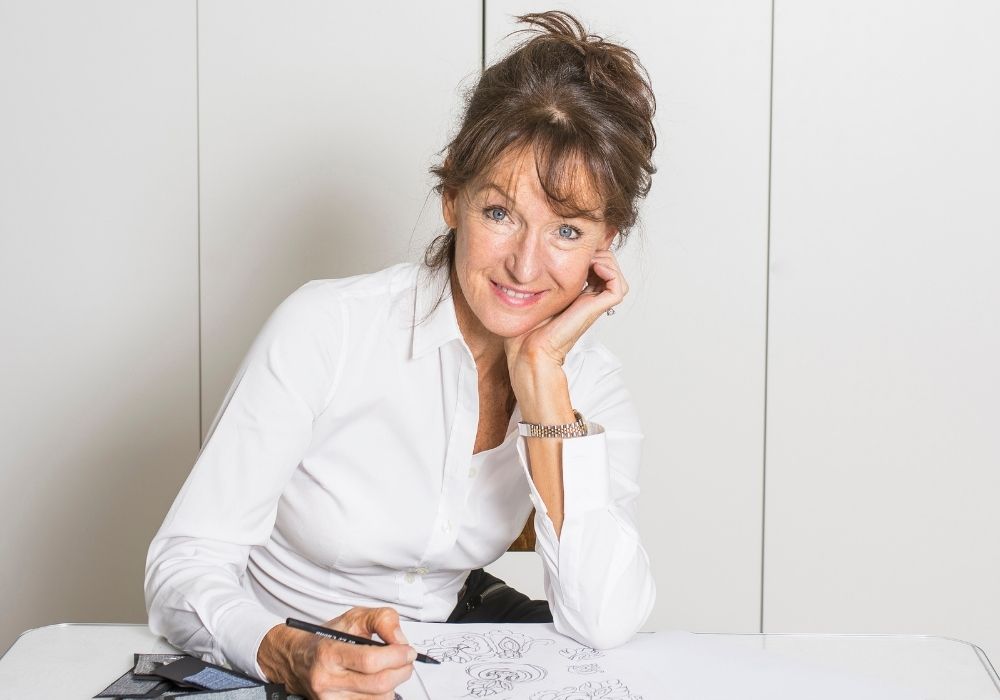
O&A: What did you dream about when you were a child?
BC: I am a prolific dreamer now and as a child, always dreaming and planning. As a child I wanted to be an adventurer and to travel to off the beaten track countries and immerse myself in their cultures.
O&A: Tell me about your path to fabric design. As far as I know I know you were inspired by the silk production techniques of Indian craftsmen. Why did you choose India for your travels?
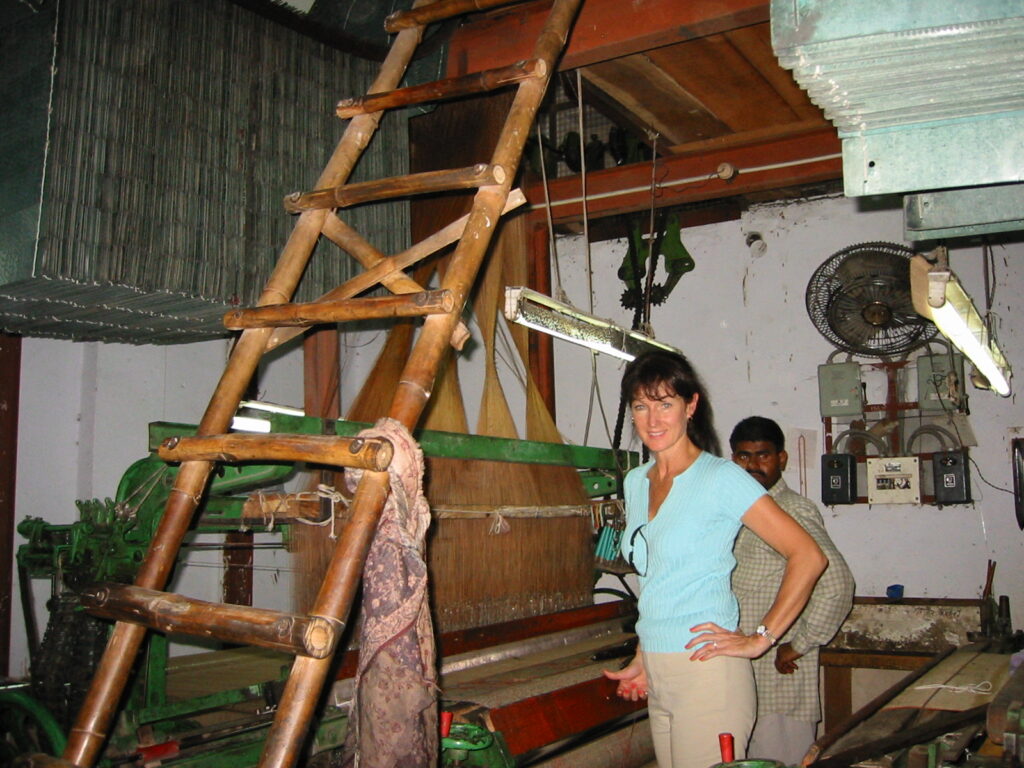
BC: India just happened to be one of the countries on my list to travel to and on a 48 hour train journey through this most diverse and exciting country I stopped in a place in the Bihar a very, very poor (at that time) state where they made handloomed Tussah silk. My curiosity got the better of me as I watched the men with bow and arrows fend off birds to keep the wild silk worms safe and then saw the very basic auctions of sacks of wild silk take place in the town. I started experimenting with the hand loomers and actually learning the craft of weaving in this dusty town. This is how the journey first began but very soon I realised that I wanted to weave linen of the highest quality so I moved to Europe where I could use the experience and passion of the weavers to produce authentic but high quality products. That was the very beginning but of course so much had to happen subsequently to grow into the company we have today.
O&A: The company was founded 25 years ago, and you now have showrooms all around the world. What is the secret of your success?
BC: It’s hard to choose one thing but having a philosophy of ‘no does not mean no’ truly loving every aspect of the business from the creativity to the finances, being constantly curious, total determination and most importantly a great team has certainly played a big part in the success.
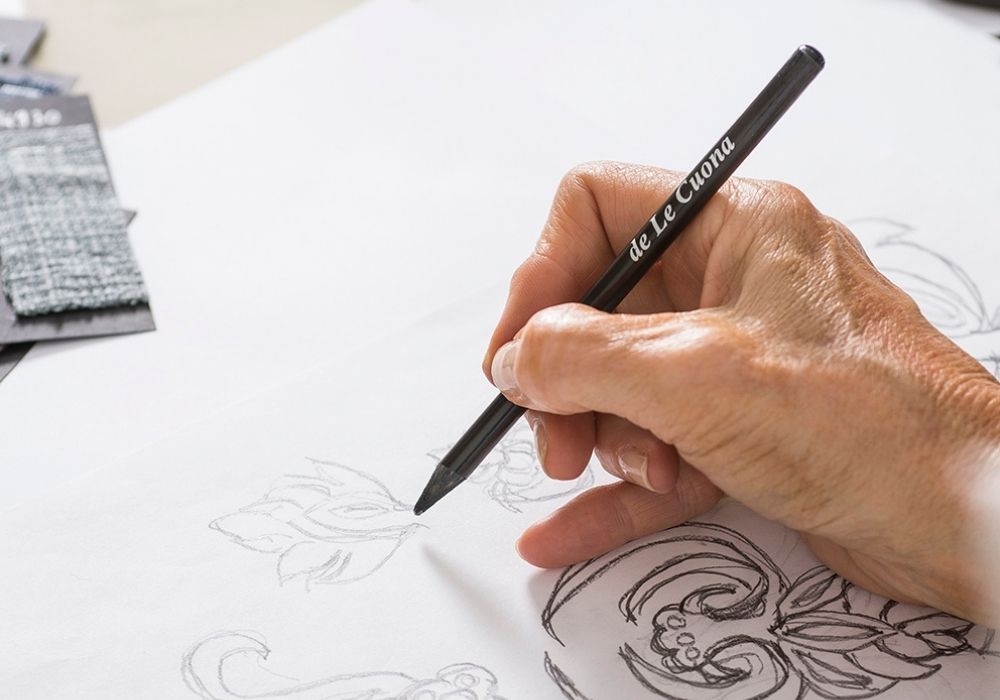
O&A: You appear to have a passion for linen. What is so special about this fabric? Many of our clients are unsure when it comes to linen because it is easily creased.
BC: Yes I love linen, it is so versatile. It makes beautiful really heavy upholstery, fine delicate sheers, takes colour like no other natural fiber and good linen only improves with time. It creases as it comes from a plant however with the treatments we use the creases fall right out. It is so versatile that we can emboss it, stonewash it, lacquer it paint it the list goes on and I constantly find other ways of manipulating it to create new atmospheres in interiors. Our last collection of linen consisted of organic linen certified to very high standards by the Global Organic Textile Standards. This is a new departure for us, linen that is organic that contains no harmful chemicals and also takes into account the environment and our social responsibility and is a sustainable crop.
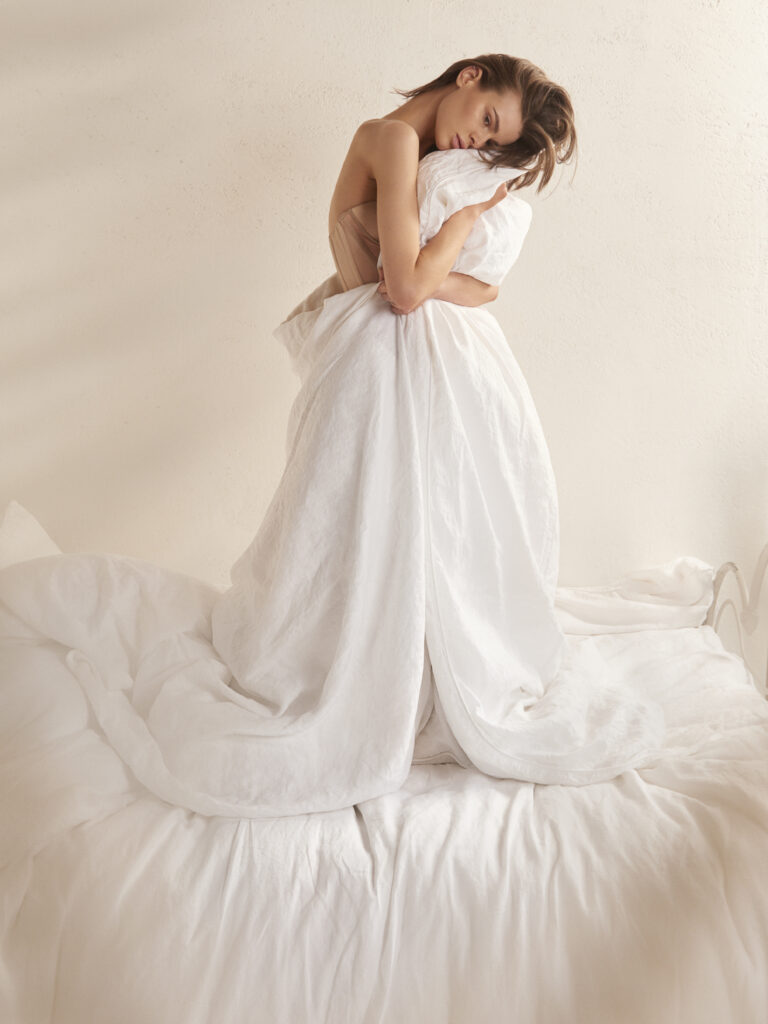
O&A: What inspires you when you create a new collection?
BC: Could be anything, a new yarn becomes available or we come up with a new technique. It’s usually an idea which grows as we talk to the mills and explore possibilities together. Our products are not only linen and could be natural fiber combinations. The way we produce cloths allow them to last for years, we have a number that have been in the collection for 20 years and are still sort after. We do not print but only weave and we also make up our color pallet we never use an industry standard like Pantone. The colours certainly come from nature. I have been known to come back from Africa with samples of wood I may have picked up in the African bush or a dried fruit or a feather anything that translates into a pleasing hue.
O&A: When de Le Cuona launches new collections do you keep in mind which market it could be for? Are all your collections aimed at the global market or do you divide them for Europe or USA?
BC: We produce one collection and find that it sells everywhere the only difference could be the colour choices vary from market to market.
O&A: What is more important – colour or texture?
BC: They are of equal importance but I do know if I have a wonderful texture in a ‘bad’ colour it will not sell. I think certain structures and textures look wonderful in specific colours when the same colour could look really dull on another texture or fiber.
O&A: What are the colour pallet trends for 2021? Is there a difference between European and US markets?
BC: For de Le Cuona it is a range of ivory, honey, tan, camels, ochres all the way through to saffron and terracotta’s and for the US markets specifically navy blue and teal.
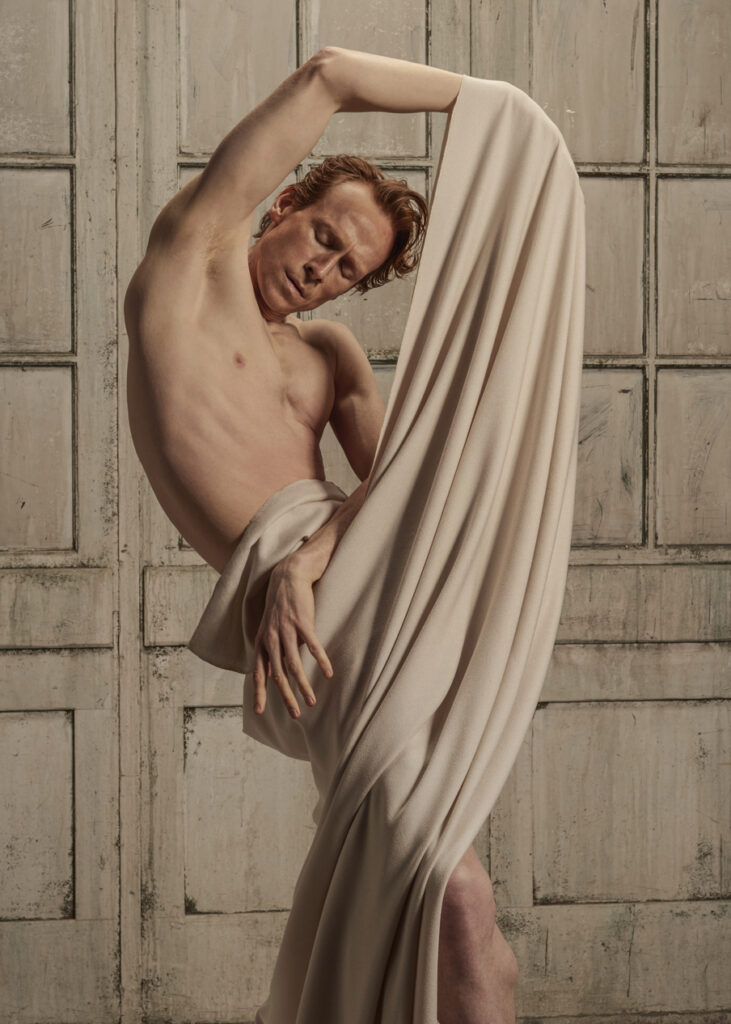
Edward Watson, principal dancer at The Royal Ballet
O&A: Who in the industry do you particularly admire?
BC: That’s tough and I work with too many great talents to choose.
O&A: Do you remember when you first met Anna Agapova and when you started cooperation with our studio?
BC: It was in Moscow at one of our launches and I knew immediately she was one to watch.
O&A: How do you see the future of the fabrics industry?
BC: I strongly believe that the craft and art of fabric making will become important to designers and appreciated by their clients. I think the market will learn how destructive some fabric production can be to our environment and ourselves and traceability will become important. The buyer will be more discerning and fabric companies will change accordingly.
O&A: What are you dreaming about today?
BC: Continuing to work on our animal conservation project in Africa and our new September launch which is African inspired and quite different for us.
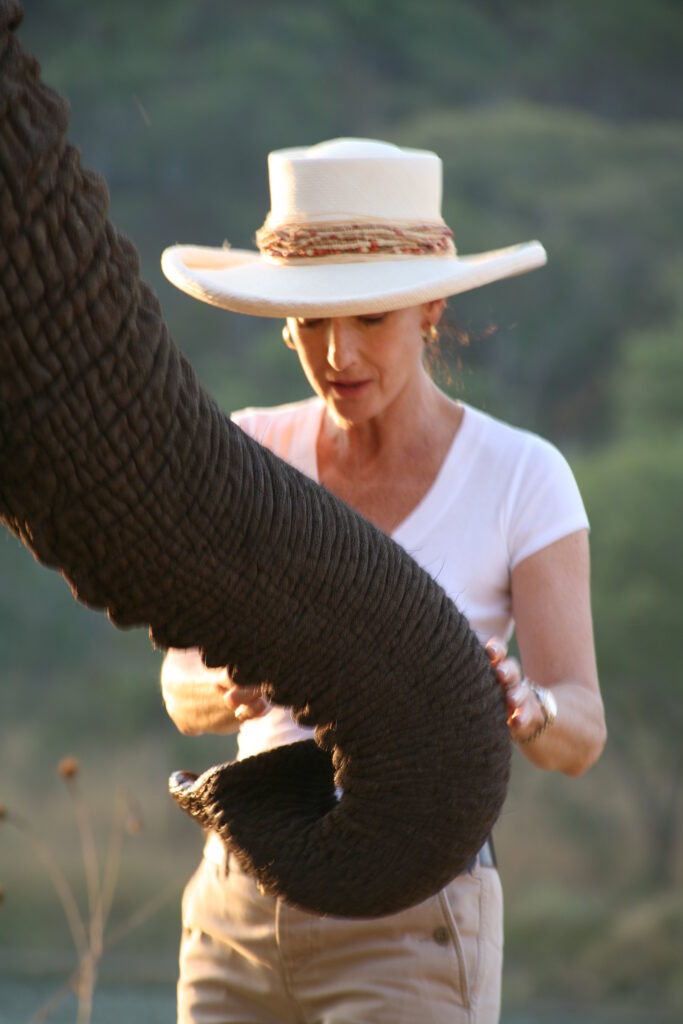
The chaise lounge or, what the French more accurately termed “chaise longue,” translated as “long chair” – has an exceedingly long history that spans much farther than the chair’s length. Today a chaise isn’t seen as a typical furniture requirement but a luxury or novelty for the modern home. They are often used to complement a home’s décor outside of the bedroom.
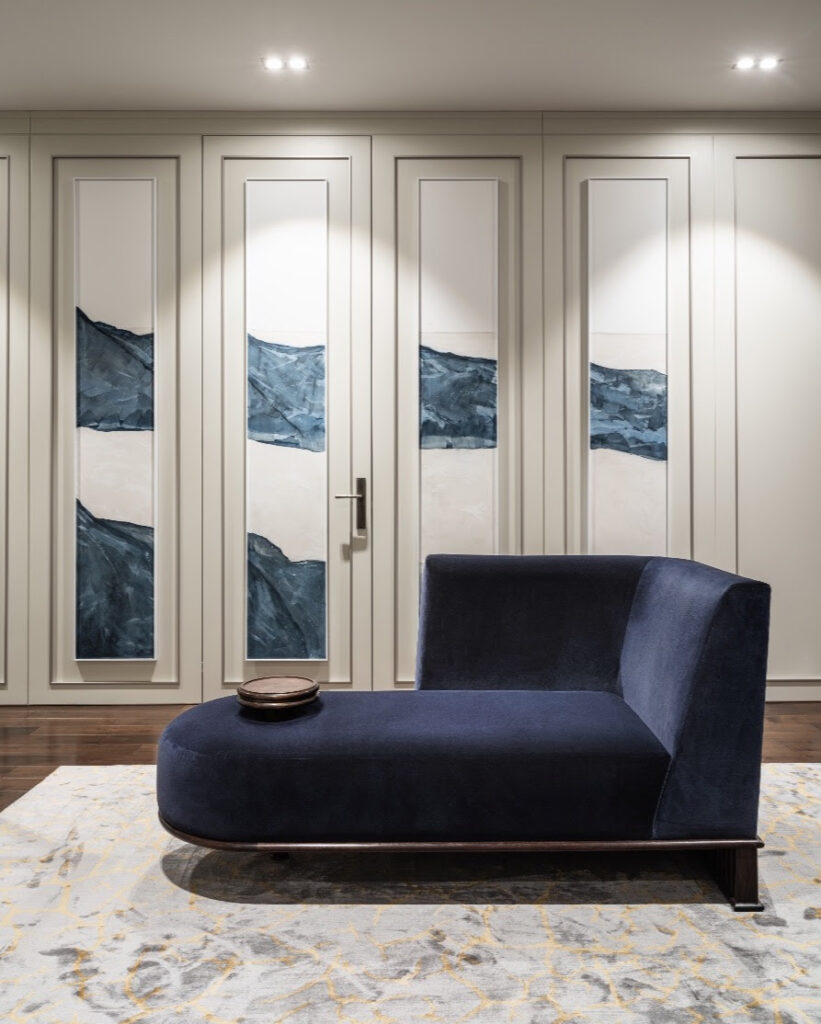
Successful design collaboration with the artist Stacie McCormick helps us to keep space fresh and current. Inspired by deep ocean colours of her artworks decorating the wardrobe panels and the velour upholstery of the chaise echo each other perfectly.
A special edition of our DELPHINI chaise for a new residential project is a part of our Synthesis furniture collection created by Oleg Klodt and Anna Agapova together with the Odd Chair Company.
Deep indigo blues have found a prominent place in the interior. The trend began last year when Pantone declared “Classic Blue” its color of the year. Using the right amount of blue can make a space feel relaxing and welcoming – too much, however, can bring a sense of melancholy. To avoid that, make sure you use plenty of accent colors and textures throughout the space. Most important, make sure every space has plenty of natural light.
A chaise is always an interesting decision when the end goal is to keep a functional consistency while offering a beautiful ergonomic interior. Contact us to request information and quotes.
London, Paris, New York and St. Petersburg are the four cities that inspired architect Oleg Klodt and designer Anna Agapova. Using images from architecture and nature, the designers created an eclectic mix of patterns, that convey the movement and emotions of urban spaces.
The Cityscapes rug collection is created in partnership with Manufacture de Tapis de Bourgogne, a renowned French company that has been producing handcrafted rugs since 1958.
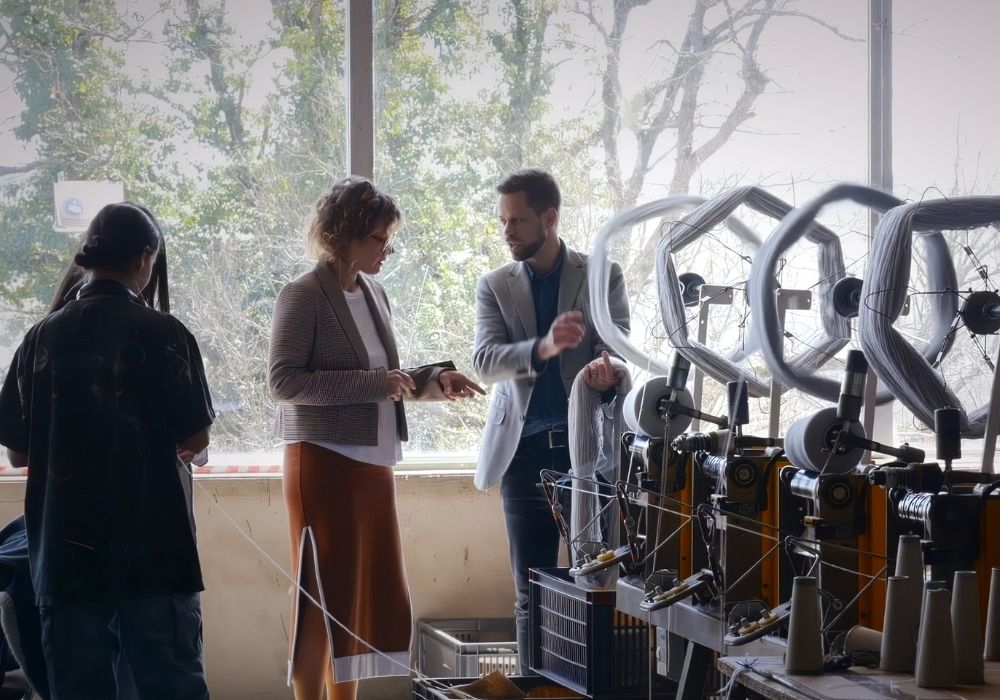
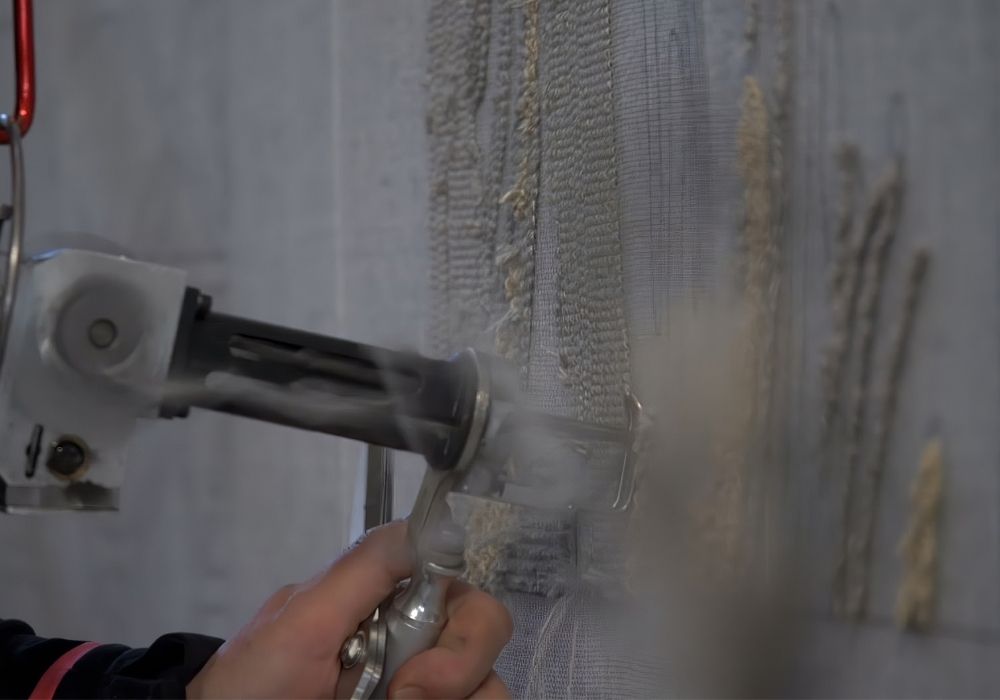
The aesthetic impact of the collection is a result of the harmonious marriage of the two designers’ different creative visions. Both bring very unique ideas and talents to the table and for many years they have collaborated very successfully. Oleg’s sharp architectural eye and Anna’s sensibility to nature complement each other perfectly. Together, they are able to create objects of great beauty and high aesthetic value. This collection is one of these examples: four cities and five designs tell a magical tale of travel and inspiration.
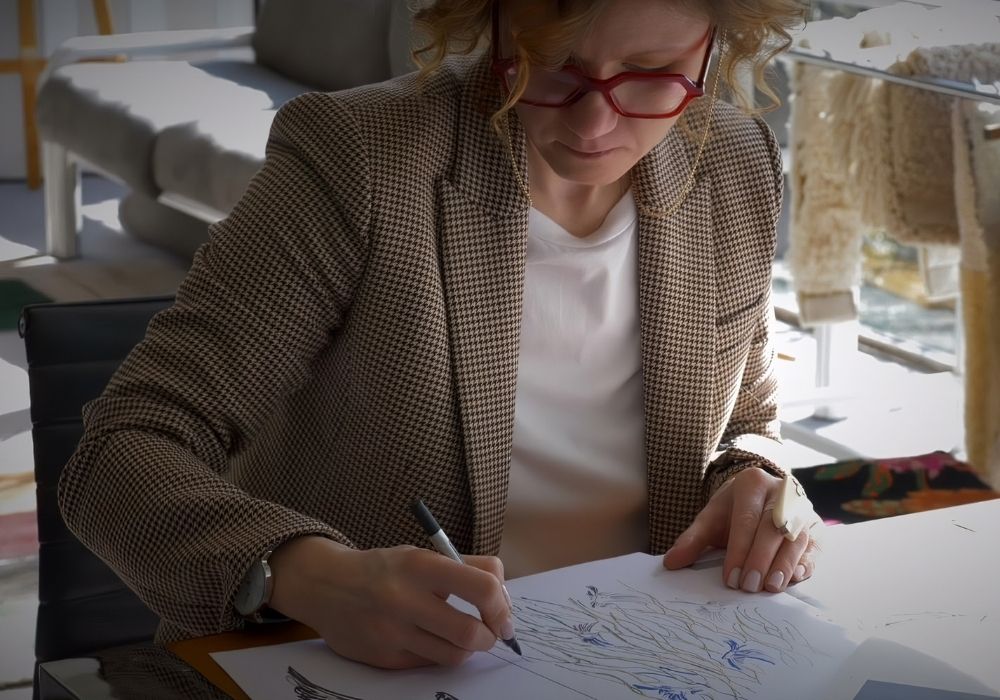
London’s parks are famously and elegantly woven into the city’s fabric: centuries-old trees offer refuge to birds that never leave the city. It was that image of the birds, always ready to soar into the sky, that found its way into Anna Agapova’s drawings. These were created in the style of Jackson Pollock, the master of abstract expressionism. This pattern is a graphic expression of the ornamental lines representing the firmness and the movement of the branches and, of course, the birds taking flight.
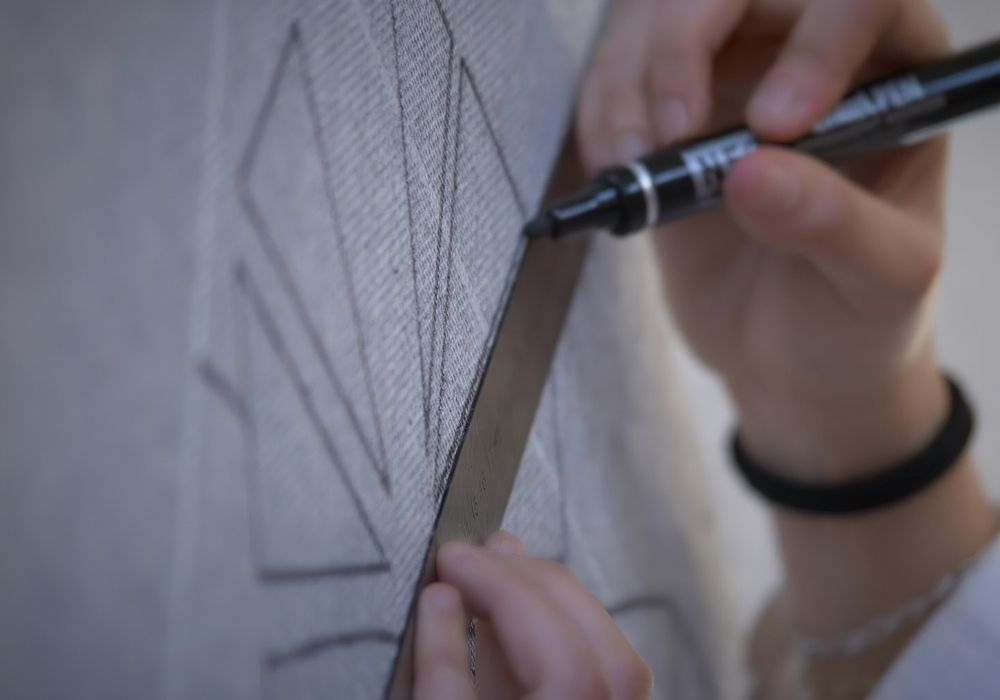
The starting point for the creation of this design was stone vaults of Gothic chapels in Paris. The graphic structure of vaults as if woven from stone lace, giving a sense of lightness and elegance, inspired designer Anna Agapova to create a dynamic drawing full of decorative details and ornate patterns. The harmony of form and light is embodied in the design, defining the essence of beauty.
Fire escapes adorning the buildings of New York became the inspiration for this design. Although these ladders are not rare in American cities, only New York displays them proudly on the front of the buildings. Inspired by the play of lacy shadows on the classic facades in Soho, designer Anna Agapova decided to recreate this exciting feature in form of an ornamental rug.
THE NORTH OF THE VENICE DRAWBRIDGES
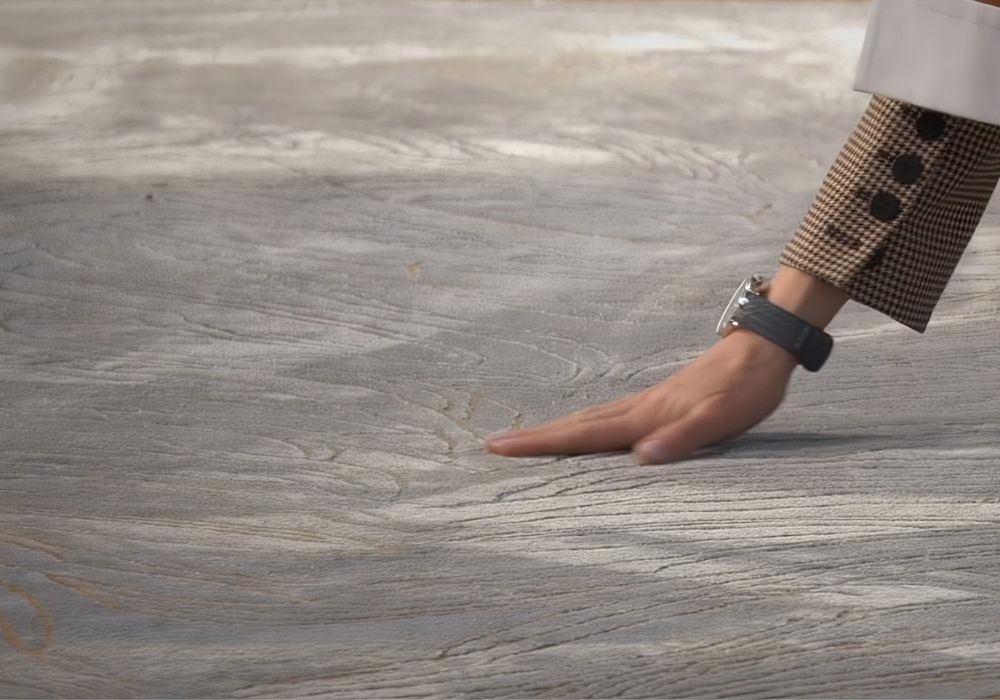
St. Petersburg, which is often lovingly called ‘Venice of the North’, is strongly associated with its drawbridges. Looking at the design of this rug, one can see a boat passing under a bridge. This design was created by architect Oleg Klodt when he explored the synergy of architecture and water.
The northern capital of Russia is not only famous for its drawbridges, embankments and gardens but also for the beautiful railings surrounding them. The snow-covered ornamental metal railings of Mikhailovsky Garden were the inspiration for this rug pattern. Through the softness of the lines, designer Agapova Anna conveys the peaceful feeling of the wintery park and its mesmerising tranquillity.
The possibility of product customisation further adds to the very unique character of this collection. Given an option to change the colour and size our clients can become co-authors of the story narrated by Oleg and Anna.
The rugs are entirely made of natural materials such as silk and wool.
The collection resembles illustrations of a travel book.
Press requests alla@oa-london.com
The winners of the Best Russian Interior Design & Architecture AWARDS 2020 announced last December, received the long-awaited awards at the ceremony in Moscow on March 31!
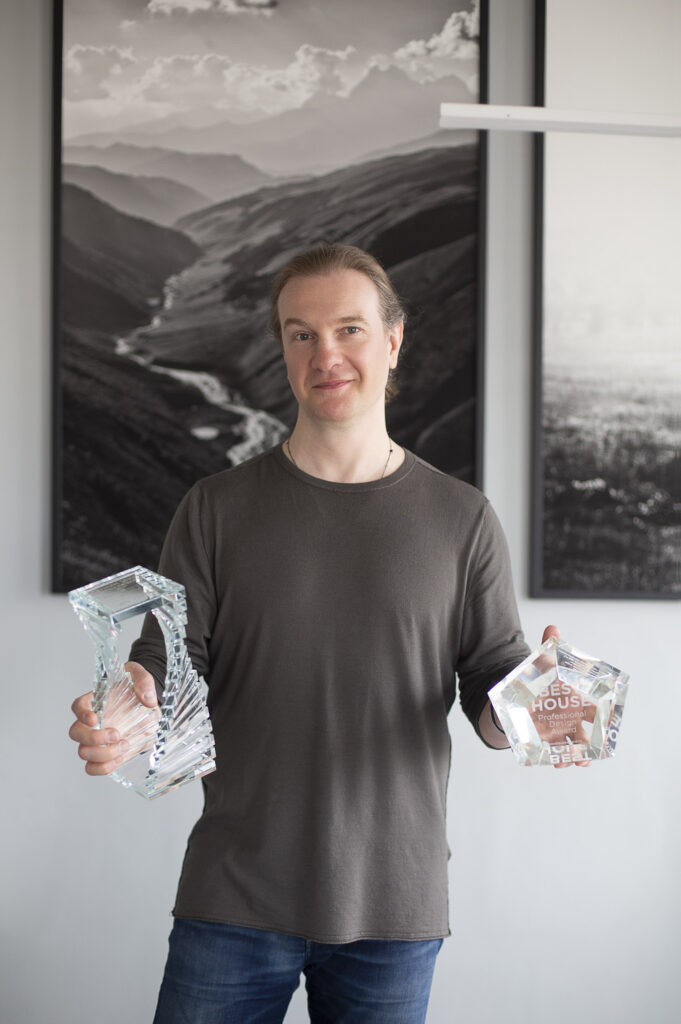
The SPA complex in country house Pokrovskoye-Rubtsovo won the BEST HOUSE Professional Design Award 2020, Spa Complex nomination.
In addition, Oleg Klodt was named a winner of the prestigious Premium Living Design Award for the project of his own apartment.
It is an honour for us to be acknowledged by the most prestigious professional awards in Russia!
It is statistically proven that an average person spends about 90% of their time indoors. Therefore, it is not surprising that more and more scientific studies demonstrate that design, construction and operation of buildings directly affect health. Air, microclimate, water, light and decorative materials have a powerful effect on both the physical and mental state of people.
Terms like health and wellbeing are becoming increasingly prominent in the world of interior design. In the same way that sustainable design is all about how a building affects the outside environment, the salutogenic approach to design focuses on how a building affects its inhabitants. One looks on the outside, and the other looks inside, but both strive to create healthy environments.
Nowadays we pay more attention to a wellness concept within our work, with a focus on encouraging active health, productivity, and efficiency. Together with our clients we answer questions on how we encourage a better quality of life. How do we implement a holistic approach? How does the workplace activate health?
Good design improves mental health
It sounds incredible but the physical environment is like an extension of our brain and leads us to certain actions while preventing us from others. It makes us feel things, changes our behavior and even regulates our health.
Integration into nature-inspired design has beneficial effects on our well-being. We always use natural materials and plants to imbue a space with a warm and relaxed atmosphere. Gardens have been shown to engender soothing, calming and restorative activity in the brain.
Good design improves physical health
The salutogenic approach to design is all about encouraging active health rather than merely treating illness. In our interiors we create a strong, enduring and positive relationship between an individual’s health and their physical environment. Our physical environment has a key role to play in improving health outcomes. For example, dynamic and diffused lighting, akin to dappled sunlight, or sounds of nature, like a babbling brook or softly chirping crickets, can positively affect your well-being.
Thought-out navigation can easily improve the physical state – stairs and swimming pool encourage a person to be more physically active.
Careful selection of materials is crucial, since indoor air quality is largely dependent on this. When choosing finishing materials it is important to pay attention to certification, which would confirm compliance with quality standards.
We pay more attention to objects. For example, custom timber furniture, or mattresses made using natural, biodegradable latex are chosen in order to improve and maintain the health of our clients as well as the health of our planet.
Good design enables creativity
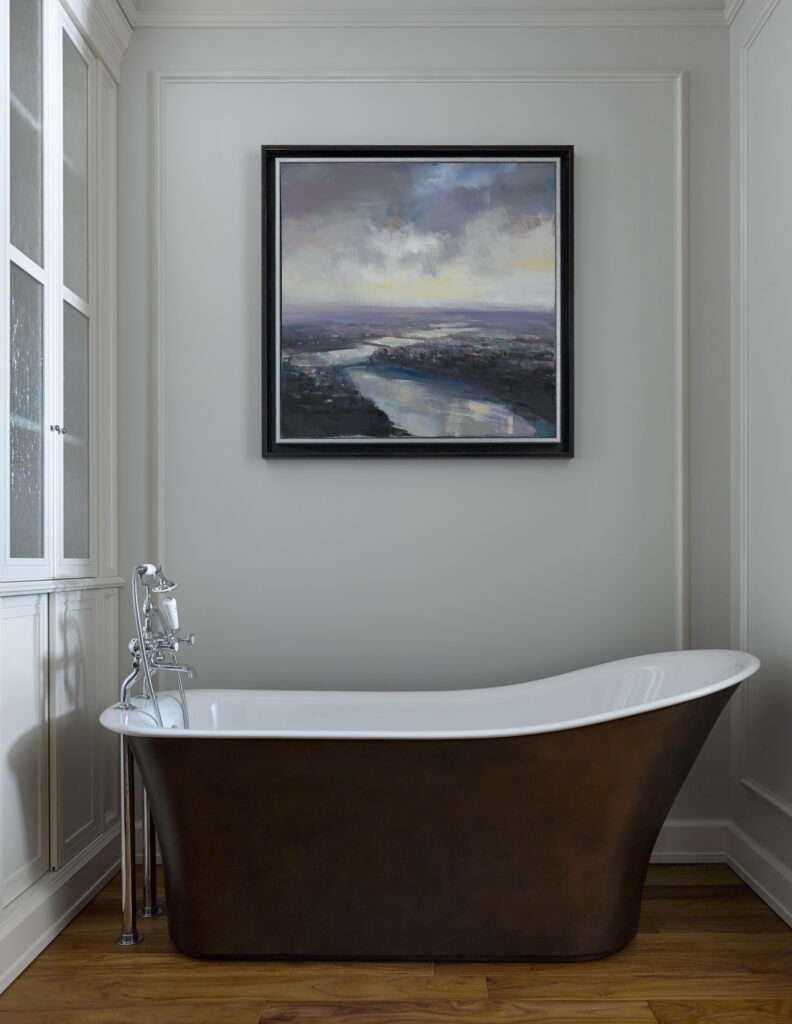
We are no longer simply finding design solutions; our work is now focused on creating designs that make a lasting contribution. A smartly created interior encourages people to operate at peak performance, both mentally and physically. We design interiors that stimulate people’s creative thinking, memory and associativity.
Integration of art into our interiors helps create an environment that stimulates the mind in order to create pleasure, creativity, satisfaction and enjoyment. When a person observes and appreciates different visual scenes, such as a piece of art, complex cognitive and emotional processes are triggered. It evokes CREATIVE energy.
Good design improves learning
When the environment fails us, we suffer and tasks appear difficult or dull. We find ourselves under physical and mental pressure – so much so that our motivation and health can become casualties of poorly designed workplaces, homes and urban environments. It is difficult to overestimate the role of books and home libraries. Rare books in beautiful shabby covers on the shelves play a very important role not only in creating stylish vintage interior, but also in increasing productivity and learning motivation.
Design can be used to subtly moderate behavior
Salutogenic design is geared to help our clients fell the nexus between health, behavior and architecture. Salutogenic design principles are able to reduce violence and absenteeism while improving social contact, creativity and even sales. It should become the key element in creating commercial interiors like offices, retail and public spaces.
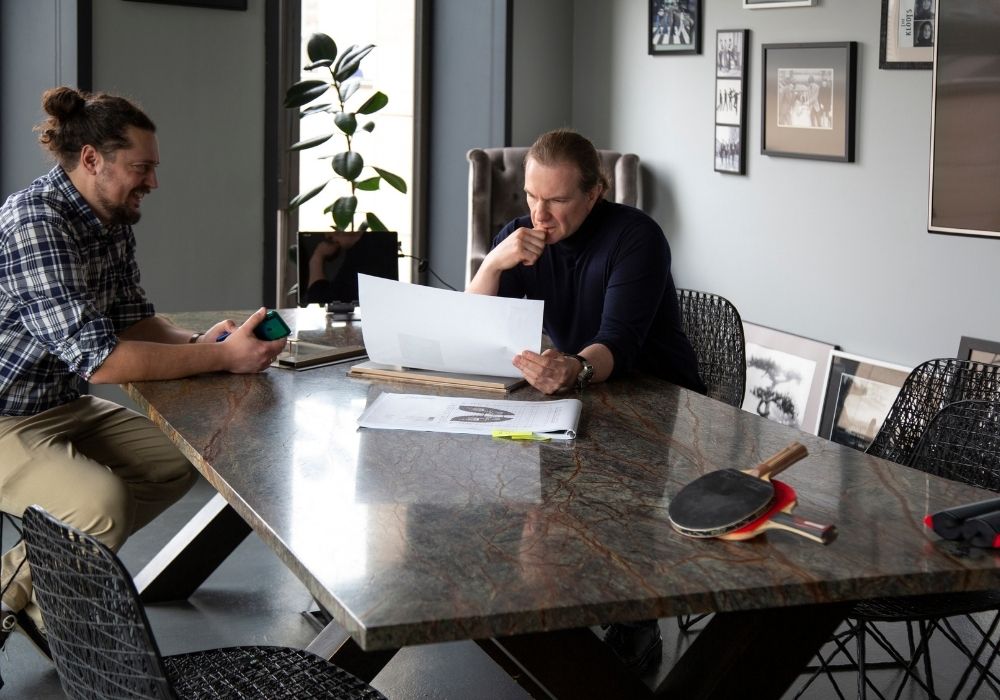
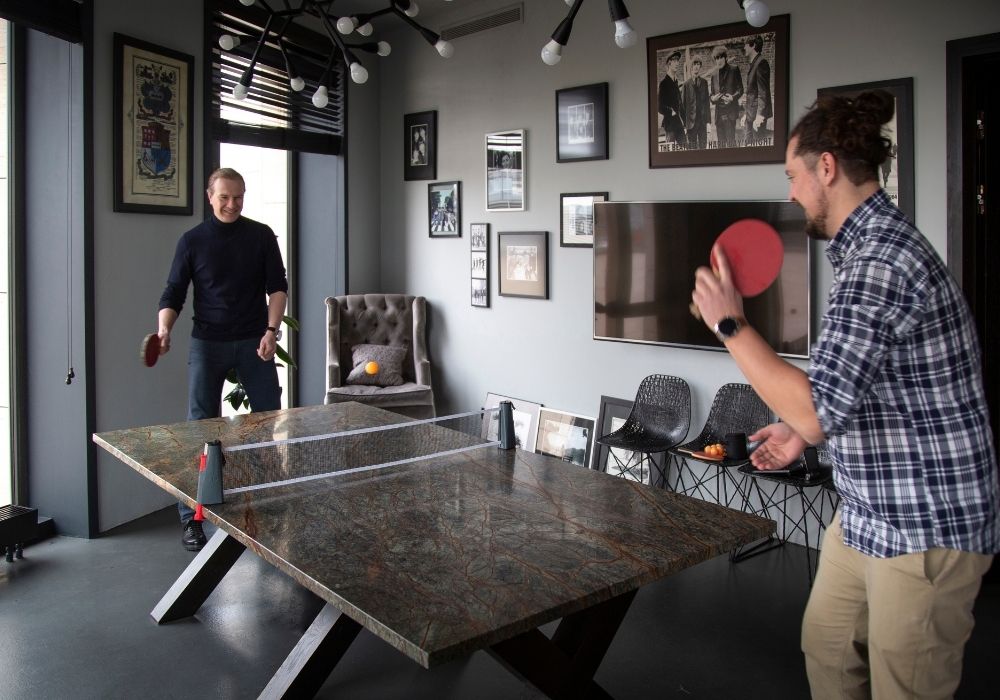
It’s all about the person we’re creating it for, because that person has an emotional life that we have to nurture with the interior. All our interiors are designed just for our client to write his/her algorithms of life. We create purity and light within the space, a certain smell and a sense of nature; create spaces that resonate with the person’s needs and feelings.
We believe that the salutogenic approach to design will become the design trend to watch out for, in the same way that biophilia has been for the past few years. We are no longer simply finding design solutions; our work is now focused on eliminating several problems at the same time. We create interiors designed to thrive.
O&A London celebrates its 20th anniversary this year! With a growing number of international projects, and to create distinctive collections of furniture, lighting, textiles, wallpaper and rugs under its unique brand, the company develops collaborative projects with amazing and talented people. We are fortunate to work with leaders in their field: people who do not see boundaries and make the impossible possible. We proudly name these creators not just as partners but as co-designers and friends.
We are now delighted to announce the anniversary project «20 for 20». The project will consist of a series of exclusive interviews. Today we are happy to share with you an interview with Kristin Fradenburgh, a creative director of Holland & Sherry.
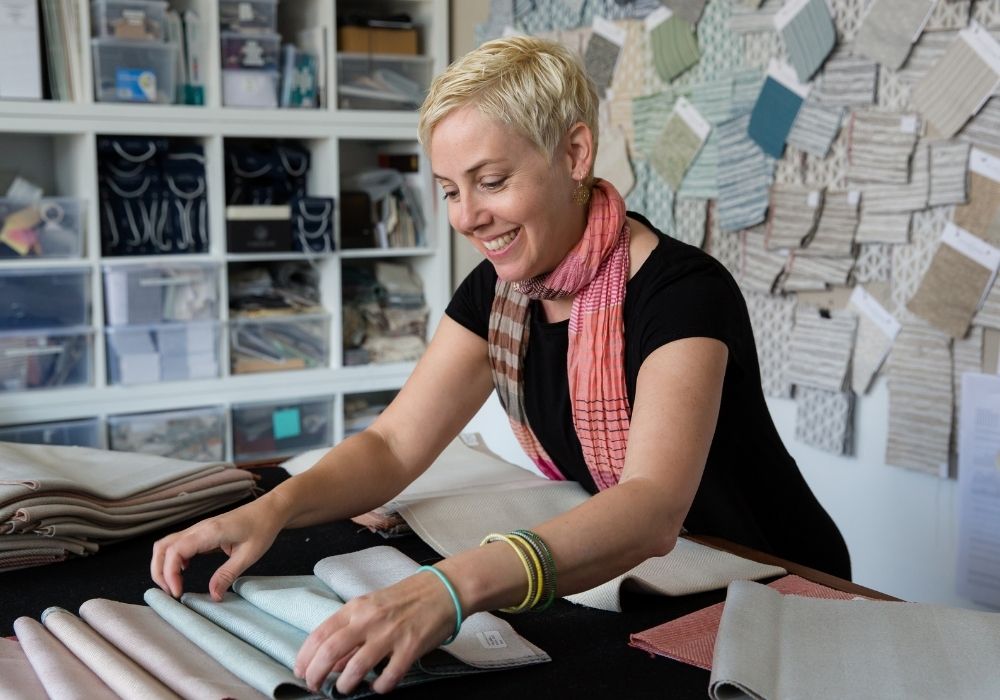
O&A: What did you dream about when you were a child?
KF: I’m not sure what I dreamt about anything as a child. My reality was so interesting that I think I stayed routed there. At a very young age my family moved from our suburban Philadelphia home to Romania. My father worked for a computer company and he was part of the engineering team that was assigned to design, build and start-up a factory to build mainframe computers in Bucharest, Romania. Living in Romania was such a different world from my childhood home that it was endlessly fascinating. The culture, people and thriving international community kept my mind occupied. My family was able to travel frequently to other countries so we visited major capitals in Europe and explored the museums, cultural and historic sites as well as traveled throughout the Romanian countryside. This experience opened my eyes up to a much larger world and had a major impact on the rest of my life.
O&A: Could you please tell us about your professional path that eventually led you to Holland and Sherry?
KF: I have always been a maker and inclined to artistic pursuits. Sewing, knitting, crochet, ceramics, drawing and painting were how I entertained myself as a child. I have a creative family; my father made furniture, wood block prints and sculpture and my mother and aunt were painters. In his career, my father was an engineer so I was exposed to the practical side of the arts through manufacturing and design. When I was looking for universities to continue my education I discovered that I could study textiles and from that point on weaving has been my passion.
I studied weaving and textile / surface design in Philadelphia and Scotland and started working for a mill my senior year of high school which continued through my years in college. My first step into the industry was in the contract/commercial arena. I mainly worked for textile mills designing woven dobby and jacquard fabrics for many of the large USA contract companies.
My weaving skills brought me to Holland & Sherry to work with our mill in Chile. I developed fabrics for our wholesale division and worked with Bryan Dicker to develop fabrics for the H&S collection.
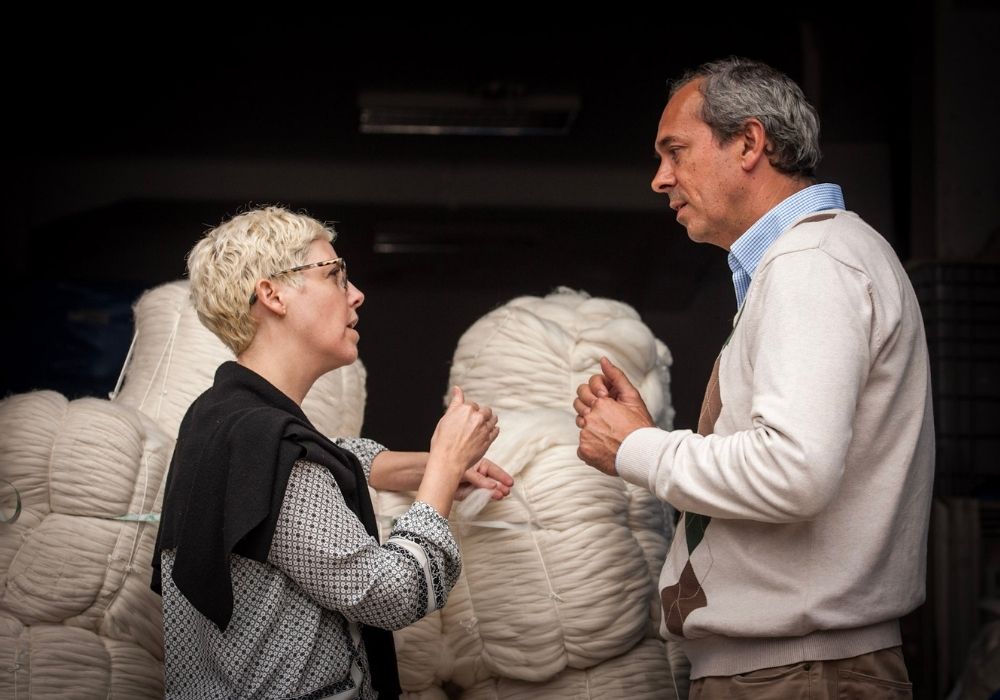
Bryan and I have a collaborative understanding in regards to product design and have enjoyed building the fabric collection together for the past decade.
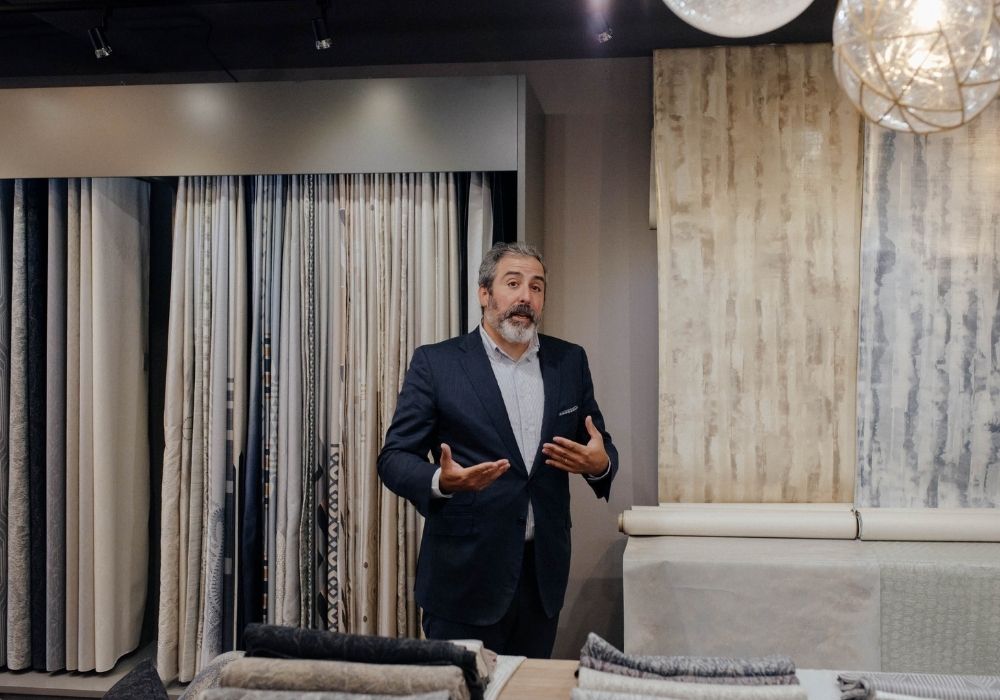
O&A: Holland and Sherry has almost two-centuries experience in exclusive textile production, and the company is still unrivalled on the world market. How do you manage to keep a leading position for such a long time? What is the secret?
KF: Approach the product with integrity. Our core values are quality and craftsmanship. We start with the finest natural fibers, engineer the weave and fabric construction to its optimal performance and go from here. We have been faithful to Holland & Sherry’s tailoring heritage and interpreted that into interiors. We also have fun while doing what we love and that shines through in the product.
Q: Holland and Sherry has sales offices in Great Britain, Europe, North and South America. Could you name the most important differences between these markets?
KF: Color. It is both similar and very different. Our top neutral colors sell universally. We also focus our collection on classic qualities of plain plus textures and these have a worldwide appeal.
Q: Which colors and designs are more prevalent in Europe and the USA? What are the preferences in these markets?
KF: Colors are more specific to region and we see Europe liking bold and nuanced colors while the USA still likes the lighter, cleaner colors. The whole palette is warming and shifting which we haven’t seen in a while. I’m not sure if this past year will slow that a bit but it is happening.
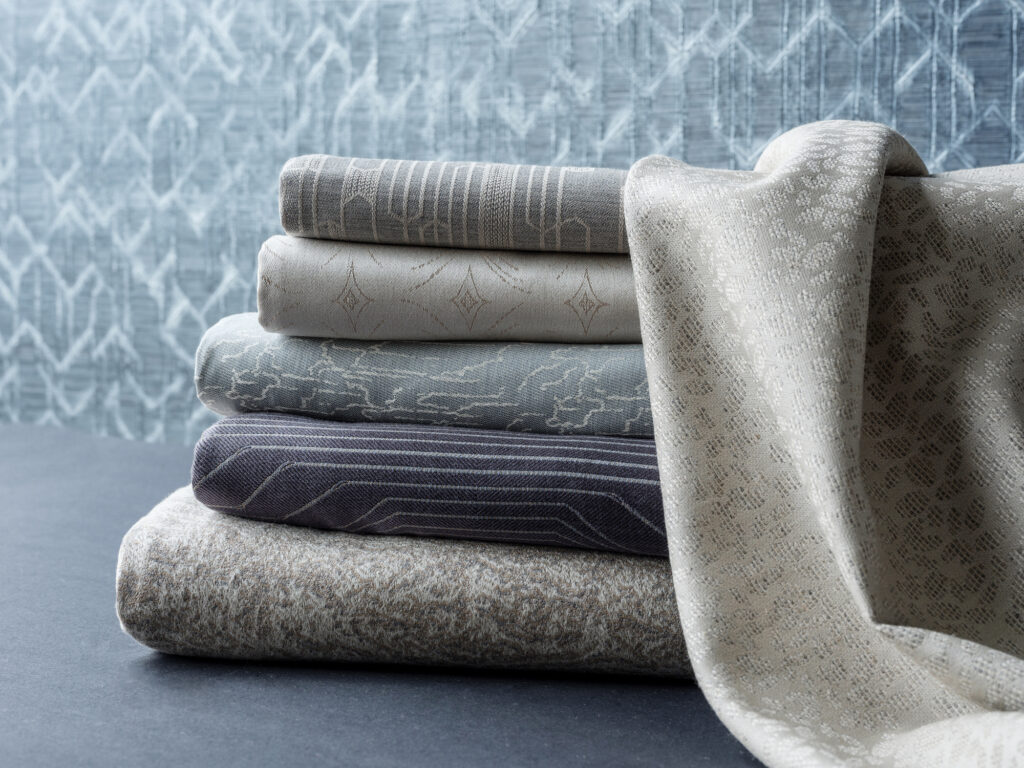
Q: Tell us about your collaboration with O&A London? Was this project with Anna and Oleg interesting for your company?
KF: We found it very interesting. Whenever we collaborate with designers we learn and are inspired by their passion and creativity. Both Oleg and Anna created beautiful drawings for their collection and had a clear vision for interpreting them into fabric. Their affinity for the Scottish countryside resonated with us and created a natural synergy between the two companies.
Anna had a real desire to learn the intricacies of creating a woven fabric. She was fascinated by the mill and the manufacturing process and involved in all aspects of creating the fabrics. She visited our home office in Peebles Scotland and travelled to our mill in Chile which enabled us to make quick design decision on site while the trials were in progress. She also challenged us to go beyond our previous limitations and use new.
CALEDINOA: Holland & Sherry Manufacture from O&A London on Vimeo.
Q: What inspires you in your work?
KF: I think that passion and the curiosity come from within. I am constantly inspired by the world, culture and my surroundings but there is a drive to create and make that can only be intrinsic to one’s self. That said… family, friends, colleagues and fellow designers do inspire me every day.
Q: What are the latest trends in fabrics?
KF: We don’t follow trends. We stick to classic, good quality and I think that actually is the trend.
Q: What is the future of fabrics industry?
KF: I think sustainability is the future of all manufacturing. Making things that have purpose and will not be here forever. Working with natural fibers and materials and being respectful in the cultivation and use of these resources.
Q: What are you dreaming about today?
KF: I keep it simple. I live by a lovely lake and this peaceful environment fills my dreams and daylight. The birds, wildlife and beautiful scenery right outside my door is enchanting.
We live in extraordinary times. The year 2020 turned out to be remarkable for the entire world. It was a time of change, discoveries, rethinking and opportunities to start something new. The pandemic, followed by a world-wide lockdown, brought changes for all of us. And on top of that astrologists are talking about upcoming global changes of planetary scale! The “earth” era is being replaced by the era of the “air”. No one knows exactly what this means but we are preparing ourselves just in case while trying not to even think about what politicians and psychologists are talking about…
While locked in our homes in the Spring of 2020, many of us rediscovered our apartments which during 2020 transformed from being a home into a fortress. Having suddenly realised our own vulnerability we started thinking about changing our interior – completely or even just a little – in order to feel safer. And willingness to change is already reason enough.
Here we will talk about how interiors can boost endorphins and motivation, or calm and protect when required.
Nature
Private gardens, nature themes in textiles, rugs and wall coverings, natural colours, wood and stone textures. We are part of nature and therefore we compensate in our home’s interiors everything in nature we have limited access to. Contemplation and silence followed by sustainable consumption.
Healthy home
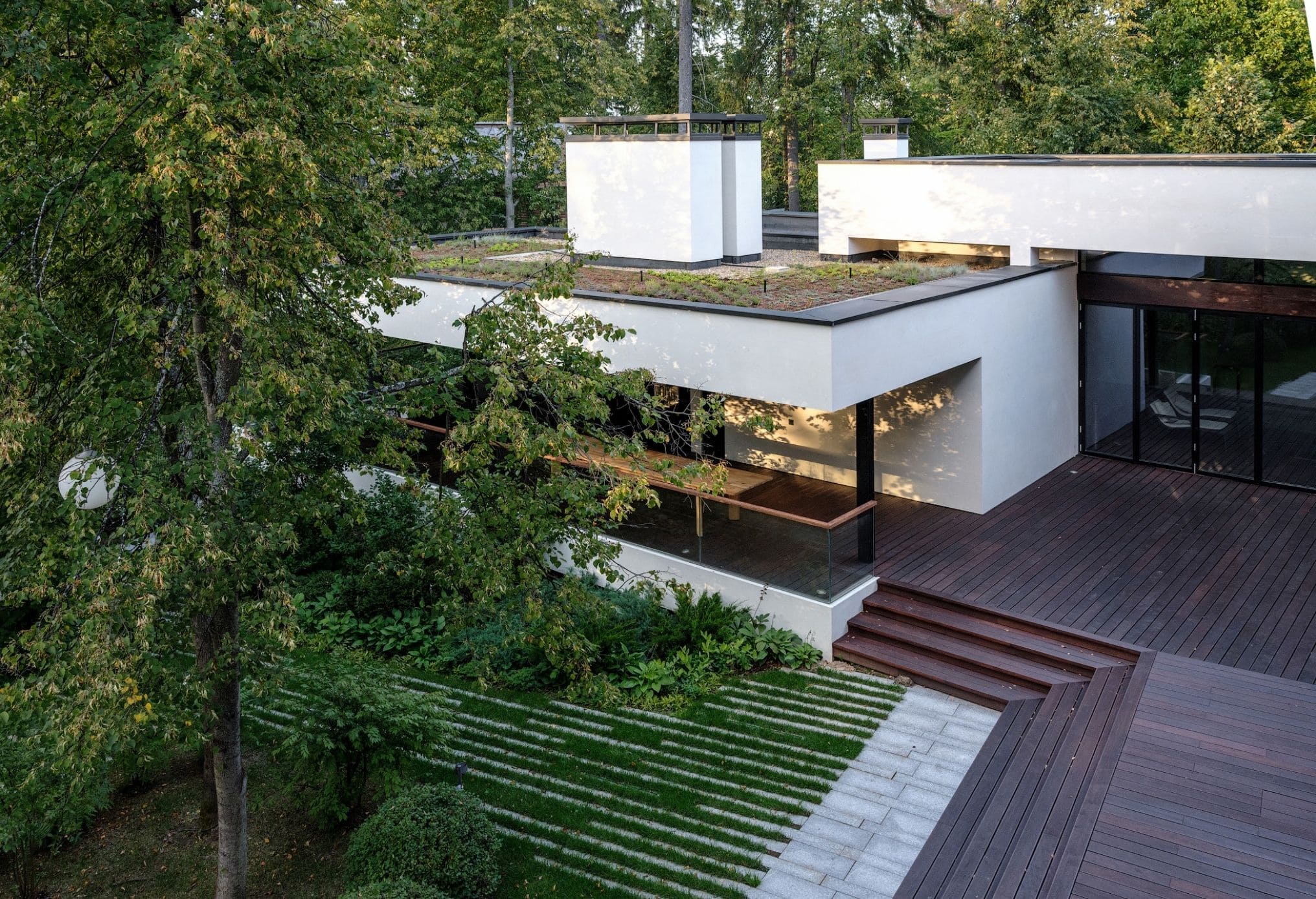
In 2021 everything to do with health will be gaining momentum. Eco and recycled materials, new air filtration technologies and sustainable consumption and design will become an integral part of our homes in the near future.
Travel
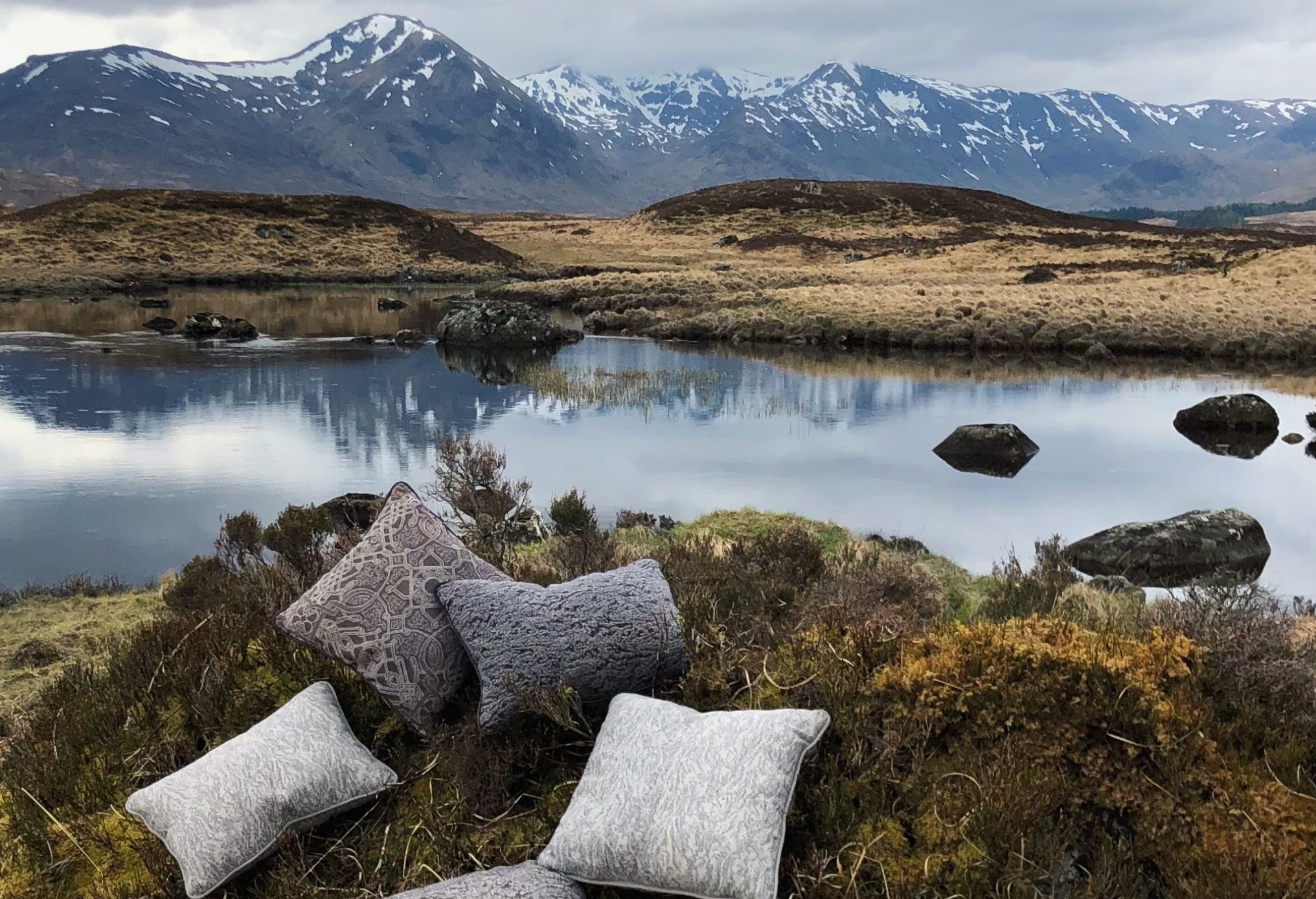
Architecture and design resemble travel in the sense that they can go beyond physical boundaries. Within our spaces we create an emotional connection and feelings that exist beyond space and time. As architects and designers, we can help translate your unforgettable experiences through tactile and visual means.
Bespoke design
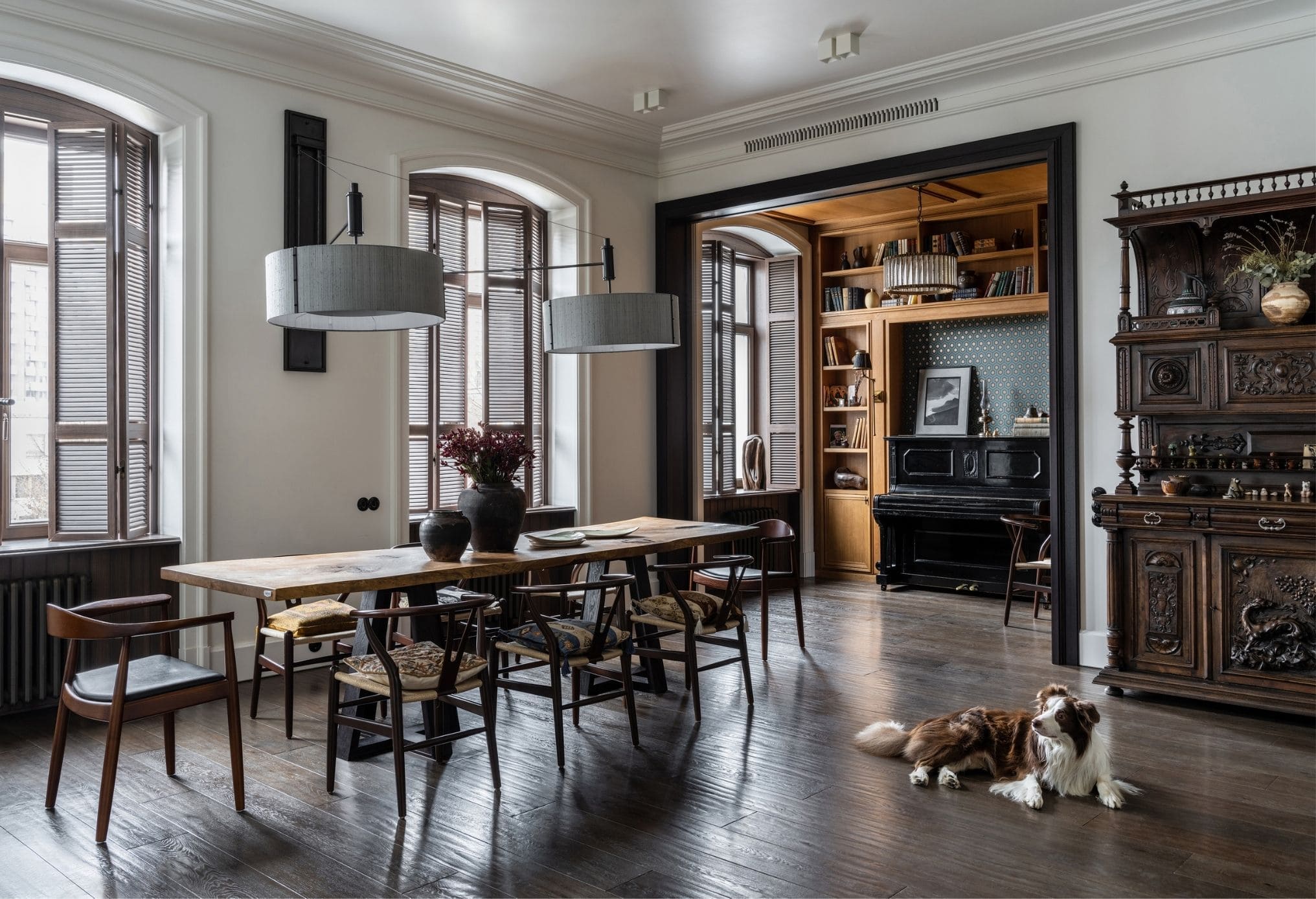
Good design always begins with an interesting story. People wanting things to have deep meaning and uniqueness is a new and emerging trend. The new approach to design means creating spaces and furniture pieces that consciously interact and realise your dreams.
Architect, designer or screen writer?
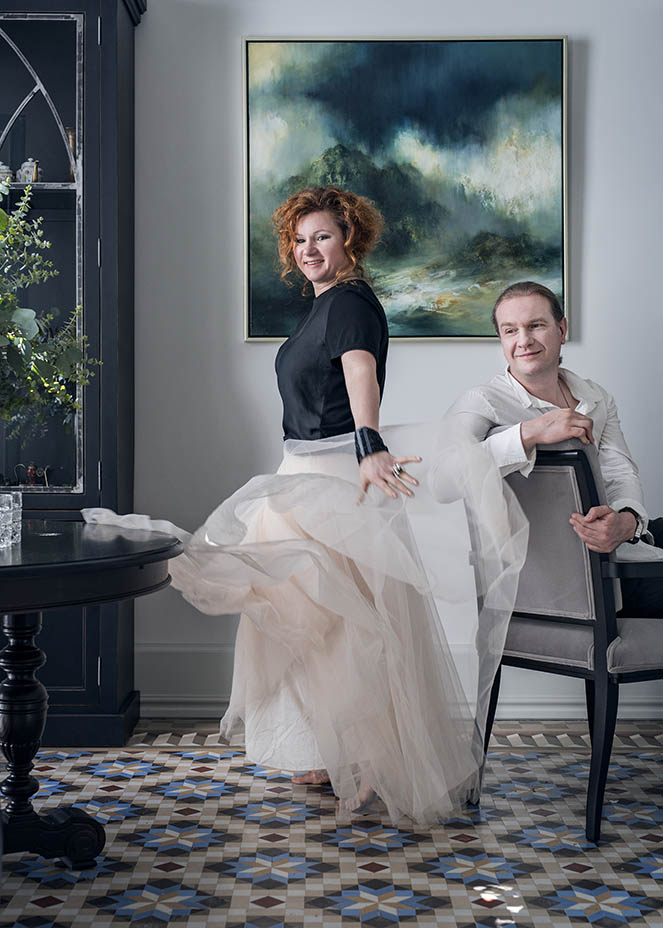
Very soon new technologies will open up a whole new area of interior design; affordable smart homes for every family. Your home needs to feel you and live with you. It is not just automatic shutters or climate control. It’s also alternative virtual reality which will allow you to travel without leaving your house; walls that become transparent and turn into windows at the touch of a button; a house that reacts to your mood and planning solutions that transform when you wish them to. A designer does not just create a composition but also writes a script for the space that changes together with the person for whom it is created.
As Shakespeare wrote: “Our doubts are traitors and make us lose the good we might oft win by fearing to attempt”. You cannot even imagine what you are capable of if you stop creating boundaries in your own head. So cast your doubts away, listen to your heat and change the world around you. And you had better start with your interior.
Conversation with market experts and O&A London leaders, Anna Agapova and Oleg Klodt, on the rapidly evolving residential real estate market.
Today’s buyers of luxury homes, unlike those in the early 2000s, care more about quality and comfort. A luxury home is no longer possible without its own infrastructure and service system. But the real breakthrough projects are delivered by developers who can offer something exclusive in order to attract attention and stand out among their competitors. Oleg Klodt and Anna Agapova, founders of the O&A London answered some topical questions about the nature of the developing marketplace in Russia and the rest of the world.
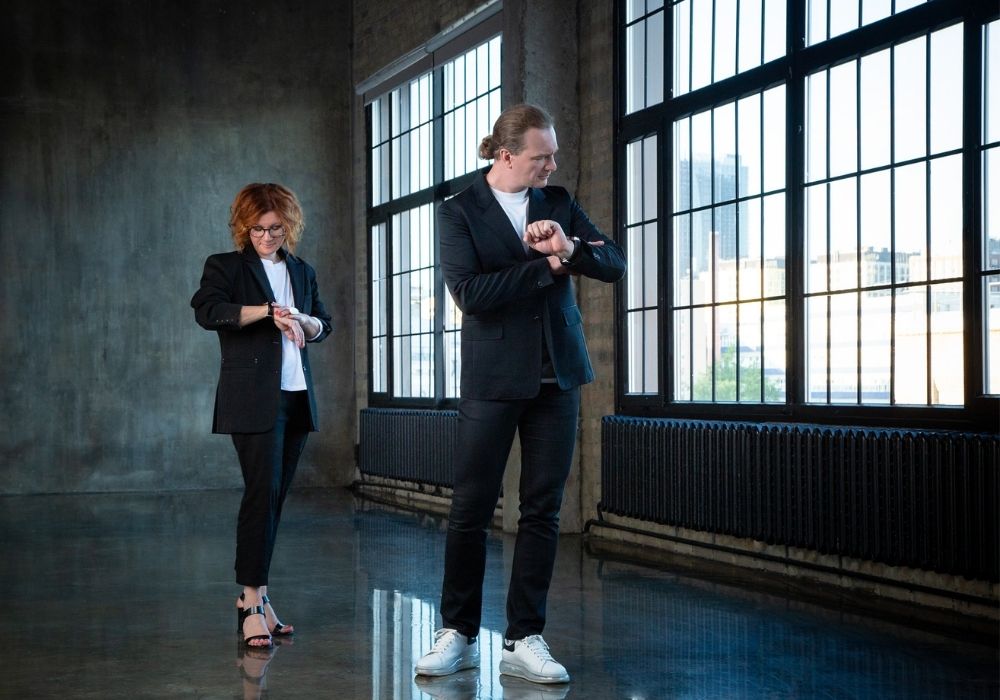
Q: O&A London is one of the leaders, creating projects for the largest real estate developers in Moscow. What are the main features of working with development projects in Russia and the rest of the world?
O&A: It is difficult to speak about the rest of the world. We are happy to discuss Moscow, St. Petersburg and possibly London. Since it was founded in 2000 our company has always focused on private housing architecture and interior design. However, in the past three years our project portfolio grew considerably thanks to residential development projects.
We have now completed over a dozen projects and have approximately the same number of projects in progress. It was not our aim to join the residential real estate marketplace, it just happened. We acquired clients who were prepared to create together and so we arrived at some interesting projects and solutions in order to gain competitor advantage in the market.
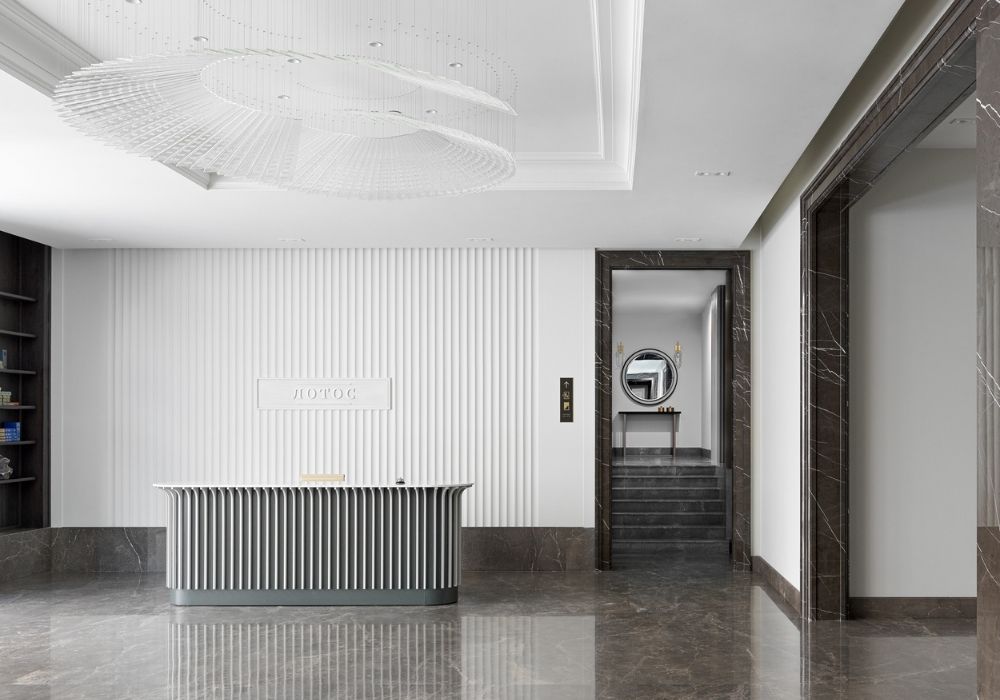
“Restrained colours, laconicism and noble materials”
Q: What do you think is the reason for that?
O&A: There are two reasons. First of all, there is the emerging tendency to pay attention to public spaces in buildings. In the US apartment blocks lobbies resemble hotel reception areas. One doesn’t need to even leave the building. There are co-working spaces, restaurants and gyms. Now Europe and Russia also realised that these projects are the future.
Secondly new players are now emerging on the real estate market. They are inviting successful designers to complete high quality and stylish interiors of public spaces in order to gain recognition and reputation on the market. Companies no longer try and save on entrance hall design and it is clear that the buyer doesn’t just count their apartment as home but also the spaces beyond it. Competition resulted in higher quality standards.
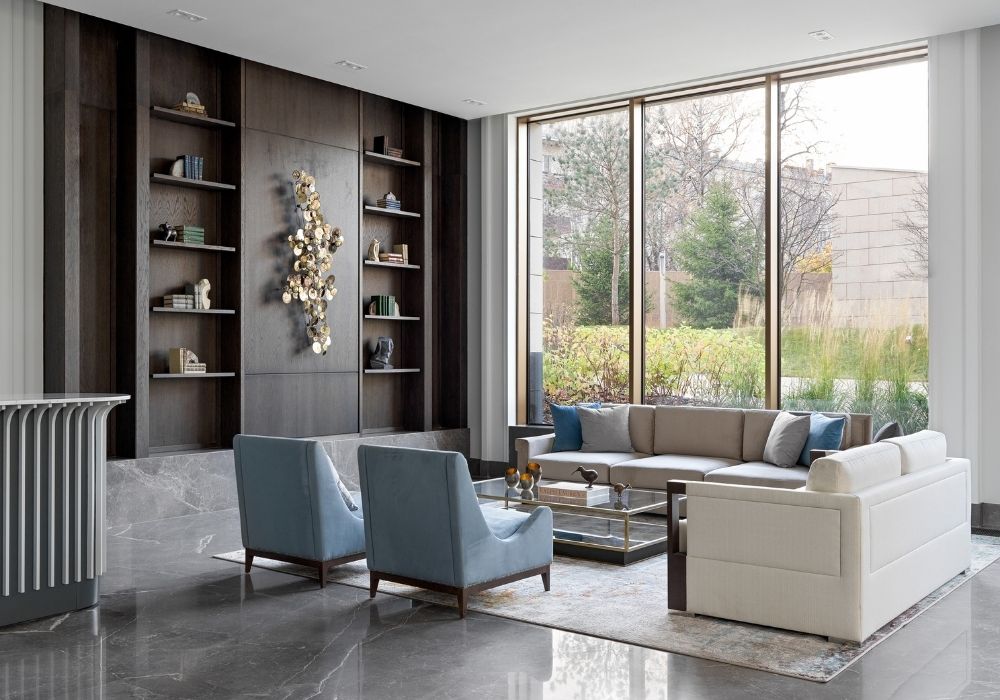
“A special emphasis on organic aesthetics – the lobbies reflect the surrounding landscapes”
Q: Why do developers choose you?
O&A: First of all, we have a breadth of experience when it comes to creating private living spaces interiors. Prior to starting work on developer projects, we spent 17 years planning interiors in the private housing sector and have gained a lot of knowledge in terms of client expectations and what they see as comfort and beauty.
We recently completed a lobby containing a library, which is a very important feature is able to transform any space and create an atmosphere. One could just place an arm chair and a sofa into a space and no one will use it, but if the entrance hall has a service where one can read a book, print out documents or have a meeting – this space will be in demand. By the way, we are not just talking about people but also about their pets. All our projects have a well thought out infrastructure. All entrance halls have special paw wash showers for pets.
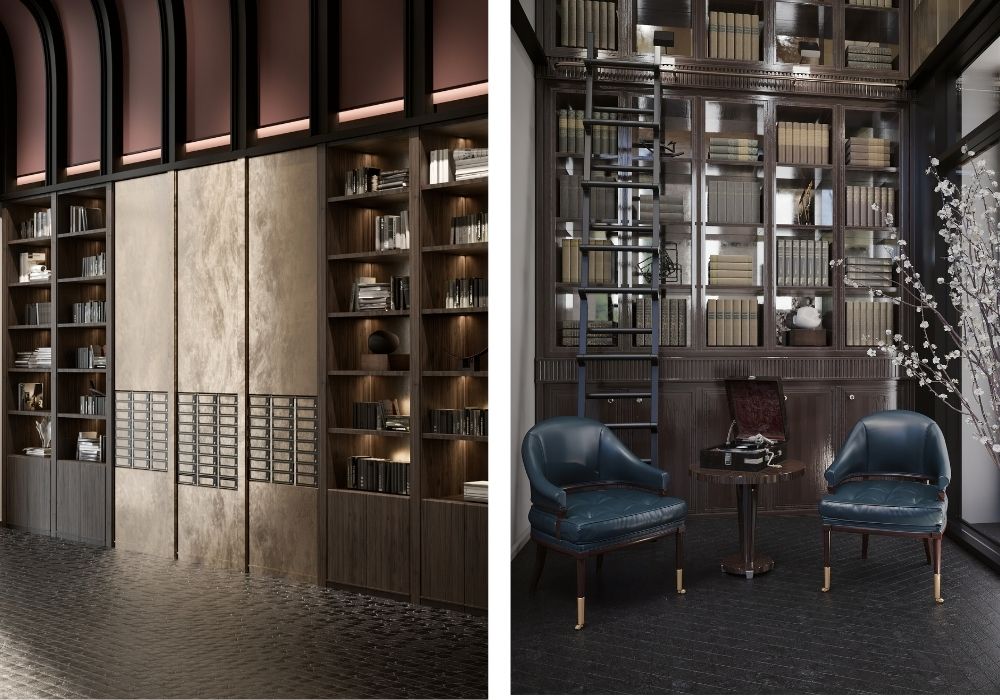
The return of Art Deco: it has become a trend that is dominating the luxury interior design market thanks to its elegant, sophisticated aesthetic.
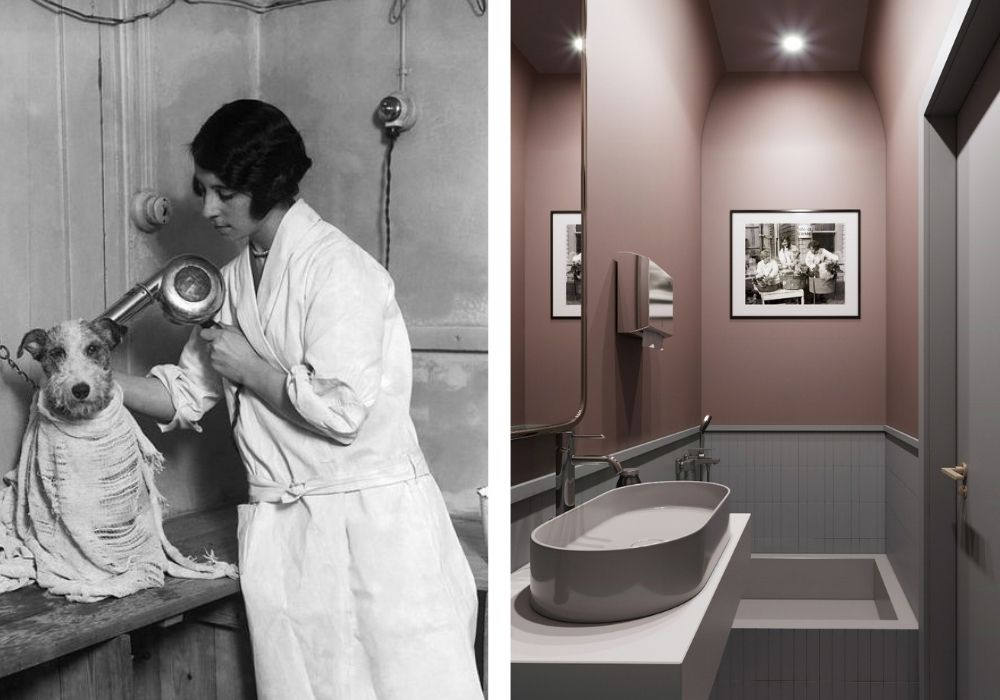
The clients are also attracted by the quality of our work and the full range of services. Every project today is a house with its own legend, aesthetics and philosophy. The selling strategy with a team of marketing and brand managers is built around it. They work on telling a story that the client will buy. In this case interior design is part of storytelling. We write visual codes and take part on creating a brand. Our team even has graphic designers that take care of wayfinding design and other important elements that are part of a residential compound.
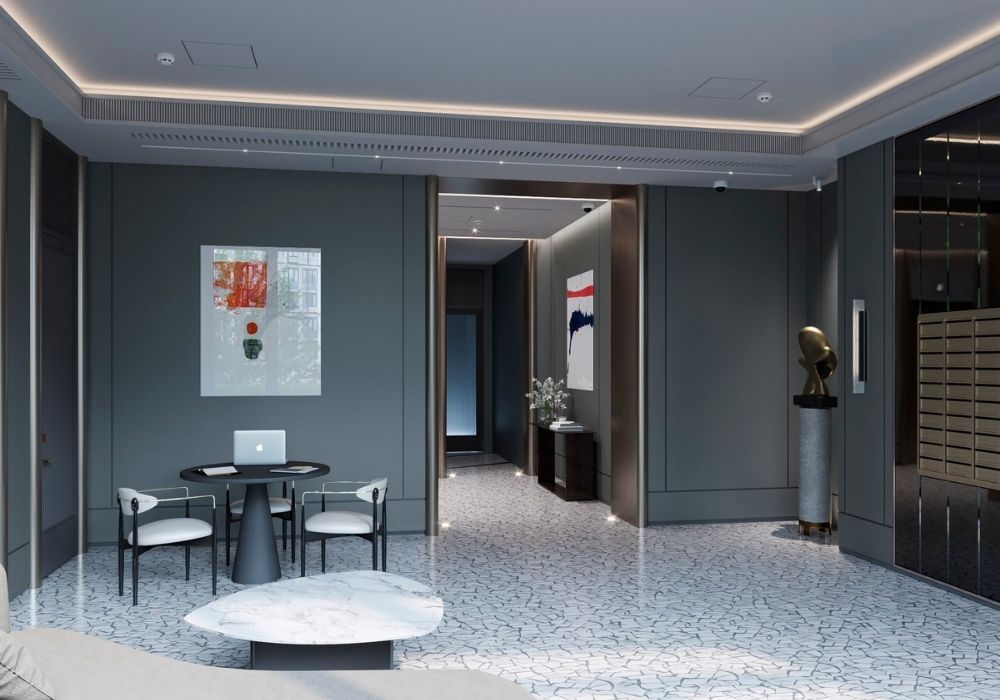
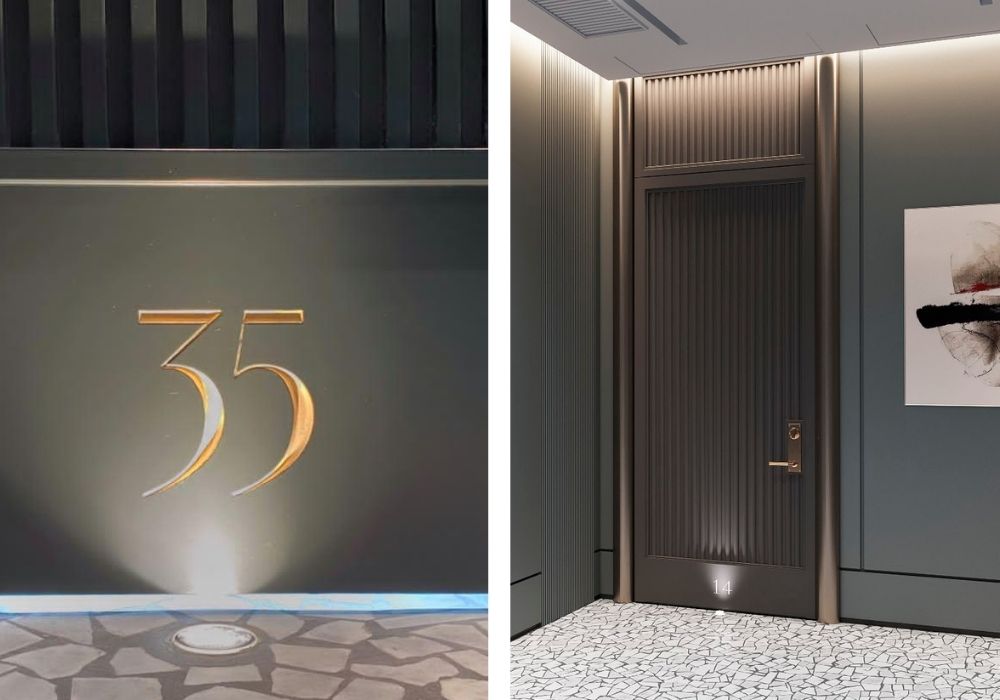
Q: Do you think that design bureaus should be offering graphic design services?
O&A: Recently Netflix released the second part of the Abstract of Art series. In these series creators of Instagram talk about logo redesign and consumer experience that enabled the company to become very popular in a very short time. And it is not just about profit and success. We recommend this series to everyone because it shows how design affects our life.
Many design stars took part in the Abstract of Art project: Danish architect Bjarke Ingels, Nike trainers designer Tinker Hatfield, creator of Instagram logo Ian Spalter, author of Tiffany& Co font creator Jonathan Hoefler and others. They talk about objects, houses, streets, and clothes and demonstrate how different design changes the world. But more importantly the series really shows how design can unite people.
Therefore to answer your question, yes, it is important to us to have a competent team member who can take part in the concept creation process. It is also important for our clients because by creating the design, brand identity and 3D interior tours we lower the cost. One can only retain a client by minimising the number of things they need to worry about.
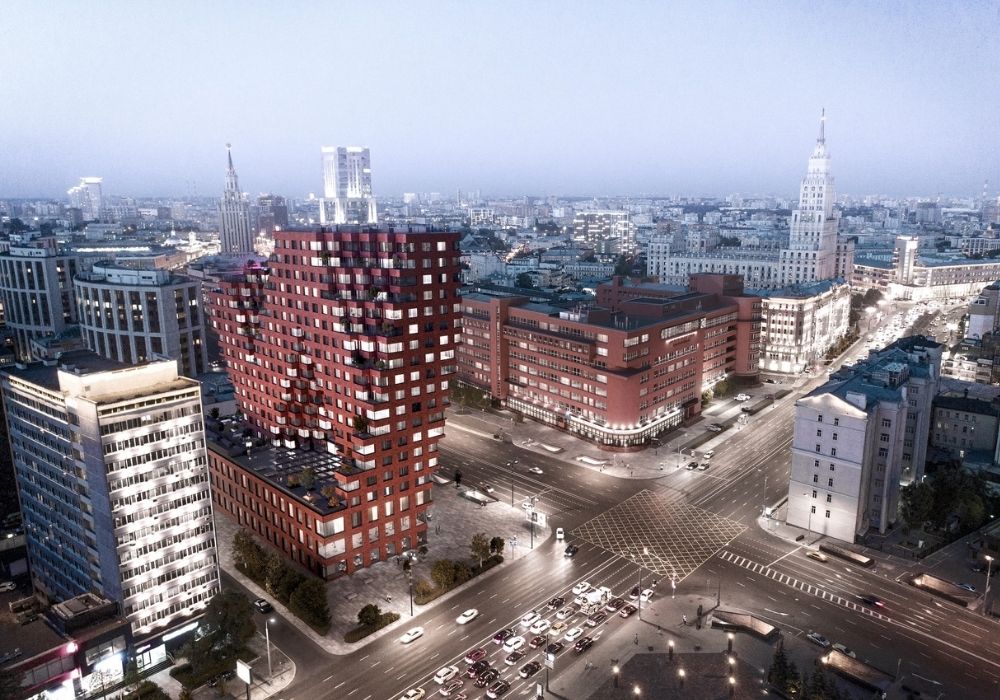
Apartments design by O&A London
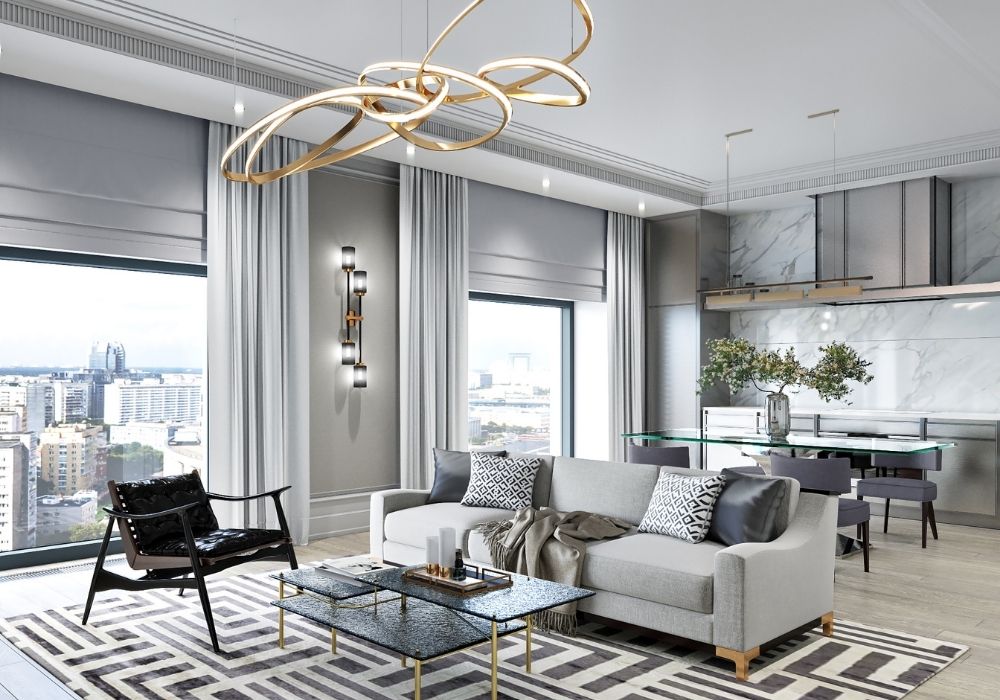
‘LIGHT’ apartments, design by O&A London
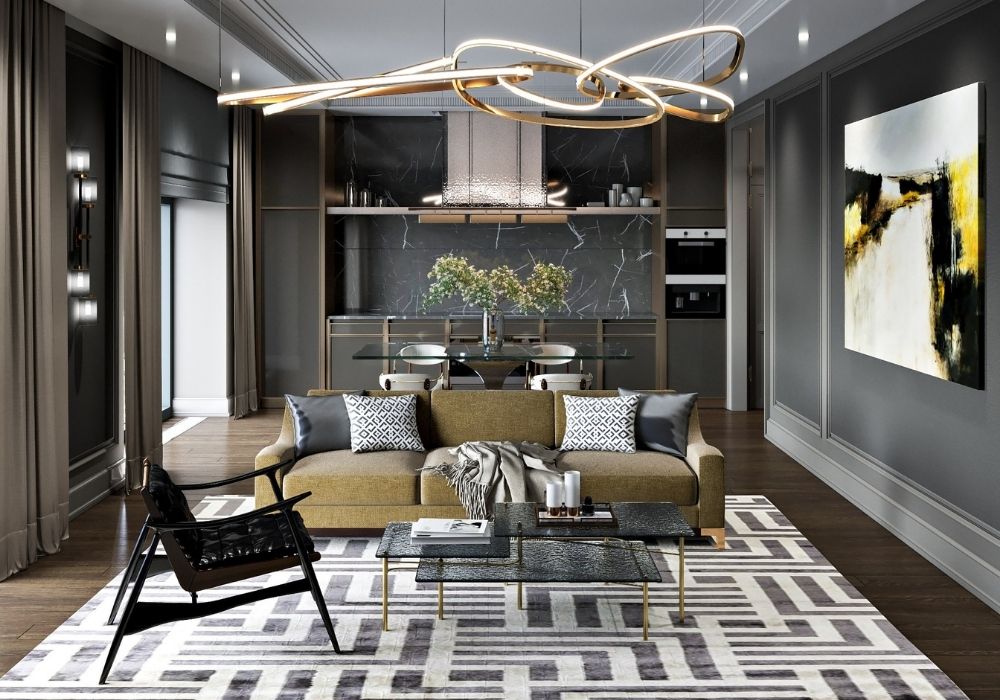
‘DARK’ apartments, design by O&A London
Q: What do you take into consideration the most when you are starting a project on entrance hall spaces for apartment blocks?
O&A: We pay attention to our own aesthetic principles and the latest tendencies which we observe in design. Latest research shows that by 2050 68% of the population will be living in cities. Even today an average person spends 90% of their time indoors. We understand that modern people often live a life detached from nature and so the designer’s most important task is to try and re-establish that connection.
This can be done through creating a calming and favourable environment that will stimulate both physical and mental activity. General wellbeing is at the centre of any designer’s attention. Client request locations in close proximity to parks, nature, bodies of water or at least a fountain more and more often.
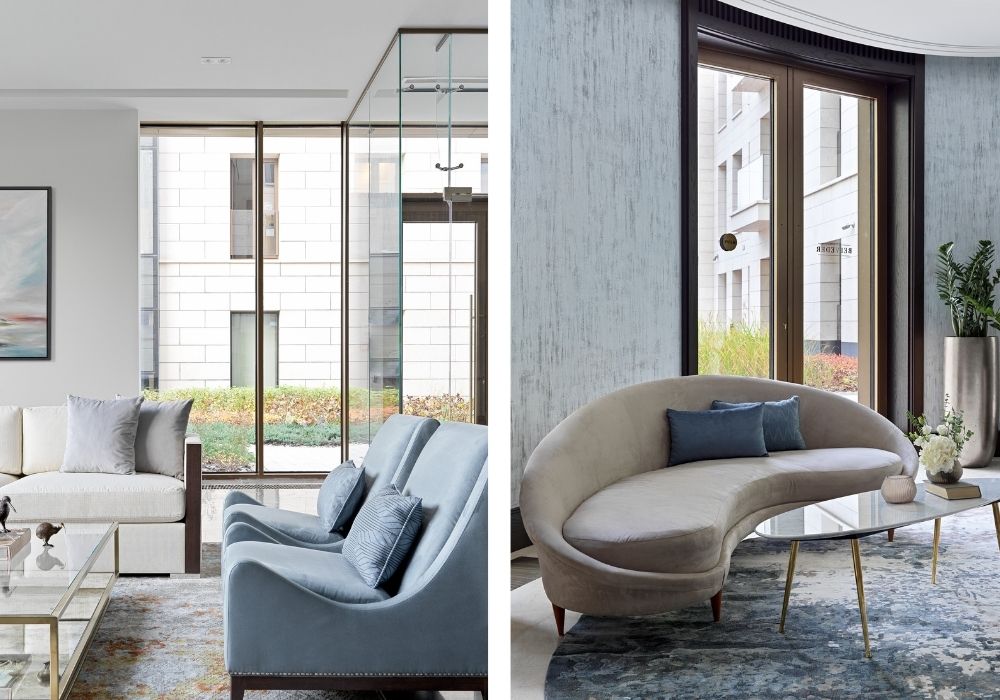
‘Natural colours give that very “feels like home” atmosphere’
When working on entrance space interiors most attention is paid to organic aesthetics. For example, wall coverings may feature floral motif panels and the lounge space will have “soft minimalism” style furniture. Live plants are also a very important part of any such interior but they require maintenance and it is important that there are people available that can look after them.
In all of our projects we pay special attention to decorative lighting. We create bespoke lighting installations which integrate seamlessly into the overall design and go with the panoramic windows of the lobby which provide the connection with the outdoor space and let in plenty of natural light.
We are happy to observe the tendency in recent years has moved towards being more reserved and sophisticated.
Q: Apart from entrances and communal spaces do you also specialise in projects involving standard apartments?
O&A: We work on communal spaces such as entrance halls and staircase landings in all buildings and also prepare layouts of flats and apartments. We create various spaces within the boundaries outlined by the building’s architecture and create bespoke spaced depending on our clients’ requirements. It is important to separate segments even within the same building as flats under 80 square meters and penthouse apartments of 300 square meters differ greatly in concept and functionality.
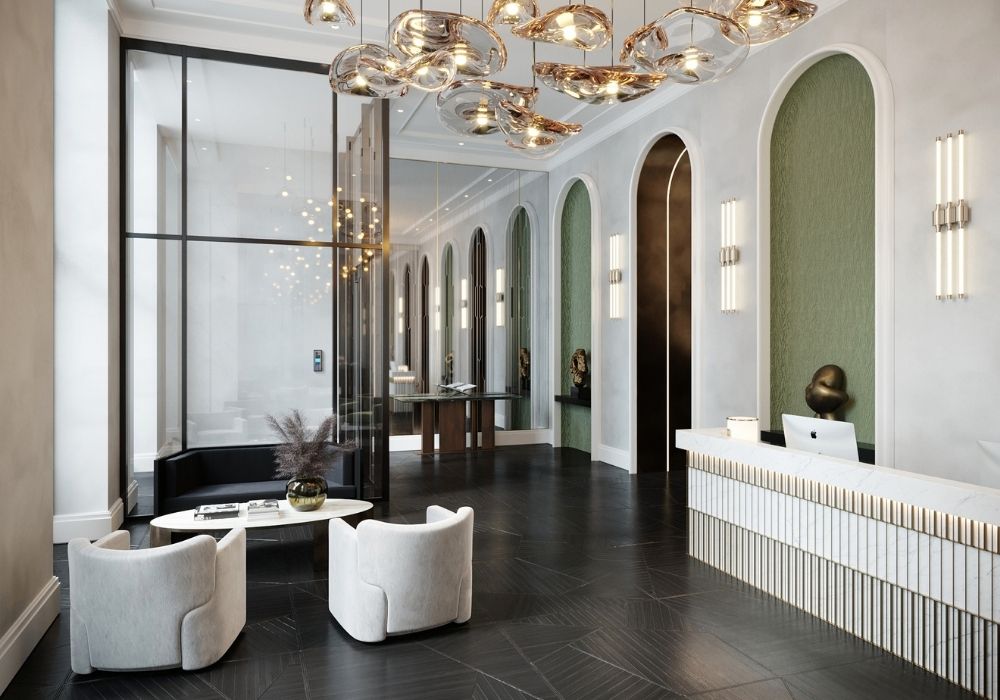
Q: What is the future? Individual projects or ready-made interiors?
O&A: We are convinced that ready-made interiors are the future. At the moment only a few developers offer ready-made interiors but as time goes on this supply will be met by increased demand. 1 to 2% of clients will still prefer bespoke design but the majority will be giving preference to ready-made options. Competition will drive companies to start offering furnished interiors that will include furniture, lighting and carpets. Buyers will be able to move into their apartment on the day of purchase bringing with them only personal belongings. And this time the winners in the market will be those who are able to surprise the customer.
The exhibition opened on the 23rd of December 2020 in the Russian Museum, Mikhailovsky Palace in St. Petersburg.
Our co-founder Oleg Klodt was born into an artistic family, which traces its origins back to Peter Klodt. Pyotr Klodt (Peter Jakob Clodt von Jurgensburg, 1805–1867) – was a renowned animalist sculptor, author of a famous group of equestrian statues, the Horse Tamers, installed at the Anichkov Bridge.

Pyotr Klodt started an artistic dynasty, which creative heritage now presented in a large exhibition The “Artistic legacy of the Klodt family” for the first time.

Alongside the unique original wax designs provided by the Museum of the Imperial Academy of Arts are the models of the famous sculptural horse tamers groups of the Anichkov Bridge, monuments to Emperor Nicholas I and fable writer Ivan Krylov, as well as famous animalistic bronze statues. The exhibition also contains the works of the famous painters of the Klodt family: genre paintings by the famous sculptor’s son, Mikhail Petrovich Klodt (1835-1914) and the landscapes of his nephew, Mikhail Konstantinovich Klodt (1833-1902). The exhibition is complimented by the paintings of Pyotr Klodt’s grandson Nikolai Alexandrovich Klodt (1865-1918), who was a painter and theatre scene painter.

The Klodt family legacy is not limited to the above painters and sculptors. “This exhibition is a truly unique and long-awaited event for the cultural society of Russia and of course for our family”, – shared Oleg Klodt. It is especially important that it is taking place in St. Petersburg, a native city of our family. Our family dates back to X-XII centuries and in the past 200 years every generation produced artists well known in Russia. The St. Petersburg exhibition will only feature a few of the Klodt family artists, although it would be very interesting to show the creative legacy of the entire dynasty from the first half of XIX century to the modern day. There is also Evgeniy Alexandrovich Klodt (1867-1935), the author of engravings and a very important print “Ornaments of all time”. Georgy Alexandrovich (1923-1994) was a book illustrator, and senior artist at the Fiction Literature publishing house for many years. My father Evgeniy Georgievich Klodt (1950-2012) was a famous book illustrator, water colour painter and poet. I am sure that many people in Russia and the rest of the world would be interested in seeing the creative diversity of our family, which reflects the history of the last two centuries.”
The “Artistic legacy of the Klodt family” exhibition will run until the 29th of March 2021.
O&A London celebrates its 20th anniversary! With a growing number of international projects, and to create distinctive collections of furniture, lighting, textiles, wallpaper and rugs under its unique brand, the company develops collaborative projects with amazing and talented people. We are fortunate to work with leaders in their field: people who do not see boundaries and make the impossible possible. We proudly name these creators, not just as partners but as co-designers and friends.
We are now delighted to announce the anniversary project «20 // 20». The project will present a series of exclusive interviews. We are happy to present to you the interview with Stacie McCormick, a multi-disciplinary artist, director and founder of Unit 1 Gallery | Workshop, and her husband Igor Jocic, Creative Director and Co-founder of Principal Ingredient, CCO and Co-founder of Folkalist.

O&A: Stacie, what did you dream about when you were a child?
SM: I dreamt often about tree houses, very complex tree houses and I dreamt of having a huge barn that I could make all kinds of art in, I have a sketch from 10 years old of a barn and I remember explaining it all to my mother – little did I know I would have a London barn.
O&A: At what age did you start painting?
SM: I do not remember me not painting, I always have been painting, again at 10 years old by ‘great’ achievement was to win the San Francisco Chronicle art contest – prize $1.
O&A: Do you have a passion for the ocean since your childhood in San Francisco?
SM: I have loved the ocean forever, I learned to swim before walking and find peace in being in, or even meditating upon the sea – it is where I feel at one with the universe.

O&A: How can Art influence on individuals and life of society?
SM: Big question, we live in complex times and such speed of distraction, the constant assault of the digital world and it is becoming more and more important to remove and slow down – the experience of art can provide this release. To focus upon a painting or a sculpture and to allow yourself to be moved is a needed and profound attachment to the moment of being alive with your senses. Art is continually influencing us, ancient art through to contemporary art is a spectacular insight and reflection of our existence – we always look at a society’s cultural output to understand it.
O&A: What is Unit 1 Gallery Workshop?
SM: We are a social enterprise founded on a simple idea of providing space and time for artists to grow their practices and bring them to the public.
O&A: Why did you start this project?
SM: A profound desire to spend all my time with and around artists as well connects artists to the public directly.

O&A: Could you, please, tell me about the “Money For Artists” campaign?
SM: During the first lockdown we became aware that so many of our artists work several jobs to support studios/materials/rent and these jobs stopped. We knew it would be important to raise funds to support them directly and help to survive during these difficult times. To date we have raised over £20k and sent cash grants to our artists.

O&A: Has COV-19 influenced on Art and on your creative work?
SM: Any artist that is sensitive and responding to the time we live will be influenced by COV-19. I am sure in years to come I will be able to better reflect on this, but I can say I have unlocked my pallet and have begun a series of very colourful and joyful paintings that feel a direct resistance to the Covid-19 climate. It feels quite liberating, in that there is no reason to experiment wildly.
O&A: What inspires you?
SM: Nature, the ocean and the sky, early mornings, break of day, bird song, poetry. I can and often take a breath and observe the incredible and indescribable miracle of simply being alive and swim in that crucial magical mystery.
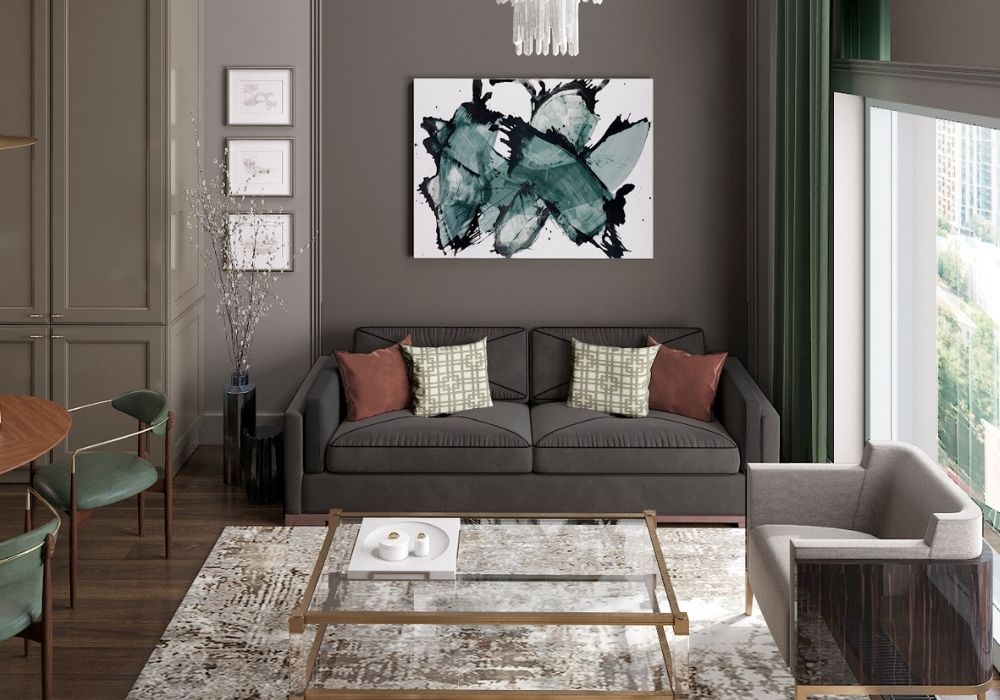
O&A: Please, tell me about your first meet with Anna and Oleg?
SM: I met Anna at SBID awards lunch and was lucky enough to sit next to her! We instantly were drawn to a friendship and wow that must be 8-9 years ago! Anna has been such a wonderful friend and to get to know here and Oleg such a pleasure – and though Anna is practicing design and architecture her spirit is that of an artist. I love working with Anna and Oleg and remain grateful for the support of my work over the years.


O&A: A question to Igor: You created the logo for our brand O&A London. How did you start working on brand identity?
IJ: My method is very consistent. I always try to find as much as possible about my clients’ and their businesses – what drives them and what they aim to achieve. Brand identity and branding in general play a crucial role in how these motives are expressed and enacted. With O&A I was immediately struck by a very particular sense of style that had profound and sophisticated roots. Oleg and Anna are highly accomplished, much evolved creatives but this brand was in many ways much more personal to them than the excellent work they do for their clients. I was inspired by that and determined to hone it through the O&A brand identity.

O&A: You said: successful brands are stories that are told. What do you think is the story of Oleg and Anna’s company?
IJ: To me it is a story of creative partnership, a very particular synergy between Oleg and Anna that seems to intuitively gravitate towards the early 20th century port-modernist sensibilities that are equally fascinated by the natural and industrial. The fact that they share that aesthetic so naturally even after all these years of working together is a story in itself and one well worth sharing. Here is the brand visual territory research.
O&A: Stacie do you advise something to Igor in his work?
SM: We live together, work together and share everything – I will say when it comes to branding Igor is a genius and I have 1000% trust in his expertise.
O&A: Do you have joint projects together with Igor?
SM: Igor is responsible for the gallery’s branding and we are currently working together on two very exciting new startups!
IJ: My current startup, Folkalist can be seen as a long-standing, recurring dream that is now becoming a reality. It will offer a platform on which people can find likeminded collaborators to bring their projects to life, liberated form constraints of traditional employment, institutions and social channels. A transformation to how we work with and relate to each other as doers and makers.
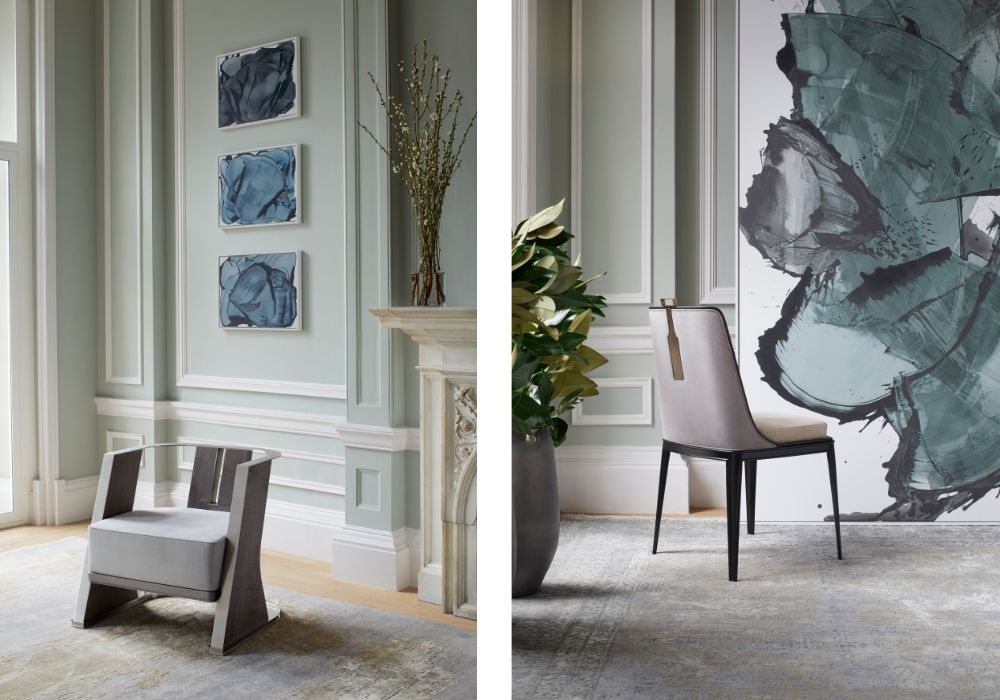
O&A: What are you dreaming about now?
SM: A future that is bright for all of our children – a respected earth and humanity thriving in harmony personally. I dream of a much larger space to accommodate more artists, a destination for artists and collectors and lovers of art to be together and share and to physically experience the wonder and substance of the creative process and to forever continue to provide space and time for artists.
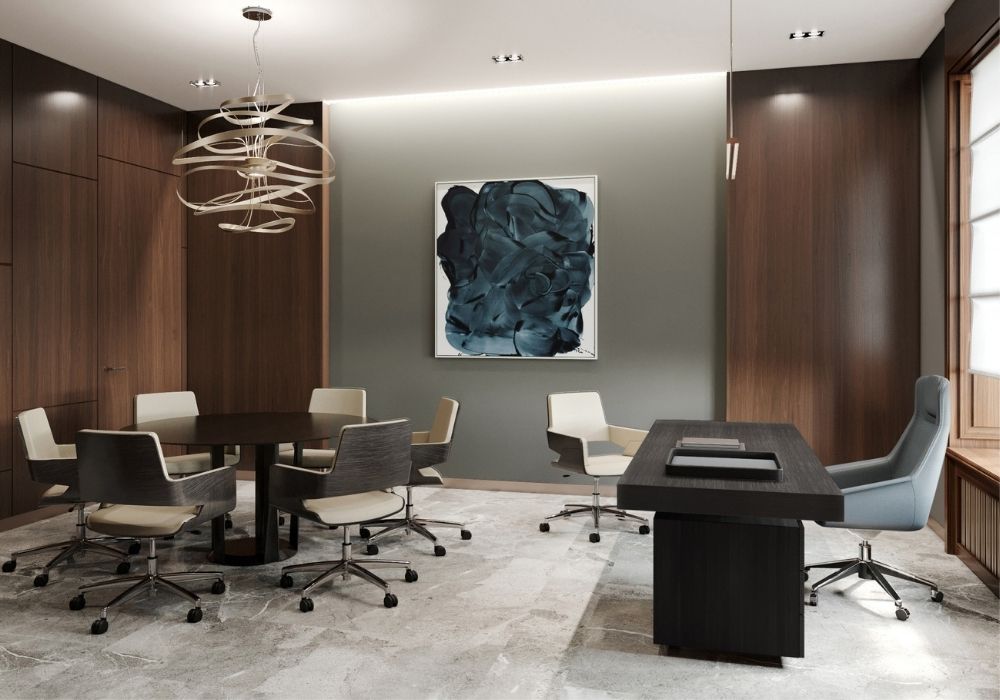
O&A London celebrates its 20-year anniversary. In past years the studio grew by creating not only unique world class interiors but also bespoke furniture, textile, rugs, lights and wall covering collections. The creative tandem of the studio’s leaders Oleg Klodt and Anna Agapova are the driving force behind the team.
During this time, we have been lucky enough to collaborate with extremely talented and creative professionals from around the world. They have not only become partners and co-authors of our collections but also friends. We continue our series of “20/20” where we introduce you to our colleagues and friends – artists, designers and craftsmen – tell you about their input into our success.
Our guest today is Eugenia Mikulina. Eugenia is the founder of an influential media resource dedicated to design and architecture Design chat and a former editor-in-chief of Architectural Digest Russia magazine.
O&A: What did you dream of as a child?
EM: This may sound strange but when I was a child, I dreamed of being the widow of a great person with two children. I’m not joking! At 12 this was one of my most common fantasies.
O&A: What was the first profession you started thinking about?
EM: Since I was 10, I planned to work in the theatre. I was going to become an actress and meet a great actor there. Later, when I was 15, it transpired I had a good singing voice so I started voice training, and was planning to become the widow of a great singer! Then I got bored of it because, coming from a completely different world, it was very difficult to make it in the theatre. Despite this, after finishing school I tried to get into a performing arts college but realised it was not for me and changed direction. Many years later I realised I should have studied directing not acting.
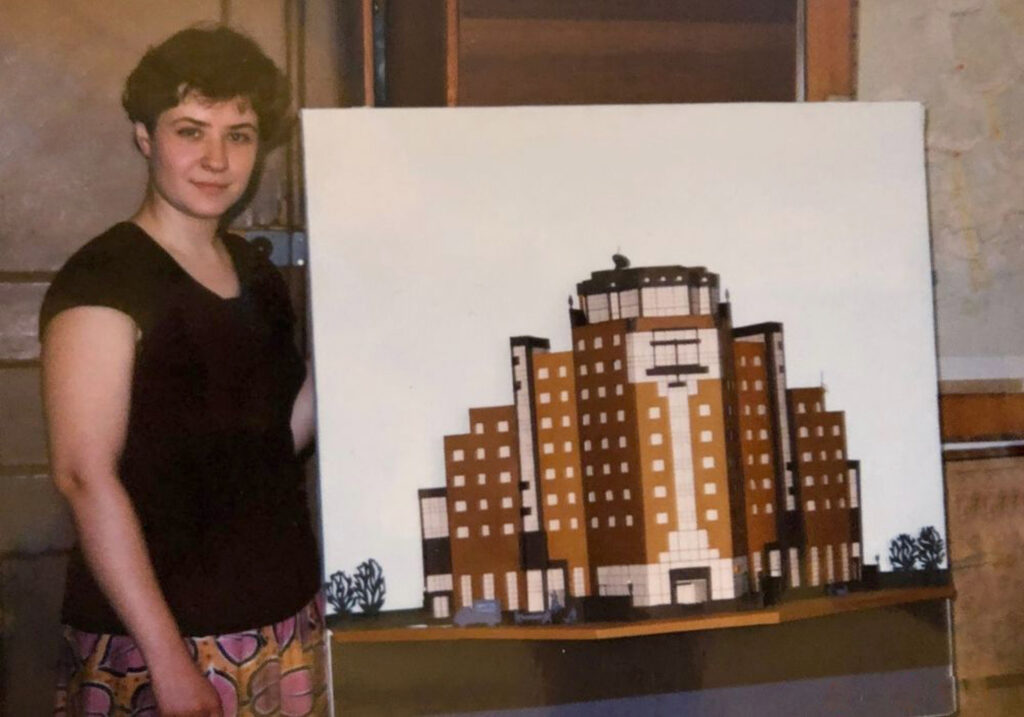
O&A: Did your parents having architectural degrees influence your choice of university? (Moscow Architectural Institute)
EM: Of course, it did.! My parents are not just architects; they are professors and lecturers at the Moscow Architectural Institute. This meant I not only witnessed their work and projects but also endless dissertations a constant flow of students who came to our house for consultations. To be an architect and to live among architects was a natural thing for me but I did not feel especially drawn to architecture. When I finished school, I started working as a translator as my English was quite good, and it was then that I realised that one has to be pragmatic when it comes to education. Moscow Architectural University was a familiar place so I went there.
O&A: Did you like studying there?
EM: Yes. I think architectural education is one of the best. It is a perfect balance between art and science. You can do everything, including working with your hands, as you will have to work with your hands quite a lot.
O&A: In one of your articles you said:” I have an architectural degree but my calling is to be a writer”. Have you ever thought about changing your profession?
EM: I am not changing my profession because having graduated from MAI with a degree in theory and history of architecture I am an architectural critic by trade, and have been working as such since my graduation. However sometimes I write some other stuff beside my professional articles. I would love to see the day when by writing this stuff, I will be getting paid enough to be able to seriously consider change of profession.
O&A: You have a very creative family. Have you already discussed your children’s’ professional future with them?
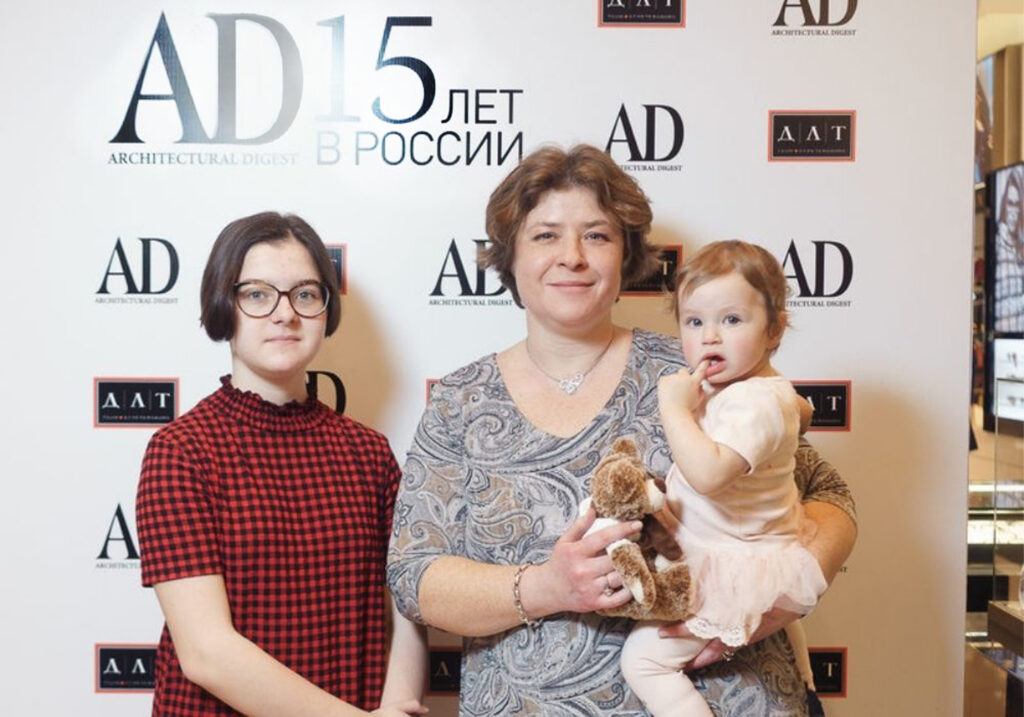
EM: Thankfully my sixteen-year-old eldest daughter does not want to be a creative person and is planning to become the President of Russian federation and is very practical about it! It is not quite one of those “when I grow up, I will be an astronaut” dreams. She is planning to get a degree in Political Science and get seriously involved in social structure. And my youngest daughter is nearly four. Yesterday she wanted to be a bat but still spends most of her time planning to become a princess.
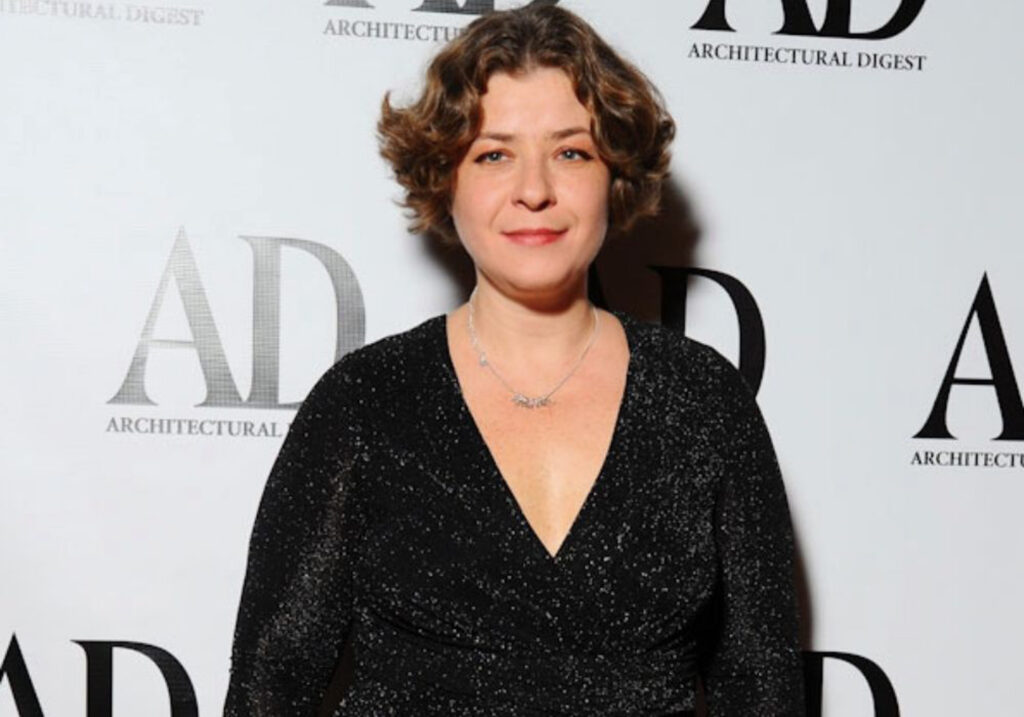
O&A: Tell us about your creative journey that led you to AD in 2002.
EM: During my final years at university I was already writing articles for various architectural magazines so when I graduated it was very fortunate that a vacancy of editor opened in the “Project Russia” magazine. The magazine was published once every three months and the work was not rushed. I received my first and quite substantial assignment – to collect all of the information about their projects from all of the hundred participants of the “Golden Ratio” competition. I completed this task within a week. They were all very surprised of course because they were not used to things being done so fast and were very happy about it. I started working for them and gradually became a deputy editor in chief remaining there for quite a long time. When AD was launched in Russia, the publishers were looking for the architectural editor. They approached me and set out their conditions which were not at all acceptable for me and I told them as much. They thought about it and came back with a different offer which I accepted. They basically bought me! In July 2002 I started as an ordinary editor in AD. In September 2002 the first issue came out and by that time I was a deputy editor-in-chief. The secret of my success is efficiency.
O&A: Interviewing is considered to be one of the most difficult things in journalism. How is it for you?
EM: When you are interviewing someone the most difficult thing is to stop talking yourself. When you are with an interesting person all you want to do is to talk to this person, but because it is an interview which is supposed to let the person speak it is very important to be quiet and listen. I have several tricks which make interviewing easier. For example, when you know nothing about your guest you start with this wonderful phrase: “We all know about your great achievements. Please tell us which ones are the most important to you”. The interviewee starts replying and you gradually start remembering who they are and what they have achieved. The following questions also always work well: “What was your biggest failure?”, “What was your biggest success?”, “Your biggest building?”, “Your smallest building?”. My favourite question when the interview is proving boring is: “What is the question that no one ever asked you but you always wanted them to?”

O&A: While working at AD you sometimes had to choose work to publish therefore highlighting some designers over others. How difficult is it to take on such great responsibility?
EM: First of all, there is a certain selection requirement – a list of professional qualities which are visible within a project and signal that the project is good. One of those is the lack of anything fake. Then begins the process of selecting suitable projects for the edition and this is not about picking one designer over another. Every edition must feature projects that are completely different in style – Provence, classical, modernist, minimalist etc. This is needed in order for anyone who buys this magazine to find something in it that they like. Everyone’s tastes differ and it is difficult to please everyone at once, so an entirely minimalist issue will not appeal to those who like softer things. Therefore, maintaining a balance is very important. The editorial team then selects projects for future issues from those submitted and deemed acceptable.
O&A: You once worked on an issue with Philippe Starck, did he surprise you in any way?
EM: We chose Starck because his is one of the biggest names of all. We met rather unexpectedly. He came here to present a project and I literally caught him and told him we wanted to make an issue with him in it. To my great surprise he replied “fine, send me the talking points” and we started our work.
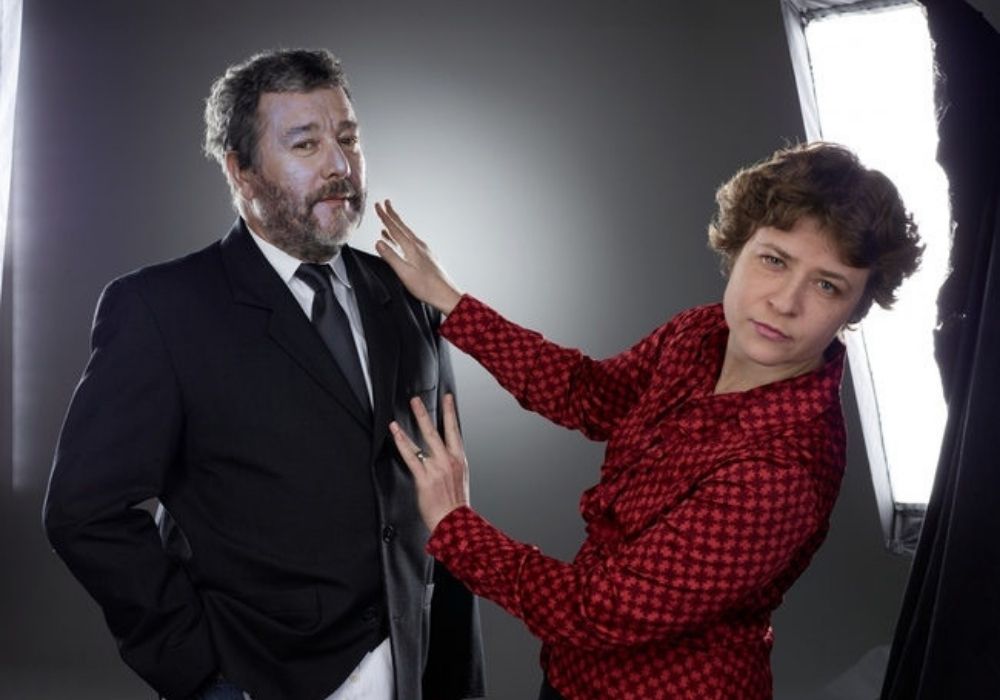
His attitude to life is very pragmatic but at the same time he is always really charming. But one thing really struck me. We created a special cover for the issue with his portrait, held a very expensive photoshoot and edited it trying to create a mutant effect. We wanted to create an Esquire type front cover but our management did not allow me to place “some bearded bloke” on the AD front cover because it apparently did not match our concept as AD front cover should have furniture on it.
We had to make two front covers – one limited edition issue not for sale with his photo and one with an interior photo on it. As much as I was trying to put it off there was a moment when I had to explain to Starck that he will not appear on the cover. And what really surprised me is that he did not kick up a fuss and just said:” Not a problem. Could you send me a few copies of the issue to Paris so I can show my friends”? It was amazing because the absence of a tantrum from a star of this magnitude is seriously cool.
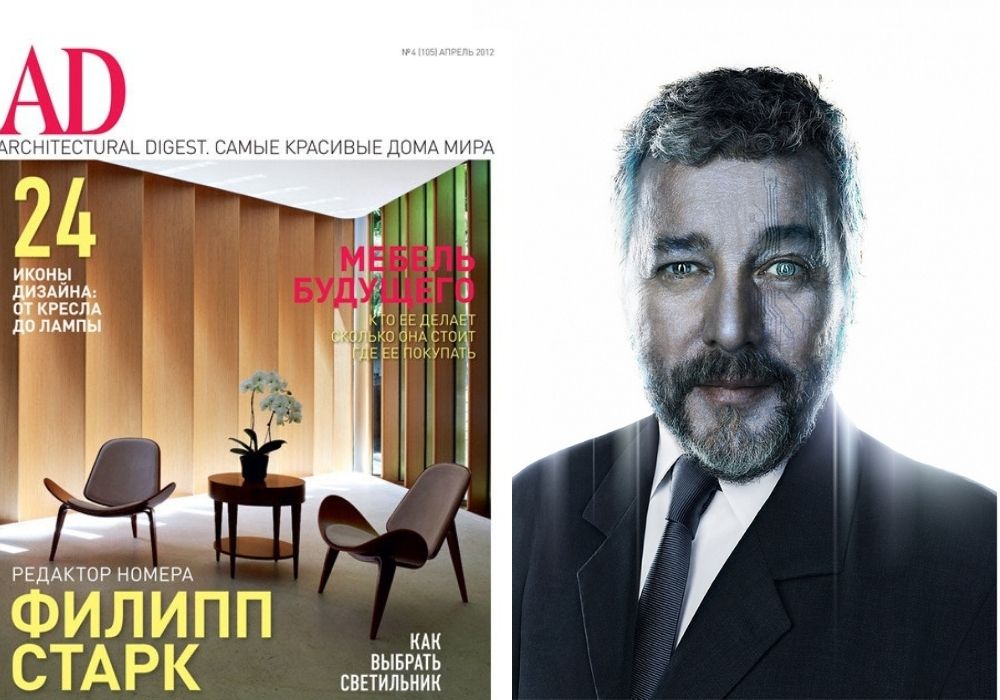
O&A: What other important figures from this area would you like to work with?
EM: The most amazing thing is that I have worked with almost all of them during my professional career. It is all very blurred now because everyone is constantly releasing and posting something or other. I would love to create something with Nick Haslam – it doesn’t matter what. With people of this calibre one just wants to work and it doesn’t matter what it is you work on. It is very important to come into contact with these amazing people in this world.
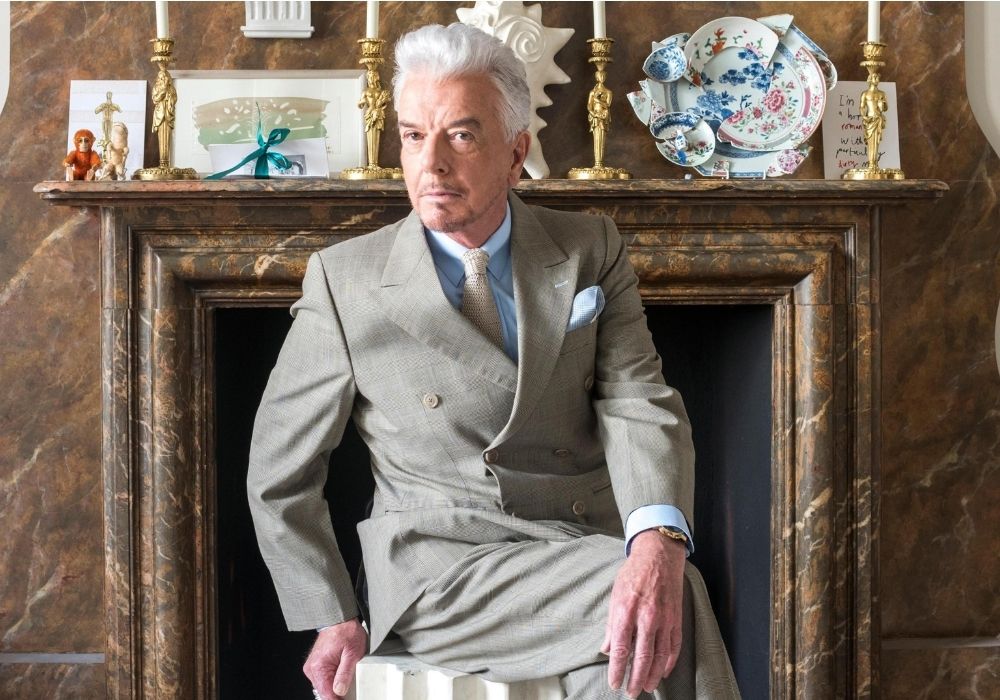
O&A: What tendencies have you noticed lately in the art of interior design?
EM: I don’t think that one can apply the term “tendencies” to the art of interior design. There are some socially significant stories such as eco-materials, artificial materials, renewable instead of non-renewable, nano techniques for fine stitches, but these are not really tendencies but rather innovations. And what we call tendencies in the popular sense of the word (seasonal colours, brass legs) is about wider supply. After that the products are called a trend and are distributed everywhere, but it’s not a tendency, it’s a trend.
O&A: Do you think art can upset?
EM: Of course it can. Real art is so emotionally charged that it can upset unintentionally, touch a sensitive nerve and be perceived as personal pain.
O&A: Several years ago, you created your own project designchat, which is now becoming a very influential source. Was it not frightening to turn your career around so much and to something so new?
EM: Our motto is idiocy and bravery! (laughs). My favourite Tony Stark (a Marvel movie hero) said a wonderful phrase at a press conference upon his return from Afghanistan: “I realised that I became a hostage to the system drowning in its own lack of responsibility.”
So, having worked for sixteen years in interior gloss I realised that I am serving the system I do not agree with, and that is moving in the wrong direction (both in commercial and ideological sense). I left and started my own platform where I can talk about things I cannot talk about in glossy magazines. At that point I could feel the commercial potential of a different interaction between media and the market. We are still in the process as we are very young. Media starts working well after three years. We are in year two and it looks like this ‘three-year rule’ is true.
O&A: Tell us about how and when you came across Oleg and Anna. Do you remember your first project together?
EM: I heard about Oleg a long time ago, when I was still at university. A student with that name was quite well known in cultural circles.
The first project I remember was a country house that was sent to AD. It was a very interesting project executed in an unusual manner that made it stand out from the others. The distinguishing feature was a dark plywood covering which looked very striking, architectural and original. It was very clear from this project that one needed to keep an eye on that studio and follow them.
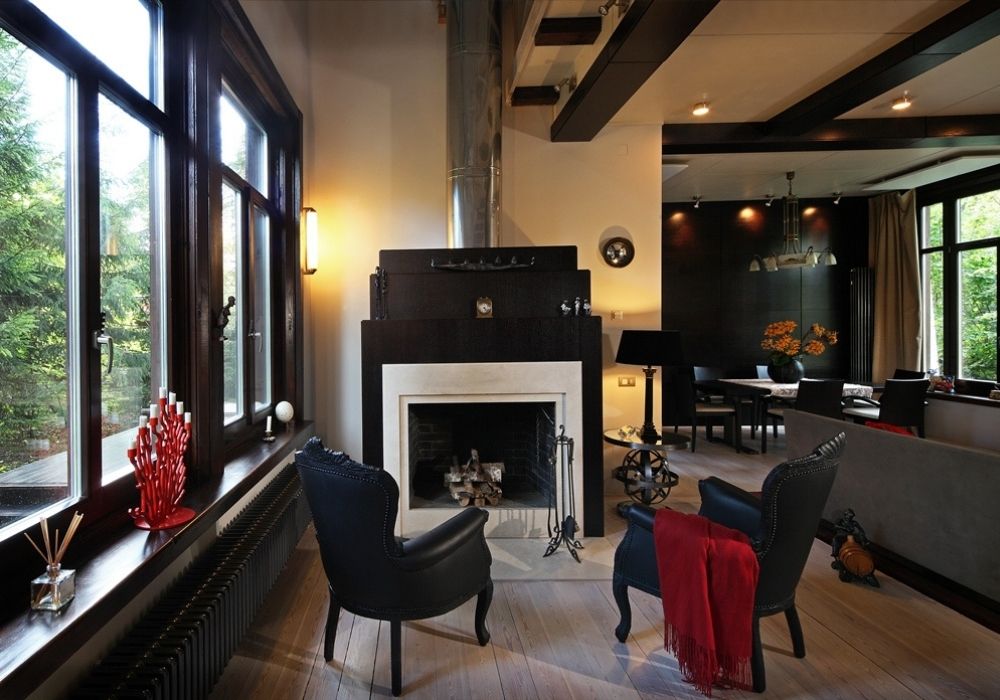
It is so great to see each project become better and better. I love stories like this, I love when something right happens in front of my very eyes. And this is that kind of story!
O&A: Do you have a favourite project by Oleg and Anna?
EM: I really like Oleg’s apartment, which he recently showed, but it is unusual for his style. I also remember country houses in english style. But my favourite project is the constructivist house “Rublevka”.
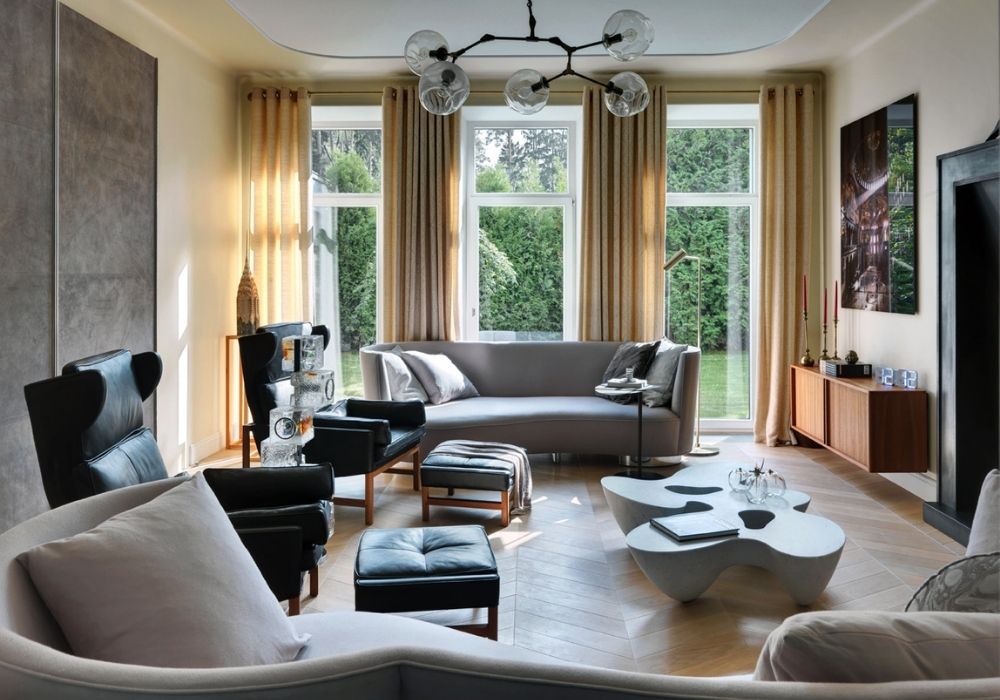
I like how this brand is developing and the logic and correctness of your journey (at first just interior design, then furniture and lighting collections, then textiles and the opening of the London office). For many people the studio has already become London-based because the interior history is very English. And the Scottish collections are so amazing that I am simply lost for words.
O&A: How would you describe Oleg and Anna’s style?
EM: It is what they call modern classic, which is what I think about when ‘English style’ is mentioned. The balance between how the space is built and what it is filled with on the tactile and colour level is very important in interior design. This balance and intonation is always ideal in the interiors by O&A London.
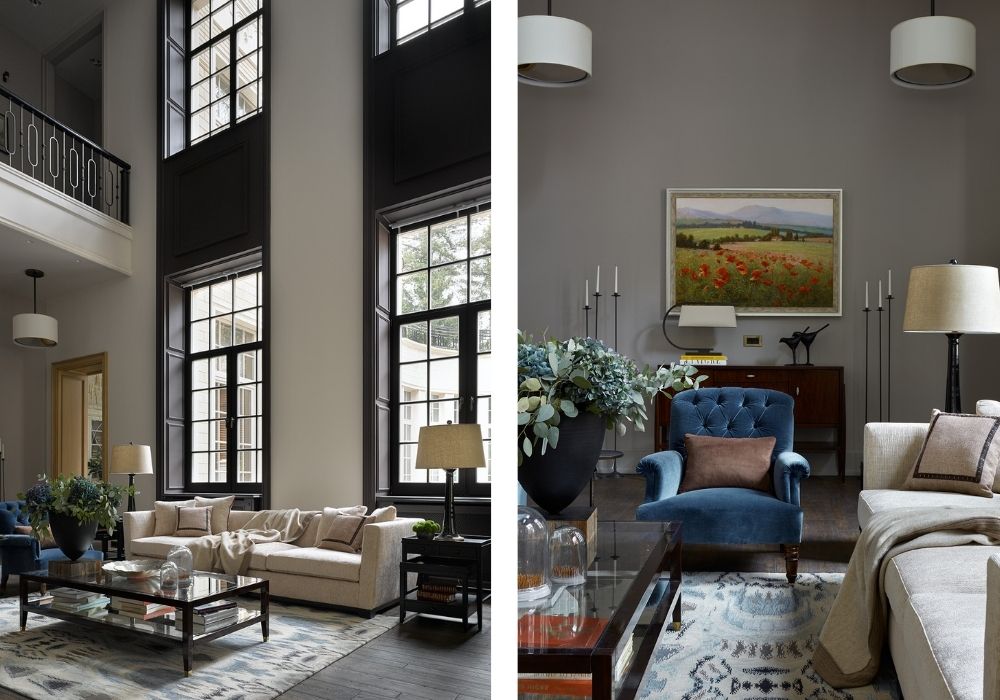
O&A: Is this style close to you?
EM: Yes, very. Who doesn’t like a cosy English house? It is a sort of ideal that was engrained in us by detective novels, films and stories about Poirot.
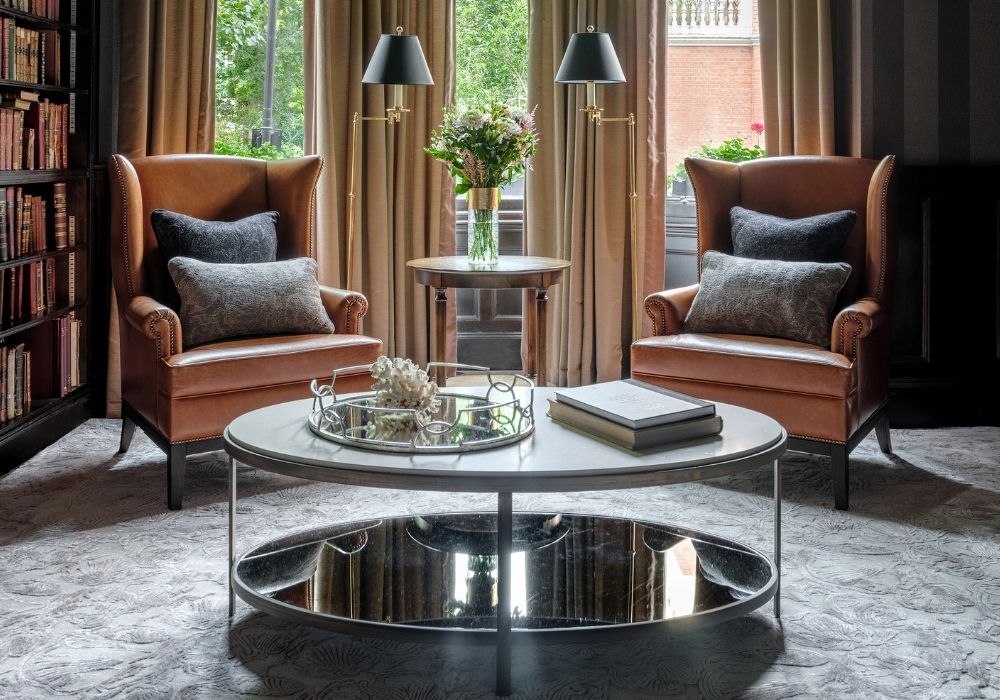
O&A: Very recently you were a curator at the “Interior is Art” exhibition. What other projects are you planning in the near future?
EM: Yes, we have quite a lot planned. Together with the association of designers and interior decorators of Russia we collected the works of fifty-one leading designers in Russia photographed by the best photographers. I chose these fifty-one photos in order to demonstrate how amazing interior photos can be. We really enjoyed doing it and by the way these photos can be purchased. I would love this exhibition to become more regular and I would also love to create a book about Russian interior design where I would include all these photos.
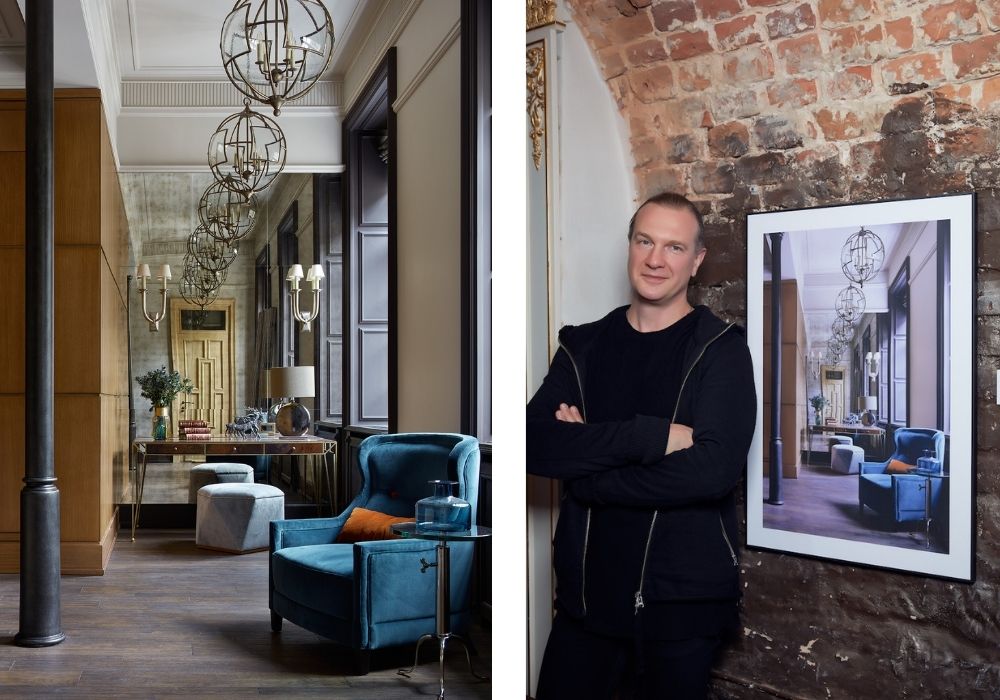
O&A: What is the most important thing in your life?
EM: It is very important to realise that you are alive. Children are happy when the mum is happy, and for the mum to be happy she needs to know that everything she does is not done in vain. The most important thing is to maintain the balance between family and professional life.
O&A: Please share some tips on how you manage to maintain that balance?
EM: I never stay at work late more often that twice a week. I never work on the weekends; I take my children to work with me when I can. This is time management and prioritising the right things because I know that there is nothing more important than putting my child to bed myself.
O&A: What do you dream about now?
EM: Right now, I would love most of all to create the book I mentioned above. It is possible that the absence of any sort of global ambition speaks volumes about the fact that my life is fundamentally ok.
Our project “Private SPA in a residential place” became a winner of BEST HOUSE Professional Design Award 2020.
With the house located around 25 miles away from Moscow, Russia, in a spectacular pine-tree area, the clients did not want any radical changes or developments aside from the addition of a spa complex.
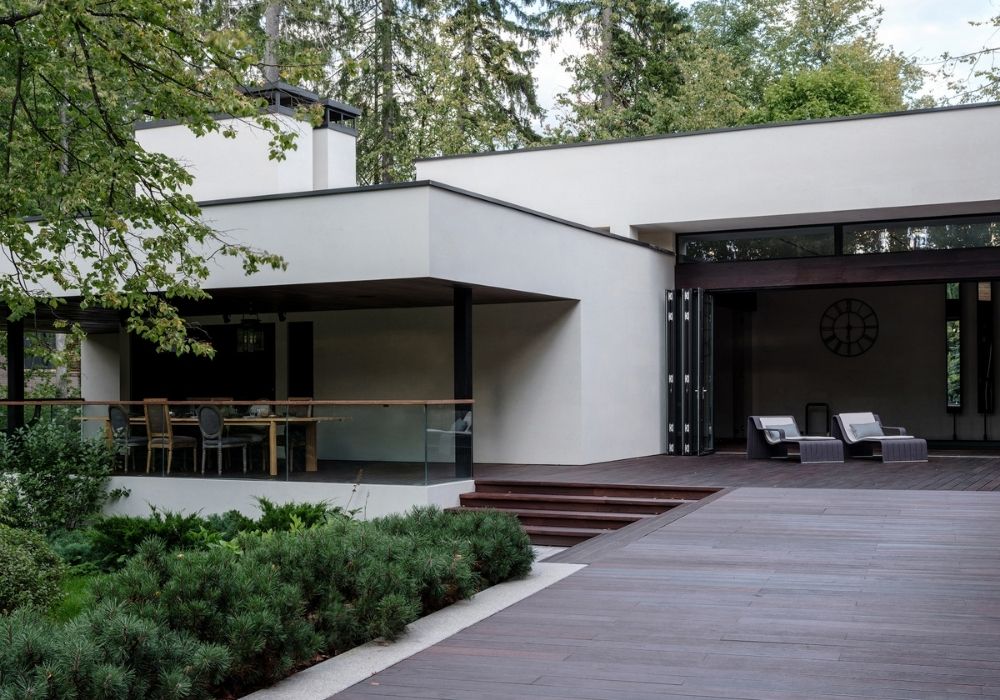
Speaking about the spa design process, Oleg Klodt and Anna Agapova said: “Regarding the architecture, We believe that it is our most successful example of a small architecture shape.
“The minimalist extension is a contrast to the traditional Russian country house style; there is a swimming pool connected to the pastoral scenery through huge open screens. We were able to create an Alpine-style spa in a central Russian landscape.”
Emotions are the best present for Christmas

It is a challenge to choose a gift to surprise a person who has a rich imagination, delicate taste and remarkable creativity. Being in the centre of the festive frenzy we wish to tell you about our choice of gifts that could please artists and designers.
Anna Agapova, Creative Director at O&A London, has prepared a list of the most inspiring gifts for those who love art, nature and travel.
A CANDLE
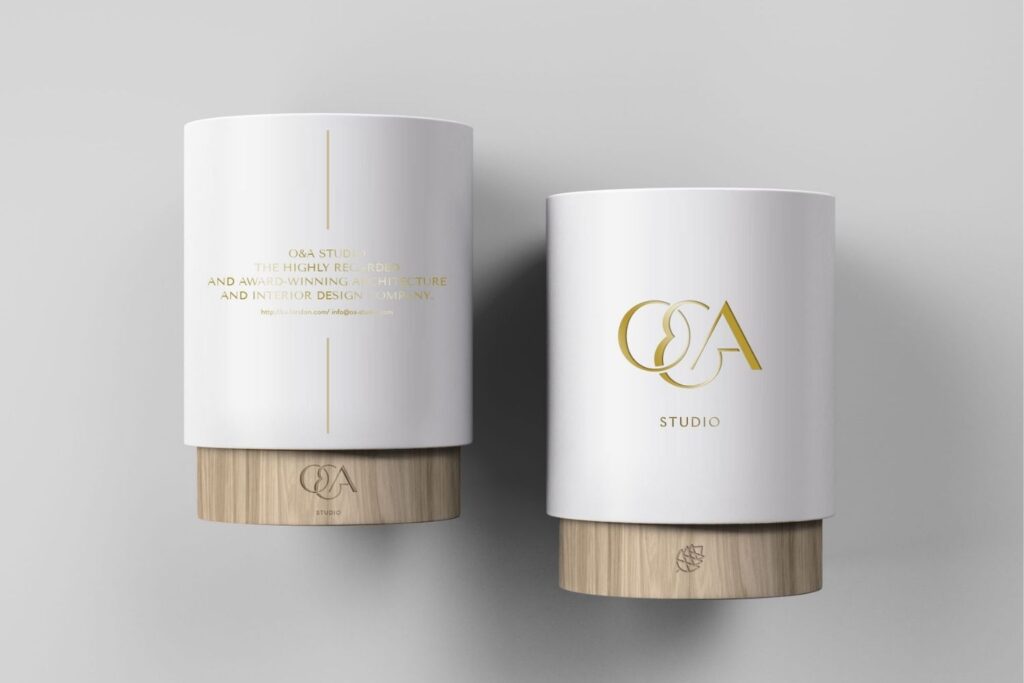
I sincerely believe: the most valuable thing that you can give to a special person is not just a thing but impressions. Therefore, we created the Oak & Amber scented candle to fill up your home with warm and delicious woody goodness on the Christmas Eve. Living fire, pottery, woody scent bring us back to our origins, give us a feeling of home and allow us to become even closer to each other. A scented candle presented for the New Year will fill your home with warmth and light.
A BOOK
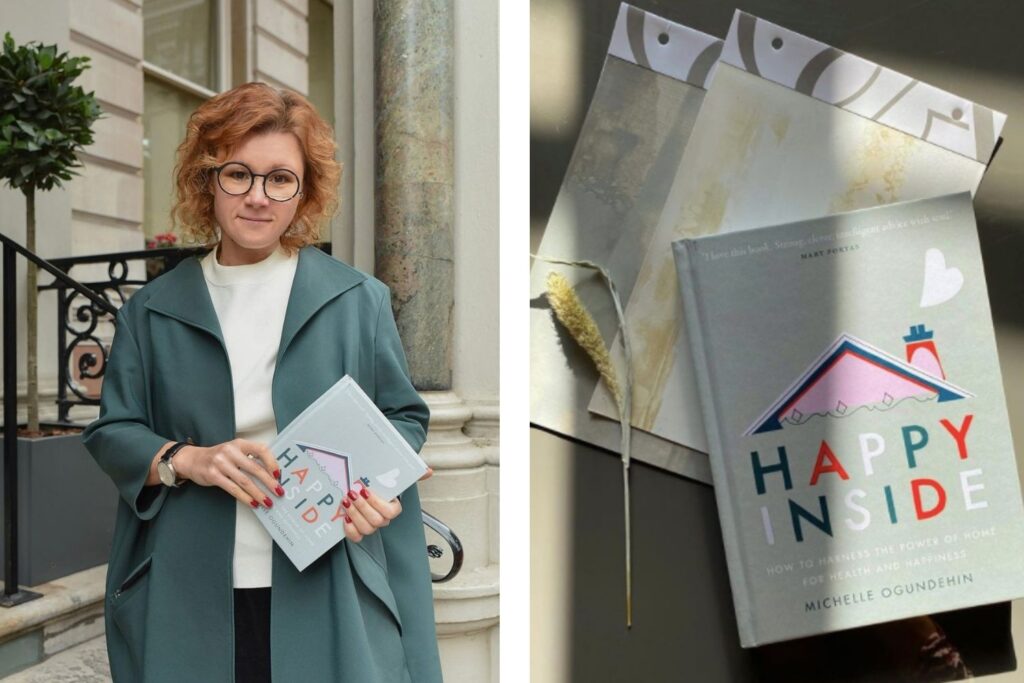
Book is the best gift, as corny as it may sound. It gives emotions, inspires and transports you to another world. Home and happiness are closely connected. As an interior designer, I’ve been feeling this connection for all my life. I was amazed on how the meaning of this was revealed by Michelle Ogundehin in her wonderful book «Happy Inside».
this absolutely beautiful book, in all senses, will be an excellent present for any designer!
TEXTILE
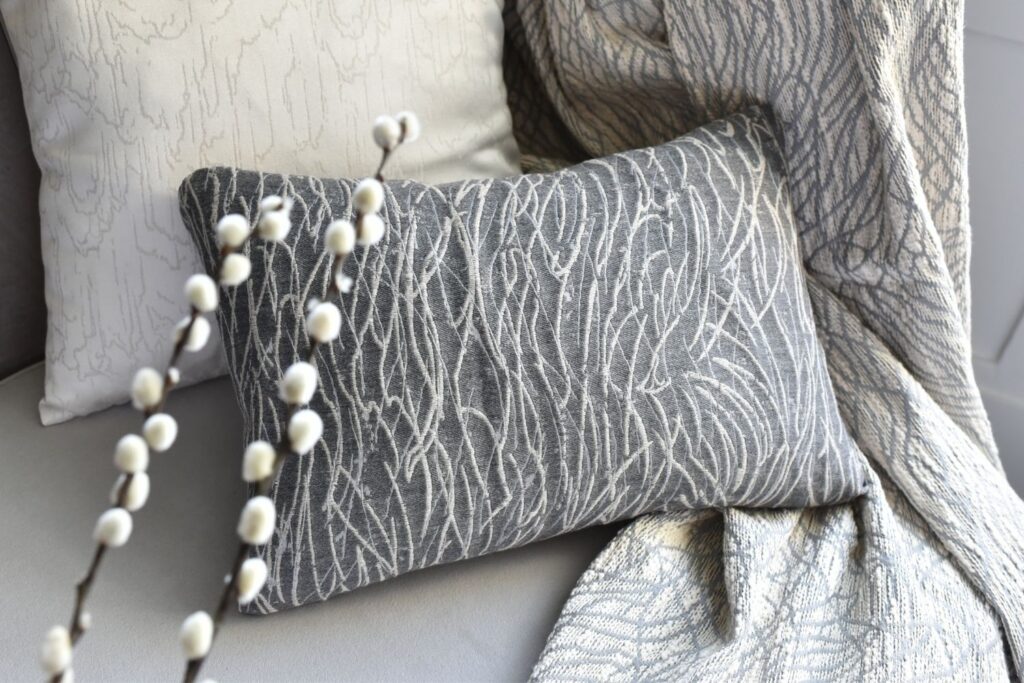
collection launch is scheduled in September 2021.
Our home needs textile as well as humans need clothes. If you decide to present a bedspread, curtains or cushions, I do recommend you to choose natural and neutral colours fabrics. The restrained colour scheme of textiles will allow you to fit into different styles organically, revealing for each in its own way: fabrics will look natural and concise in Scandinavian interiors, elegant – in classical interiors, it will bring notes of home warmth and comfort in a bohemian style. The quality should be the determining factor in your choice.
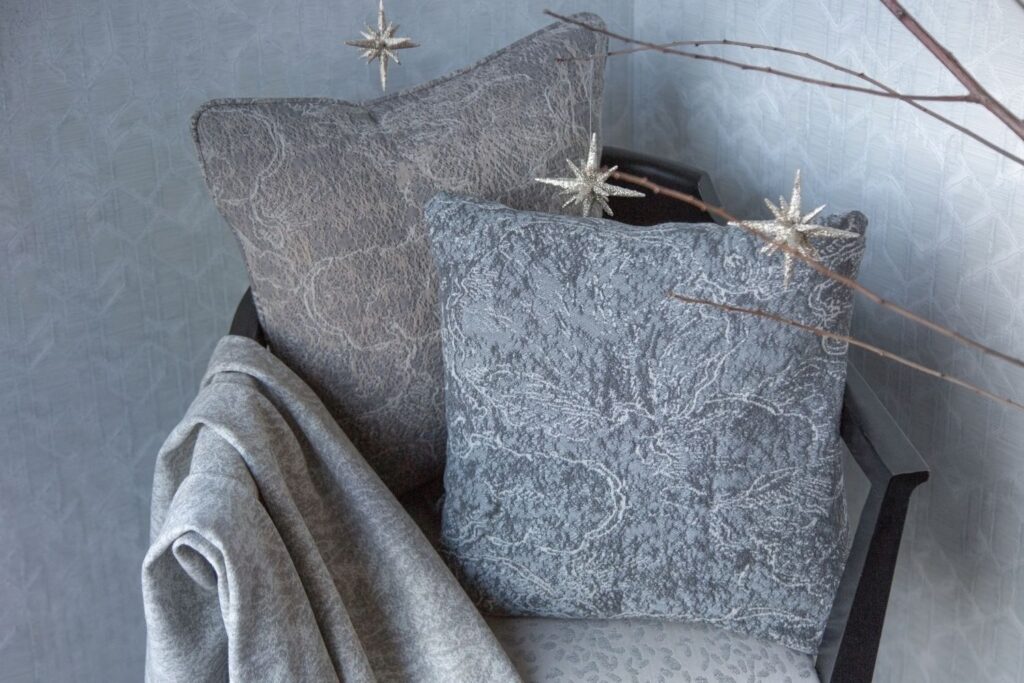
A THROW
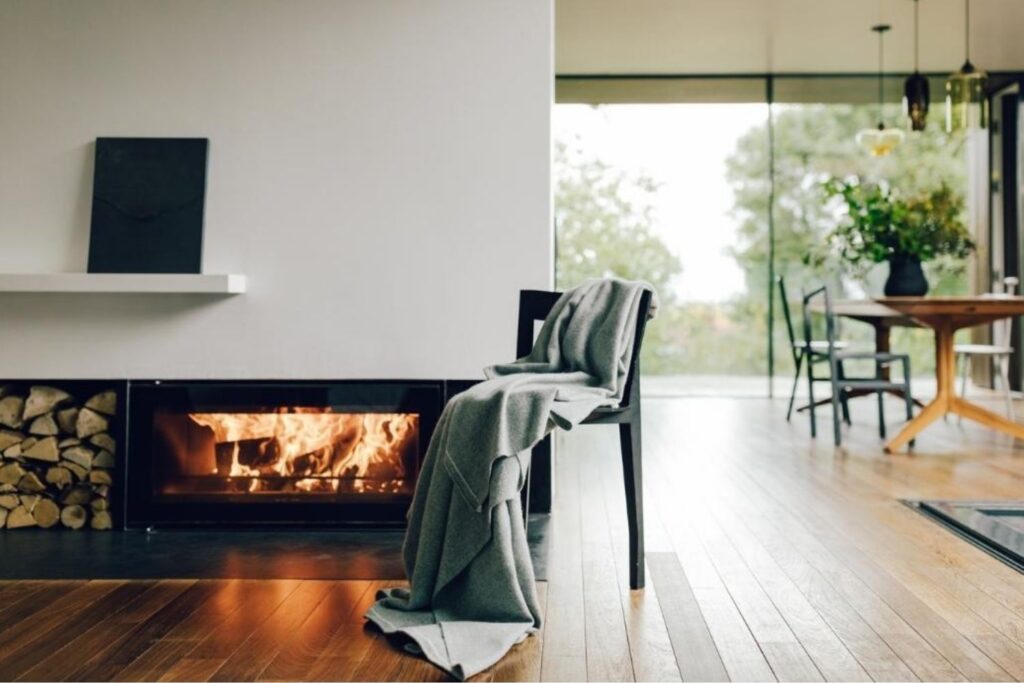
A throw can be a wonderful and a very handy present for anyone. There is nothing better than sitting comfortably in a chair wrapped in a cozy throw and reading a book during long winter evenings. I would love to get a cashmere throw by Oyuna as a Christmas gift.
The Oyuna brand was founded by Mongolian-born designer Oyuna Tserendorj, with the aim to design thoughtfully, using the world’s most luxurious natural material – Mongolian cashmere. Amazing soft throws by Oyuna are so delicate and of excellent quality.
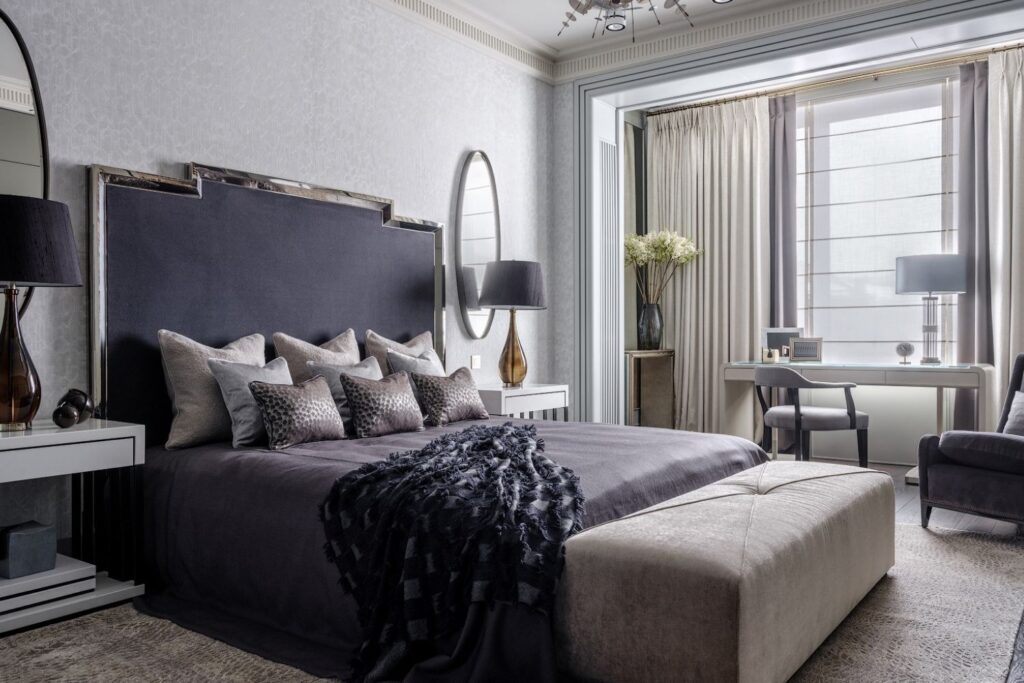
A POSTER
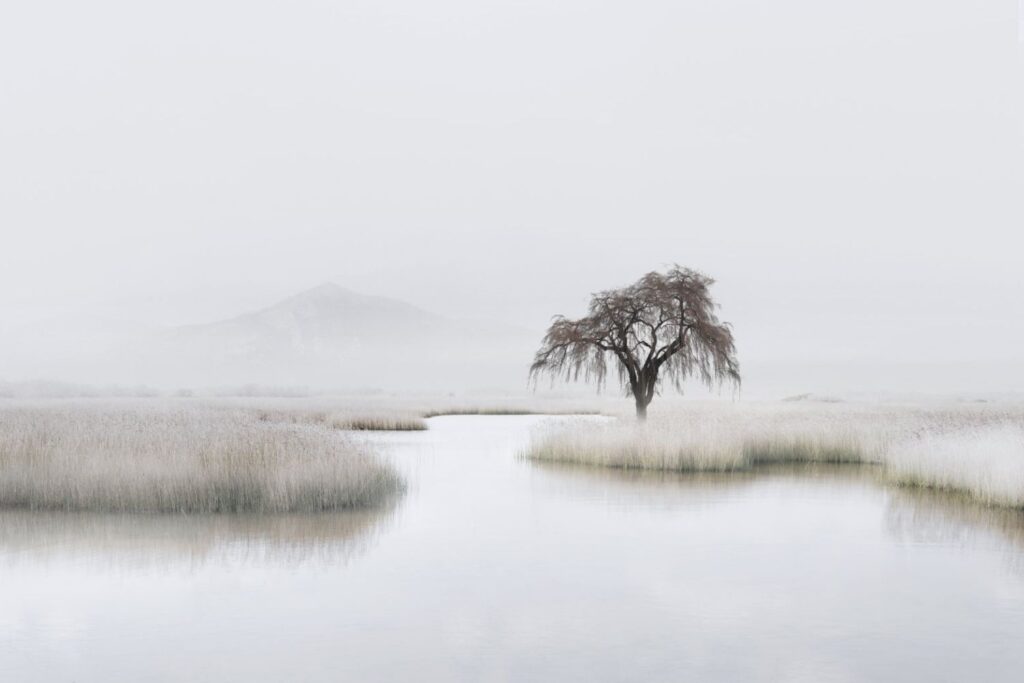
It’s not easy to choose a painting or a piece of art. Try to start with a poster!
A photo on the wall can become a bright accent for your home or delicately complement the interior. The works by a Greek photographer Petros Koublis with his artistic and almost impressionist’s approach to capturing landscapes can be a great choice. Like the paintings of Sisley and Degas, his practice revels in the freedom of the open air, allowing his images to be totally and utterly consumed by nature.
“The world without observers is the world without defenitions”, – Petros Koublis

I would also advise you to look closely at works by Richard Gaston – a 26-year old photographer from Glasgow, Scotland. His landscapes are completely breathtaking and some of the most inspiring that you’ll ever see. With a passion for mountains, he uses natural light and colour aiming to illustrate its overwhelming pastoral peace that the natural world has to offer.
CERAMICS
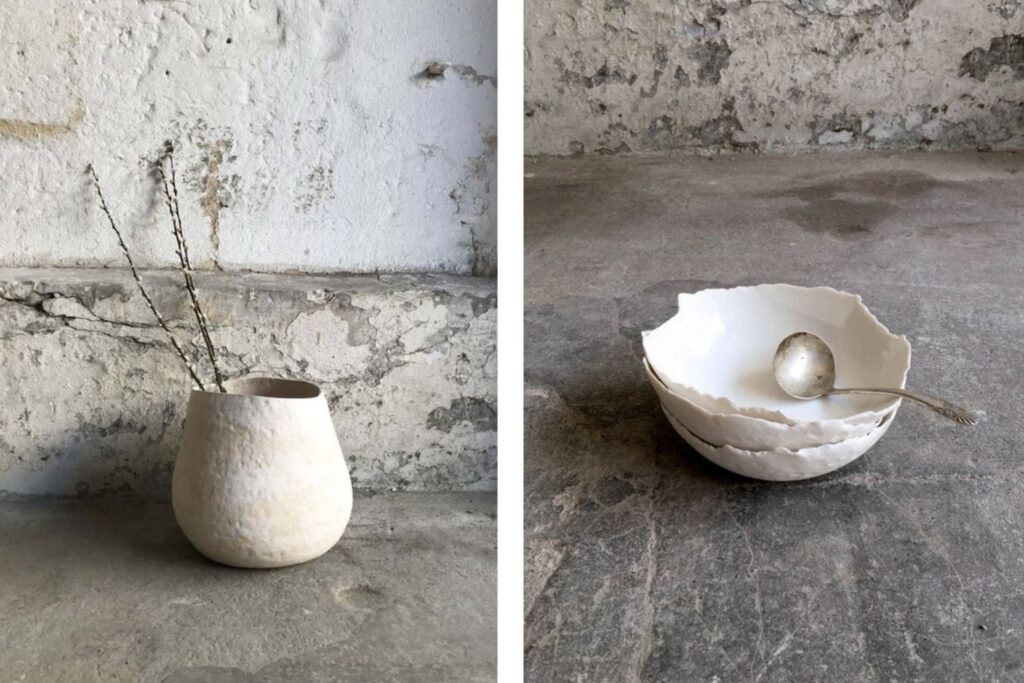
Ceramics can be a very functional and aesthetic gift. I love the handmade ceramics by Ash studio. Custom-made ceramics complement restaurants all over the World. You will delight a creative person with a gift from Ash’s dinnerware.
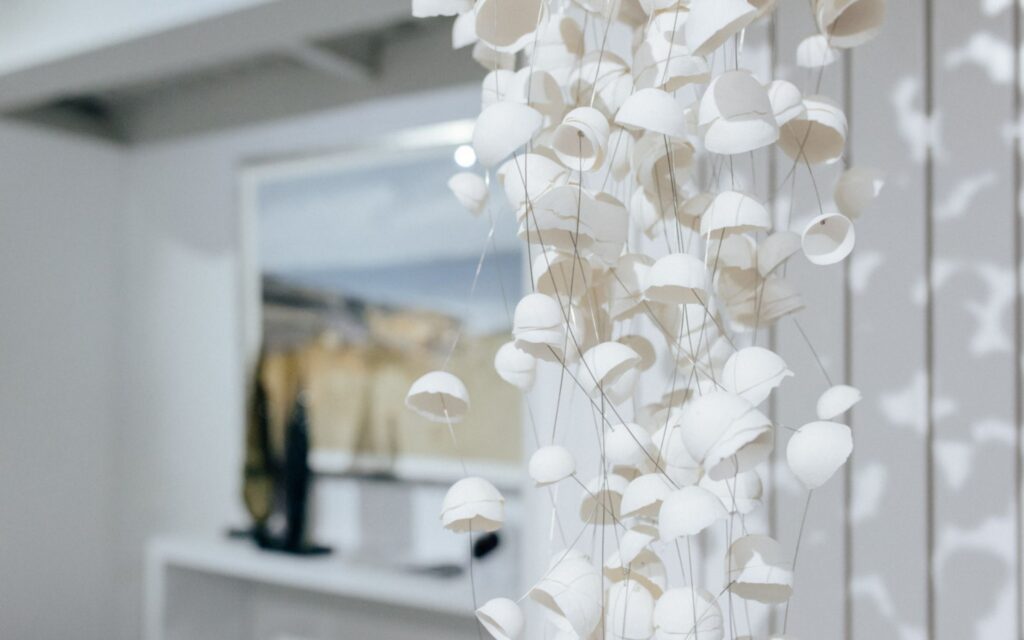
Delicacy and fragility porcelain installations by Valeria Nascimento leave no one indifferent. No wonder that her works are exhibited in museums and galleries around the Globe. These refined nature inspired pieces are very frequent in our projects. The finest porcelain installations are real pieces of art!
HORSES
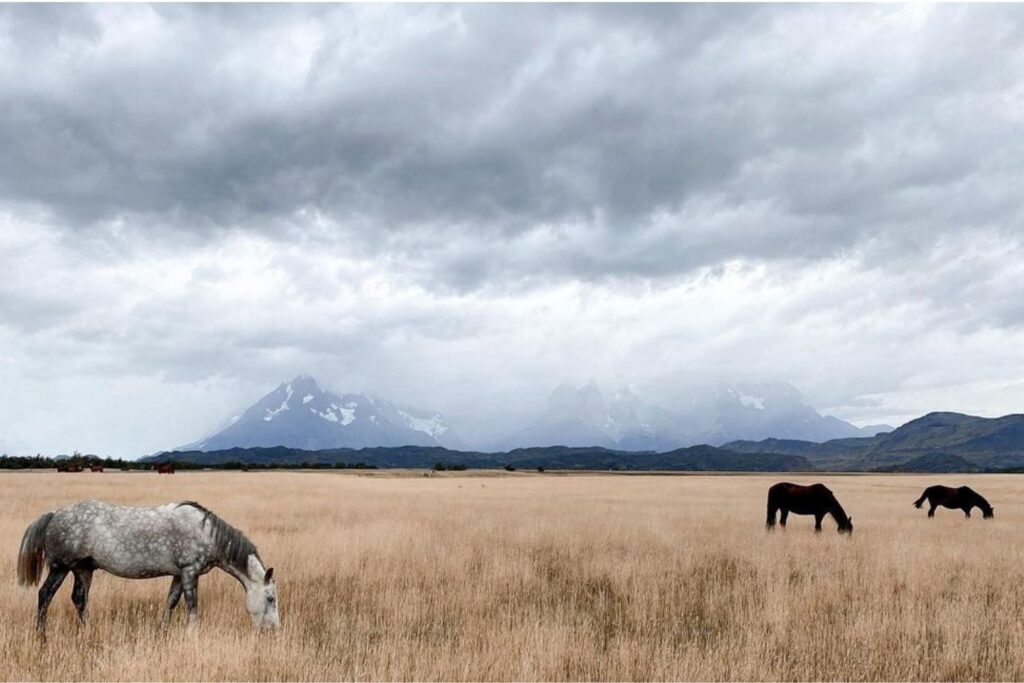
Horses are beautiful creatures. I believe that there is a synergy between clearing up your mind – a sort of meditation – and horse riding. Whenever I’m exhausted or anxious, spending time with horses brings me back to life. Riding and petting horses is my kind of therapy awakening my inner child. When we ride a horse we can slow things down and practise just being in the moment. Present a riding session to your loved one and you will see a happy smile. These beautiful and smartest animals awaken our best feelings and thoughts and give us incredible emotions.
Horses don’t ask questions. They understand.
… I believe the most essential thing that you can give to each other is love, attention and care.
Merry Christmas and Happy New Year!
Yours, Anna Agapova
O&A London celebrates its 20th anniversary this year! With a growing number of international projects, and to create distinctive collections of furniture, lighting, textiles, wallpaper and rugs under its unique brand, the company develops collaborative projects with amazing and talented people. We are fortunate to work with leaders in their field: people who do not see boundaries and make the impossible possible. We proudly name these creators, not just as partners but as co-designers and friends.
We are now delighted to announce the anniversary project «20 // 20». The project will present a series of exclusive interviews. We are happy to present to you the interview with Anders Gramer, a person through whose eyes we see the most beautiful homes, interior photographer from UK and co-founder of the Creative Co-op.
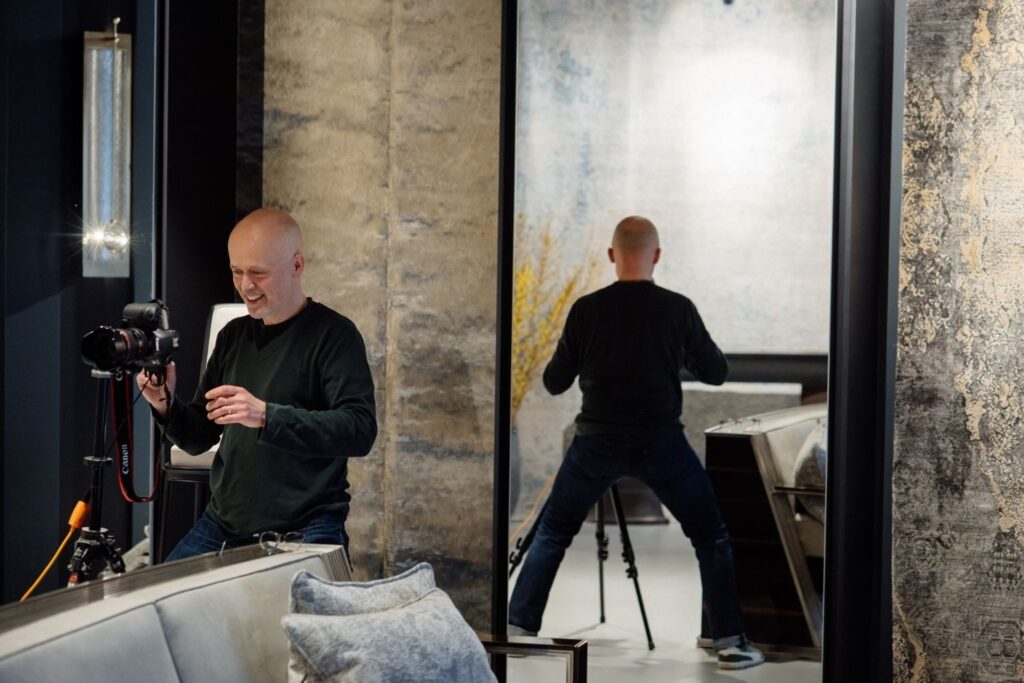
O&A: Anders, what did you dream about when you were a child?
AG: I grew up in the countryside of northern Sweden, so my dream was to work in nature, like a zoologist. I also did a lot of sport when I was young so my other dream was to become a footballer.
O&A: You were born in Sweden. Tell us about your professional path?
AG: A lot of things in life are based on coincidences and my choice of career was as well. I did compulsory military service in the Air Force as a photographer’s assistant and a printer in the darkroom. It was then that I became interested in photography.
After completing the service, I moved to Stockholm to pursue a career in photography and started to work as an assistant for a few years, both in a commercial studio and for a freelance photographer. I wanted to learn more so I studied a Bachelor of Fine Art Photography at Gothenburg University. Love brought me to London and I started to work in fashion and portrait photography before moving across to shooting interiors.
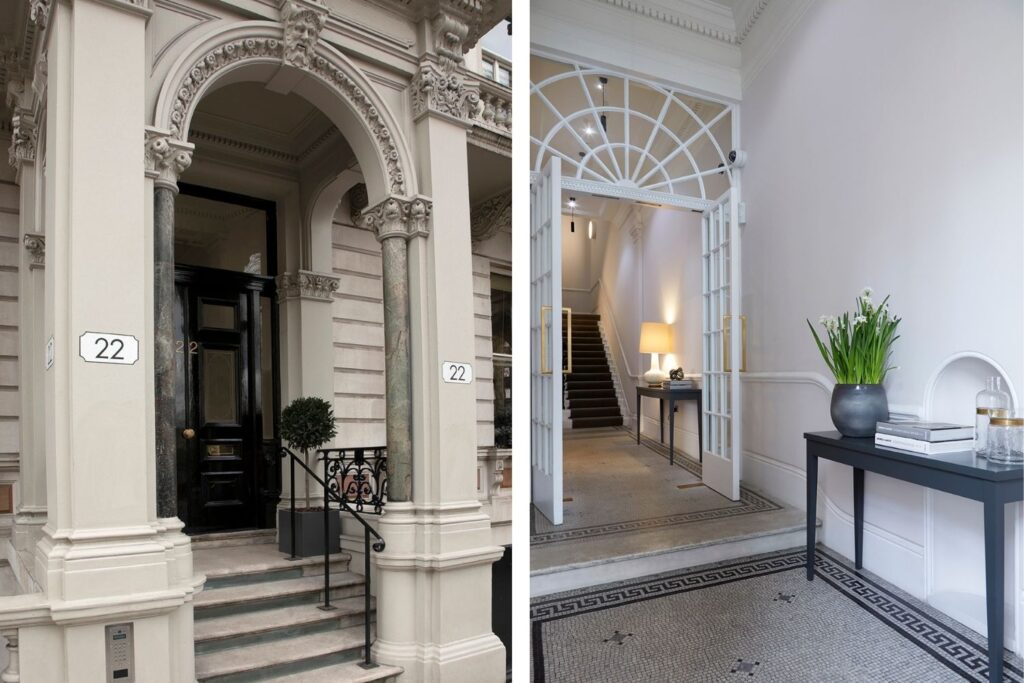
O&A: Do you remember your first interior shooting?
AG: One of my first shoots was in London for Elle Decoration Sweden. It was with a stylist who used to work for one of the photographers I had assisted, so I was a bit nervous!
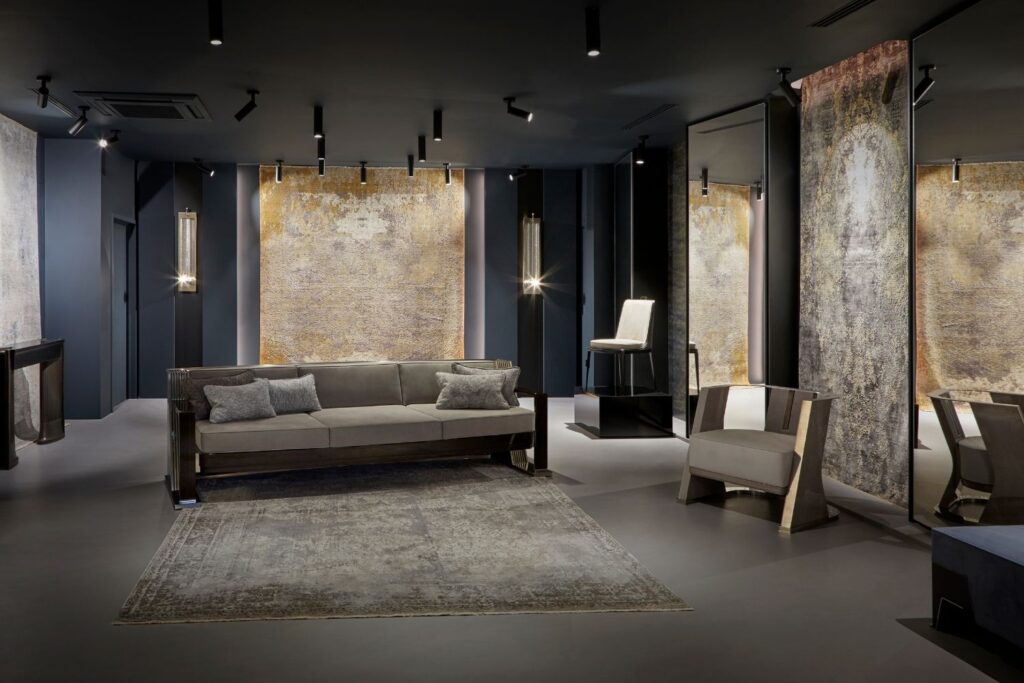
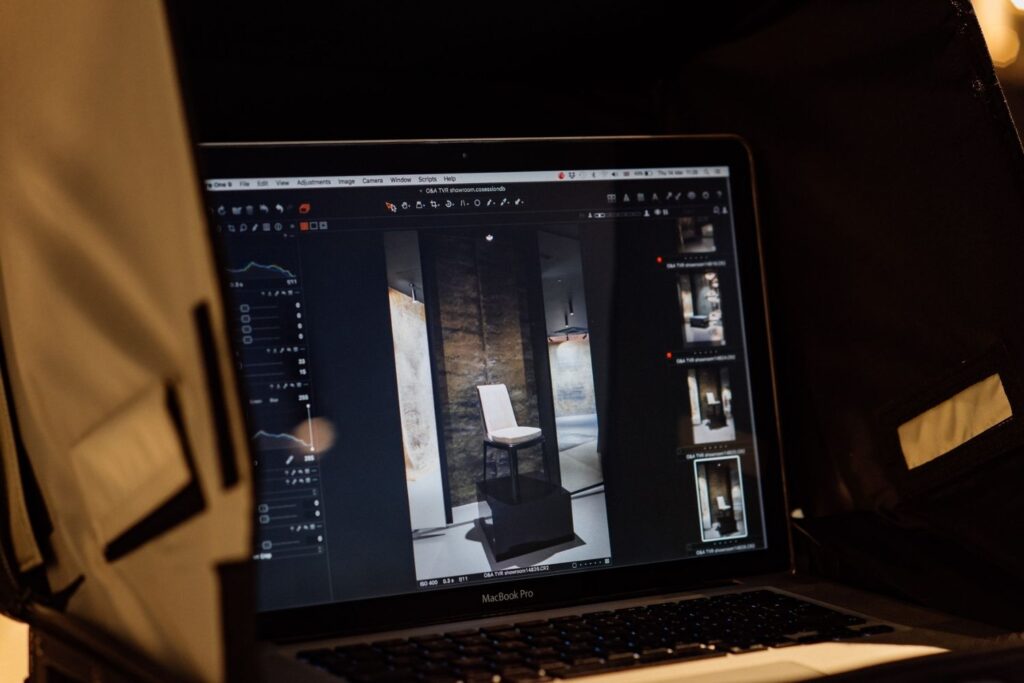
O&A: What else is interesting for you to photograph?
AG: I work a lot with my own still life art projects. I love to create and experiment so I grow plants and microbes and then photograph them.
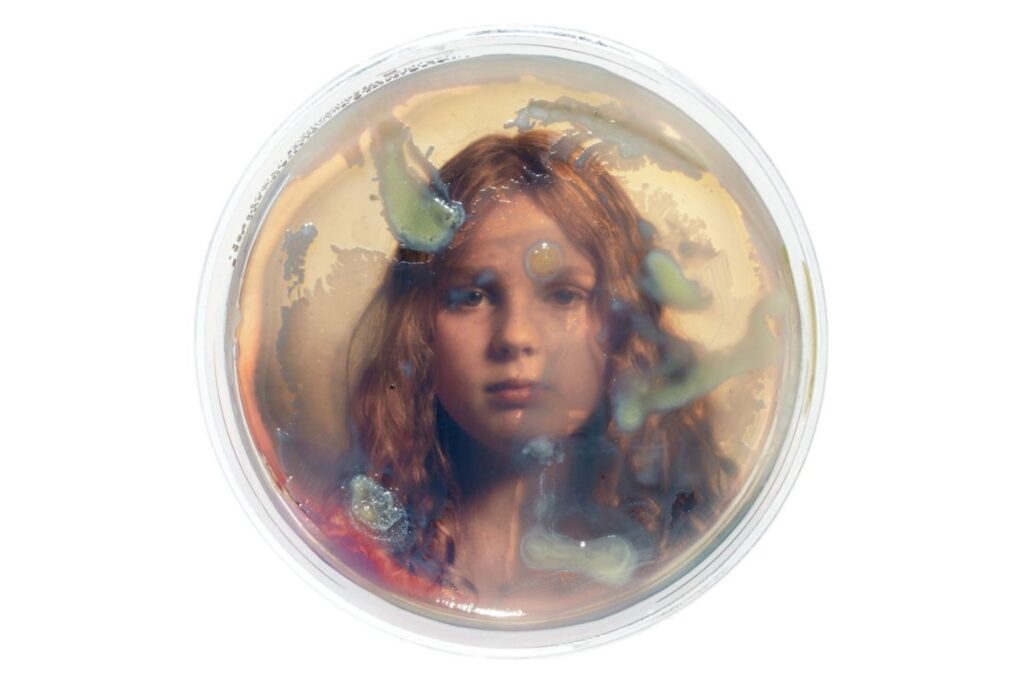
I am also a practicing Zen Buddhist, so I am interested in the interconnection and impermanence of life.
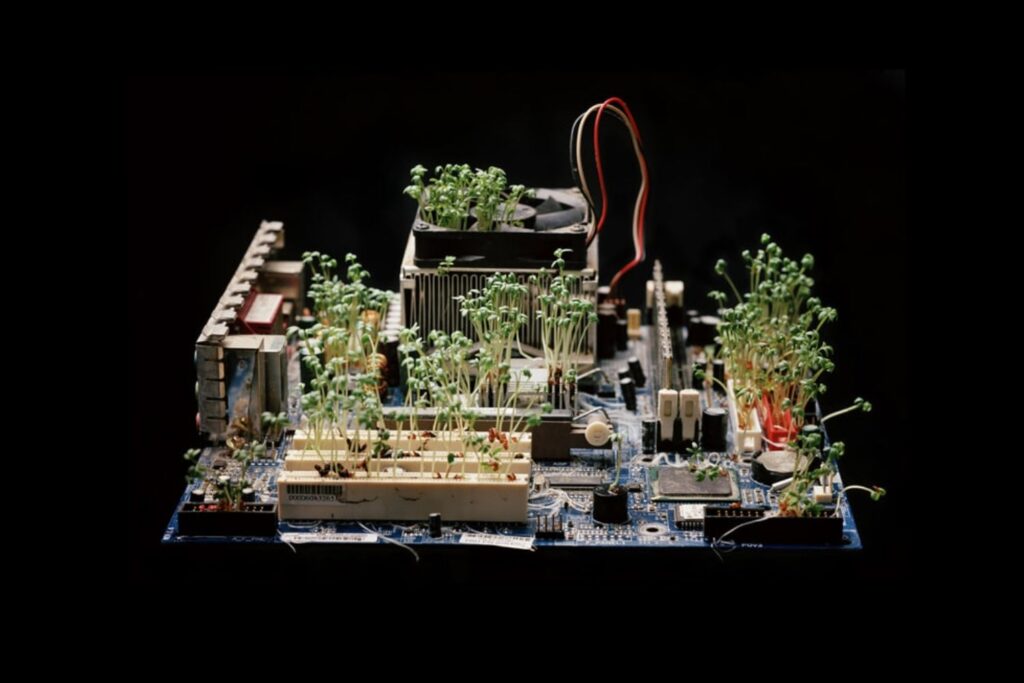
O&A: What is your source of inspiration?
AG: I have so many! I am a very curious person and love to read about many topics from art to design to science so I am lucky in that inspiration just flows most of the time for me. I also love to collaborate with other creative people and that inspires me.
O&A: What interior style do you prefer?
AG: As a Swede, I do love the 1950’s-60’s Scandinavian design.
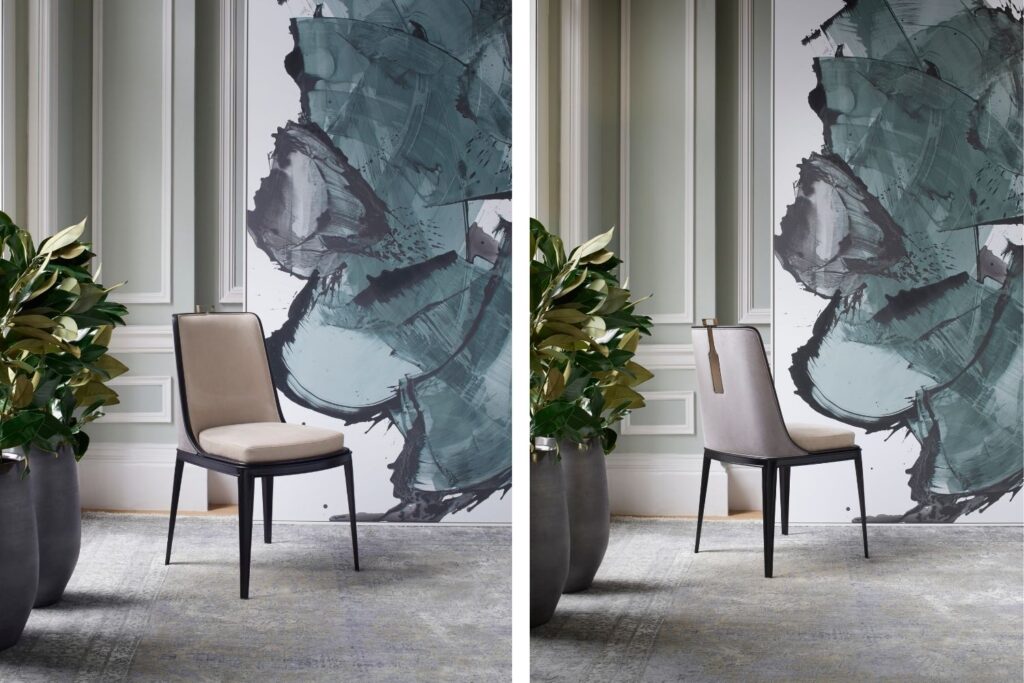
O&A: If you don’t like the design can it become a problem for your work?
AG: No, I see the picture as a whole. There are so many other components, like composition, colour and lighting. That is where I focus.
O&A: What helps you during the shooting? What hinders?
AG: A calm mind and nice people to work with always helps. Too many distractions and too many biscuits, hinders!
O&A: How did you meet Anna Agapova? Tell me about your cooperation?
AG: I met Anna two years ago when I shot her furniture collection. That was very enjoyable, as there was a good collaboration and we were all focused on making good pictures!
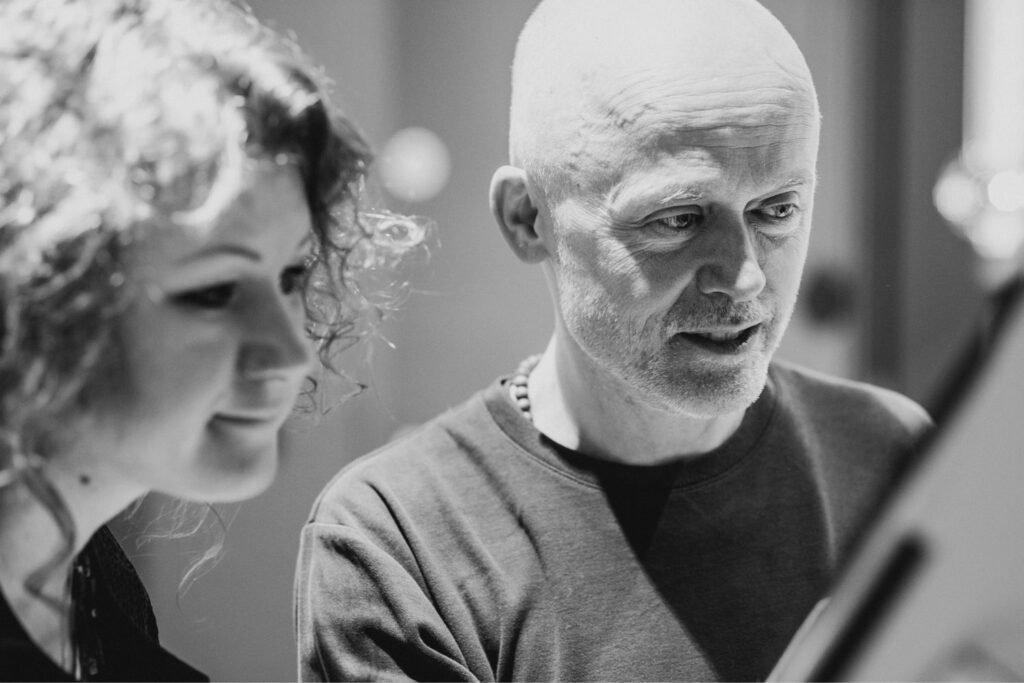
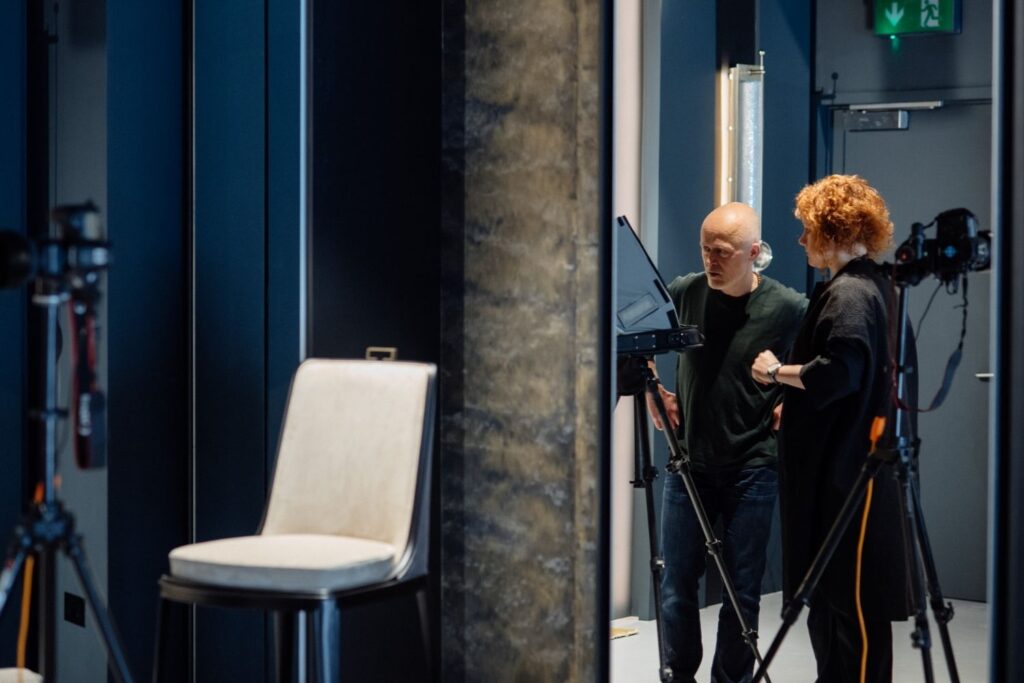
O&A: What are the latest trends in interior photos?
AG: From a photographer’s point of view, I think the lighting has become sharper and lighter shadows, a more graphic approach. I think it is based on the fact that the picture we see in the media today are mainly on a screen and we see so many, so the brain doesn’t have the time to digest images that are too complicated.
O&A: What is your advice to a young man/lady who dreams of being a photographer?
AG: Learn the trade properly, don’t rush as it’s not a race, spend time assisting, and enjoy it. If you don’t like the area you are working in, change direction as photography has so many different applications.
O&A: What is your most successful photo?
AG: Probably my second shoot for The World of Interiors. We shot it in my old flat. When the issue came out they had made one of my pictures into the cover. That was a surreal and amazing feeling to walk into the newsagent and see my picture on the cover, especially as I just started to shoot interiors.
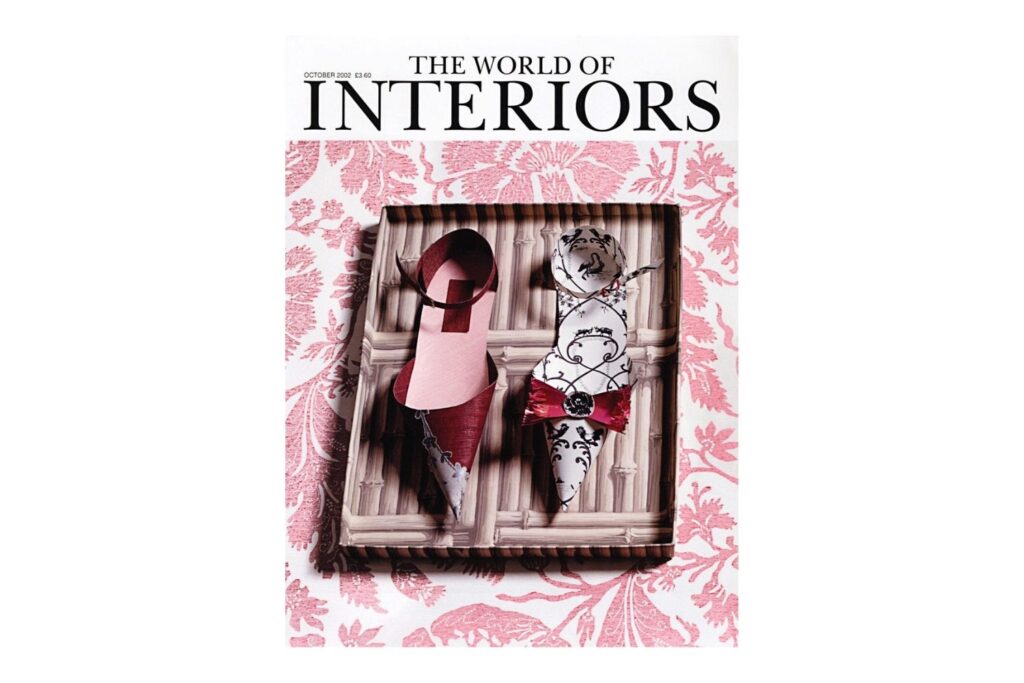
O&A: What are you dreaming about today?
AG: Well, I haven’t been back home to Sweden for a long time because of Covid, so I am actually dreaming of having a swim in the lake in the forest where I come from. I know it is a bit cold now but it would be lovely to swim and be enveloped by the trees.
Our recent project was awarded “Golden Trezzini 2020”
On December the 1’st, the awarding ceremony of the third Golden Trezzini awards took place in St. Petersburg, Russia. O&A London got a golden statuette of Domenico Trezzini.
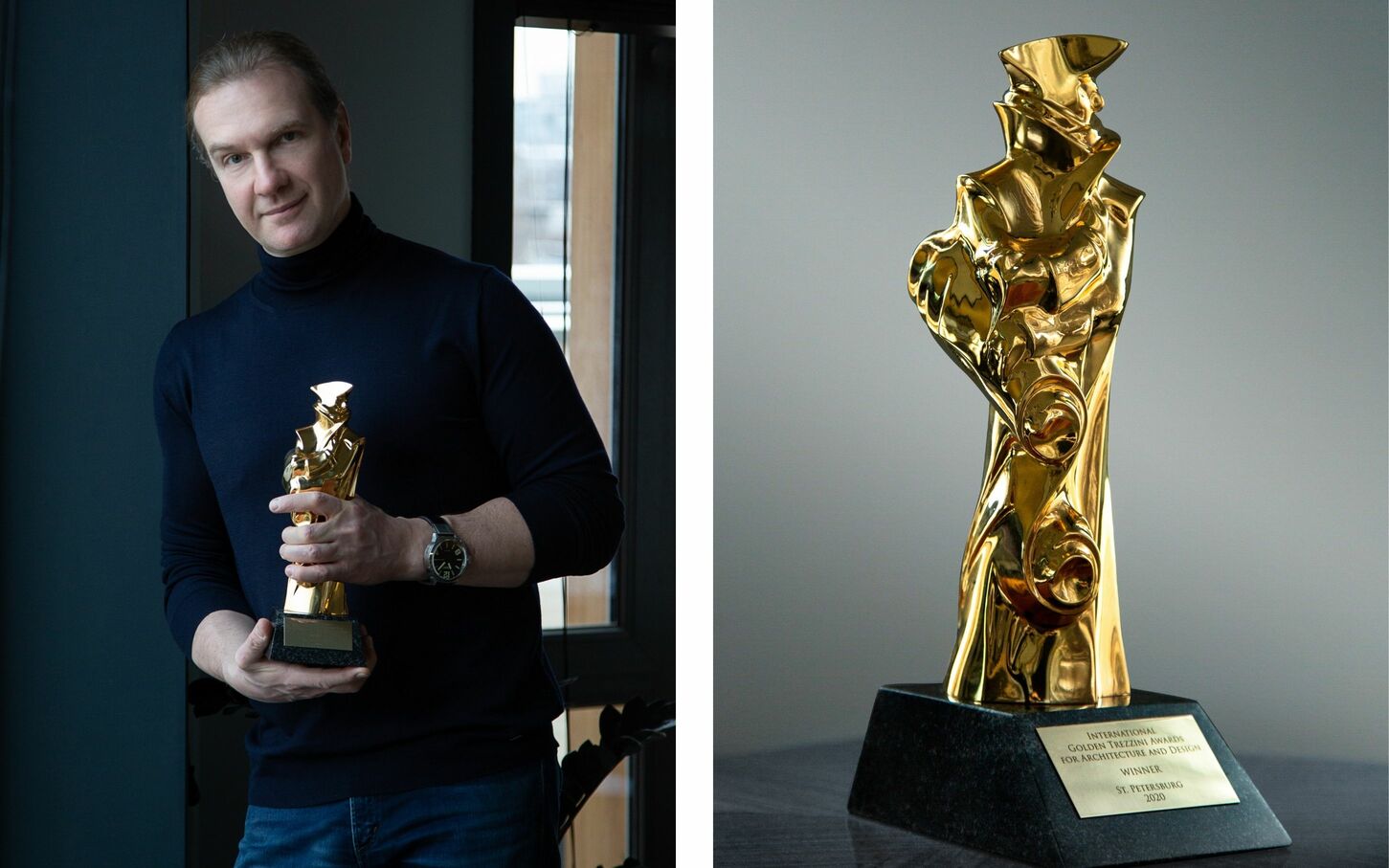
This year, the international jury of the competition evaluated 744 projects from 59 countries. The jury includes world-renowned architects Daniel Libeskind, Mario Botta, Toyo Ito, Ricardo Bofill, Massimiliano Fuksas, Eduardo Souto de Moura, Chief Design Officer of Ferrari Flavio Manzoni, and other experts from 31 countries.
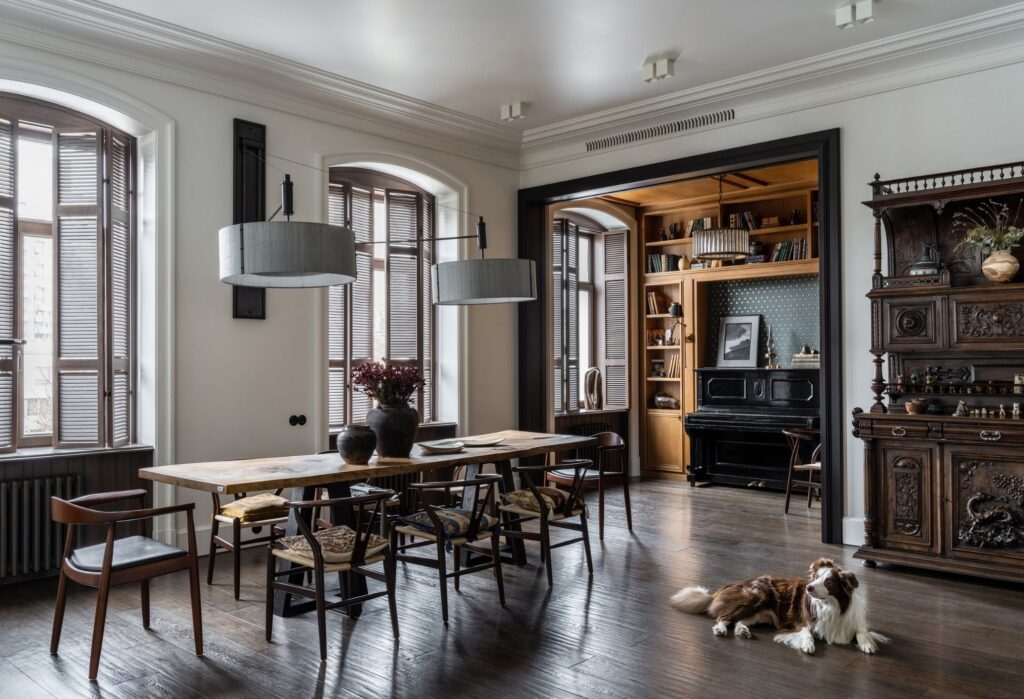
The Golden Trezzini awards was established in 2018. Golden Trezzini is awarded to the authors of the most artistically valuable projects in the field of architecture, design, restoration and museum affairs. The Honorary Chairman of the International Council of the Awards is Mikhail Piotrovsky, the director of the State Hermitage.
We are honoured, big thank you to the jury panel and Organising Committee for the high appreciation of our work.
To find out more about the award-winning project follow the link.
O&A London celebrates its 20th anniversary this year! With a growing number of international projects, and to create distinctive collections of furniture, lighting, textiles, wallpaper and rugs under its unique brand, the company develops collaborative projects with amazing and talented people. We are fortunate to work with leaders in their field: people who do not see boundaries and make the impossible possible. We proudly name these creators not just as partners but as co-designers and friends.
We are now delighted to announce the anniversary project «20 for 20». The project will consist of a series of exclusive interviews. Today we are happy to share with you an interview with Tom Faulkner, a furniture designer and a creative thinker.
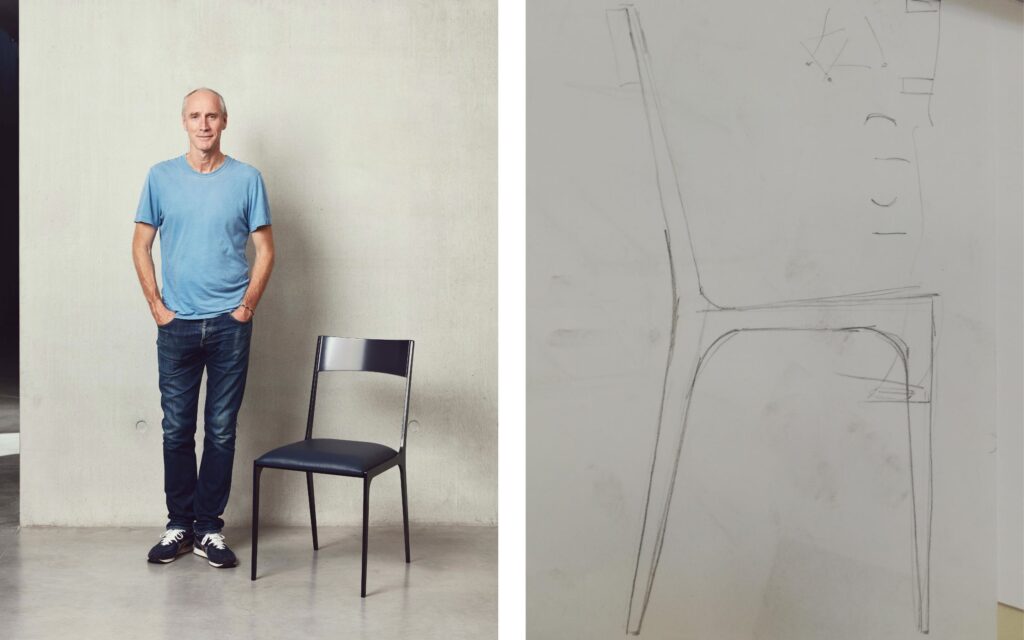
O&A: What did you dream about when you were a child?
TF: I dreamed about being a footballer or a rock star. I also dreamed of living in a dark blue house full of white furniture.
O&A: Tell us about your background. Have you always dreamed to be a designer?
TF: No, I never considered that I could be a designer as a career – although as a child I was a creative thinker – I always liked to make things, and fix things. However, I spent my twenties doing different things – my favourite was working as a picture framer, and then I spent a year in New York working for a photographer for a while, and then for an interior designer. Then I returned to the UK and worked in music – in a record store and then for a record company, working in sales…
O&A: After more than 20 years working in furniture design, how would you describe your signature style?
TF: I use a lot of strong motifs – or silhouettes – in my work, and I don’t use a lot of additional ornament. I would say that my style is simple, distinctive, and (I hope) elegant.
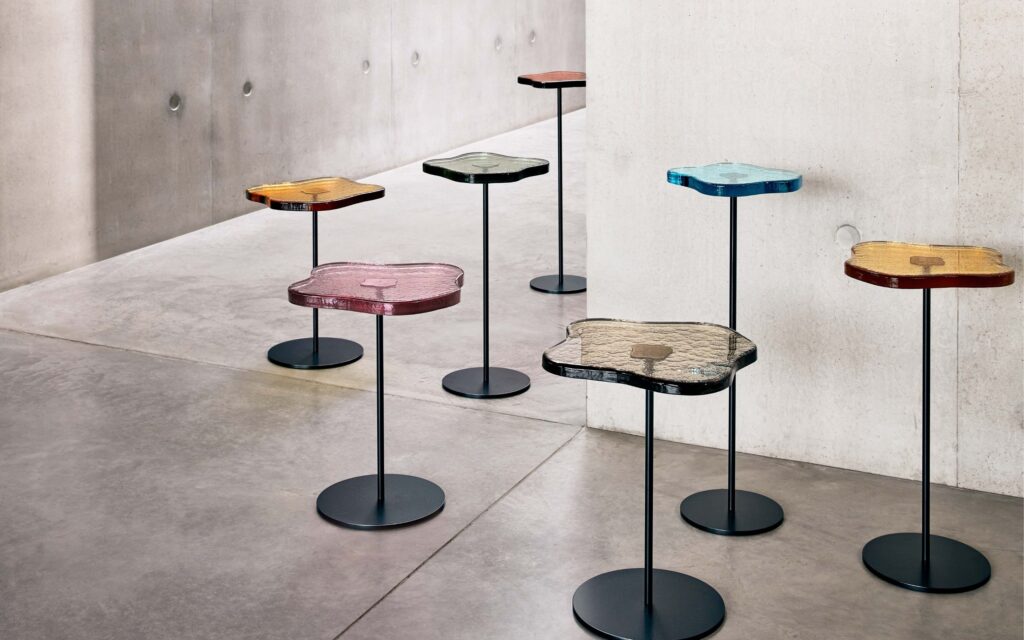
O&A: Was it difficult to set up your workshop?
TF: When I started out on my creative journey, I walked through doors that were open and went down roads that looked interesting.
I once met a man who had a metal-fabrication workshop, and I asked him if he could make some tables for me, and soon he was making more and more things for me, to the extent that I became almost his only customer.
When he decided to retire he offered me the opportunity to take buy his workshop. I took a deep breath and said yes! I agreed to retain his two employees – Nigel Ballamy and Gordon Ball. That was in 1995 and Nigel still works for me, as chief engineer, and head of product development and Gordon retired earlier this year.
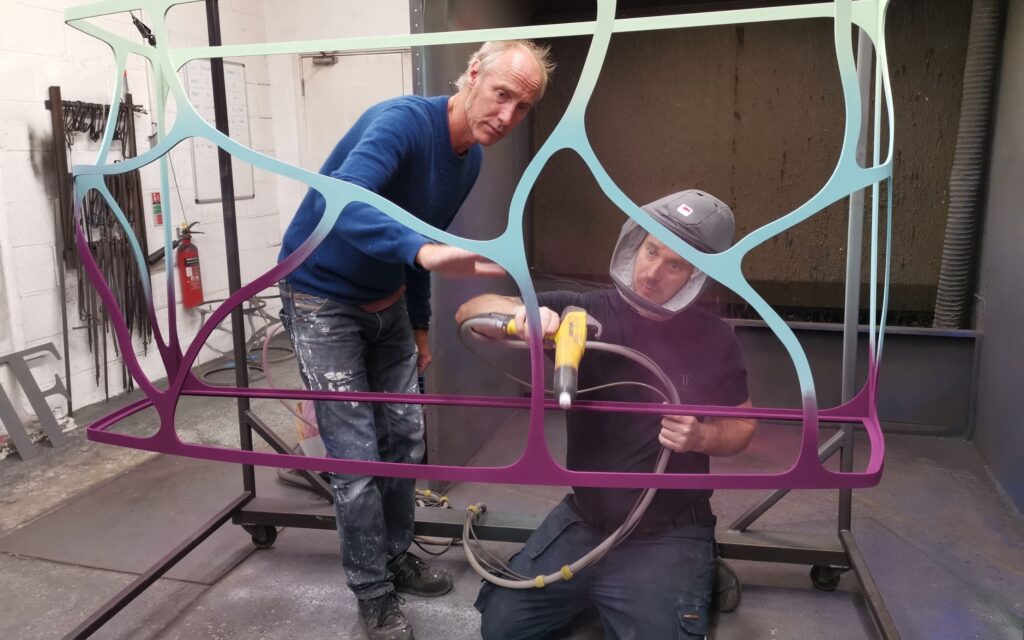
O&A: In 1999, you opened your first showroom, in Clerkenwell. Did you have a business plan that time how to promote your brand?
TF: Again, the showroom in Clerkenwell was an opportunity that came my way. It was miles from where I lived and miles from the workshop, but it somehow seemed like a good idea! I first set it up as a kind of “boutique” – with my furniture along with other housewares – plates, baskets, paintings, and even sunglasses. In around 2004 I met Miranda Kirwan who came to work for me on a part time basis, and she slowly became more involved in the business. As we started to sell more and more furniture to interior designers, we decided to give up the other homewares, to concentrate on furniture and in 2008 we moved to move to Chelsea. (Miranda is our current CEO). Miranda and I are the “co-authors” of Tom Faulkner as it exists today, we have built it together.
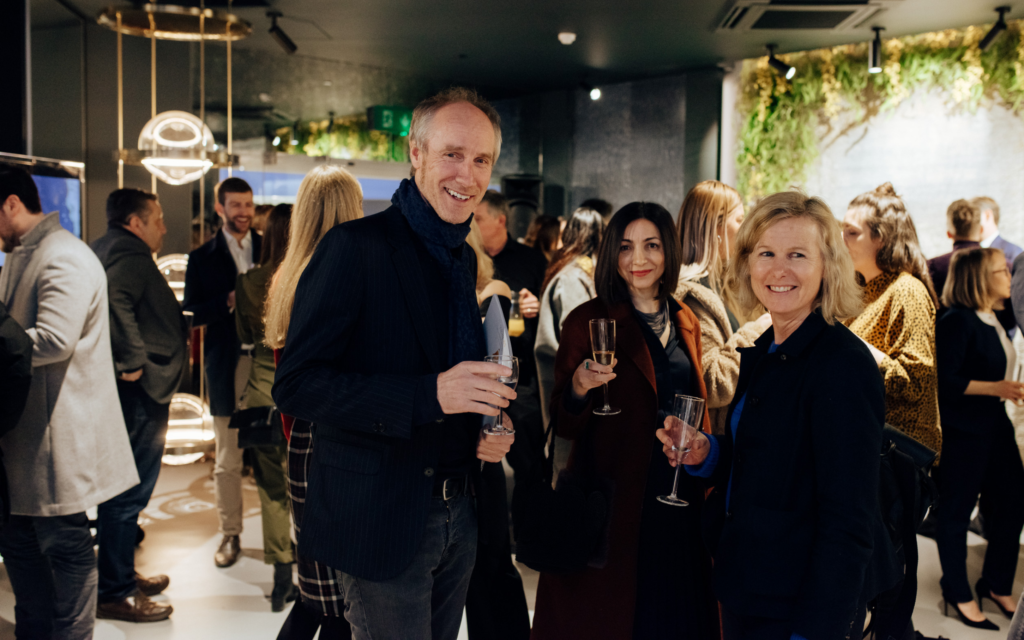
O&A: What makes Tom Faulkner designs different?
TF: I didn’t train as a furniture designer. I started out working in two dimensions, painting patterns on to table tops and flat surfaces, so without the proper training I have always had to keep it very simple, and have had to rely on the properties of the materials I use. I have never really looked at other furniture while designing.
O&A: Tell us about your collaboration with Jean de Merry?
TF: I met the Jean de Merry team on a trip to California in 2016. I just went to their showroom and introduced myself. They have wonderful showrooms and I was very pleased and flattered that they were keen to work with me. They are a wonderful showroom, but after three great years there we have now moved to the great David Sutherland in LA and Dallas. We are also represented by MOD in Denver, R. Hughes in Atlanta, and Angela Brown Ltd in New York.
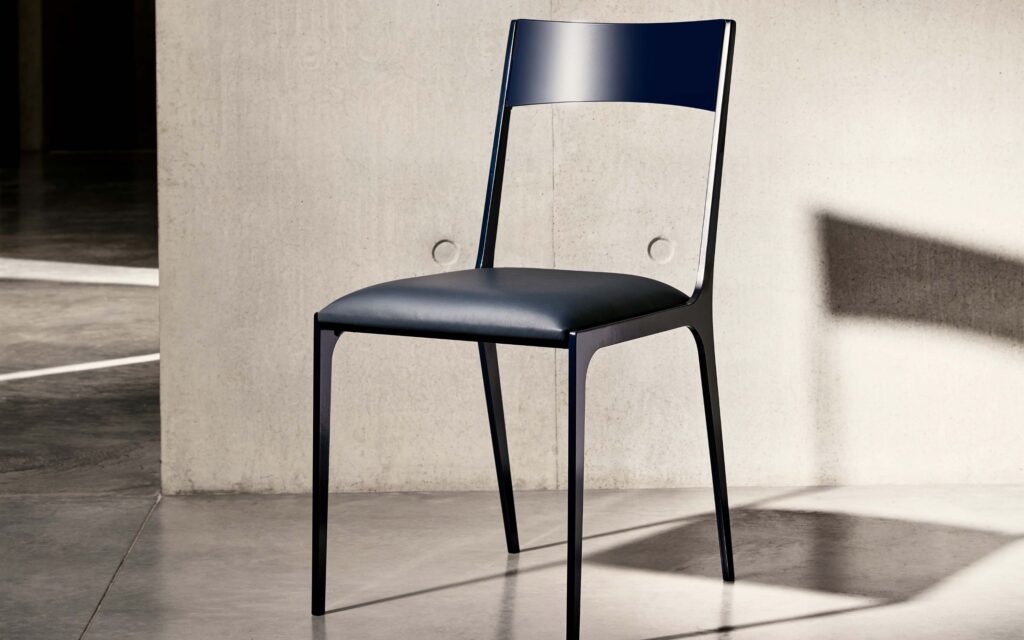
O&A: Metal still remains your first love. Why do you like this material?
TF: The beauty of metal is that you can shape it and bend it and flatten it and roll it. It’s very versatile, and it’s very strong. I love that you can be very delicate with it and almost mild.
O&A: You said that the team is incredibly important. How many people work with you?
TF: About 18, but there are others – part time, and freelancers and then the photographers, art directors etc. who I work with regularly.
O&A: Describe your working day?
TF: I spend most of my time in London, either at home or in the showroom and the rest of time I am in the workshop. I find it difficult to divide my time between two / three places, but that’s just the way it is! If I’m in the workshop I will be working on new pieces or helping with existing bespoke orders.
Like most people I feel I spend far too much time in front of a computer, and I find it difficult to carve out time to design and think.
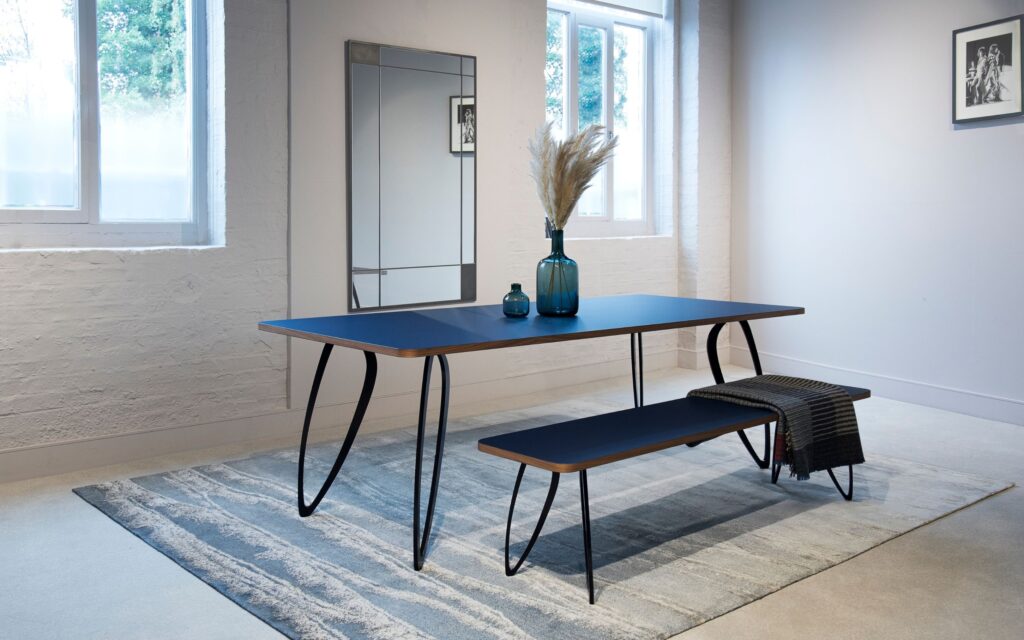
O&A: The key words that define Tom Faulkner are creativity, boldness, friendliness and integrity. Can you explain it?
TF: Whatever we do as a business we like to refer to these words.
We are a creative business, but we need to be creative with everything we do. We need to think creatively and make things happen. Miranda and I have a mantra: “There’s always a way”.
Being bold means we have to do what we believe is right, and we need to take chances when they present themselves.
Friendliness is very important to me – in every aspect of my the business. To our clients and customers obviously, but to everyone we are in contact with. As they say, a smile costs nothing! Integrity means doing what’s right, and being authentic. If you get a Christmas card signed by me then it’s been signed by me, not someone who works for me! And I don’t want to be involved in a project or a collaboration for the sake of publicity if it doesn’t interest me.
O&A: What makes a piece of furniture a masterpiece?
TF: That’s pretty difficult to answer. Corbusier once said of a side table made for him by his friend Jean Prouvé that “The table is so perfect that I haven’t even noticed it…” Chairs are famously the most difficult things to design. The MR10 by Mies van de Rohe is one of my absolute favourites. It’s simple, elegantly proportioned, modern, and incredibly beautiful.

O&A: Tell us about your new Atlantic collection. What inspired you?
TF: I was actually inspired by the work of Jean Prouvé, although the design moved on a long way during the process. It was meant to be easy, young, contemporary and stylish. Not grand – no bronze or marble – but practical and modest in the choice of materials.
The top is made with a wonderful material which is a kind of veneer made from card and paper impregnated with resin. It is very practical – both scratch, and fingerprint resistant.
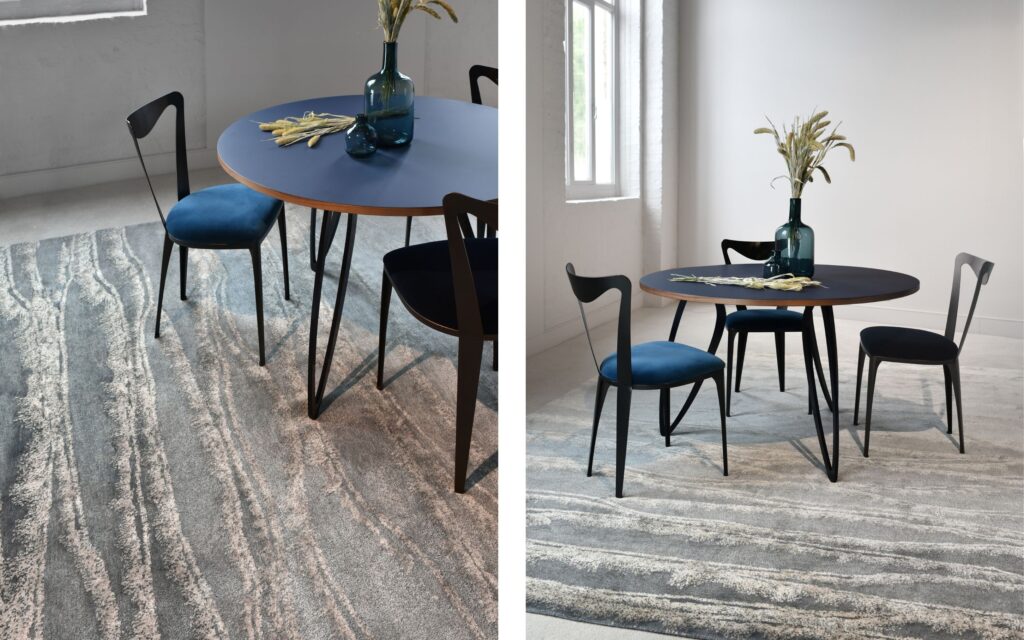
O&A: What do you love most in your work?
TF: I love being able to work with my hands, and I really appreciate being as close to the product and to the process as I am. I spend a lot of time in the workshop. And of course I love working with beautiful things.
But most important to me is the people I work with. Being an employer is a privilege and a pleasure. I have a wonderful team in the workshop who enjoy what they do and take great pride in their work, and I have an equally wonderful team in the showroom/office. And it is thanks to all of their efforts that the business has grown, as it has.
O&A: Do you like books by William Faulkner? Which one is your favourite?
TF: I’ve yet to read one! I think I would start with the “The Sound and the Fury” – what a GREAT title! J Strangely in America people often ask me if I am related to William Faulkner, but no one has ever mentioned it in the UK…
O&A: What are you dreaming about today?
TF: Travelling to Japan next year… It might just be a dream!
O&A London project won Grand Prix at National Award «Best Interior» in private apartment category. The organizing Committee of the Best Interior Festival – The Union of Architects of Russia – has awarded the winners on, November 13, 2020.
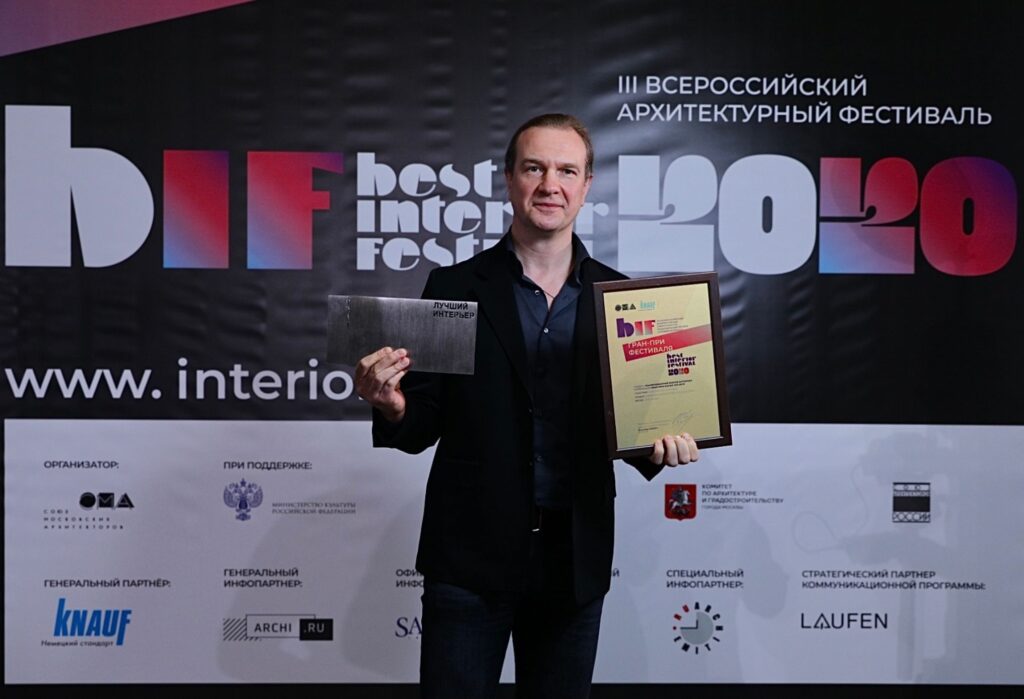
This project is unique for the bureau: one of the aspects that makes this apartment different from others is a complete lack of curtains. The central part of the living room is unexpectedly for a city-dwelling — a stove. Oleg Klodt created almost all pieces of the furniture for this apartment.
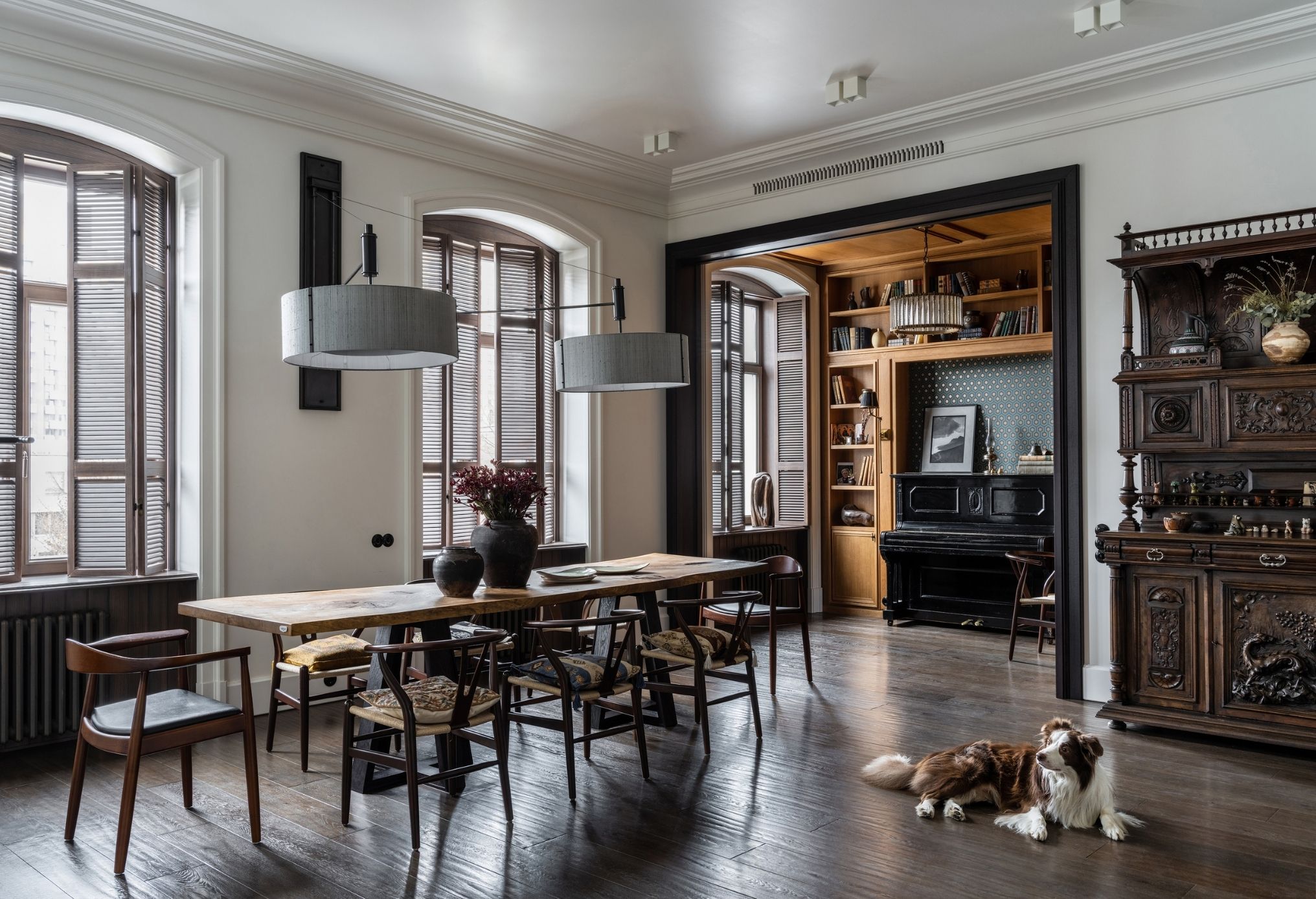
Anna Agapova & Oleg Klodt:
“We are really happy and excited to get this prize for this very special project! The apartment itself helped to create the interior with a history. In our throw-away society, when not only the value of possessions but also real human connection is being lost, we wanted to make something that would stand the test of time. We are sure that architects and designers will continue to create spaces that link us to the past. We appreciate recognition by the colleagues and professional society of this project and will do our best to meet the highest expectations in the future!”
The All-Russian Architectural Festival
BIF aims to discover the latest trends in interior design and expand creative communications between public groups and professional associations. Within the framework of the festival, the All-Russian architectural competition with international participation The Best Interior National Award select the best realized projects and encourage the architects and designers who have created the most interesting projects and thereby have made the greatest contribution to the development of modern interior design. The Competition identifies the best works made by designers, architects (authors), designers’ teams or architects’ teams (authors’ teams) that meet the evaluation criteria which were approved by the Competition Organizer.
More images: https://oa-london.com/residential/apartment-of-the-architect-oleg-klodt/
For press inquires, please, contact: alla@oa-london.com
O&A London celebrates its 20th anniversary this year! With a growing number of international projects, and to create distinctive collections of furniture, lighting, textiles, wallpaper and rugs under its unique brand, the company develops collaborative projects with amazing and talented people. We are fortunate to work with leaders in their field: people who do not see boundaries and make the impossible possible. We proudly name these creators not just as partners but as co-designers and friends.
We are now delighted to announce the anniversary project «20 for 20». The project will consist of a series of exclusive interviews. Today we are happy to share with you an interview with James Cook and Victoria James, the owners of the Odd Chair Company – a family run business established over 50 years ago.
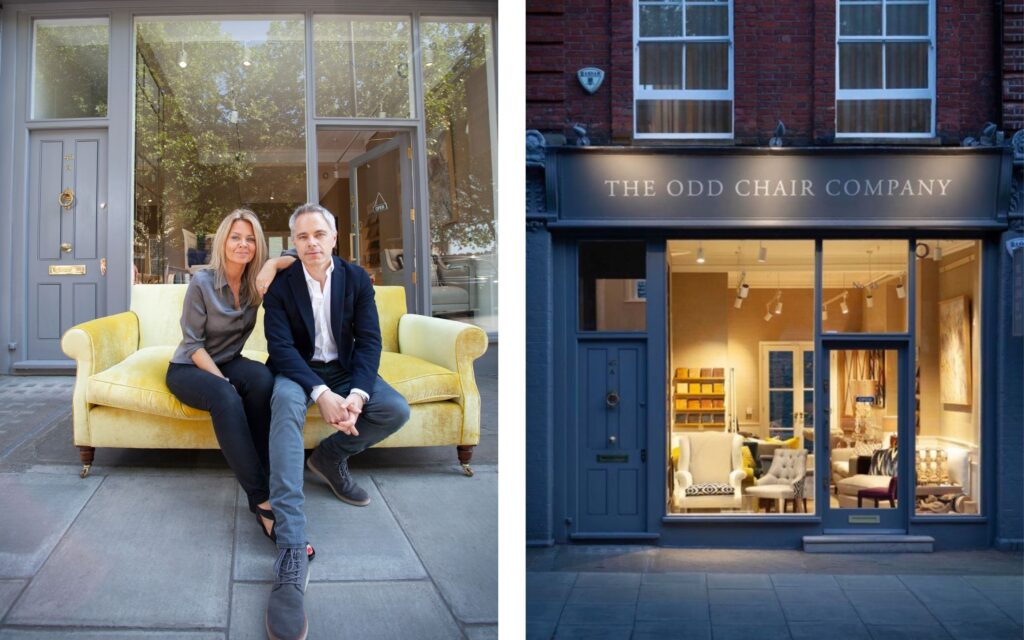
O&A: So James, Victoria, what did you dream about when you were a child?
J&V: When growing up I always wanted to live by the sea – so quite a simple dream, nothing too ambitious. In the UK, we are very lucky to have some of the most dramatic coastline in the world and having spent much of my childhood sailing, seeing the coast from the sea has always captivated me.
O&A: Your family-run business was established over 50 years ago. What makes your company still unique?
J&V: Our late parents, Sue and James Cook, were architectural antique and art dealers for many years before starting The Odd Chair Company. Handling fine antiques and understanding how things were made and I mean properly made – instilled in them a sense that they wanted to make furniture that lasted a lifetime. This philosophy has been handed down to Victoria and I. We’ve always tried to make our furniture well so they are real investment pieces. From our early days in the business it was important for us to maintain that tradition of making furniture both to a high standard and so that it is amazingly comfortable. In terms of uniqueness, I guess as one of the last remaining truly traditional upholstery workshops left in the world, we are committed to continuing to make our furniture in this way and ensuring the traditional skills of our craftsmen and women are passed down to the next generation.
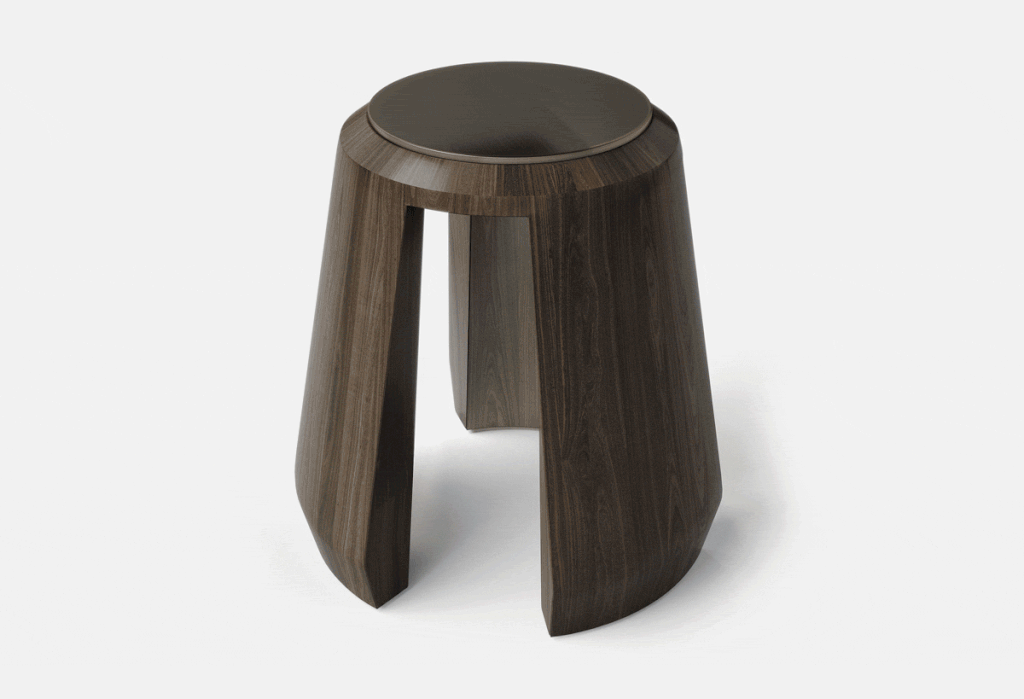
O&A: Did you know when you were a child that you would be engaged in producing handmade furniture?
J&V: We both grew up surrounded by art and antiques. Our mother studied at the London School of Art and our father was a self-taught antiques dealer who throughout his career bought and sold over 500,000 antiques, so we always appreciated the value of such things. Neither of us ever dreamed of entering the world of design and making furniture, we were always told to go off and do something else and then some back. Victoria qualified as a chef and I as a lawyer.
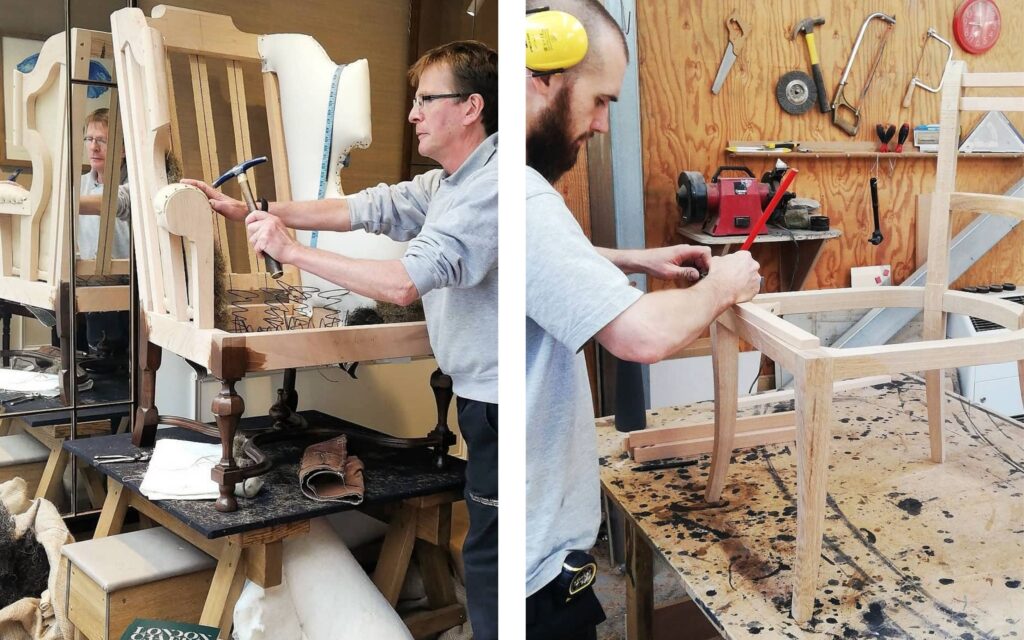
O&A: Are you involved in furniture production yourself? If you are, please, tell me about the very first object you made with your hands?
J&V: In the very early days of the company we spent time in both our workshops understanding cabinet making and upholstery. Our strengths however lay in designing and putting design together for clients. This is what we still do today. I would of course love to be able to be “on the tools” each day, but Victoria and I now run the company and so have a reliable team of craftsmen and women who we work closely with. There is no mistaking the immense amount of joy we feel when walking through the workshops to see our input into everything we make.
When I first started in 2002, I helped our senior cabinetmaker at the time to make 12 dining chairs, our Hendon Chair, with lots of cross stretchers. It was very satisfying to make them and I wish I could do more!
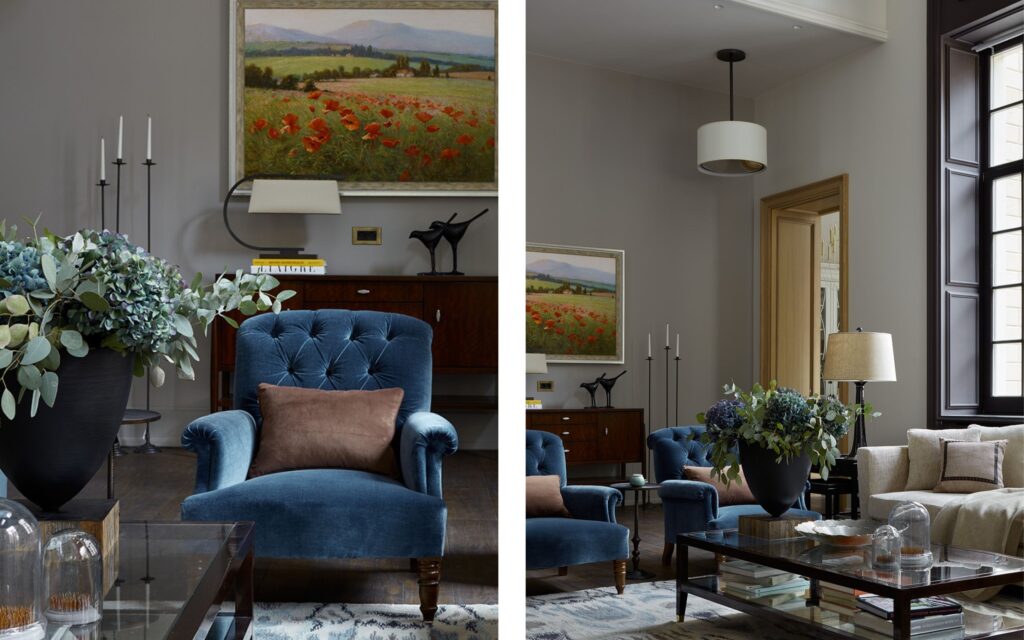
O&A: What inspires you in your work?
J&V: Lots of things inspire us: people we meet, places we visit, simply walking down the Pimlico Road and looking in the windows fills your head with new shapes or small details that you know could be made into something new. I spotted an Art Nouveax piano stool the other week. The stool itself was quite ordinary, but the shape of the leg was delightful and this has now formed the basis of a new stool we will make in a gloss painted finish.
O&A: What is most exciting in your work? Are there any materials you enjoy working with?
J&V: We would always say working with wood, we use the best quarter cut timbers available and given we are the last company hand French polishing on our scale, bringing the grain through and not hiding it is something we are particularly proud of. In terms of excitement, we love bringing things from an initial design through to a finished product, we have been very successful with a handful of designs that have become designer’s staple go to piece and this brings us much satisfaction knowing we have created something both beautiful and useful.
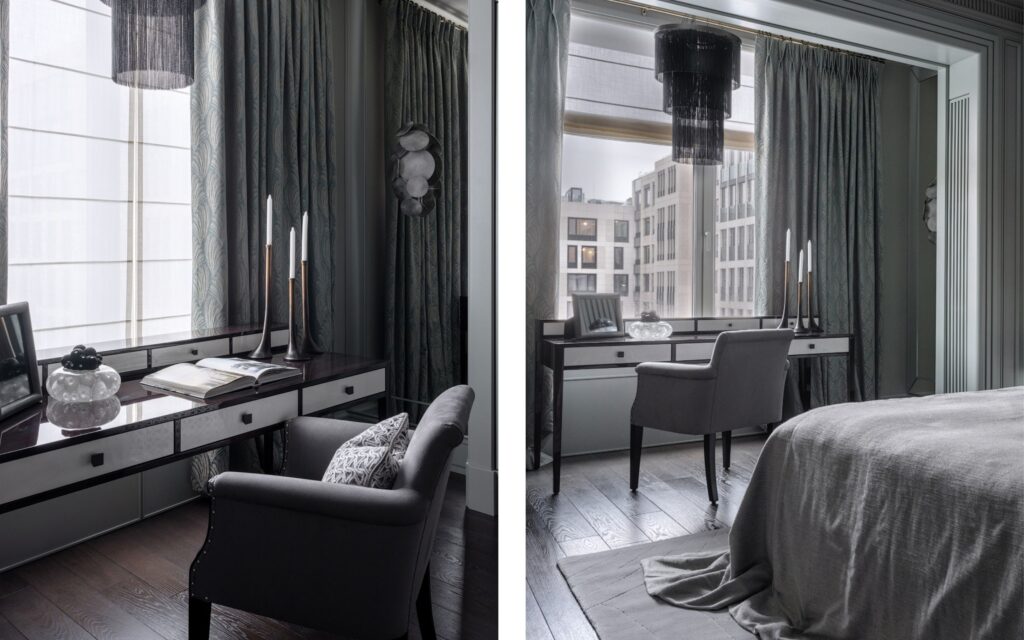
O&A: What is the most challenging part of your working process?
J&V: I would say, running the operation is a challenge. We have grown over recent years and are currently moving into our new flagship showroom in Belgravia. It is nearly three times larger than our last showroom and we are in the process of planning to build our new workshops and expanding our capacity as well as developing the farm where we have been for nearly 20 years. Growing the collections and working with some of the most inspiring designers is also a challenge as it takes a lot of work to ensure you keep up! Adding to this the organization of production, site visits and designing, we are kept rater busy, not to mention additions to the young families we both have.
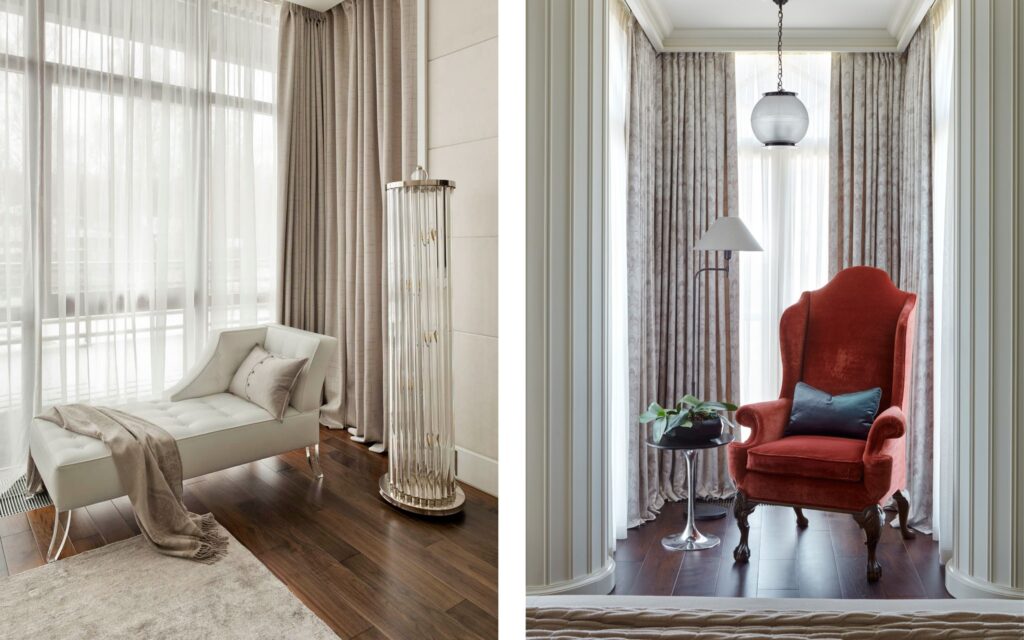
O&A: Which client is the most interesting to work with?
J&V: Any client that understands and invests in what you are doing is the most interesting to work with. The collaborative approach is what drives the relationship and we are very lucky to have many clients like that now and over the years.
O&A: How did you meet Anna Agapova and Oleg Klodt? Tell us about your collaboration with O&A London?
J&V: We met Anna and Oleg many years ago in Moscow and we have worked for them on their many amazing projects. More recently we have looked at their designs for O&A London and this is something we hope will develop in the future. One thing I would say about Anna and Oleg is their exacting approach to design. It is relentless, in a good way. Only by pushing the boundaries of the way we work we find new designs and techniques. This is something I view fondly when working with them. I also like the fact Oleg likes the Beatles!
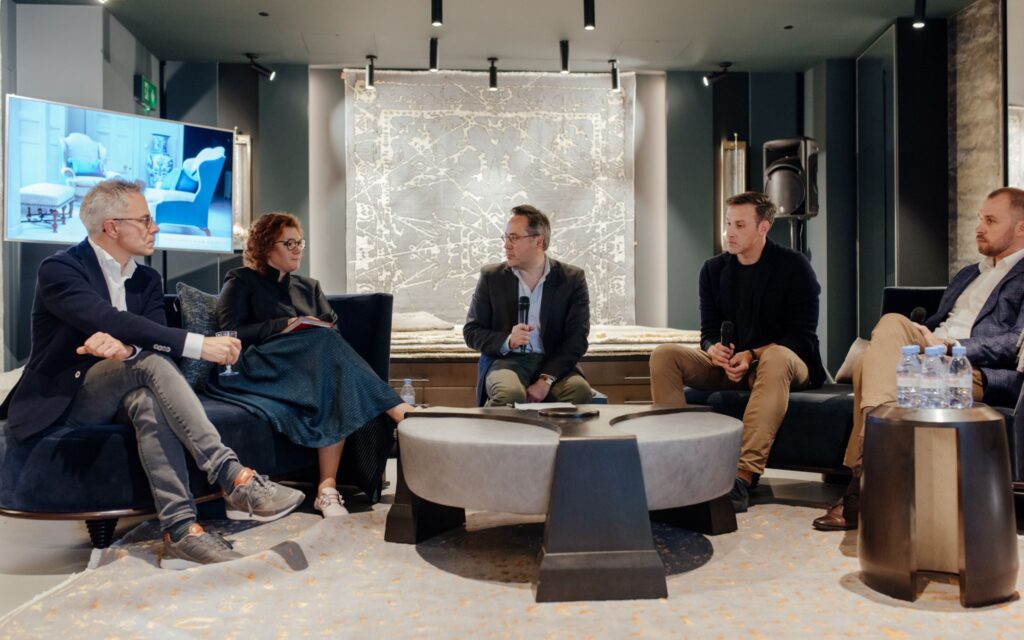
O&A: How do you think the process of designing and producing furniture will change in the future (in 100 years)? What will furniture be like?
J&V: I very much hope it does not change much for us. Whilst modern materials come and go, the traditional making process injects our upholstery with a sense of rich heritage. Coupled with our uncompromising approach to comfort, I doubt very much whether things will change. Fabrics and their properties will continue to change and develop but the simple joy of sitting in a well-made chair or sofa made traditionally by artisans will not. So much of what is made today can so easily be thrown away and discarded because of poor manufacturing or because it no longer fits our style. We have always ventured along the classic timeless route, and in this way our furniture lasts forever.
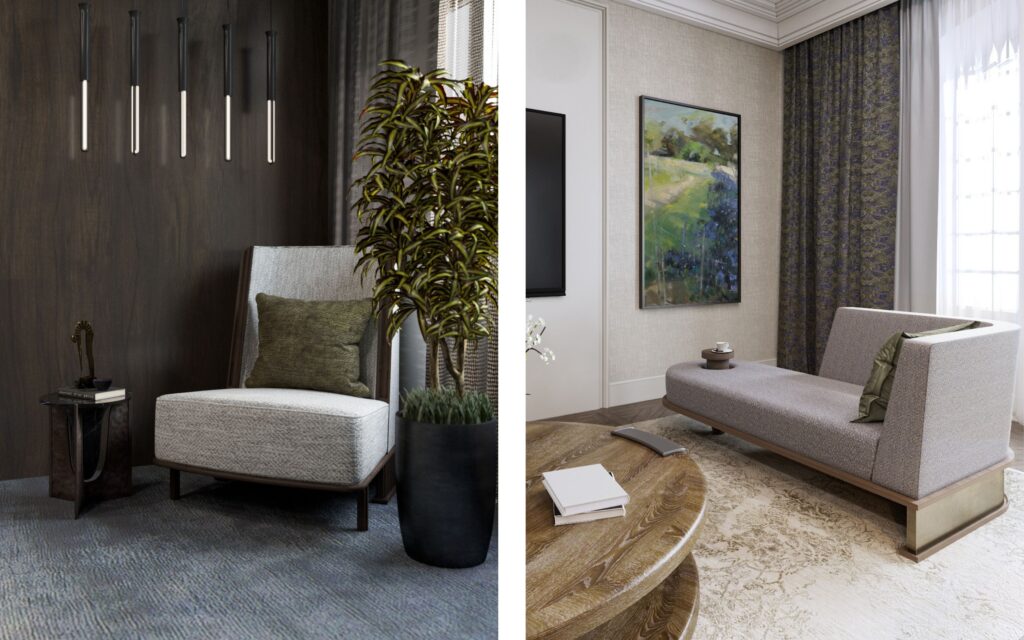
O&A: What are you dreaming about now?
J&V: Mainly sleep! We are in the process of renovating one of the oldest buildings in Pimlico for our new showroom and so it has been four months of endless work. Apart from this, we would like the business to continue to grow and to build on our great client relationships.
October issue of AD Russia presents the digest of home fireplaces and highlights the apartment of the architect Oleg Klodt.
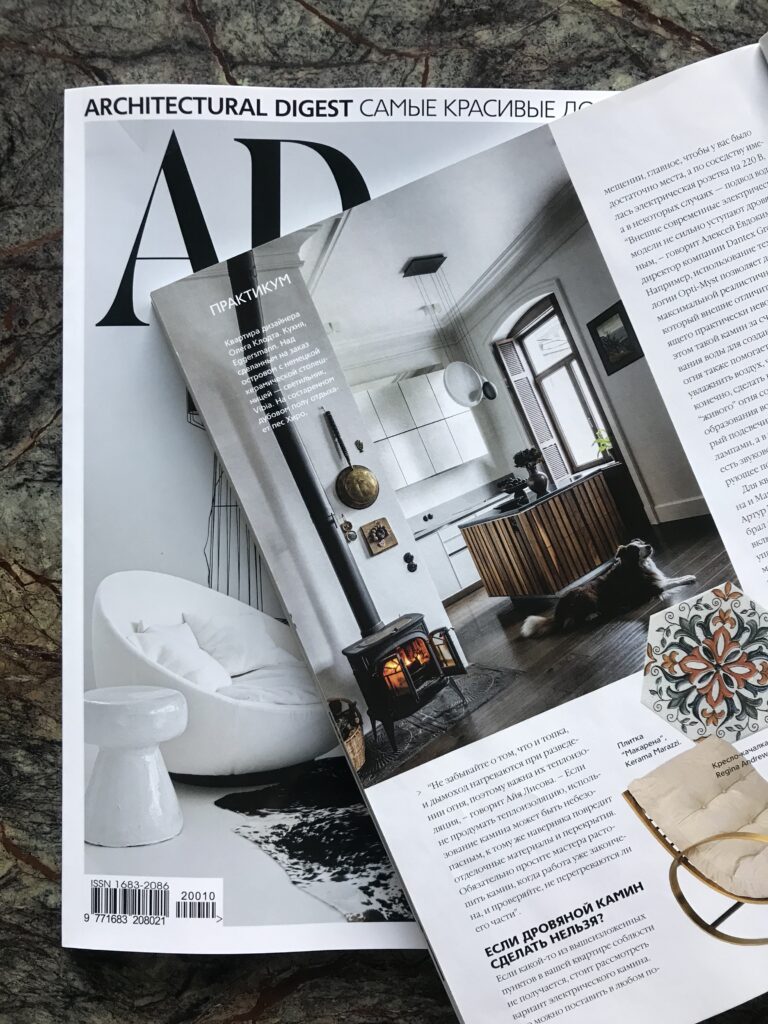
In his own apartment, the architect Oleg Klodt installed a stove.
“In the process of redecoration, we went on holiday to the Italian Alps with the children. The snowfalls were so bad it was impossible to ski. We went for a walk and found ourselves in a restaurant where they had a stove like this and immediately agreed that this was exactly what we needed”.
To find more about the project, please check our portfolio.
⠀
O&A London celebrates its 20th anniversary this year! With a growing number of international projects, and to create distinctive collections of furniture, lighting, textiles, wallpaper and rugs under its unique brand, the company develops collaborative projects with amazing and talented people. We are fortunate to work with leaders in their field: people who do not see boundaries and make the impossible possible. We proudly name these creators not just as partners but as co-designers and friends.
We are now delighted to announce the anniversary project «20 // 20». The project will consist of a series of exclusive interviews. Today we are happy to share with you an interview with Mikhael, a client and a very good friend of our studio, and the owner of a private house in Amsterdam.
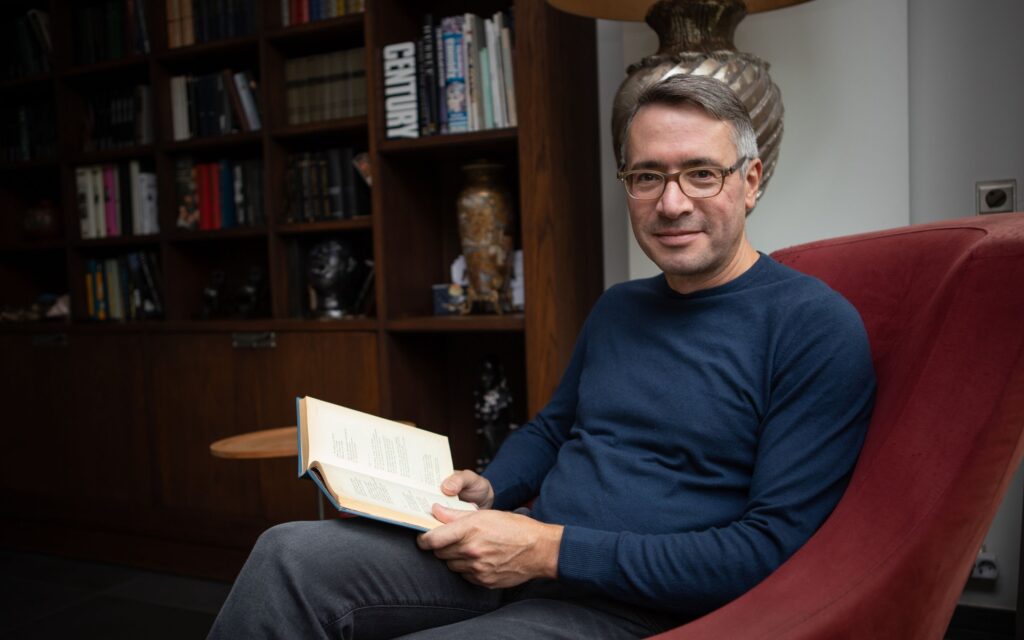
O&A: Mikhael, you live in a fascinating house. Could you please, tell me about its story?
M: Yes, this house is truly unique! We found it quite by accident. We were looking for a home to live in, and when we found it on the market it turned out that this was a very interesting house that belonged to the Dutch artist Gerard Scheperkötter. He built it as his creative studio in the 60s and lived here until the end of his life. There was a large workshop here. When we first entered it felt like he just left the house yesterday. His works were everywhere; an easel was standing in the studio, his palette with paints lay on the table. Gerard died in 2006 and his wife, Diana Gordon, a former ballerina, lived here for several years after his death. They had no children and after the death of his wife the house was bequeathed to a charitable foundation along with all his paintings. We bought this house from the foundation.
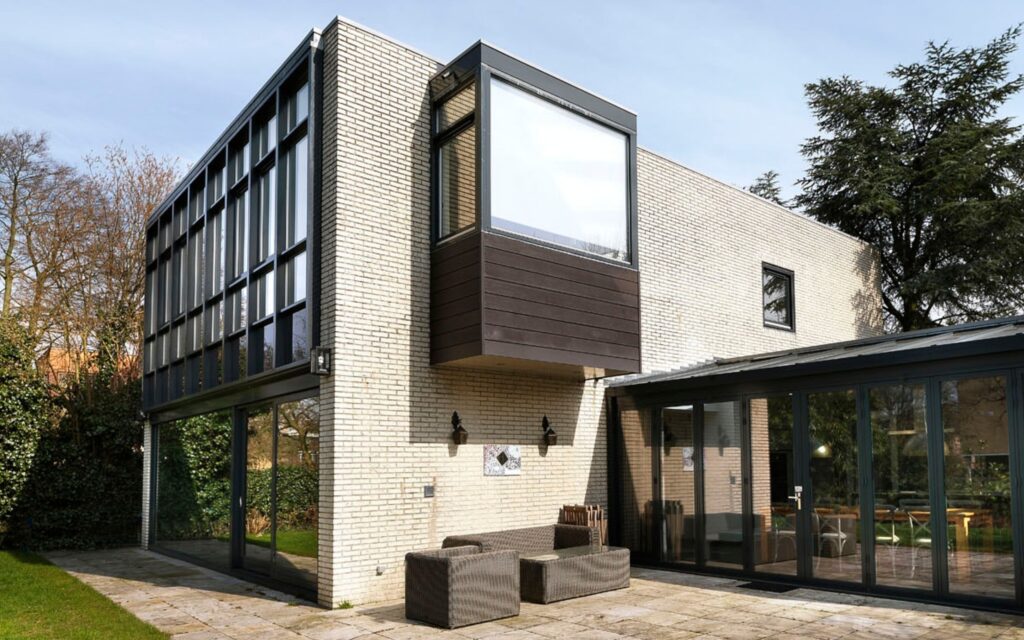
O&A: Did you realize from the very first moment that it was your home? Or did you have to rebuild it?
M: We loved the house and garden at the very first sight. But as it was an artist’s studio, we had to change a lot for comfortable family living. Oleg Klodt and Anna Agapova created not just the interior design – they rebuilt the house! We wanted to preserve the essential character of the house, with its unique atmosphere and soul. At the same time we had to completely change the facade of the house and the functionality of many rooms. In fact only the load-bearing walls were untouched.
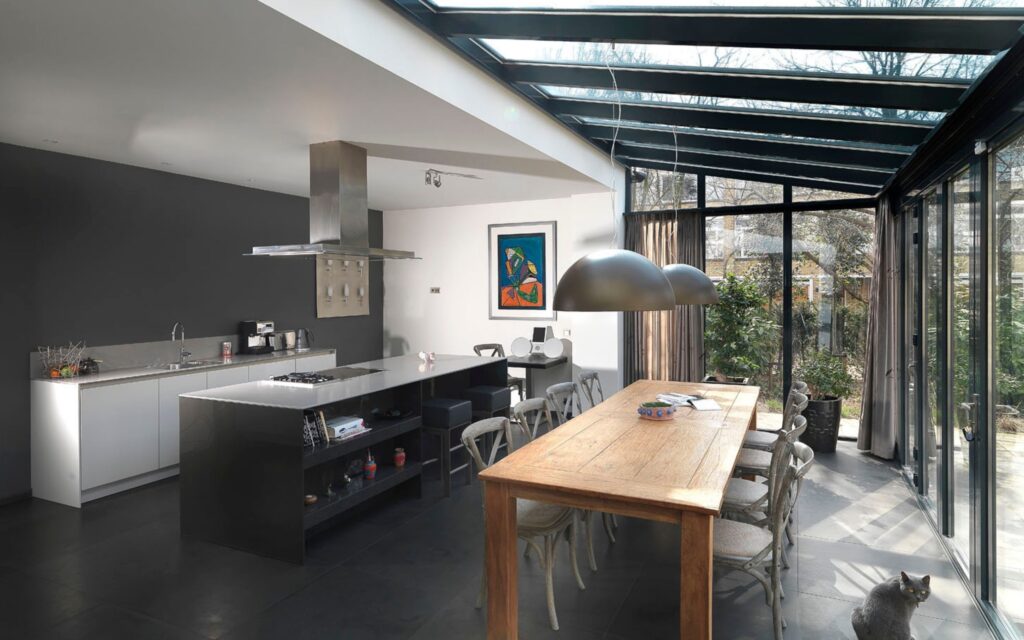
For example there was an outdoor terrace upstairs that was turned into a bedroom. Oleg and Anna were engaged not only in architecture but also in interior design. In my opinion they managed to preserve the originality of the house making it very comfortable for our lifestyle. As the new owners of the house we got a unique opportunity to repurchase the paintings we wanted prior to the auction. Some of the Scheperkötters’ paintings have remained with us and adorn the walls of our home.
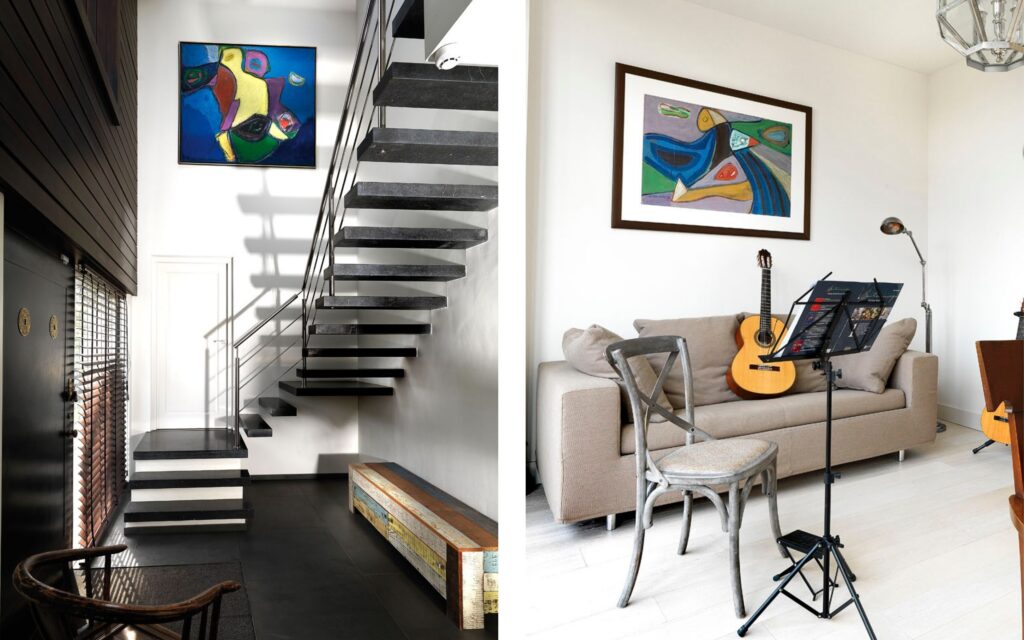
O&A: How did you make your choice?
M: It’s hard to say – we were guided by our own taste. Gerard Scheperkötter was a fascinating artist, with his bright signature style. He belonged to the CoBrA art group (a short-lived but highly influential artist collective formed in Paris, named for the three northern European cities that its founders originated from – Copenhagen, Brussels and Amsterdam).
The artists of this group became known for their vigorously spontaneous, rebellious style of painting that was heavily inspired by the art of children and the mentally ill. Oleg and Anna helped me a lot to choose the pictures. The work in the house was already finished, and they were back in Moscow, so I had to send them photos of the paintings to get their advice.

O&A: How long have you known Anna and Oleg? How did your cooperation start?
M: I met Oleg and Anna through my parents, for whom they created several projects in Moscow and Barcelona. It was 20 years ago and we immediately became friends; we were matched in character, taste and hobbies. I really like their approach to interiors and to architecture in general.
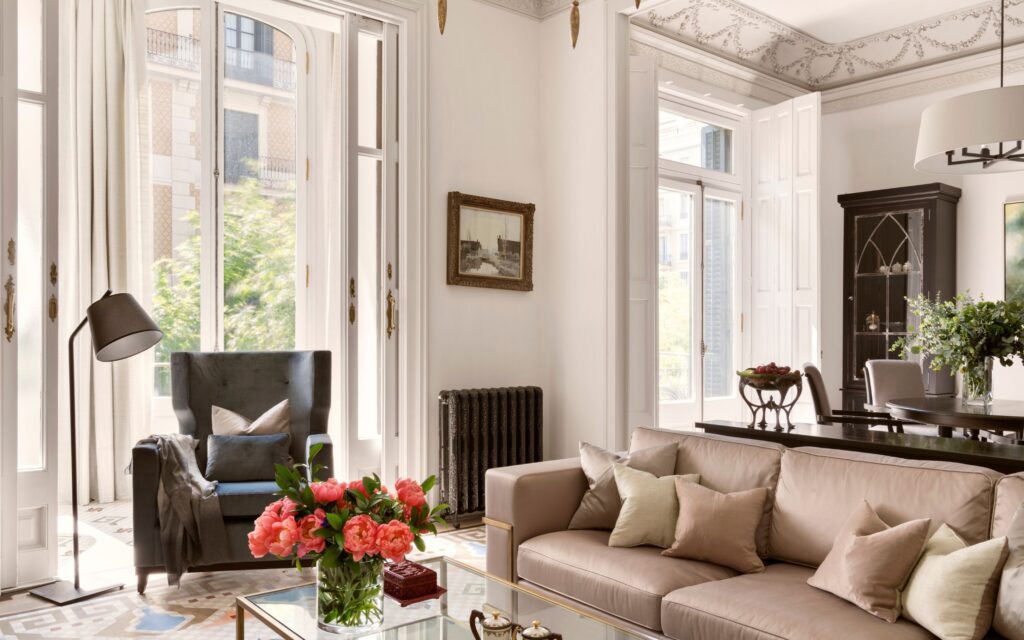
O&A: Did you participate in the work?
M: Yes we worked very closely during all stages of the project. It was really exciting for us, and we learned a lot from Anna and Oleg. At first we didn’t understand some nuances. We asked why they were doing this or that, and then we realized that they did exactly what was needed! Many of our wishes were fulfilled: for example, a glazed veranda was turned into a kitchen.
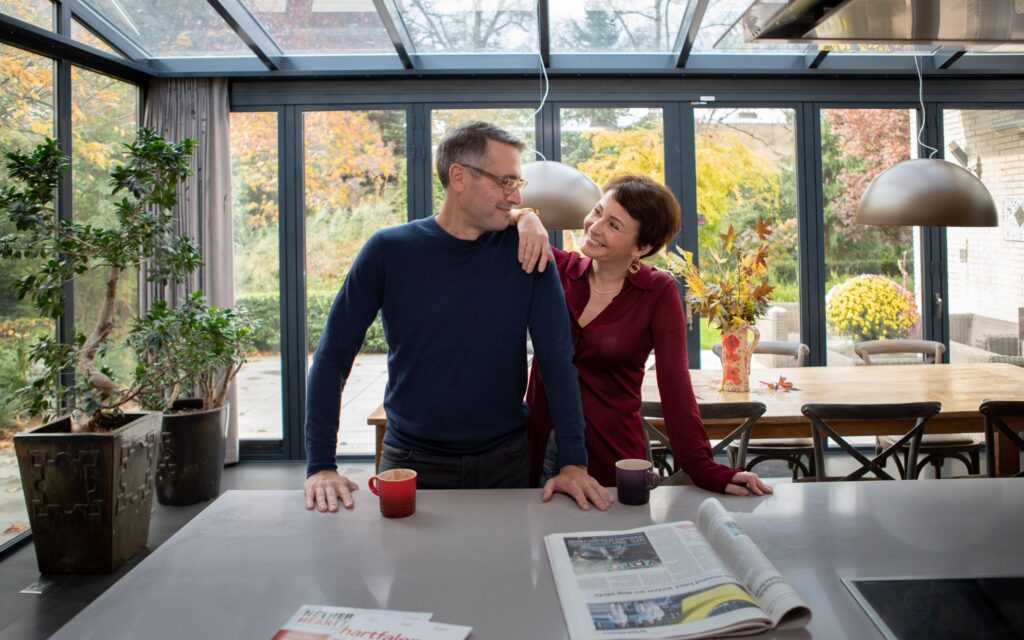
O&A: What is more crucial for you in your home – beauty or functionality?
M: I believe that you can always find a solution where both could exist. Moreover I think that functionality is somehow related to beauty. But of course I do not understand homes that where the primary objective is to be a public exhibition. Beauty must be practical. A house is first of all a place to live in, not to be like a photo in a magazine. One way or another if everything is organized correctly it can be both beautiful and functional.
O&A: People say that a home is like shoes – you need to live in them for a while to feel if they suit you or not. How was it with you? Did you feel that it was your home straight away?
M: Certainly not right away… At first comparisons with our old house where our children were born and raised came to light. But in principle this home quickly became ours. Both the house and the garden were built as a place specifically for our family- we did not move into a ready-made room. We live in a space that we wanted to create for ourselves and for our family. In this case Oleg and Anna managed to determine very subtly what we wanted as a home.
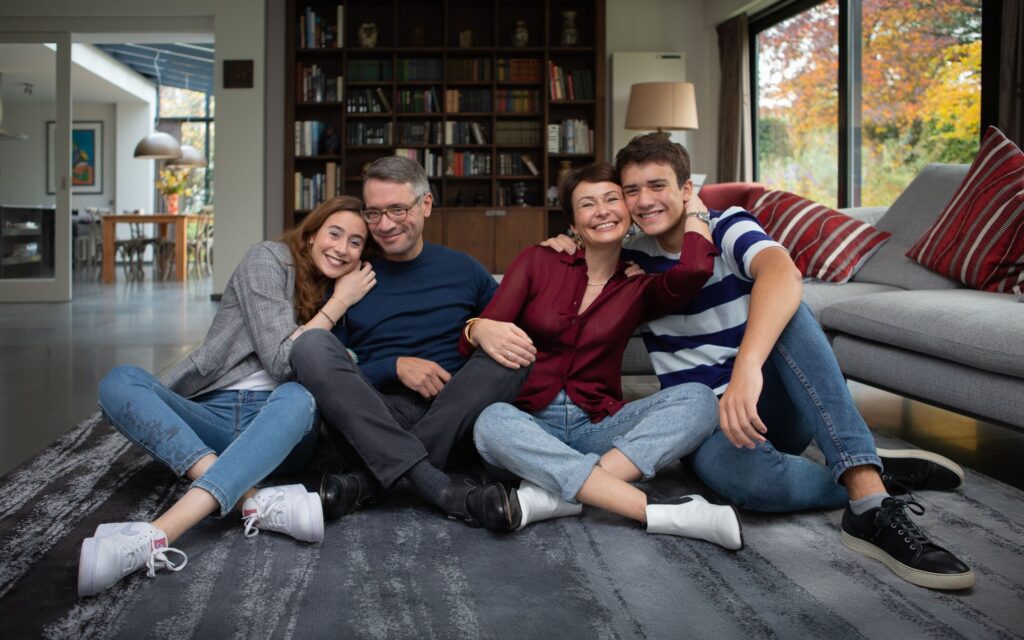
O&A: You have lived in this house for quite a long time. If you bought it today, would you change anything?
M: Not much. Maybe I would just change something from the decor. But the architecture of the house is created so magnificently that I would not alter anything. The interior itself has slightly transformed over time together with us: new paintings and small decor details have appeared for example. Anna recently changed our rug in living room. The new rug is from O&A London collection. The design is inspired by wave trails on wet sand.
O&A: You were born and grew up in Russia and have been living in Europe for many years already. Is there a difference in how people understand art here in Europe and in Russia?
M: It’s a difficult question. Art is probably one of the few spheres that unite countries. Both the Netherlands and Russia have very strong contributions in contemporary art. The Netherlands hosts magnificent exhibitions including Russian contemporary art. I don’t think there is any difference in the perception of art. If people are interested in art, they are interested in it everywhere and always, regardless of geography. Art historically has no boundaries.

O&A: Recently, ecology has become a leading trend in various areas, including art and design. What do you think about this?
M: I can see that the ecological problem is really serious today. And in the Netherlands people are very responsible. It seems to me that this particular country is one of the leaders in this matter, and this is very different to Russia. I believe that it is very reasonable to build energy efficient houses constructed from environmentally sustainable materials.
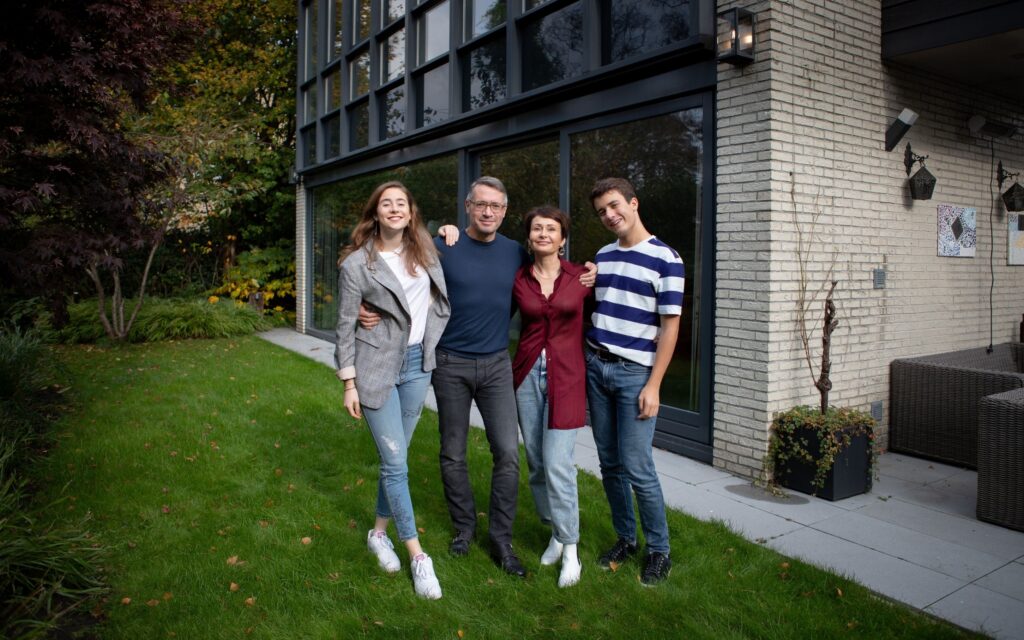
O&A: Has the coronavirus pandemic affected your family? How did you feel spending a lot of time at home?
M: Certainly it affected our family as well as the whole world. In the Netherlands there was an ‘Intelligent LockDown’ approach. We were not forced to stay at home all the time but I worked and still work from home. Of course it’s nice to have a home like this! It’s very comfortable and pleasant to be here; we can live and work inside the house without any effort. This is really important.
***
Gerard Scheperkötter (1914–2006) was a Dutch expressionist painter. Scheperkötter’s works were exhibited in the museum of Singer in Laren in 1984, and in 2013 the museum Jan van der Togt paid tribute to the artist. His approach to the medium was spontaneous and free and – after a figurative period in the 1960s and ’70s – led to powerful compositions. Schäperkötter’s artworks are characterized by the alternation of lyrical abstraction and penetrating use of colour. Common themes are beaches, walls and gardens. He created a new reality from his memory and imagination. Schäperkötter was inspired by the expressionism of the CoBrA group and the École de Paris. The CoBrA art group was a short-lived but highly influential artist collective formed in Paris in 1948, named for the three northern European cities that its founders originated from – Copenhagen, Brussels and Amsterdam.
Global warming, rising sea levels, floods, tornadoes and cyclones – these and other natural disasters are directly related to pollution. Now as never before our planet needs our love and care. People have finally started thinking about protecting the environment. They try to be closer to nature, understanding personal responsibility and moving to conscious consumerism. The leaders of this eco-friendly way of living are Northern European countries such as Finland, Denmark and Sweden, as well as Canada, Japan and South Korea. Thanks to them our views are changing along with our spiritual and material values. Following the speech by the 16-year-old Greta Thunberg at the UN summit in 2019 it became apparent the world will never be the same. The recent London Design Festival revealed biophilic design as the final trend of this year. We have never seen such a strong tendency to unite design and nature. Oleg Klodt and Anna Agapova, founders of O&A London, told why it is not enough to just use established designs and what each of us can do.
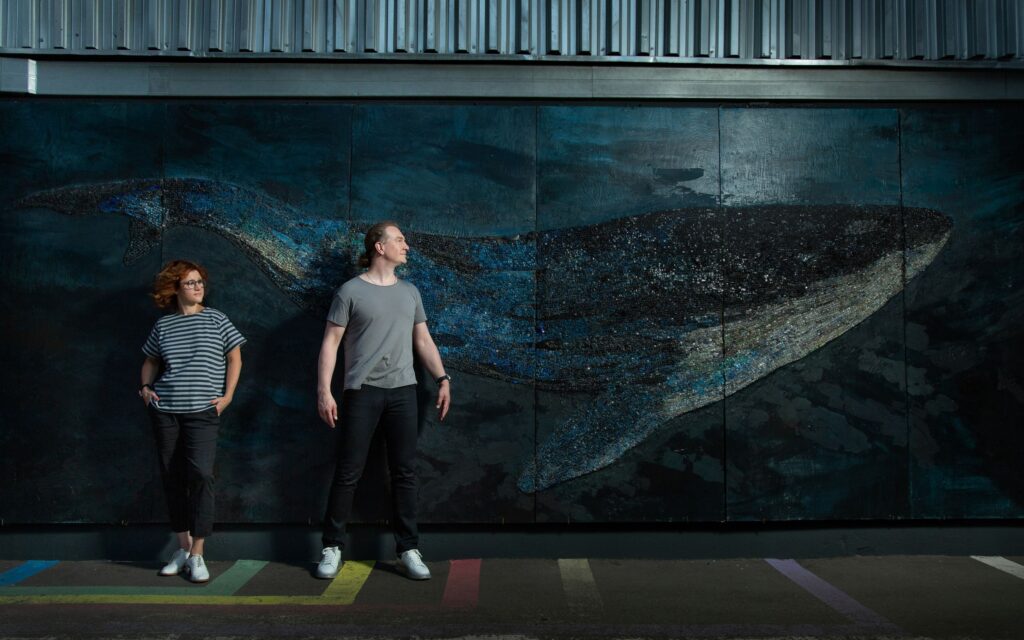
Eco–friendly
Oleg Klodt: “Everyone understands the concept of the «eco-friendly home» differently. I find two standards of eco building most practical. The first one is LEED (Leadership in Energy and Environmental Design), a programme of building certification that is recognised all over the world and is used to confirm the use of the most eco-friendly methods of engineering and construction. It was started in 1998 by the US green buildings council. The second one is BREEAM (Building Research Establishment Environmental Assessment Method) which is a voluntary method of evaluating green buildings. It was designed in 1990 by a UK organisation BRE Global to evaluate eco efficiency of buildings.

What these two standards have in common is the zero-emission approach which is becoming the new norm. The principle is simple; any residential compound needs to produce as much energy and resources as the people living there need, and all the waste is used to produce more heat, water and electricity. Ideally each compound needs to reach a zero balance between consumption and waste volume.”
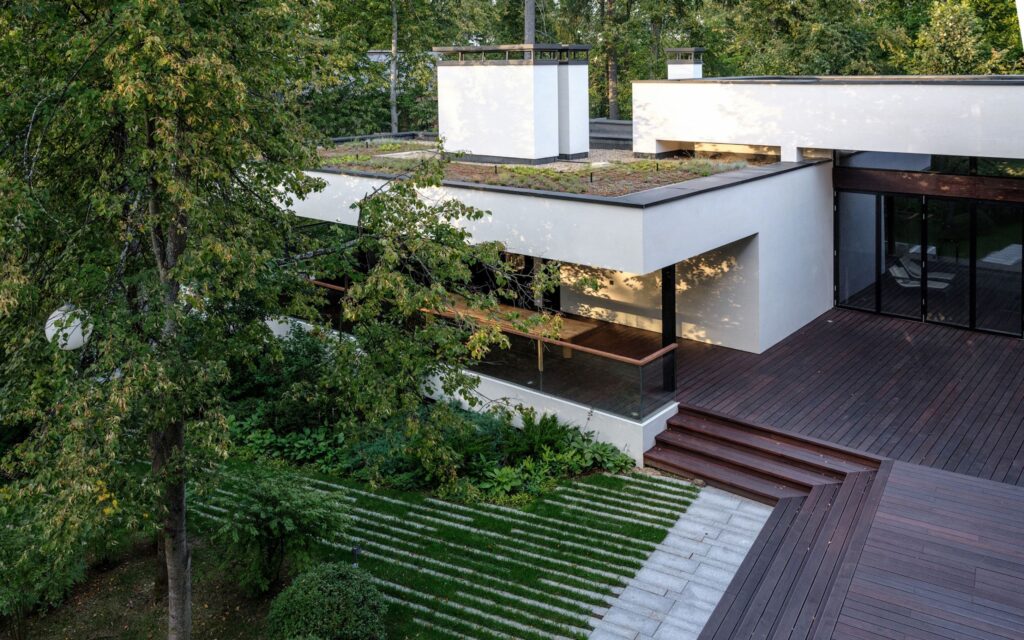
Anna Agapova: “I travel a lot and have been noticing more and more houses with “living” roofs, rain water collection systems, contactless water heaters, solar panels and sun roofs. Of course eco design is not just “green” building solutions but also paying attention to the most ordinary items that surround us in everyday life. Natural materials, natural shapes, and images of nature put eco design into a separate aesthetics category”.
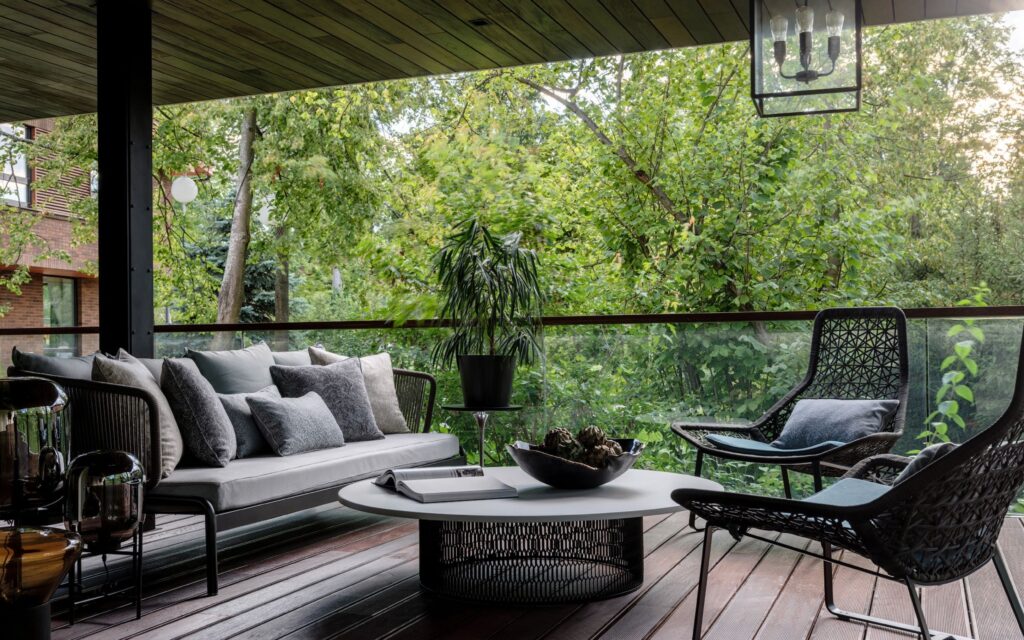
Solutions of the future
“New solutions are becoming a part of our lives” – noted Oleg Klodt. Scientists are not ignoring the problem of pollution and are working on creating new clean materials without losing the core design. For example, Form Us With Love, a Swedish company that was included in the list of most innovative companies in the world in 2020 by Fast Company, created acoustic panels using 100% clean materials such as wood fibres derived from pine and fir trees, citrus zest, potato starch, plant vax and wheat. The panels absorb sound perfectly, are fire retardant, water repellent, durable and fully biodegradable”.
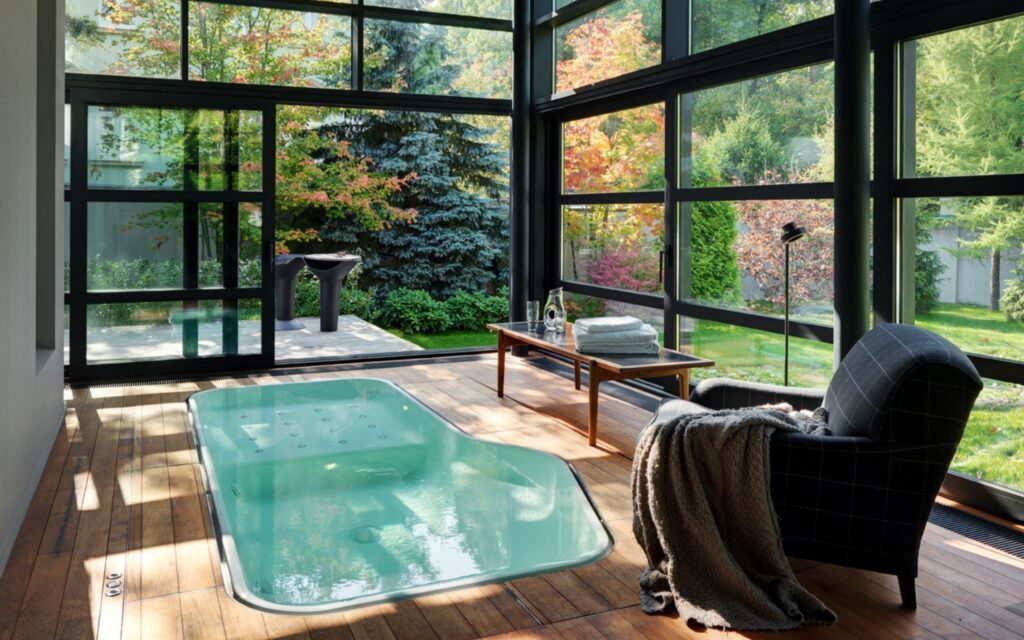
“I follow Neri Oxman and really admire her”, says Anna Agapova. “Oxman is a great example of a woman who bravely follows her own path, is often ahead of her time and is not afraid to cause a stir with her projects.”
Architect, designer, Professor at Sony Corporation and at the MIT media lab, Oxman featured in the ICON’s list of “20 most influential architects determining our future” in 2009. Oxman offers new solutions for creating architectural shapes. Her works combine computer engineering, synthetic biology and digital solutions. She thinks that the architecture of the future will be unrecognisable and building facades as we know them will cease to exist. It is very difficult to imagine right now for most people.
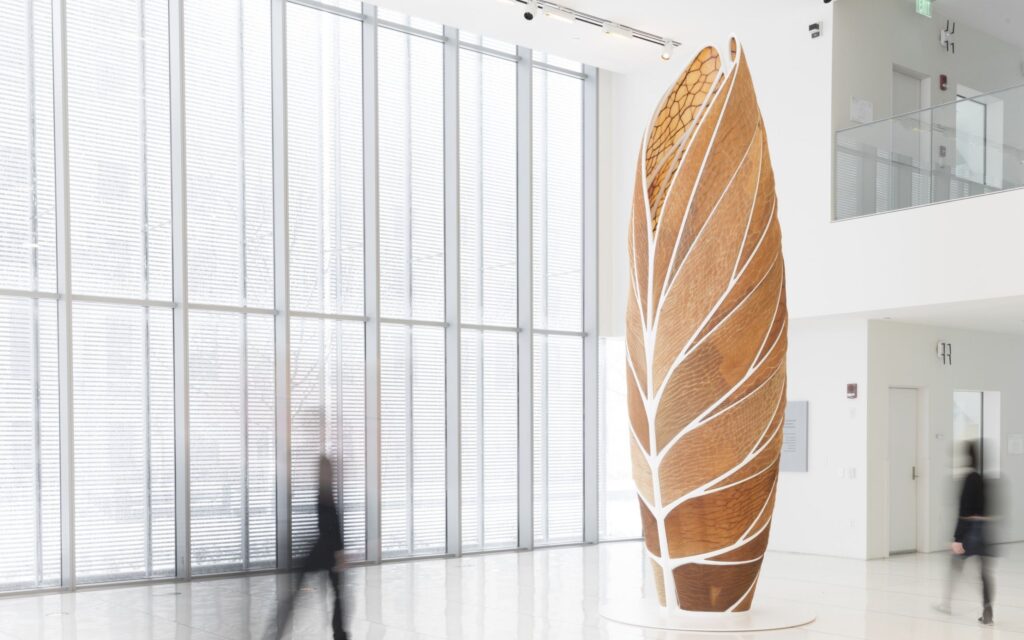
“Neri would like to move from the era of machines to the symbiosis of our bodies, microorganisms, food and even buildings. She calls this ‘material ecology’. No doubt this “science fiction” scenario will become our reality in a not-so-distant future” Anna continues. “And for now, the most organic and natural choice for people is eco design. It is not just interior design style, it’s complex projects within which ‘protecting the environment’ is not just words but the expression of our love for nature, for our Earth and the future generations”.
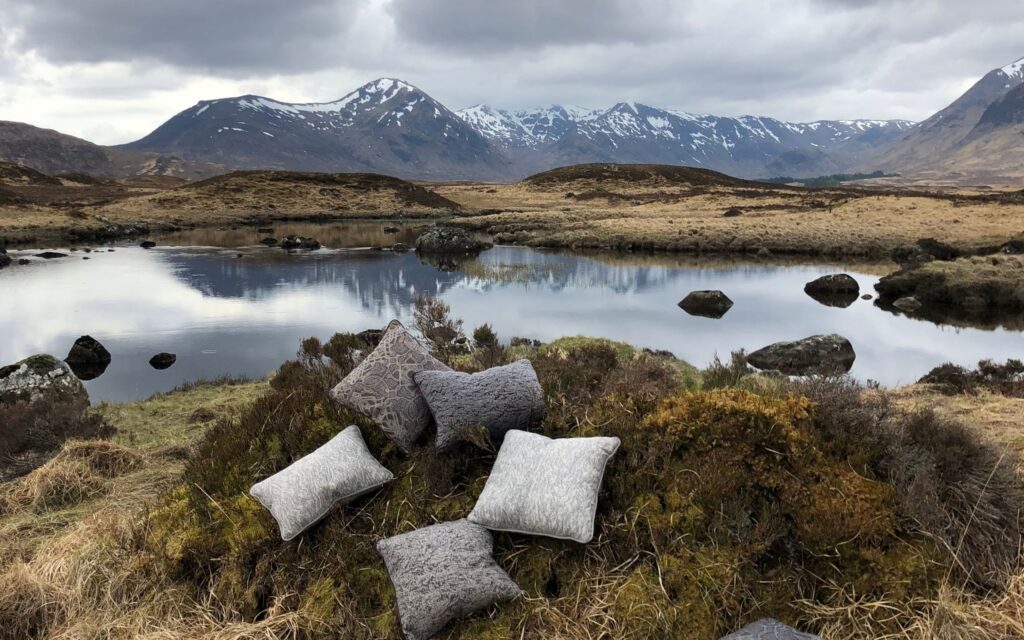
Conscious consumerism
“An eco interior calls for the use of natural materials, natural solid wood furniture, worktops made of marble or other natural stone”, explains Oleg Klodt. “There should be no embellishments such as carvings. The lines must be straight and laconic. At the same time you need to consider that furniture used in eco design comes at quite a high price due to the cost of materials and manufacturing techniques (as it is nearly always handmade). The principle of rational economy can be applied here: an expensive piece is acquired to be used for years and possibly centuries”.
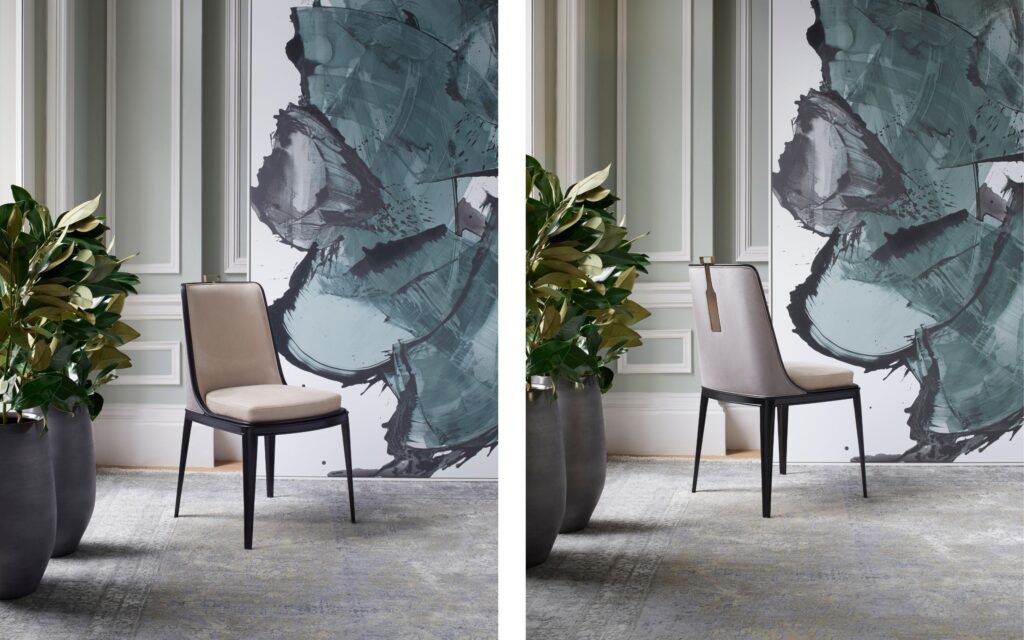
“There are two approaches – adds Anna Agapova. –One is to make furniture from natural materials such as bamboo and corkwood. It will be light and inexpensive but not very durable. We at O&A have gone a different way. We create furniture pieces from highest quality and most expensive materials such as natural wood and metal. These pieces are not just tables and chairs but works of art. The main goal is to create furniture that is timeless, just as mahogany workers did centuries ago. By acquiring such items our customers are guided by the philosophy of ‘conscious consumerism’ and investing in the protection of our planet. We artisans start repaying our debts. Beauty can at least try to save the world and change your attitude towards it”.
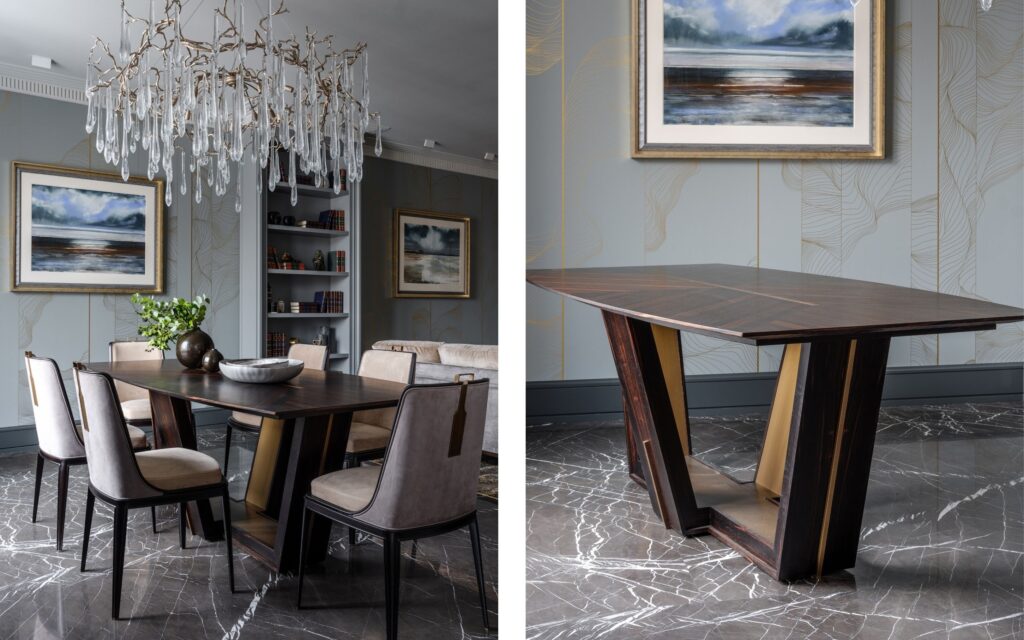
Save the Оcean
“Nature has always been the main source of inspiration for artists, architects and designers” – noted Anna Agapova. Eco design for me is the interior where the main artist is not a human being but nature itself. While in the process of creating the Caledonia collection we draw inspiration from the Scottish landscape and Celtic history. This inspiration helped create five different rug designs as well as textiles and handmade wall coverings”.
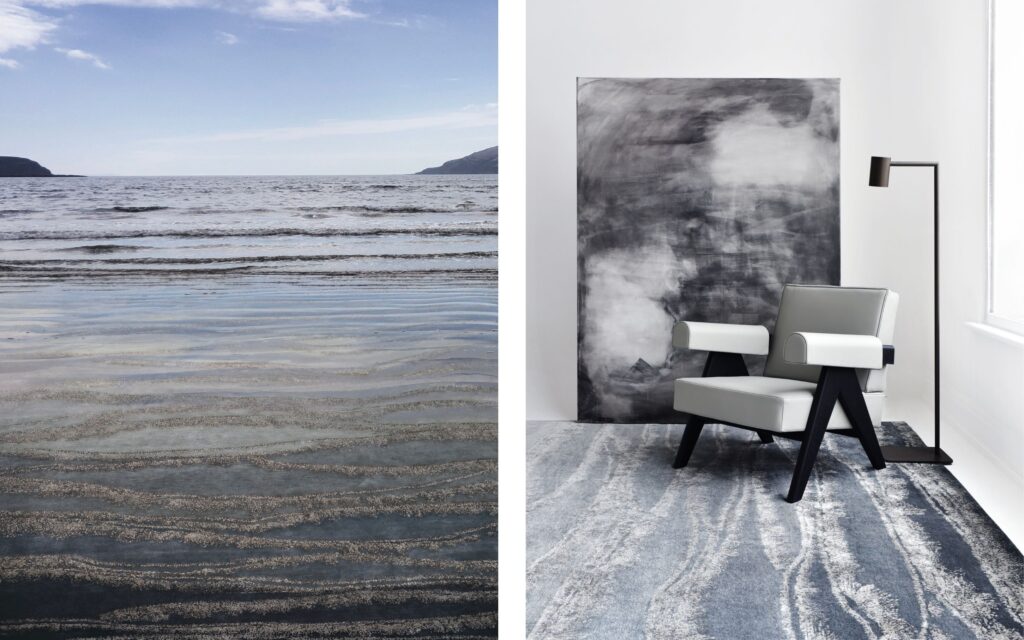
“We used only natural materials in our Caledonia collection” – says Anna Agapova. Natural materials and colours, new images and natural origins make the Caledonia collection the perfect addition to any eco home. Also, our passion for the ocean did not just inspire us to create the “Ocean” rug. This year we announced our eco initiative “Save the Ocean” where the goal is to help clean the ocean of plastic and save its inhabitants. 10% of all sales income from the “Ocean” rug will go to the 4ocean organisation that is cleaning the world’s oceans.”
Biophilic design: O&A London collections
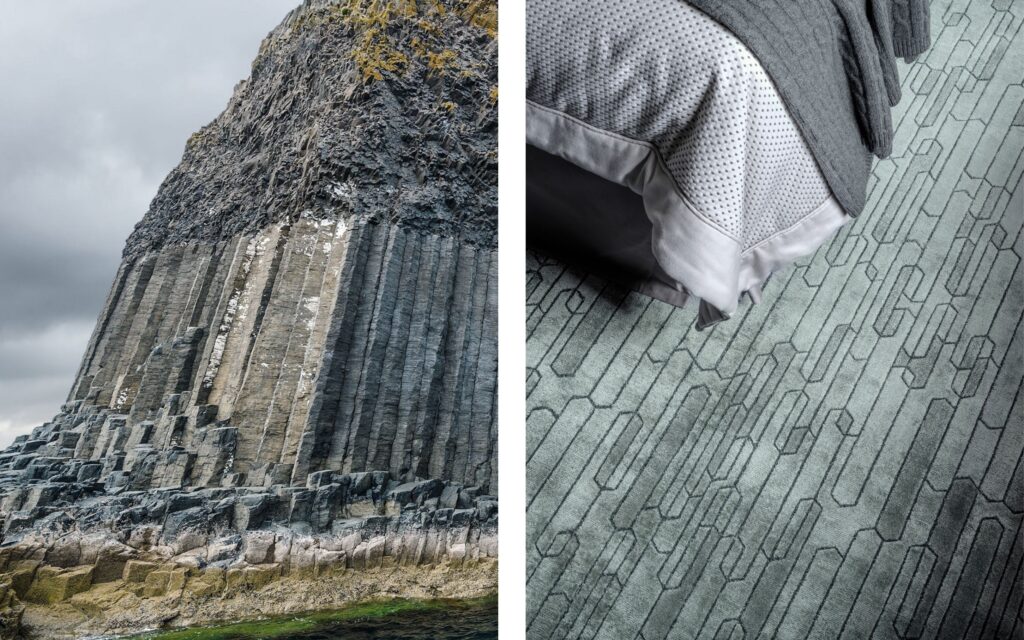
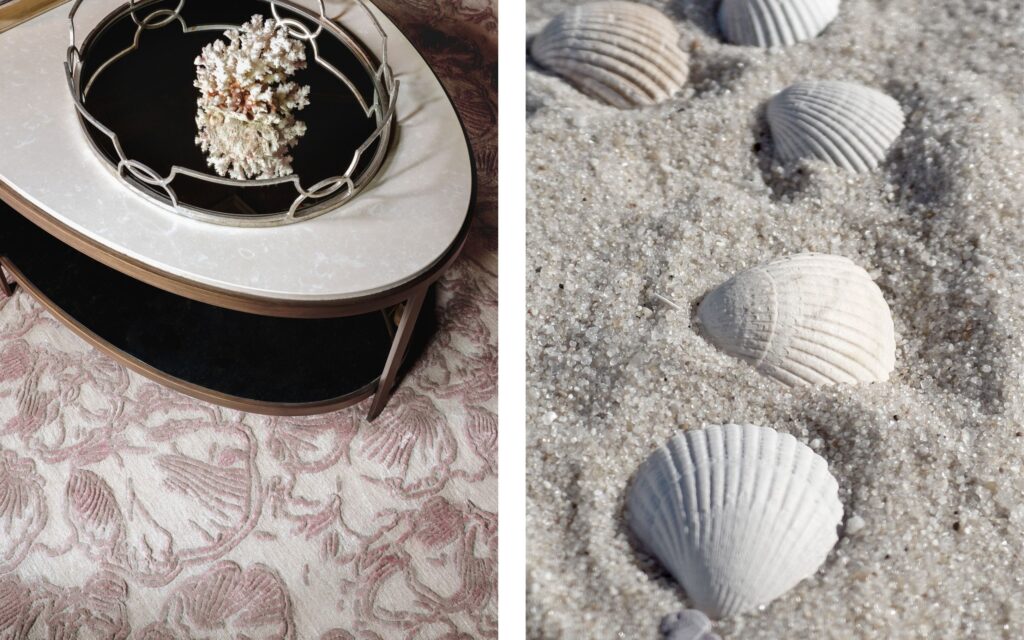
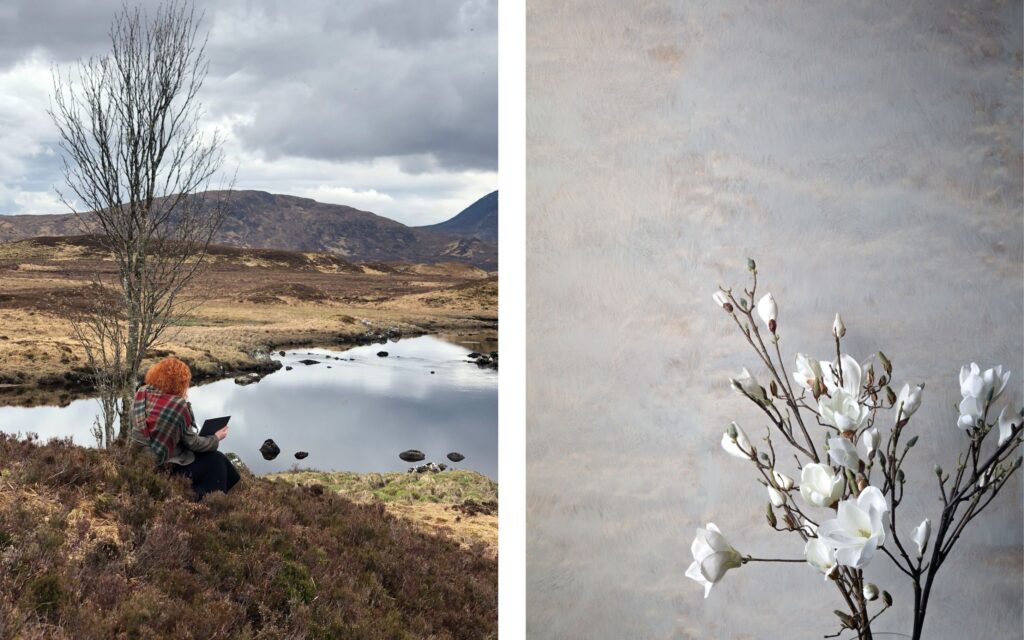

O&A London celebrates its 20th anniversary this year! With a growing number of international projects, and in order to create distinctive collections of furniture, lighting, textiles, wallpaper and rugs under its own unique brand, the company develops collaborative projects with amazing and talented people. We are fortunate to work with leaders in their field: people who do not see boundaries and make the impossible possible. We proudly name these creators, not just as partners but as co-designers and friends.
We are now delighted to announce the anniversary project «20 // 20». The project will consist of a series of exclusive interviews.
Today we are happy to share with you an interview with Mikhail Loskutov – one of the best interior photographers in Russia. Mikhail expertly uncovers the uniqueness of our interiors in his works.
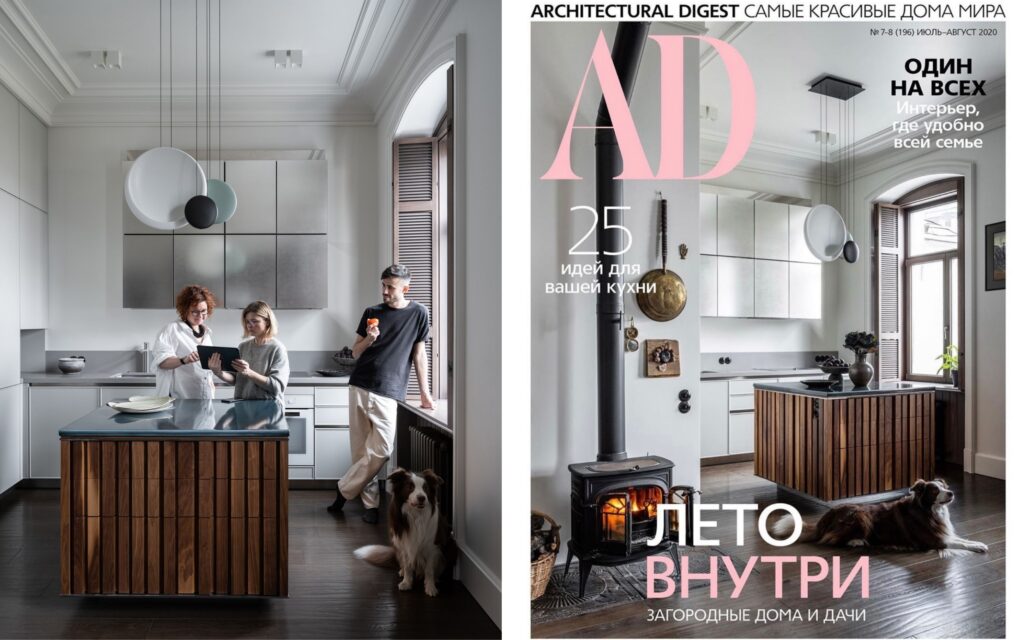
O&A: Mikhail, what were you dreaming of as a child?
ML: As a child I was dreaming of the same thing all children do – playing with other kids and staying out for as long as possible! At that time I hadn’t thought about my professional future.
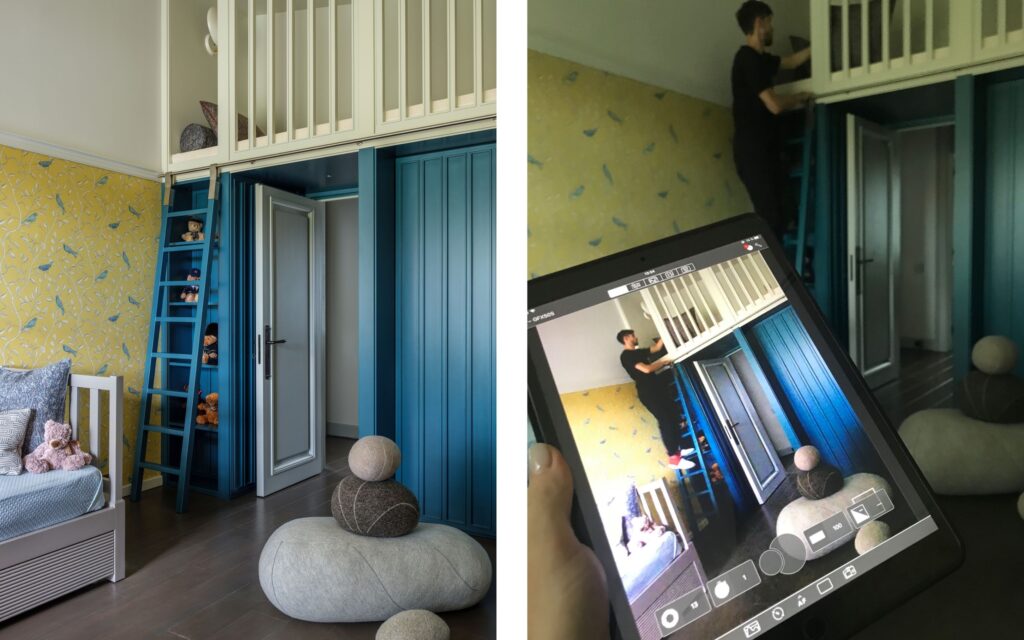
O&A: How did you become a photographer?
ML: Life brought me to photography. My father’s camera came to me and because of that I started shooting when I started my university studies. At first these comprised portrait and reportage photos of friends and acquaintances. Then, with experience, my first commercial shoots comissioned.
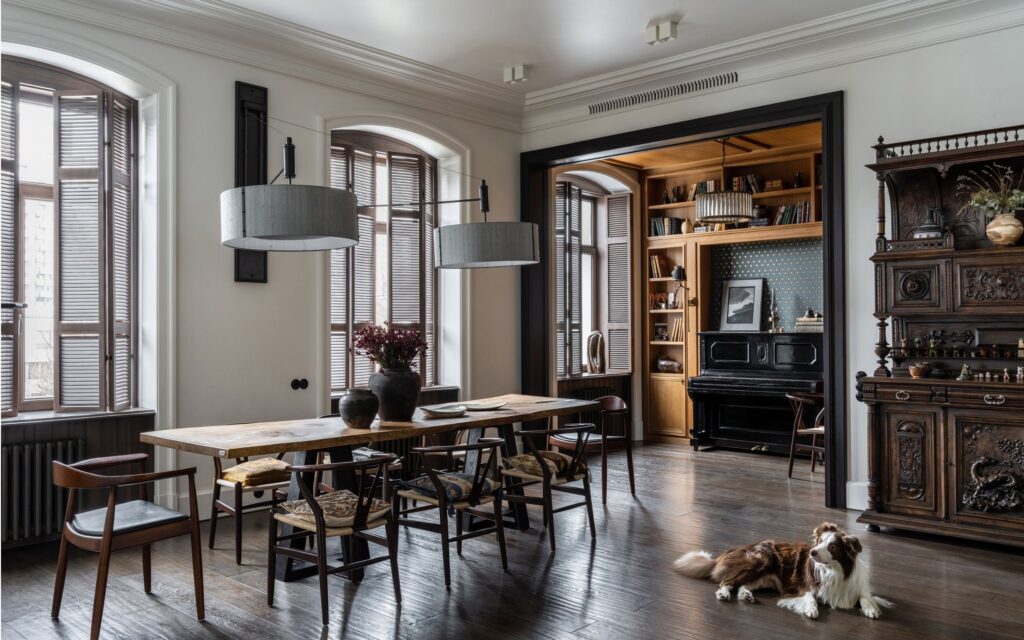
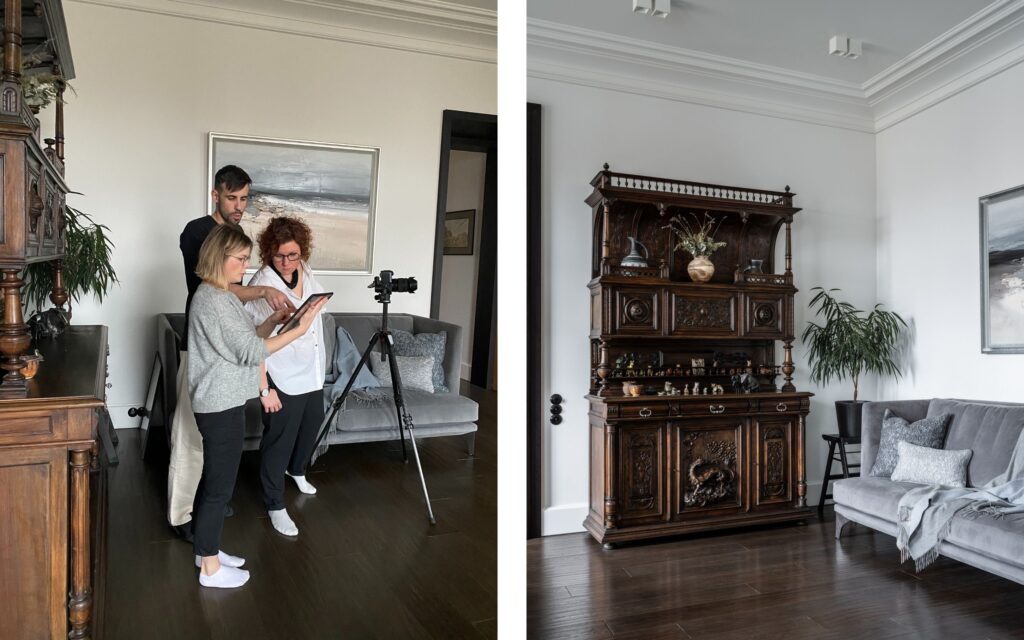
O&A: What inspires you?
ML: Recently I have been inspired by the beauty of nature and everything connected with it. Natural materials, beautiful patterns, lights and colour combinations.
O&A: What would you shoot, if not interiors?
ML: It’s hard to say since I have already tried many directions. Following my heart led to street photography, where you experience the city in a pure stream. In this way one can capture truly unique moments.
O&A: What is the most difficult thing for you in interior shootings?
ML: In interior photography there are many nuances and features. You become one hundred percent ready for them only with experience. The hardest thing for me is to work when I’m unprepared for shooting.
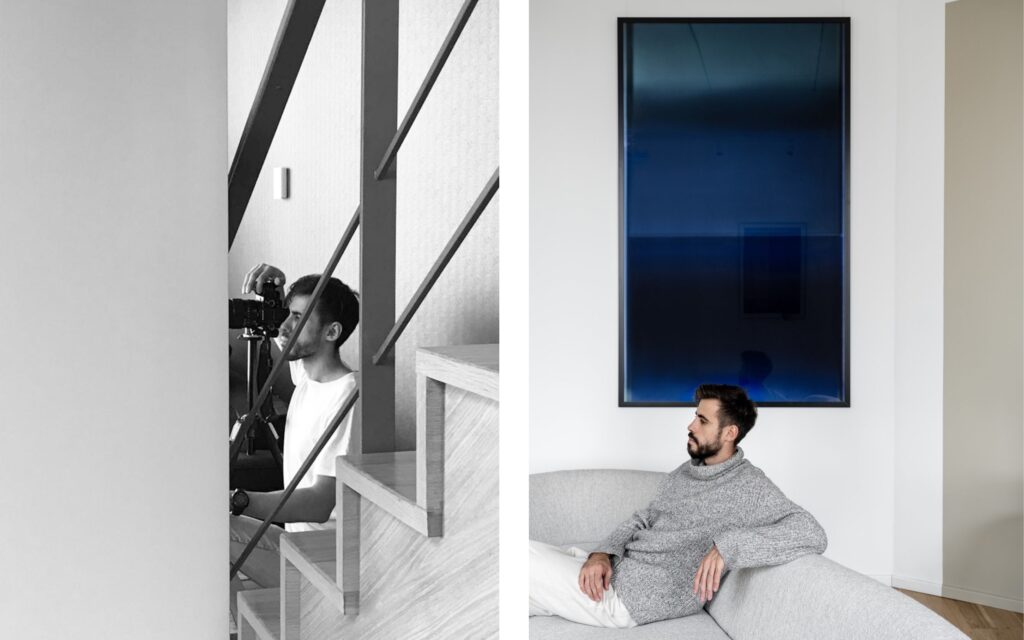
O&A: Can it interfere with shooting if you don’t like the interior at all?
ML: It complicates the shoot , since it is much more difficult to achieve a decent look with such an interior. This process requires great moral and physical costs from the whole team.
O&A: How do you prepare for a shoot?
ML: As a rule I look at a photograph of the apartment and discuss the shoot with the stylist and designer. Thanks to this preparation there is an understanding between us of what we would like to achieve as a result. A preliminary visit to the site is usually not required.
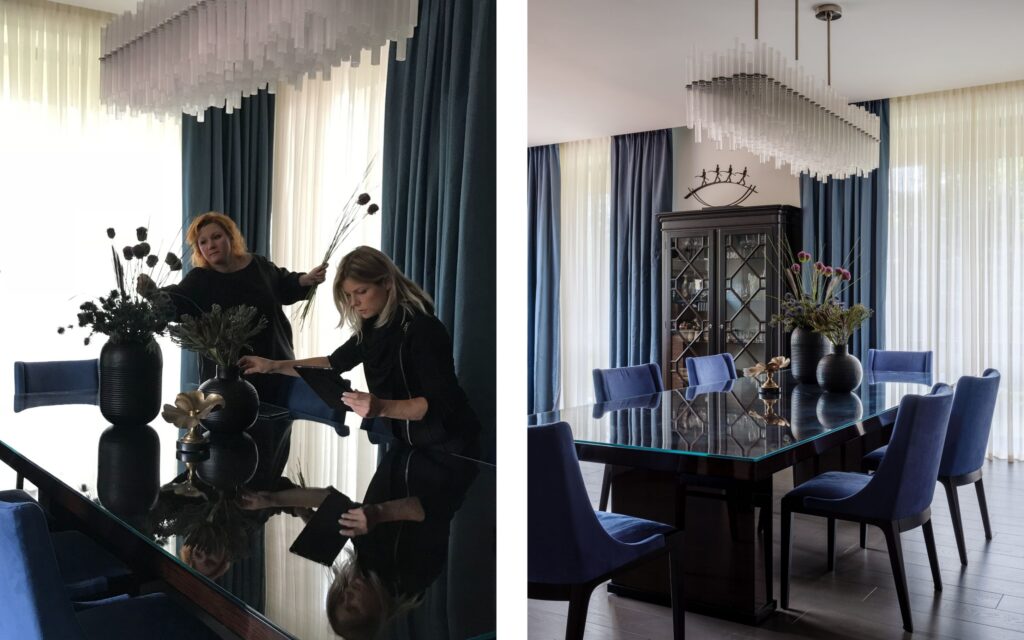
O&A: Tell us about your collaboration with Oleg Klodt and Anna Agapova.
ML: It’s always interesting to work with Oleg and Anna’s team. We started our cooperation with a shoot of the O&A London wallpaper collection. We then continued our friendship through interior photography of new bureau projects. The last one appeared on the cover of Summer Architectural Digest (AD). It’s such an honor! I greatly respect Oleg as an architect and head of such a large and successful company. I also love to shoot portraits of Oleg and Anna! After several shootings with Anna we have become true friends and communicate inside and outside work. It is a very enjoyable and valuable friendship.
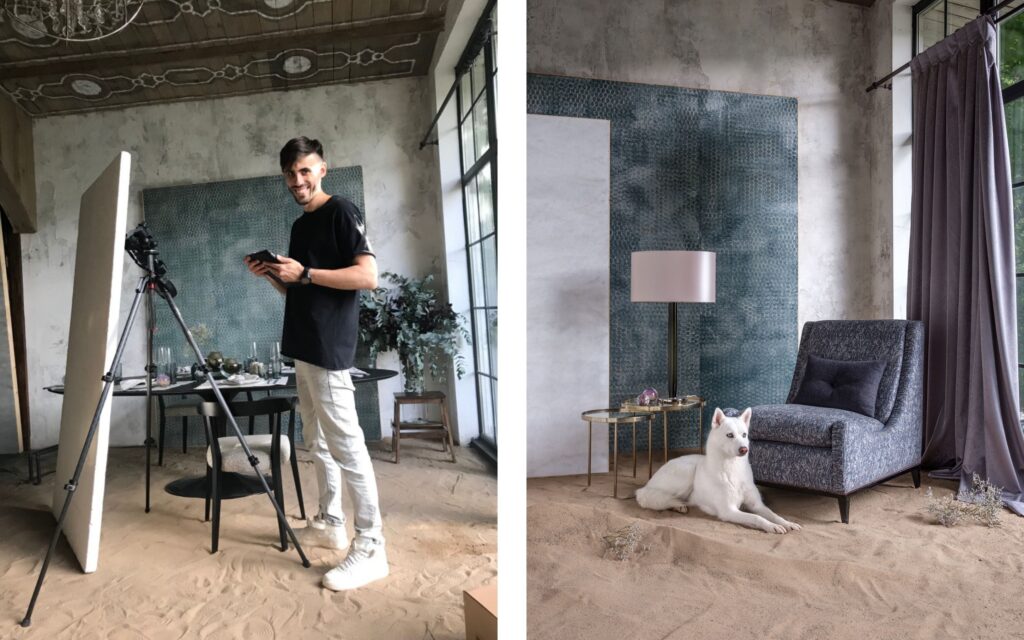
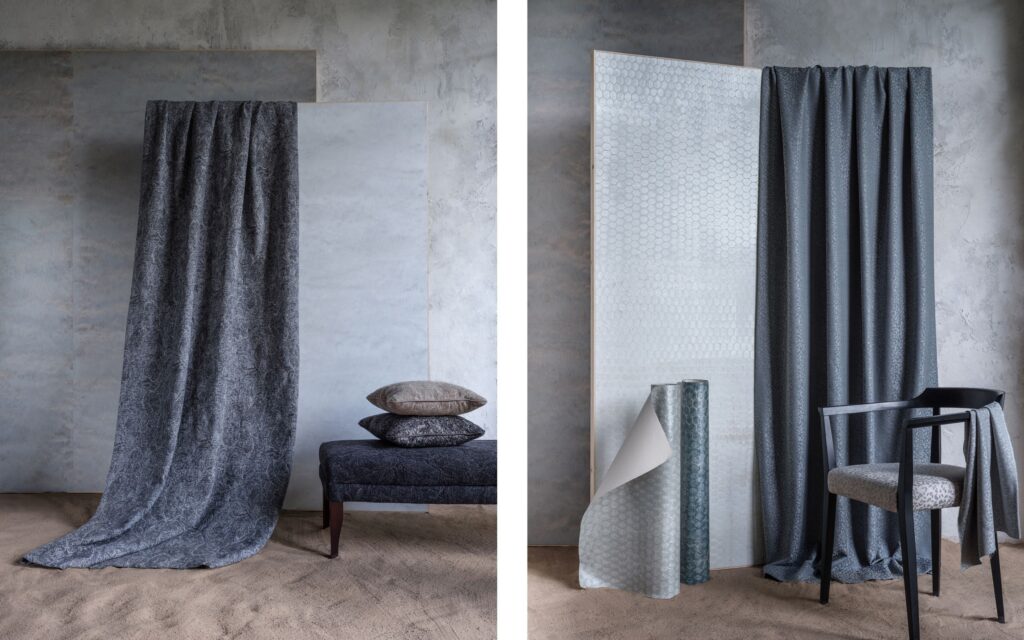
O&A: Is it important for you who is the designer of the interior that you are shooting?
ML: Of course the designer is very important since everyone has their own unique style. The end result can really depend on this. The most important thing is to be on the same wavelength as the designer. I minimize my own touches in these photos. In general I try to shoot for designers of different styles, while also gradually forming my own.
O&A: Describe the interior of your house.
ML: I have a minimalist interior in a 1928 constructivist house with large windows, high ceilings and a minimal set of items. I really like apartments that are lively and with just a few objects that are dear to my heart.
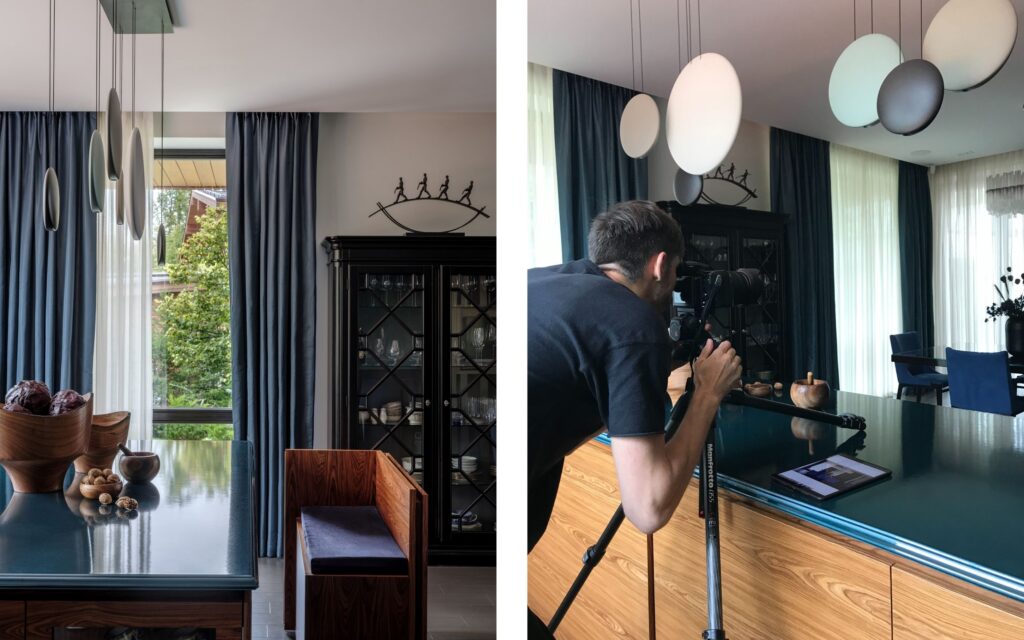
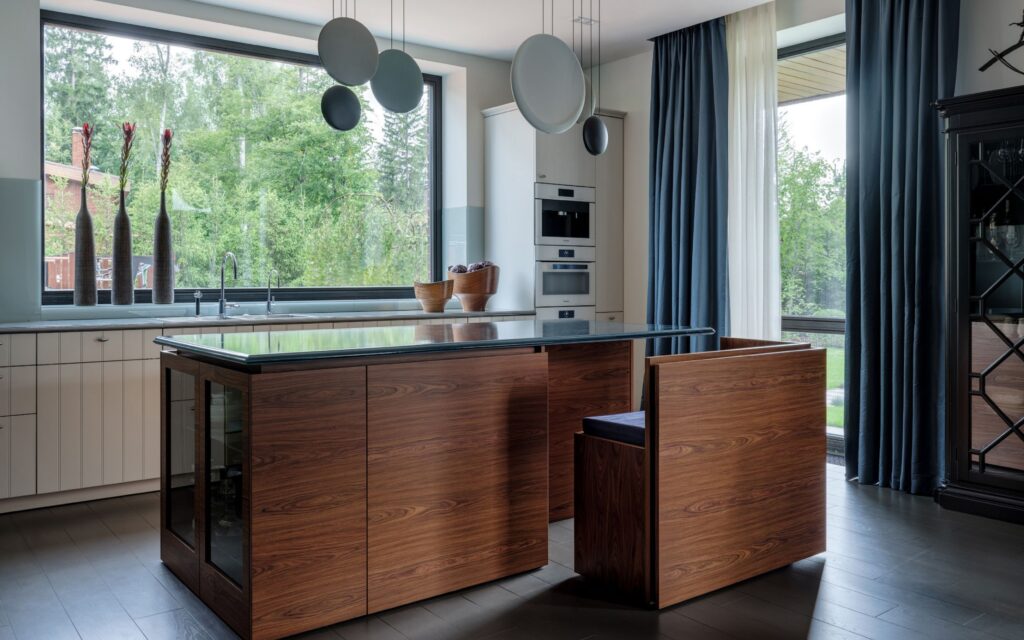
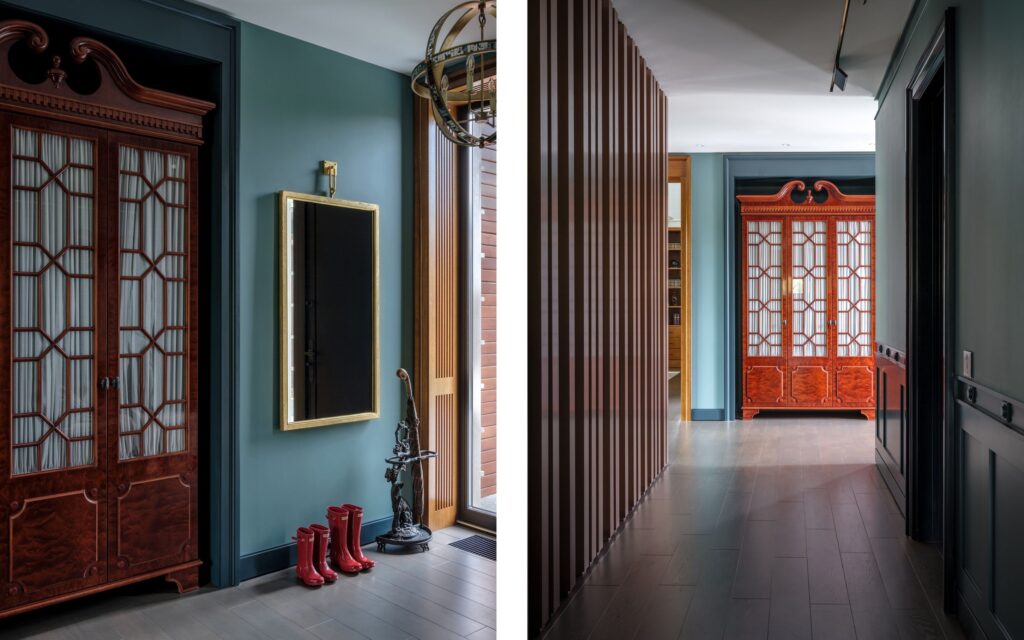
O&A: Whose interior do you dream to shoot?
ML: Kelly Wirstler is a renowned American designer and decorator, whose works are distinguished by a variety of styles.
O&A: What are you dreaming about at the moment?
ML: The main thing I dream about is the transition of humanity to a new world. A world without weapons, filled with love and respect for nature and the people around us. Let’s hope for this!
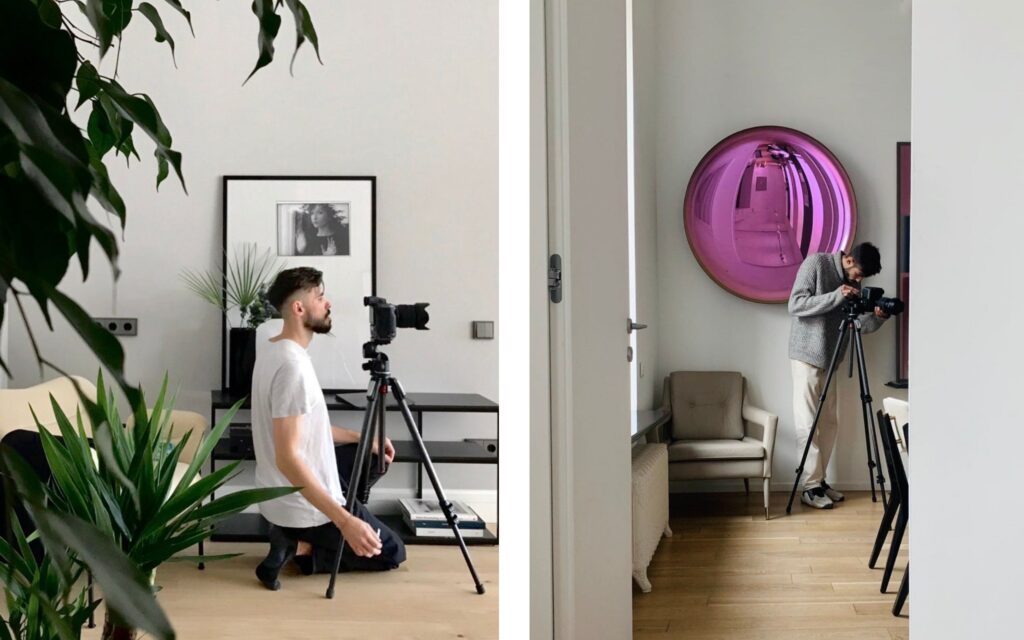
O&A London celebrates its 20th anniversary this year! With a growing number of international projects, and to create distinctive collections of furniture, lighting, textiles, wallpaper and rugs under its unique brand, the company develops collaborative projects with amazing and talented people. We are fortunate to work with leaders in their field: people who do not see boundaries and make the impossible possible. We proudly name these creators, not just as partners but as co-designers and friends.
We are now delighted to announce the anniversary project «20 // 20». The project will present a series of exclusive interviews.
Today we are delighted to share our interview with Valeria Nascimento, the artist and creative pioneer in the world of ceramics.
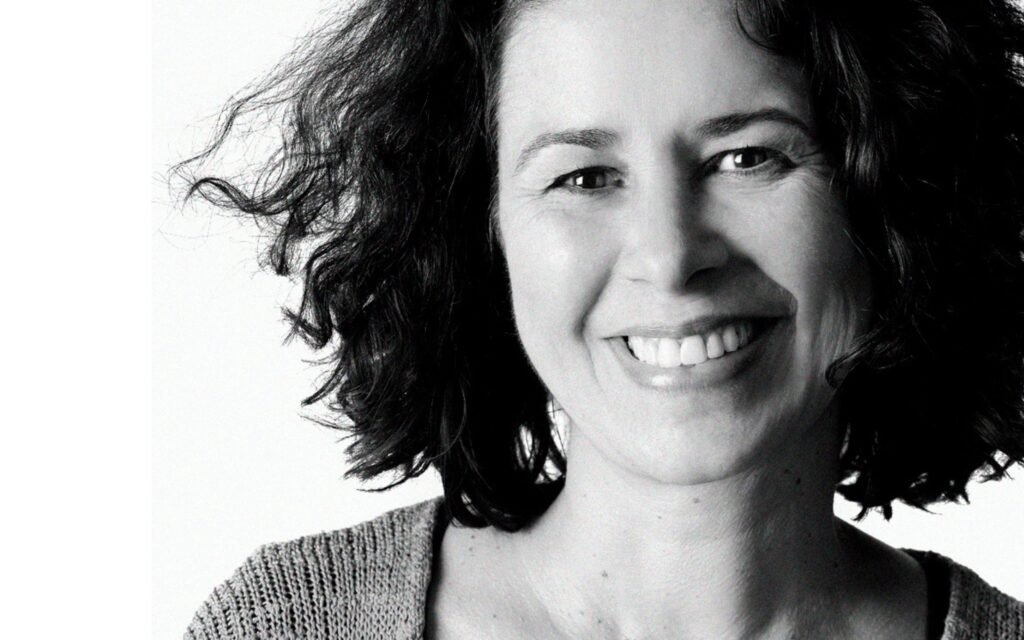
O&A: Valeria, what did you dream about when you were a child?
VN: I grew up in Brazil surrounded by exuberant nature. As a child I used to play outside most of the time. One of my favorite hobbies was to pretend I was travelling in Europe and seeing beautiful old cities, the arts, the architecture and landscapes. This curiosity has always fed into my art and creative processes.

O&A: You were born in Brazil and studied architecture. When and where were you introduced to clay? Why are you in love with this material?
VN: I began to make ceramics in 1986 shortly after graduating in architecture. I have always loved working with my hands and ceramics allowed me to explore this. Porcelain has the smoothness and malleability that I need to create new shapes, manipulating it to appear – in some cases – defiantly weightless.

O&A: Who are you more – an artist or a ceramicist?
VN: I feel I am more an artist that uses clay as a way to communicate my concepts. My work doesn’t utilize the traditional methods of clay building – throwing, coil-building, slab building – and I don’t see my material as the guide for my work but more the medium through which I can explore and execute my ideas.
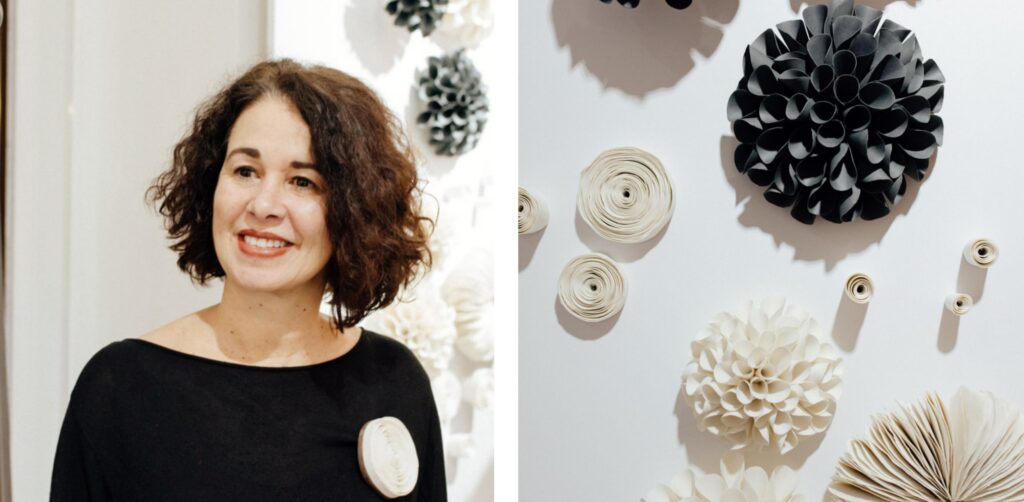
O&A: What is your source of inspiration? How do you manage not to repeat yourself when creating new patterns, while maintaining your signature style?
VN: My inspiration is drawn mostly from the natural world and as nature is so diverse I always find shapes and patterns that inspire me to create different compositions.
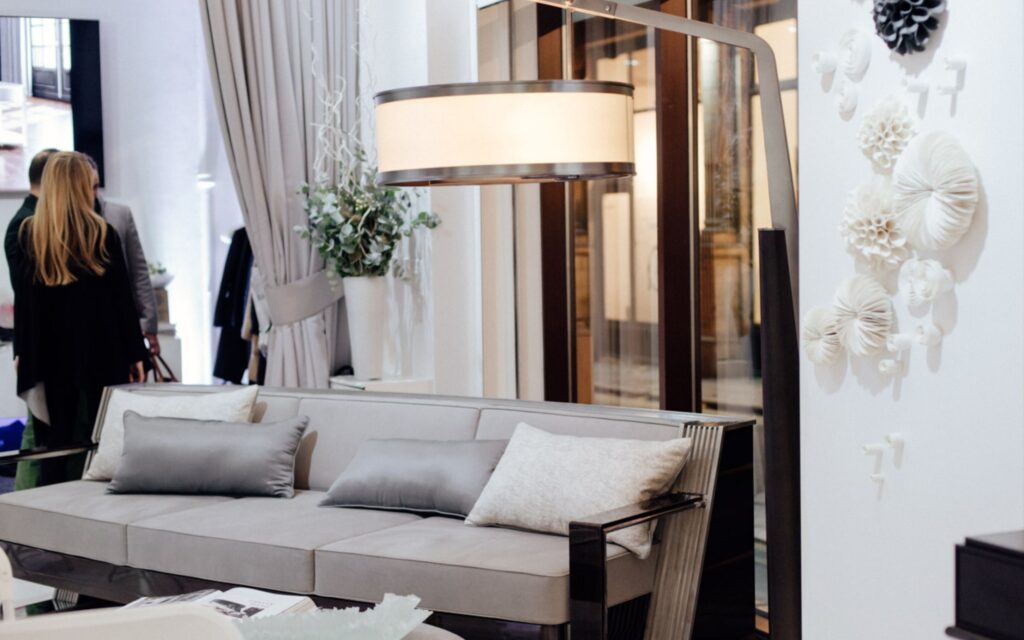
O&A: What is your mission as an artist?
VN: I aim to create works that inspire, connect and touch in an emotional way, contributing to public awareness of the art of ceramics, and to encourage the viewer to reflect on the beauty of nature and life.
O&A: Your works are cohesive sculptural groups that consist of hundreds and even thousands of separate handmade elements. Could you, please, share with us some of the secrets of creative processes? How many people are in your team? How do you usually start your work?
VN: I have a team of 4 assistants in my studio who help me with the preparation process as the quantities of pieces can be quite overwhelming. Initially I start my work with drawings and after that I make miniatures to give me an idea of how it would look. Once the design of the shape is perfected we begin to produce the pieces in larger quantities and I can start exploring different formations.
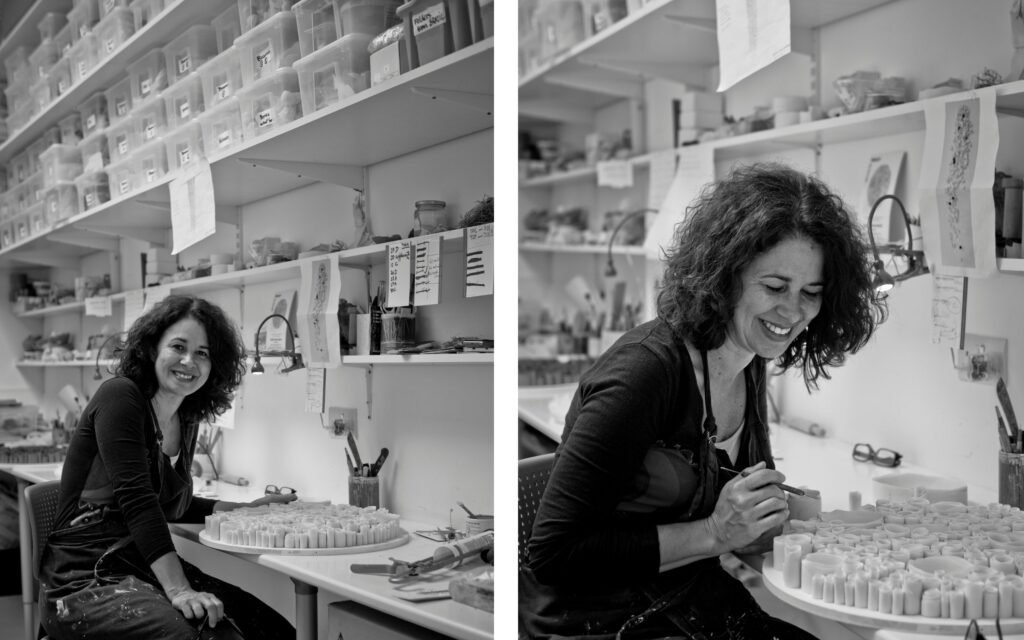
O&A: You have collaborations with international brands such as Tiffany & Co, Wedgewood, Channel, and your works are exhibited in galleries all over the globe. Is there a museum where you dream to see your works displayed? Or is there a brand you are dreaming to collaborate with?
VN: I consider myself very fortunate to have been working intensively for the last 20 years on large-scale porcelain installations, side by side with architects and interior designers, for brands and private projects. I have been very privileged to see my work in many beautiful galleries around the world and, if I could choose a museum, I would be delighted to see my work at the Victoria & Albert museum as it is a wonderful venue for applied and decorative arts and design.
O&A: Valeria, tell us about your collaboration with O&A London? How did you meet Anna and Oleg?
VN: Anna got in touch and visited my studio many years ago. From that first visit we have been collaborating on many different private projects. Anna invited me to many O&A London events including the exciting Holiday House as well as a series of conversations celebrating the arrival of O&A in London. It has been a pleasure to collaborate with Anna and Oleg on some of their amazing projects over the years.
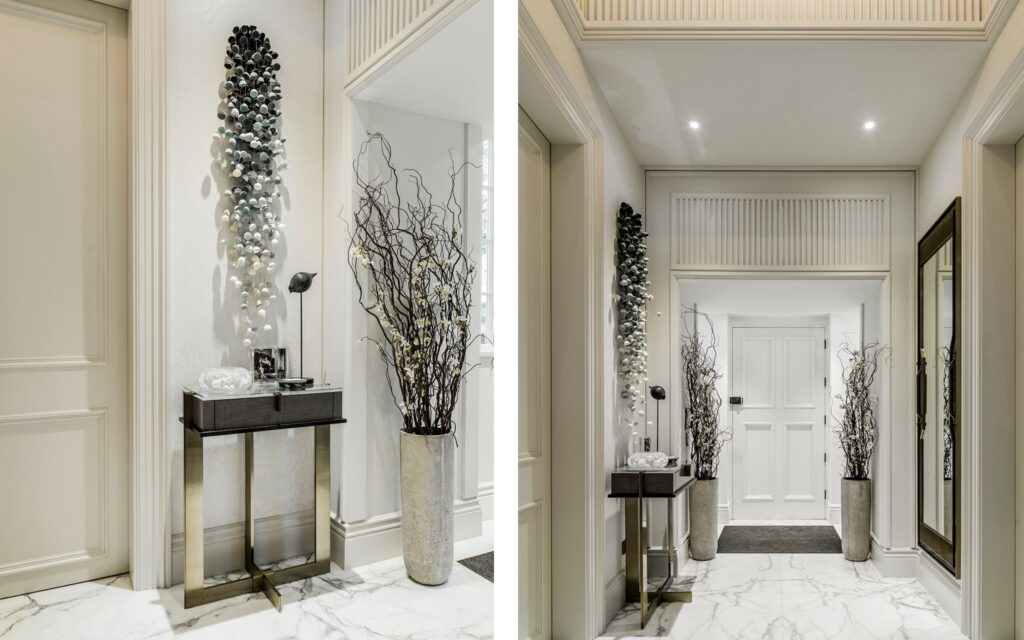
The last project we collaborated with O&A London was the ecological initiative ‘Save the Ocean’. The aim of the creative collaboration is to support organisations committed to cleaning up the oceans.
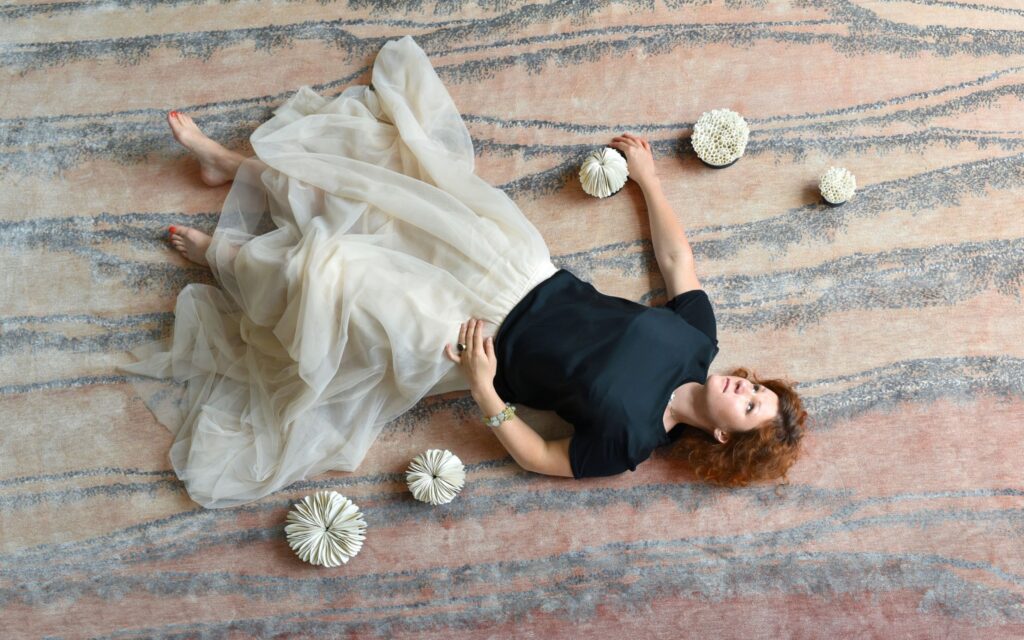
O&A: Have you ever been to Russia? Do you have any intention to create something inspired by Russia? The structure of a snowflake? Or Russian ballet?
VN: I haven’t had the chance to visit Russia but it is definitely on my list. I am sure that once I am able to see the majestic architecture and natural landscapes Russia would inspire me to make new works.
O&A: What is more inspirational for you – to create something for art without any boundaries or to create a custom project solving a specific challenge in a specific space?
VN: Both present their own challenges and interest. Working without any constraints allows me to create work that is uniquely mine; conversely working within briefs can push me outside my comfort zone and into new and unexplored areas.
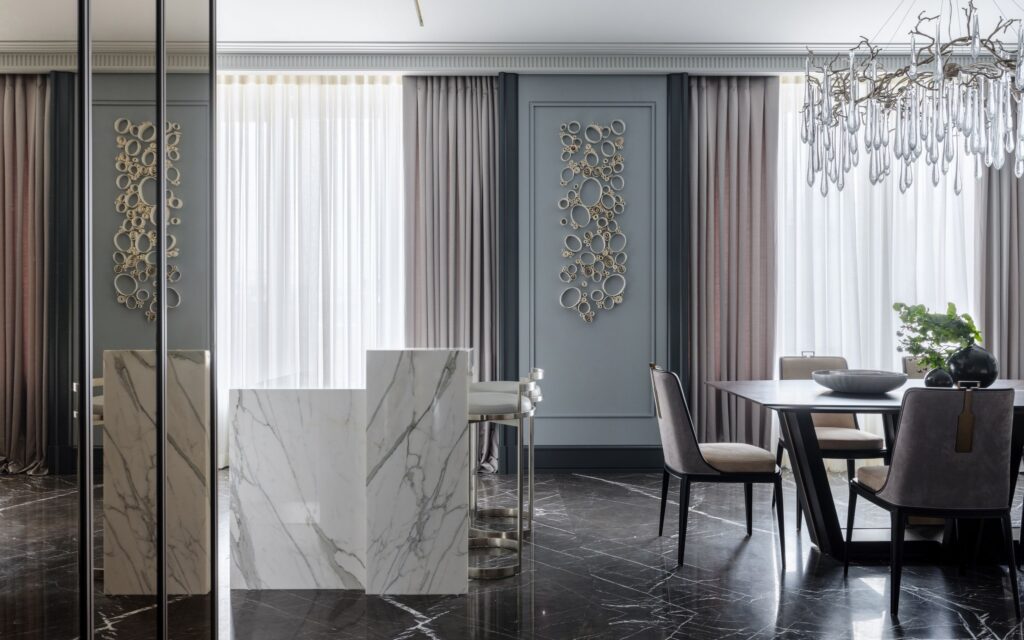
O&A: Who inspires you? (artists, architects, designers)
VN: My work carries references to both architectural and botanical forms. From an early age I felt influenced by the Brazilian landscape architect Roberto Burle Marx and also the great works of Oscar Niemeyer.
O&A: Tenderness is the first emotion people feel when they see your art. What kind of emotions do you feel every day?
VN: My working day is varied and I have ups and downs making me feel sometimes very excited or it can also be frustrating, depending on the subjects I encounter day by day. I find making my porcelain work can be really peaceful, however dealing with the hectic schedule of the studio can sometimes be very stressful.

O&A: What are you dreaming about today?
VN: I am dreaming about the future when the world would be free of this pandemic and we all could go back to our lives and careers exploring, travelling and getting inspired.
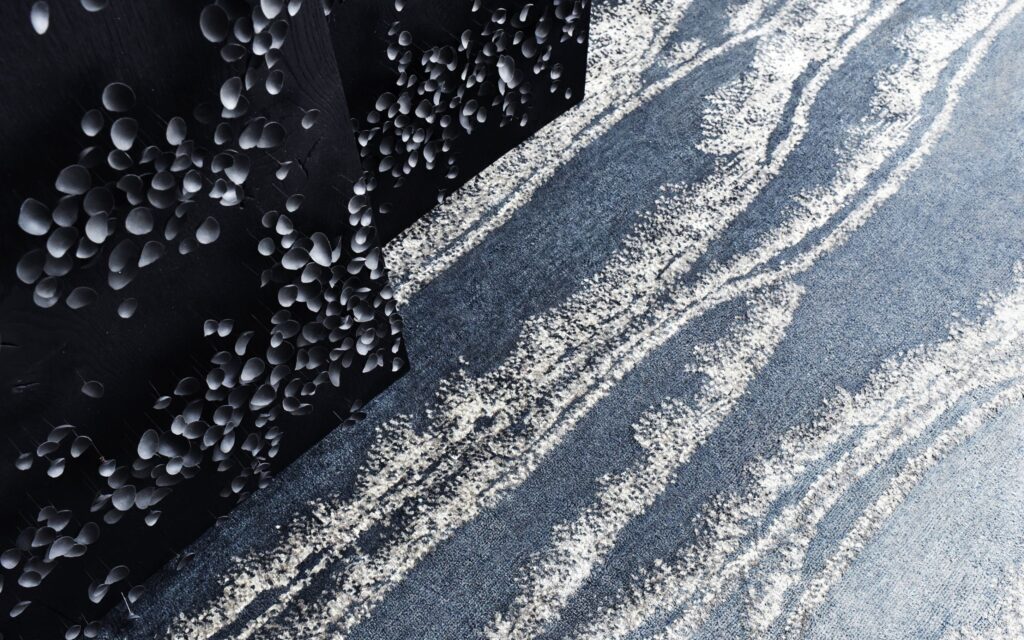
Every autumn AD Russia magazine publishes a list of 100 best architects and designers in the country – a tradition adopted from the “American brother”, Architectural Digest magazine.
In 2014, the editors of AD Russia compiled and published their first “AD BEST” list, where Oleg and Anna were named. Since then, for seven years already, the creative duo has never left this rating.
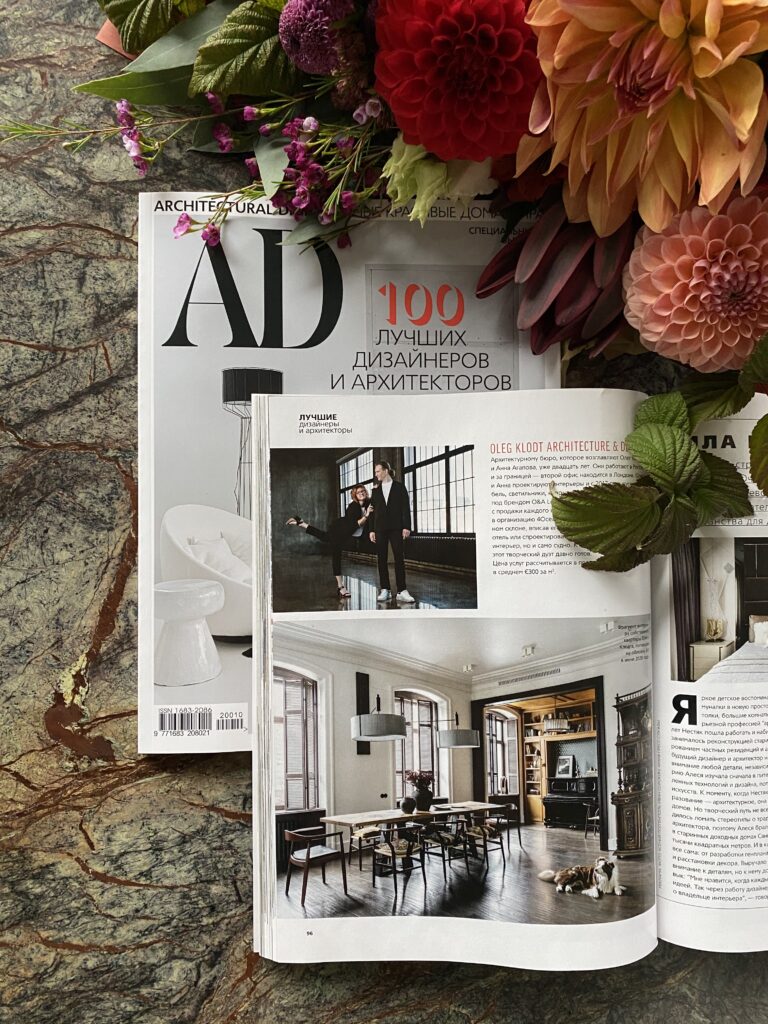
O&A London celebrates its 20th anniversary this year! With a growing number of international projects, and to create distinctive collections of furniture, lighting, textiles, wallpaper and rugs under its unique brand, the company develops collaborative projects with amazing and talented people. We are fortunate to work with leaders in their field: people who do not see boundaries and make the impossible possible. We proudly name these creators, not just as partners but as co-designers and friends.
We are now delighted to announce the anniversary project «20 // 20». The project will present a series of exclusive interviews. We are happy to present to you the interview with Michael Vasku and Andreas Klug, creative directors of Preciosa lighting company.
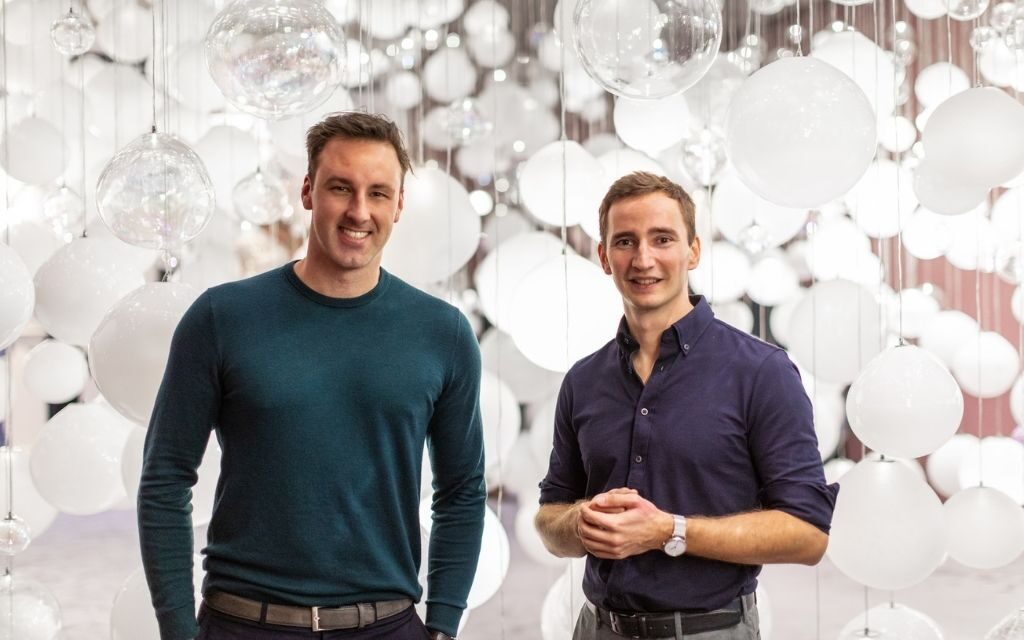
O&A: Michael, Andreas, what did you dream about when you were a child?
MA: We dreamed of things we heard from fairy tales like the magic of nature, the diversity of cultures, and exotic countries. These dreams are still with us today.
O&A: Could you please, tell us about your professional path that eventually led you to Preciosa?
MA: We both studied architecture. Michael also studied building science and Andreas, economics. During our time at university, we started our studio. After the first year, we cooperated for the first time with Preciosa Lighting on conceptual presentations, e.g. “Behind Locked Doors” which was held in the Royal Palace in Vienna in 2014. After the good response, we first became their brand architects and later creative directors with the task to turn Preciosa Lighting from a production company into a Design Brand.
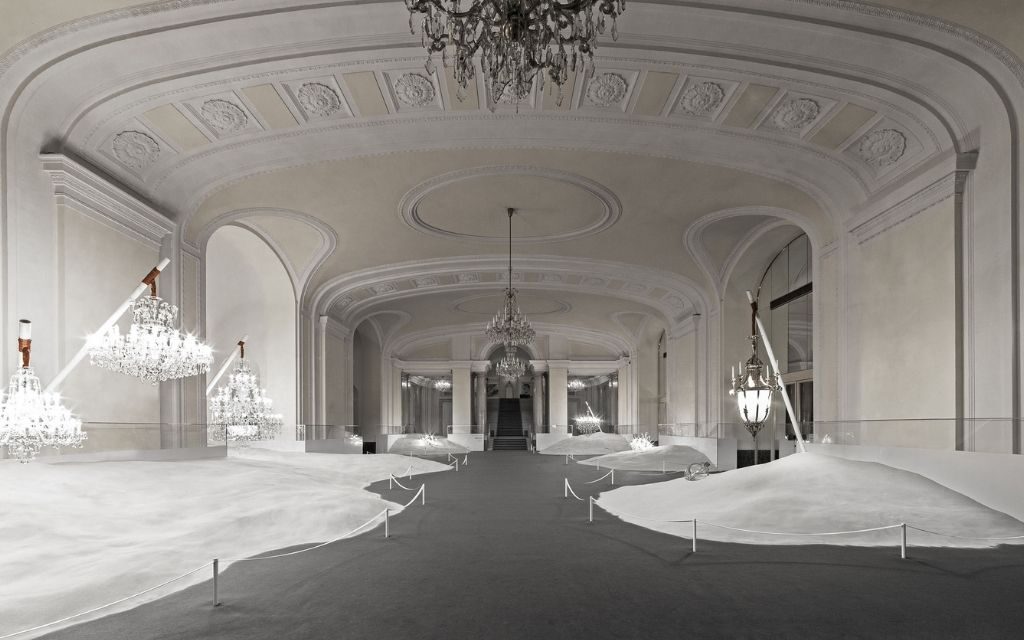
O&A: Preciosa’s goal is to connect people and bring about emotions through light. How do you achieve this goal?
MA: There is a code behind everything you do. It’s based on experience or knowledge you learned in your time here on the earth. As Carl Gustav Jung revealed, this can differ amongst cultural backgrounds, fields of activities, age, and many more parameters. Because of this, we have a huge pool of incredible patterns of human actions and reactions to connect. Translating or referring to these connections make our experienceable designs self-explanatory and we can stimulate emotions and create memories that last.
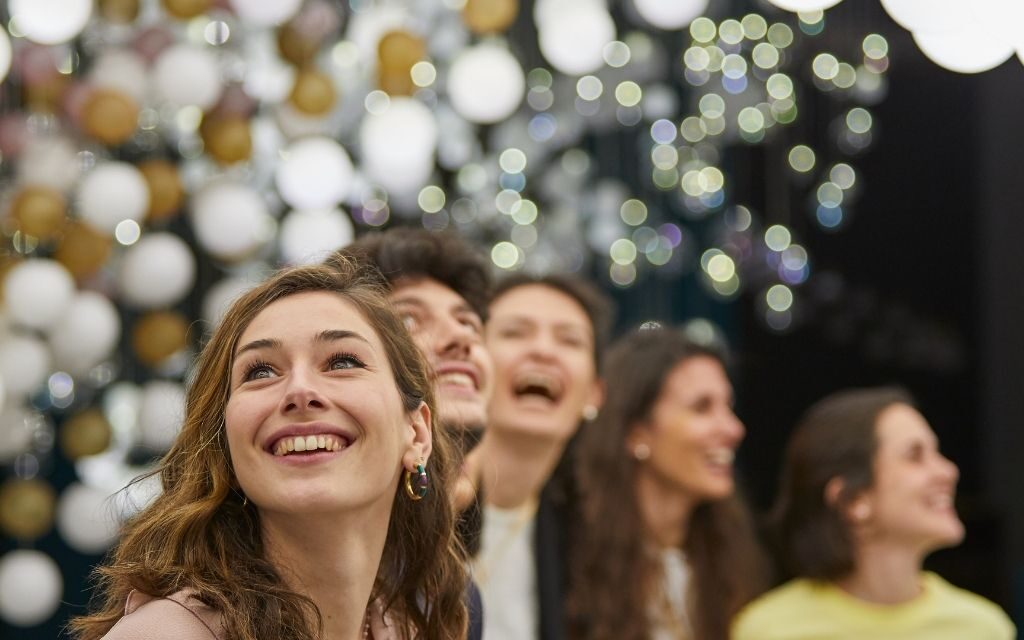
O&A: You two are creative directors of the company. Could you please, tell us how you’re working on the project? How do you discuss and implement the ideas? Are you complementary or are complete opposites?
MA: There is one thing that differentiates us from most designers: We never start a design on paper; we also never explore design through drawing. The starting point is always a conversation. The discussion always aims to understand the context, find the right questions and reformulate the task over and over again. The conceptual design process itself is only in our minds, or in words that we exchange. Only once we can articulate and agree on an abstract idea, we start using the tools of a designer.
We understand ourselves as a complementary duo where each one brings a lot of different input from different perspectives.
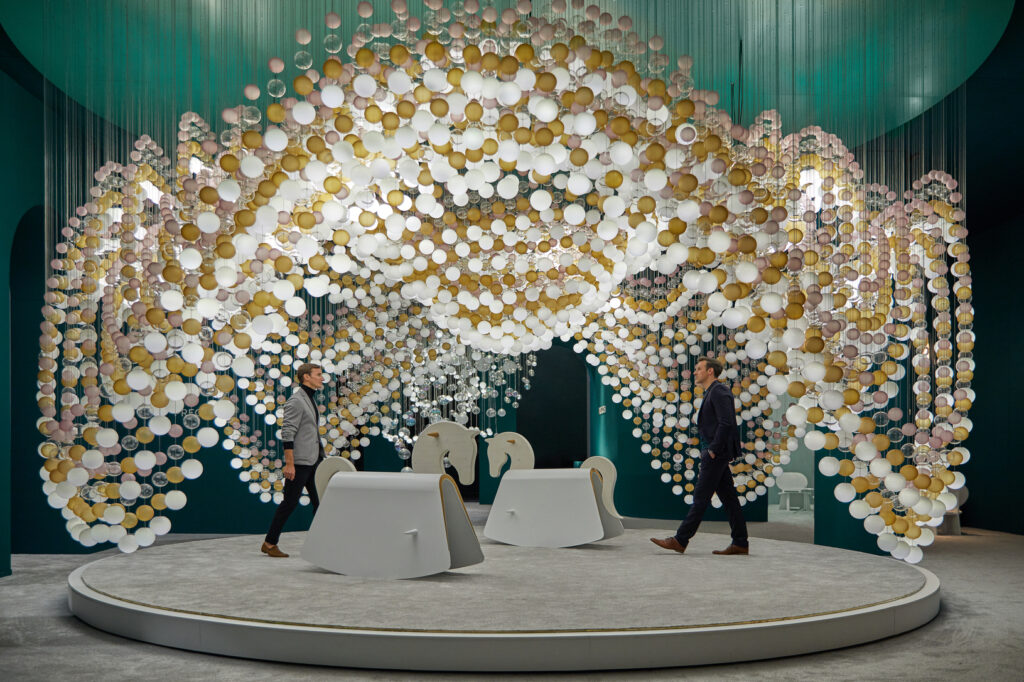
O&A: Tell us about your collaboration with O&A London? Was this project with Anna and Oleg interesting for your company?
MA: The cooperation with Anna and Oleg was great! The two practice a very holistic design approach, combining technical knowledge with an excellent and delicate sense for spaces and design. This is the best base for a collaboration, as they precisely know what they want and where it needs the contribution of the expert or craftsmen. We personally enjoy this kind of collaborations. The difference can always be seen in the final result.
O&A: How do you see the future of design and light? Within 50 – 100 years?
MA: As design is always very much context influenced and inspired, we see possibilities for changes coming not only from the technological side but mainly from neuroscience and brain research. The more we understand about the impact of light on us as human beings, the more it will be possible to react on it and integrate that knowledge into design. Certainly, there will be a stricter differentiation between the qualities of functional and decorative light.



O&A: Could you name the most unique and essential project for Preciosa?
MA: “Breath of Light”. It was Preciosa Lighting’s first step into immersive design. This also meant a huge step internally, not only working with light and construction but also spatial sound and a simple form of artificial intelligence to create a behavior of the installation. This also meant a shift in mind-set in the general understanding of what a chandelier / light installation can bring to a space.
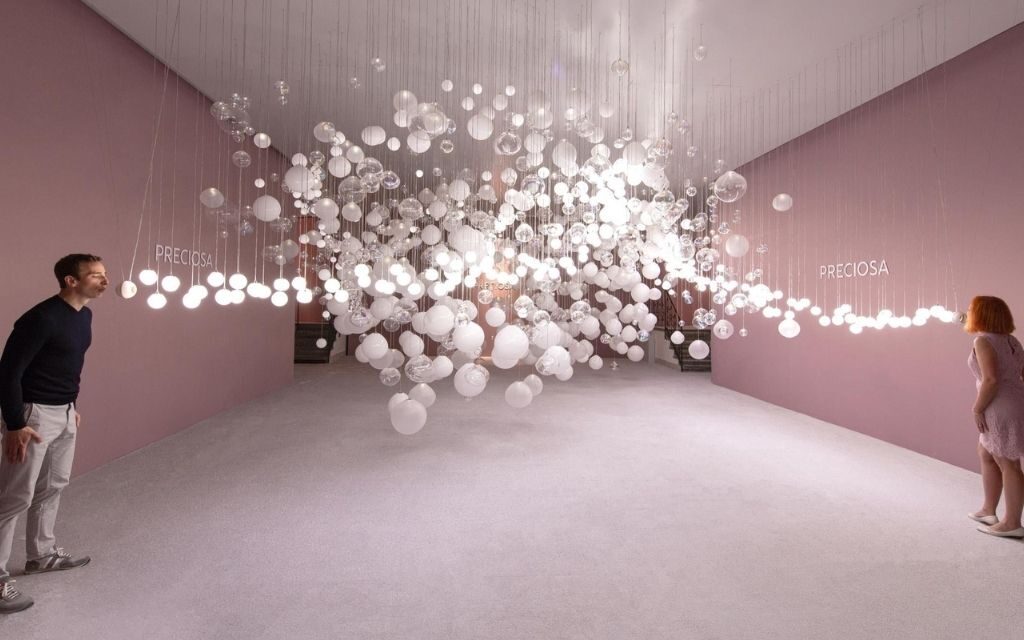
O&A: You always create very concept light interactive installations that attract attention during the exhibitions. What inspires you on creating such objects?
MA: We usually struggle with this question as the inspirations can come at any moment and situation, in every culture, every country, in every kind of mood. What is important for us, what drives us is always the smile of our audience! In this rushed and information flooded world, we want to create an emotional moment of curiosity which makes you feel like an exploring, excited child again.
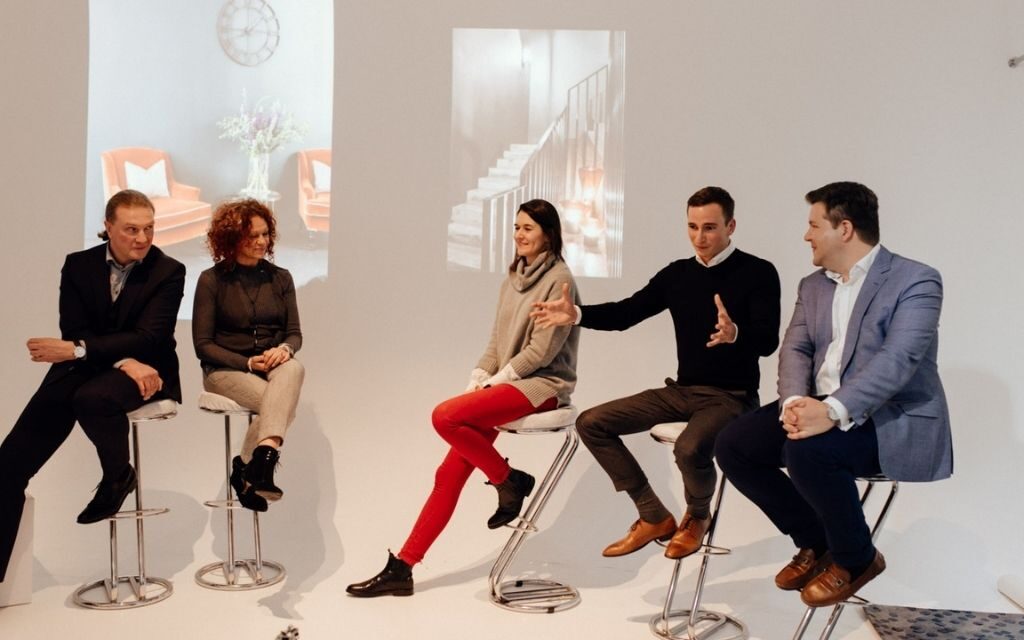
O&A: What are you dreaming about to create?
MA: We don’t dare to dream to create something. We hope that we will be lucky to experience many more magical unexpected moments, discover new things and learn more from different fields. Everything else comes together afterwards.

O&A: What are you dreaming about today?
MA: Same as when we were little – the magic of nature, the diversity of cultures, and exotic countries. These dreams are still with us today.

Photos: Preciosa Lighting Press Office
